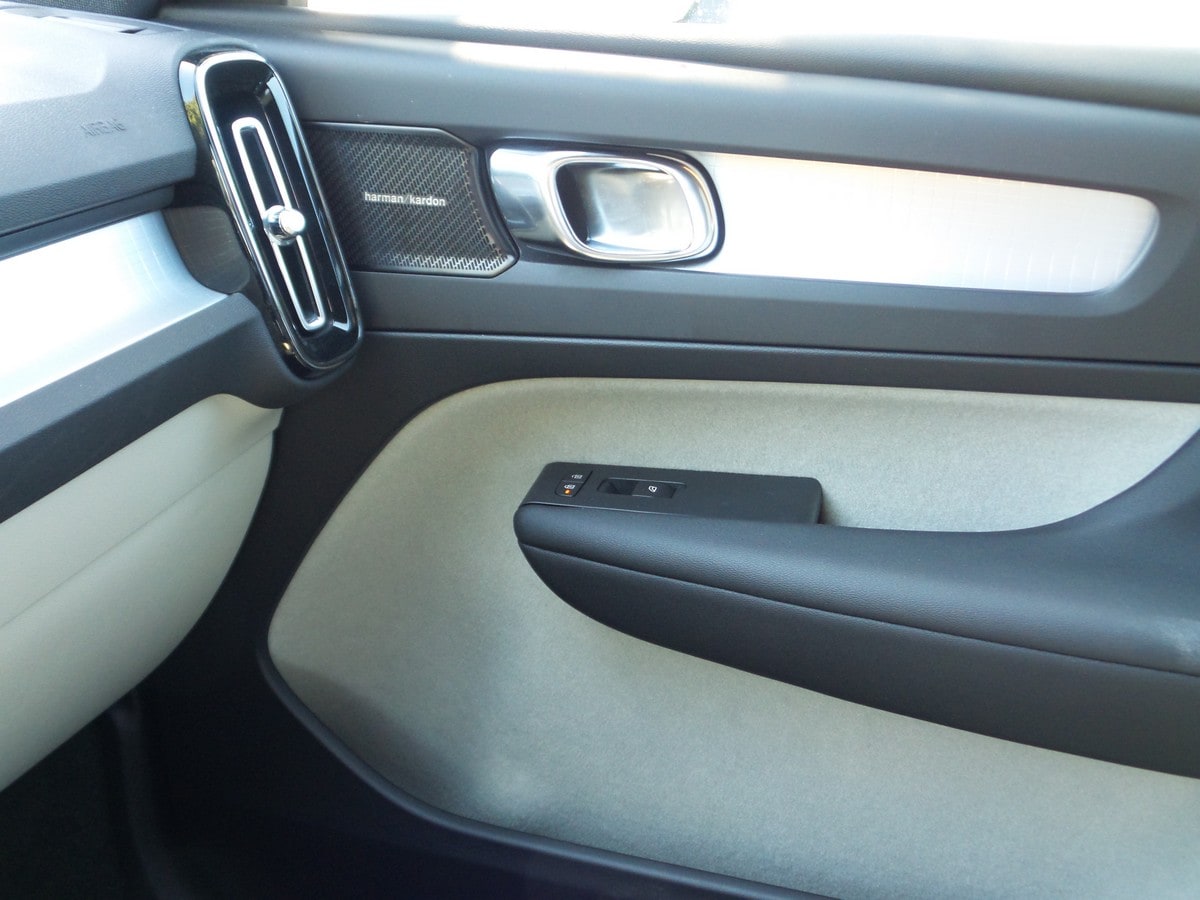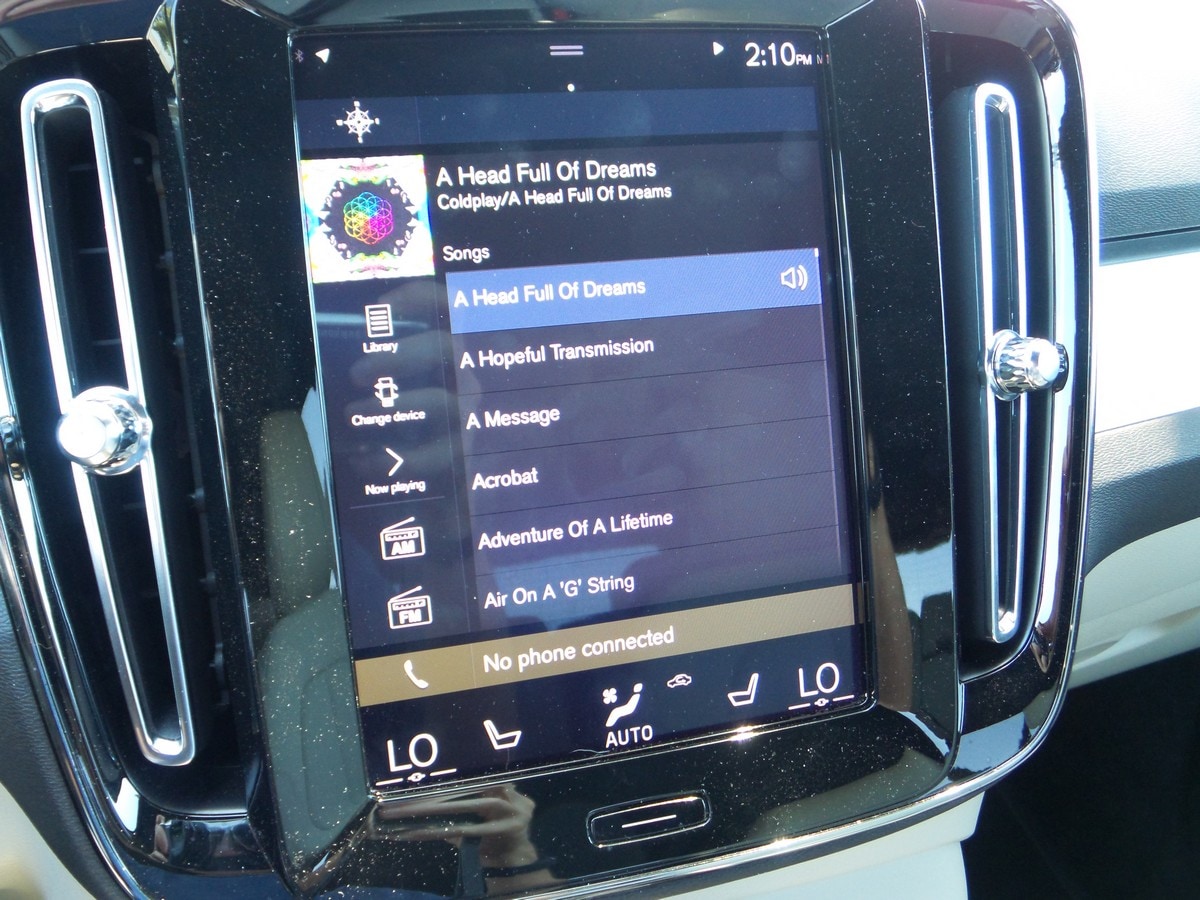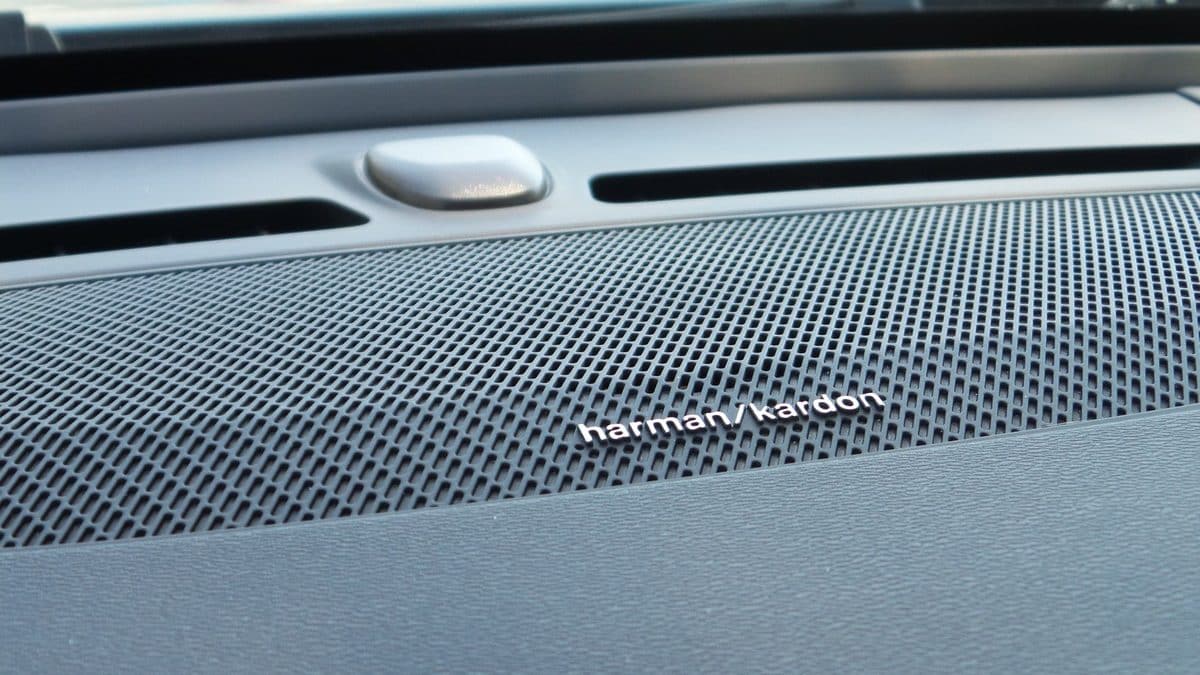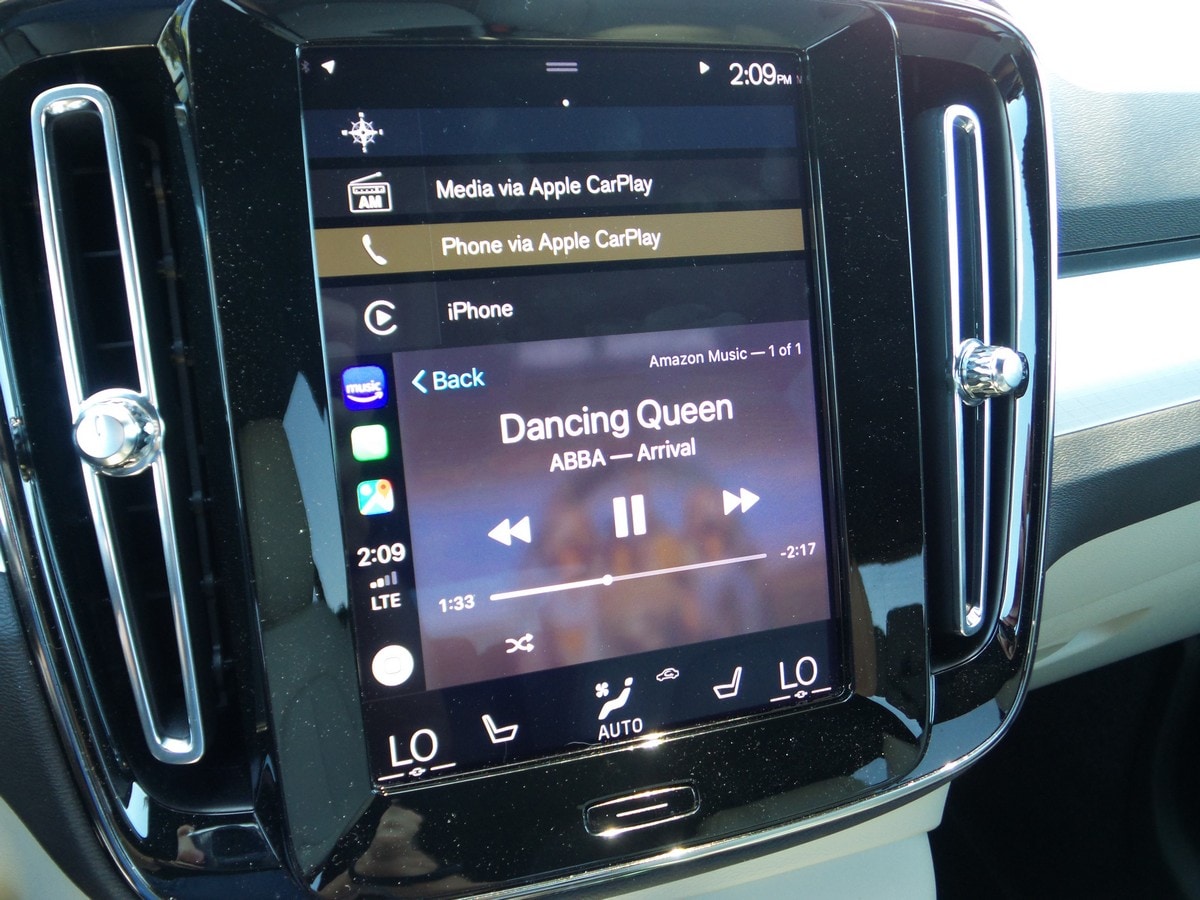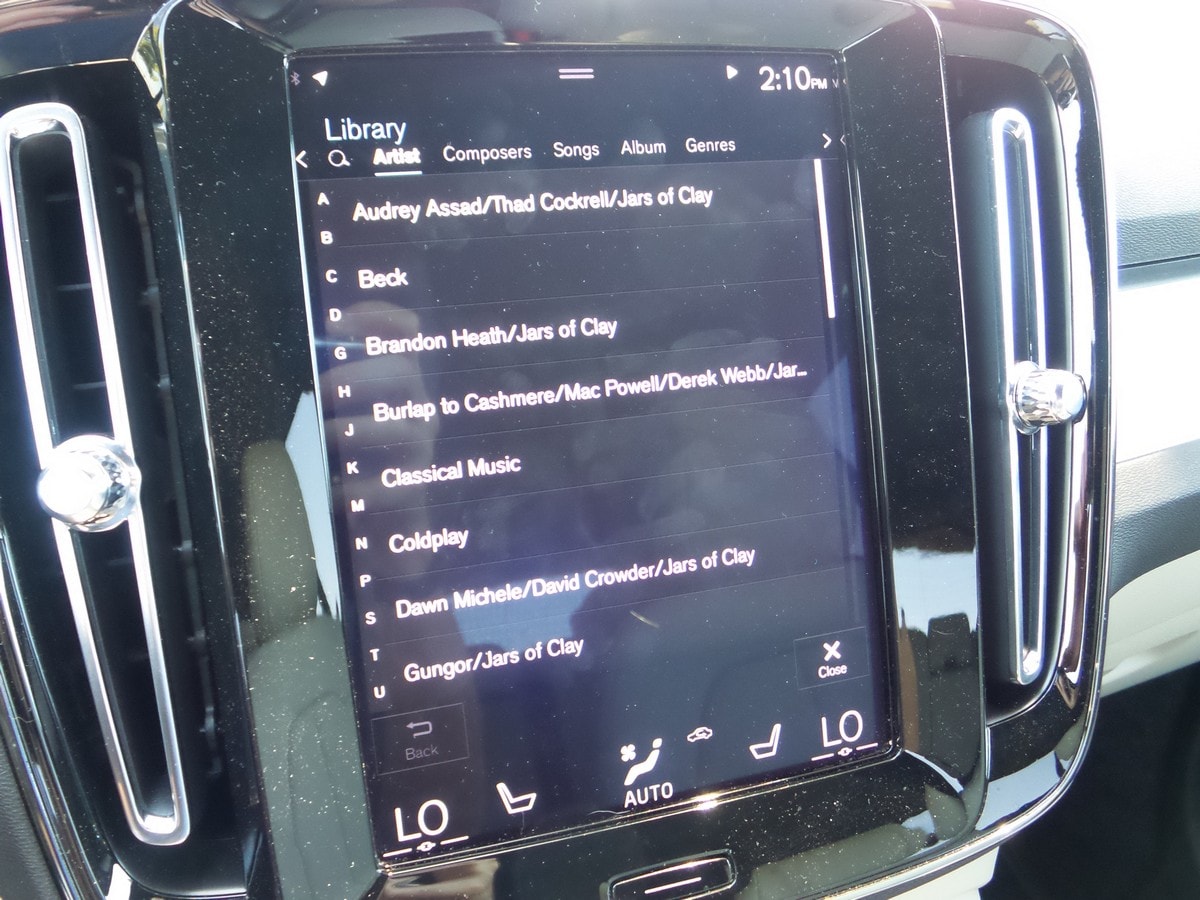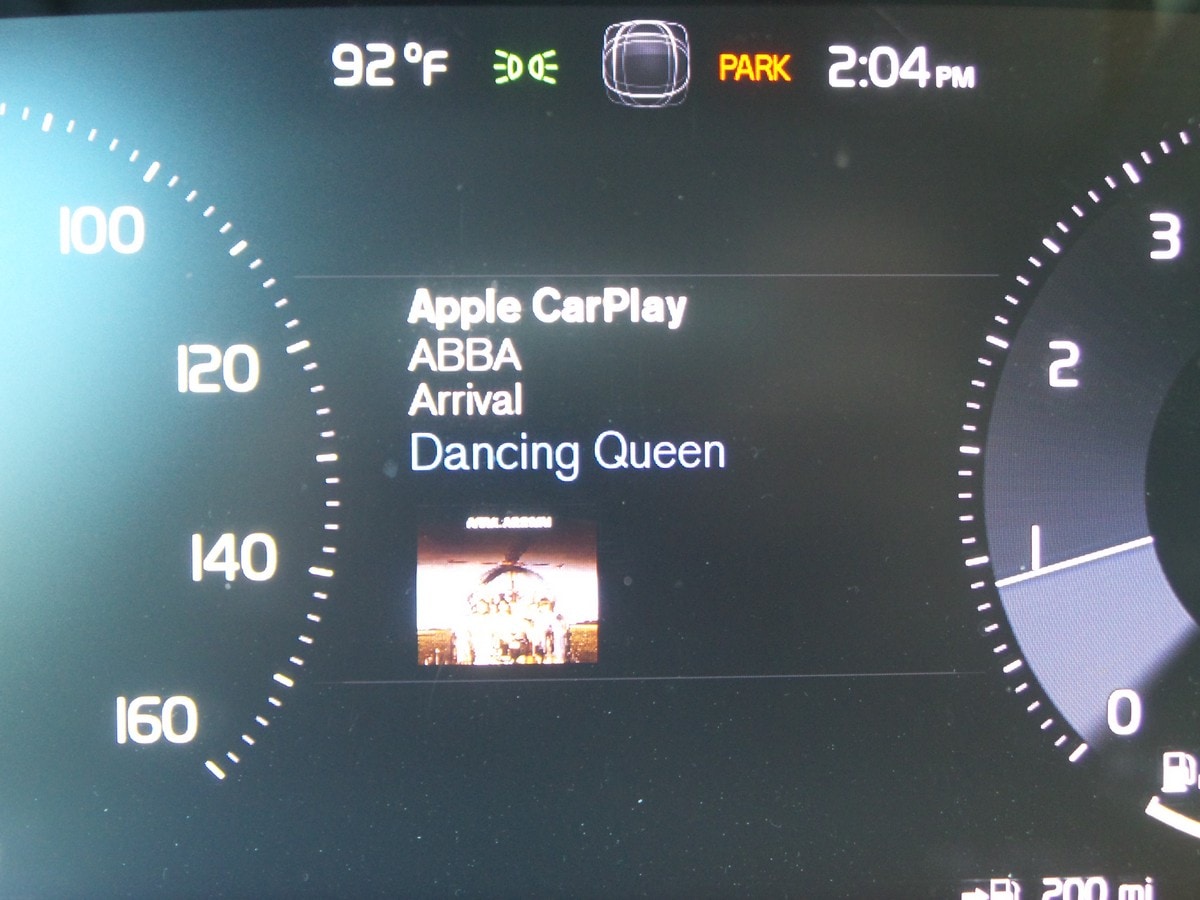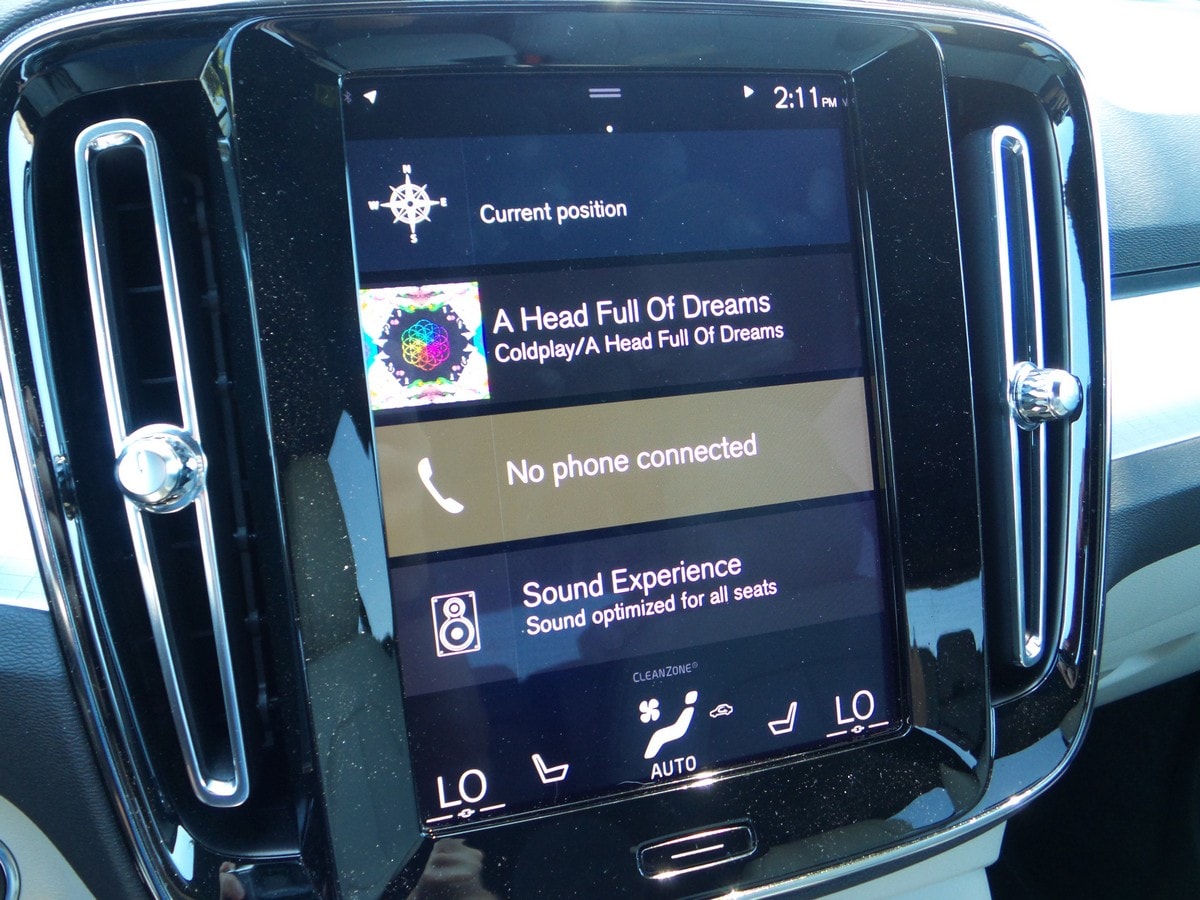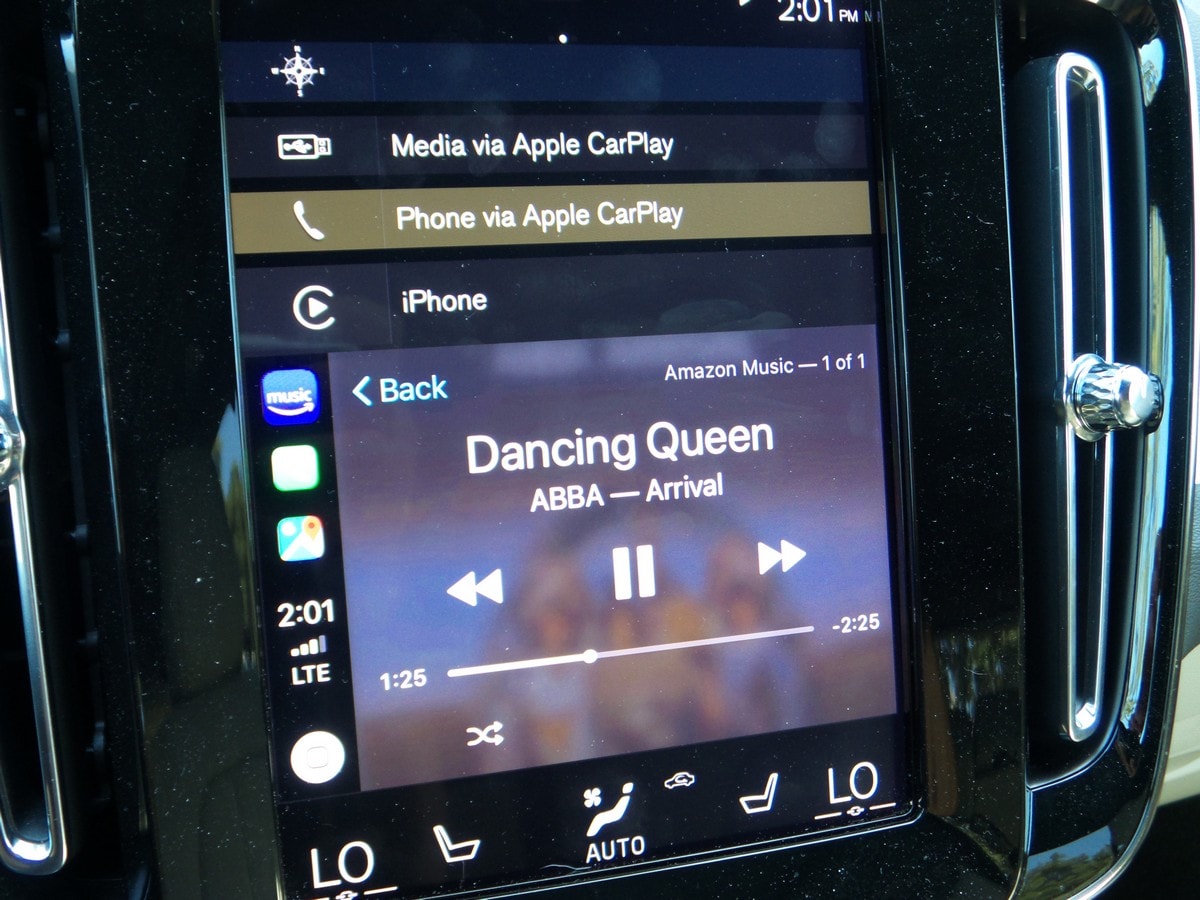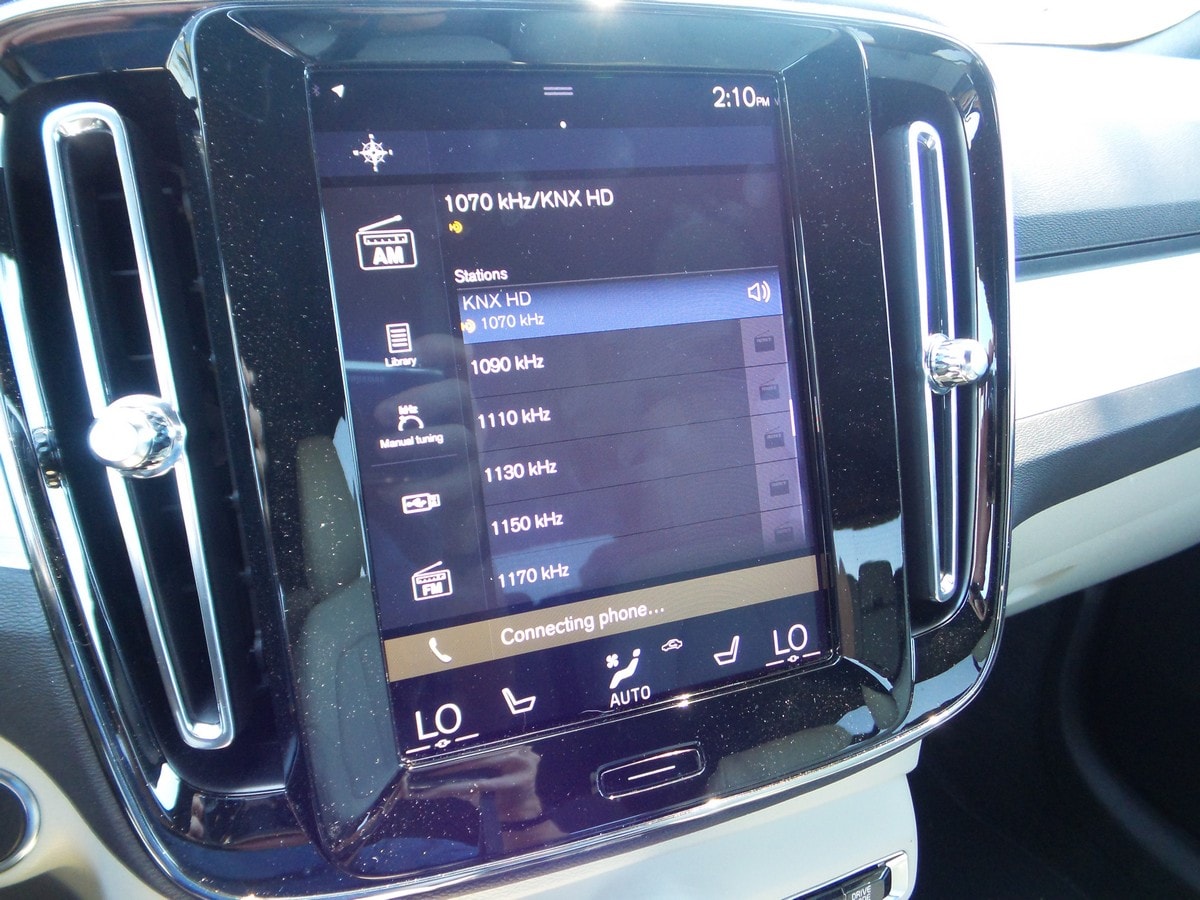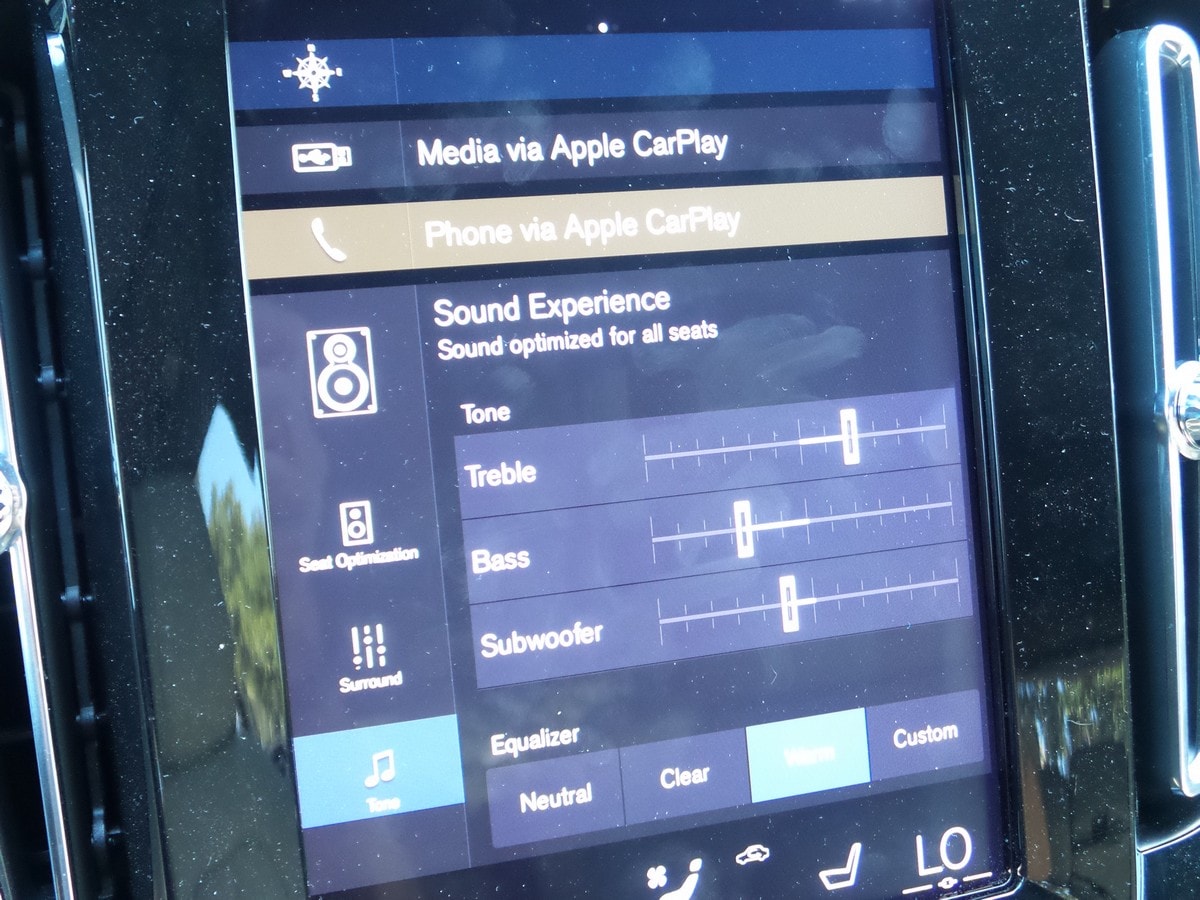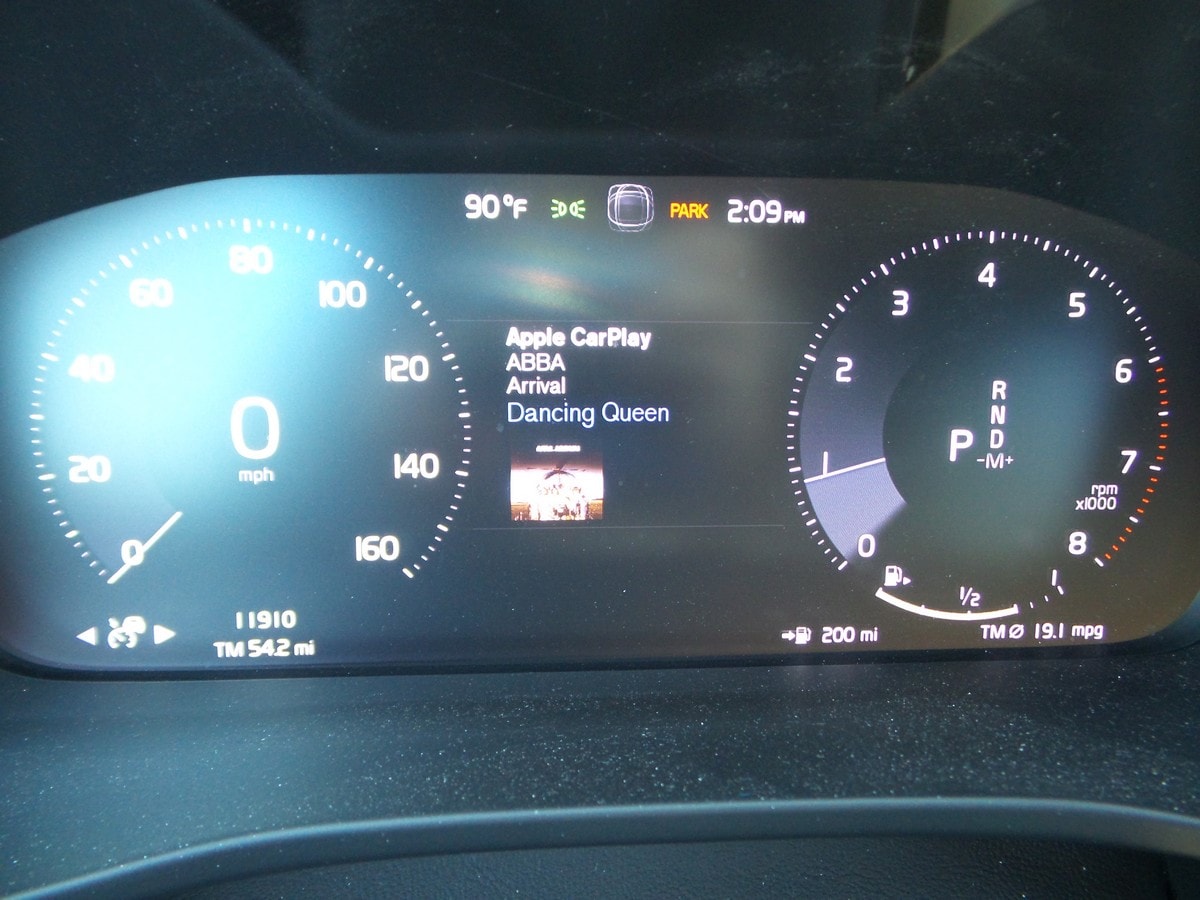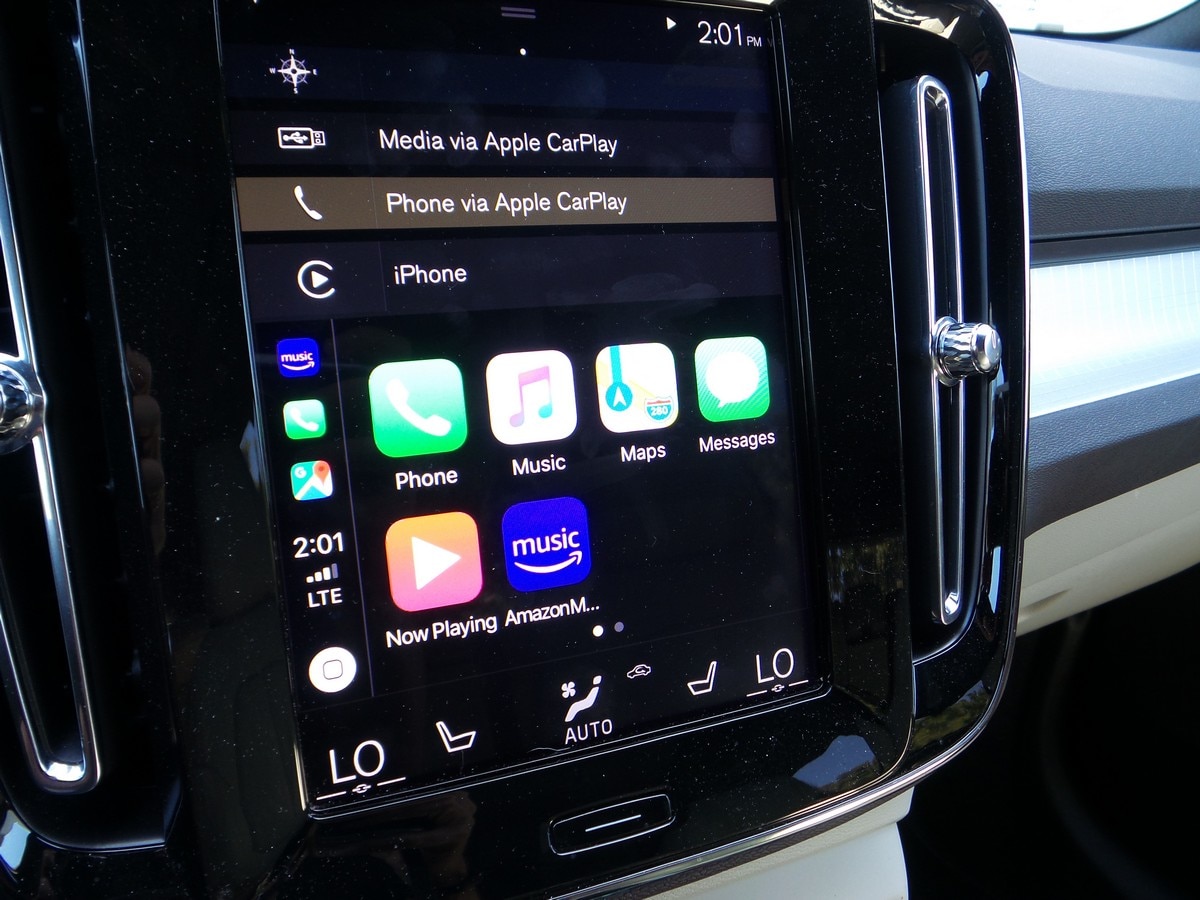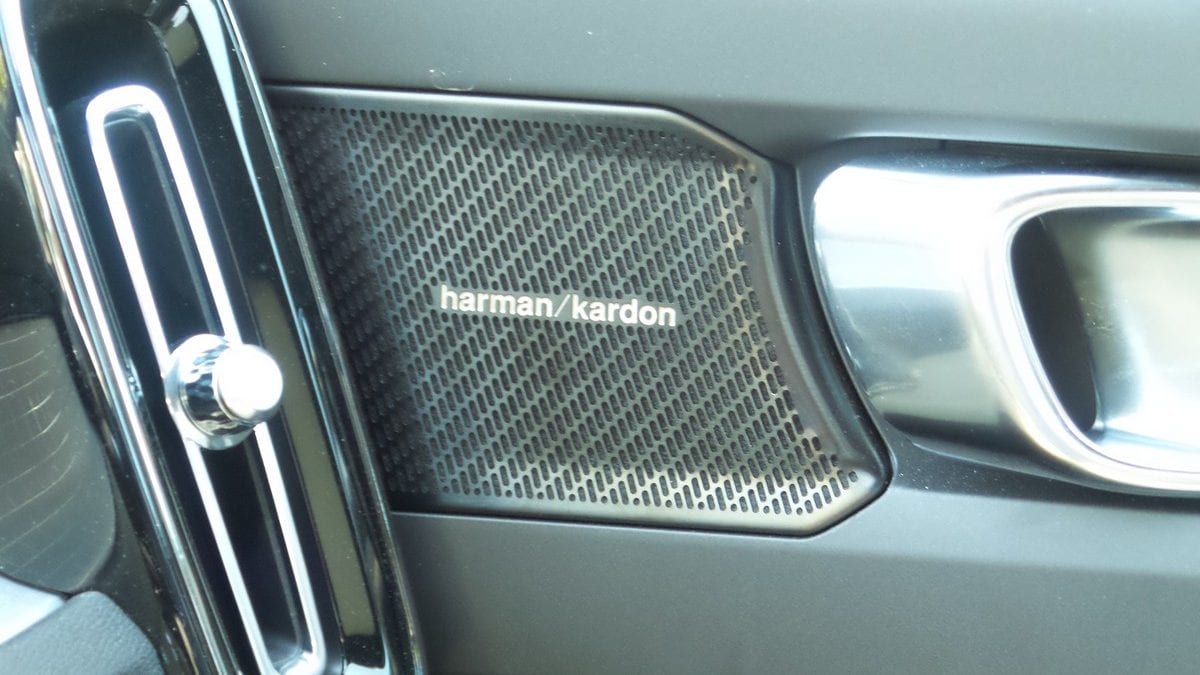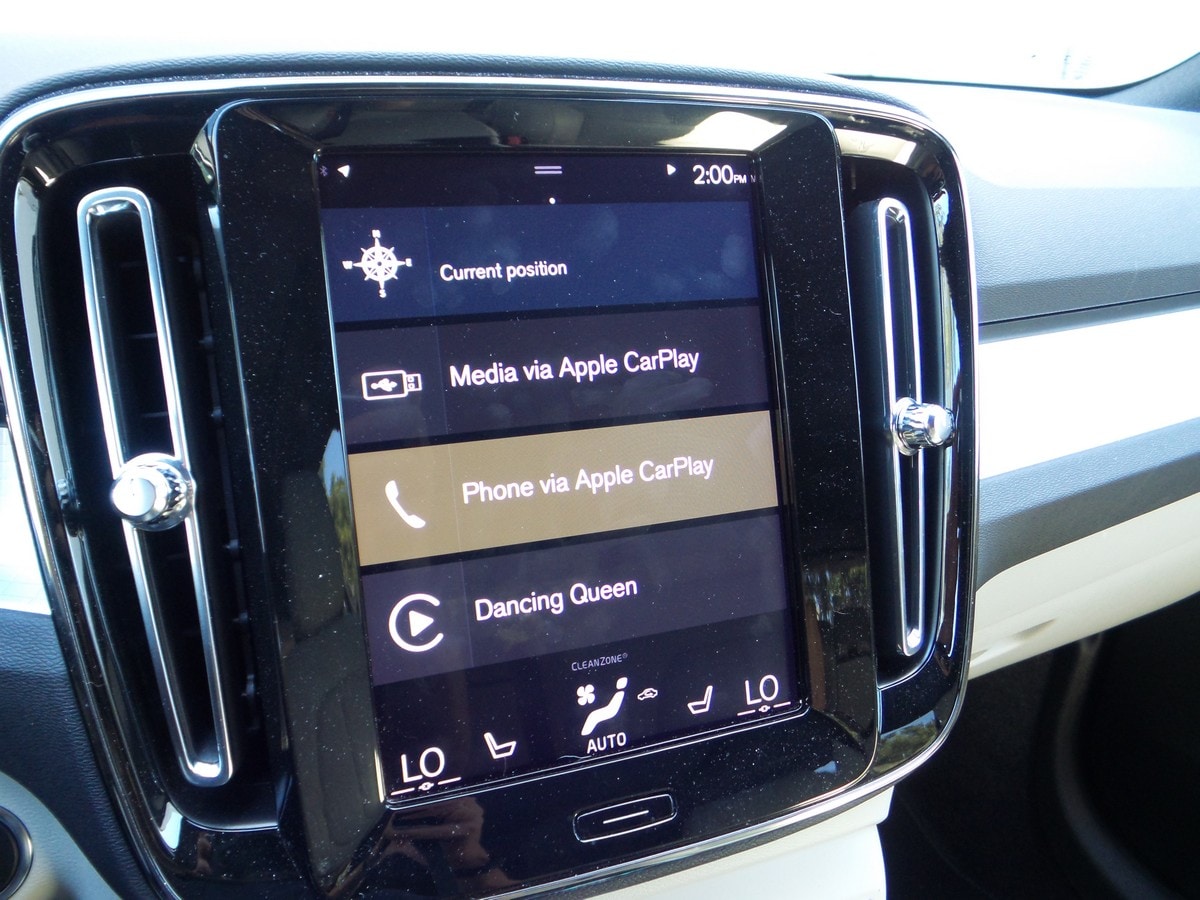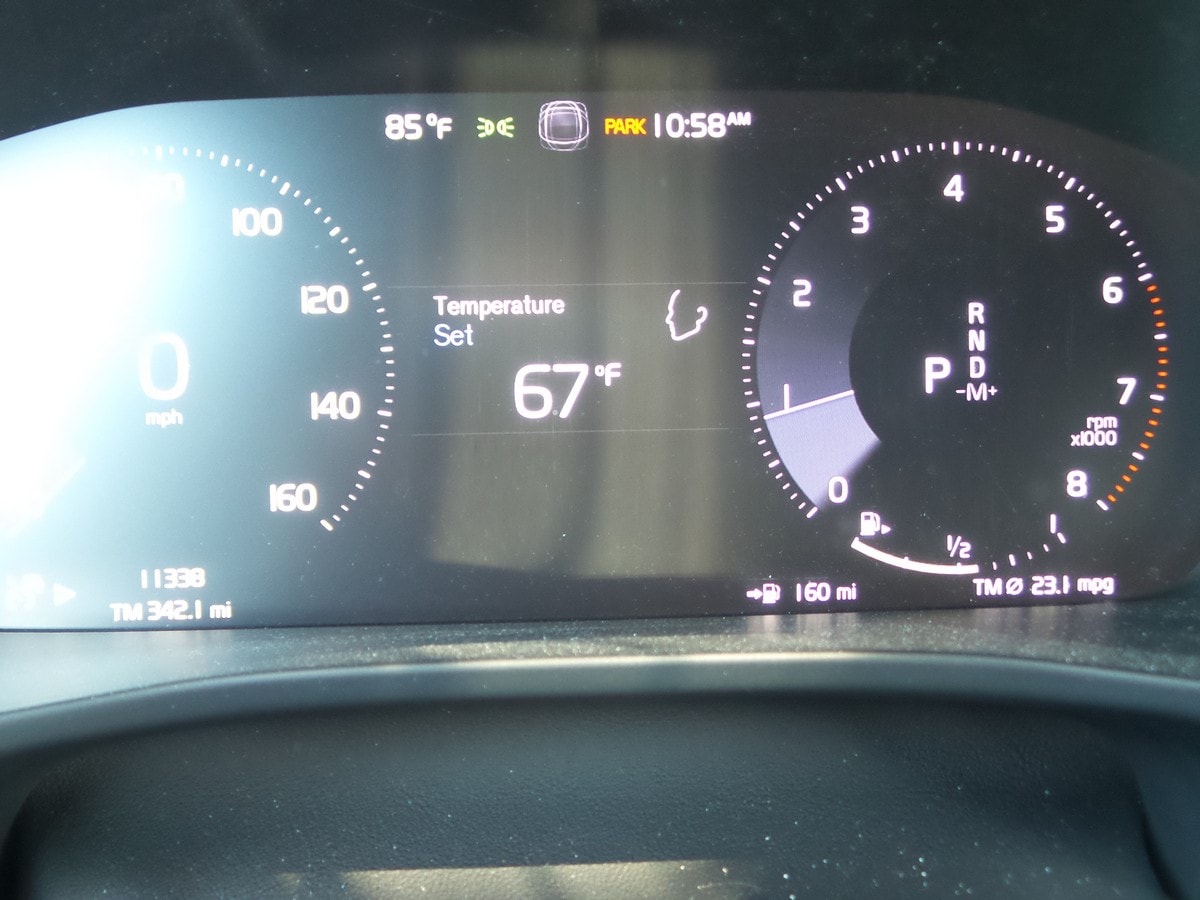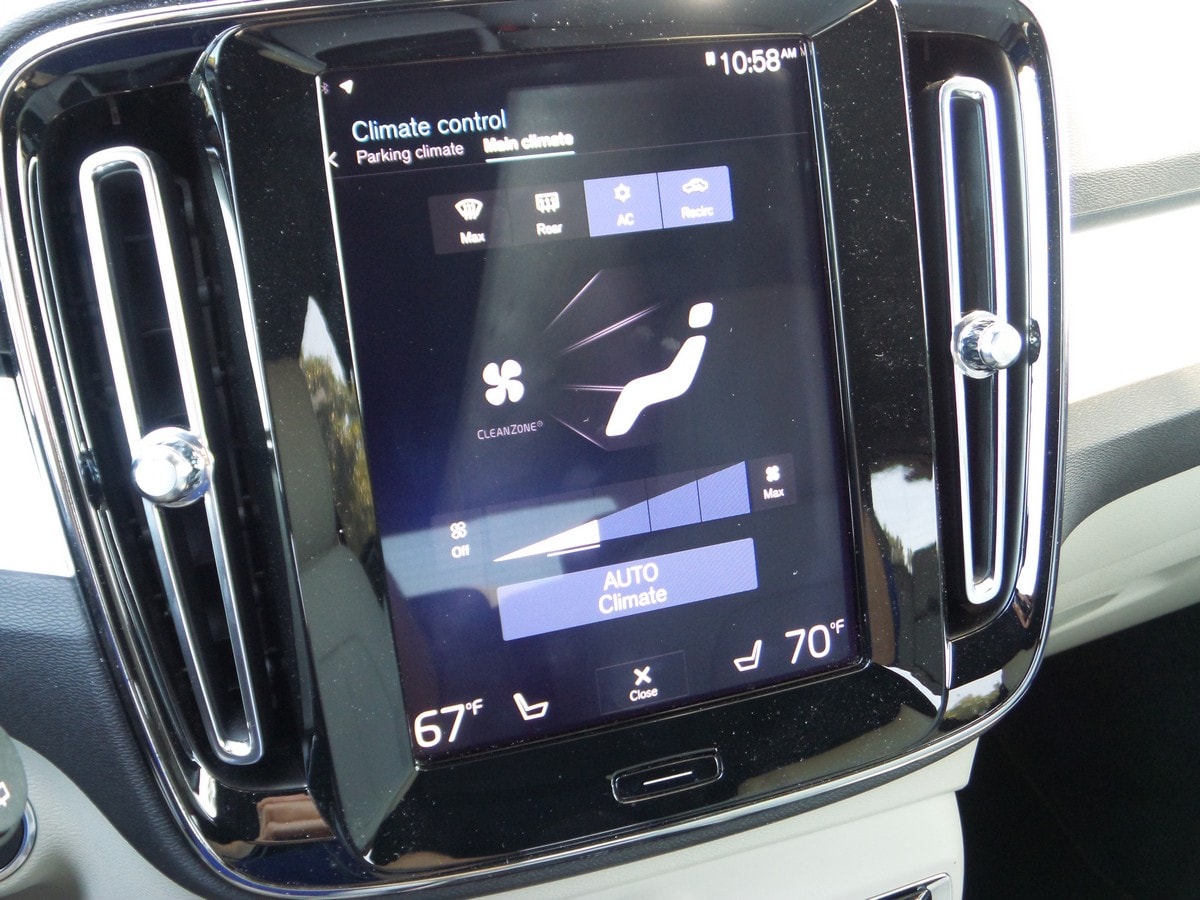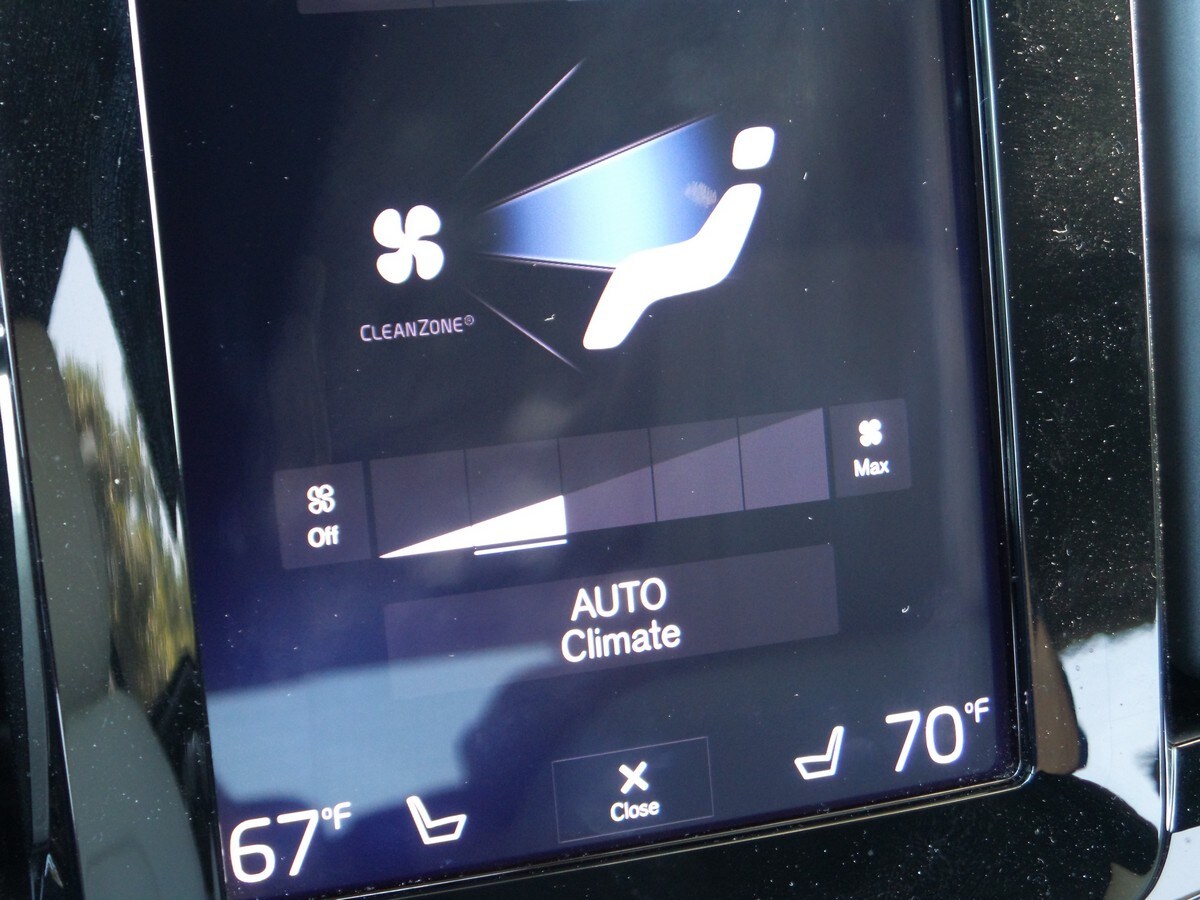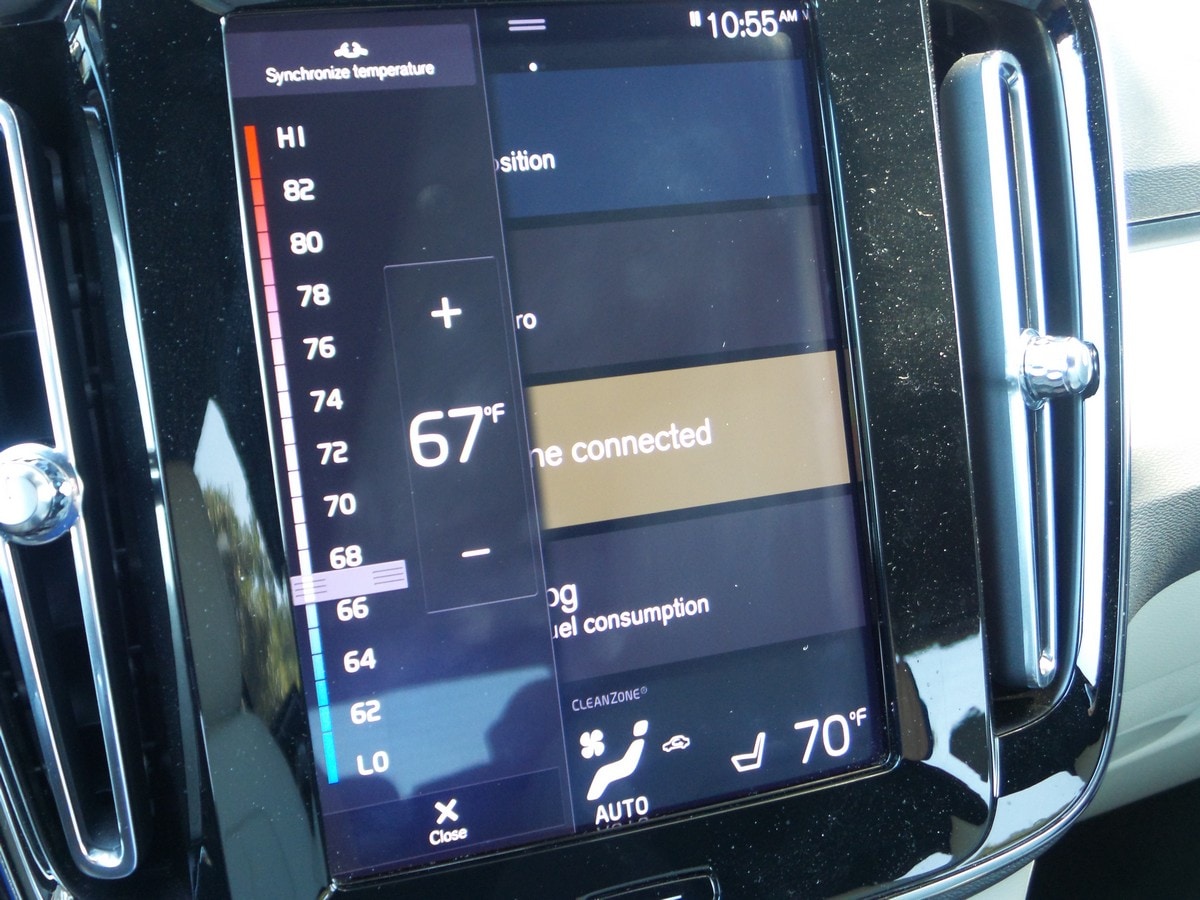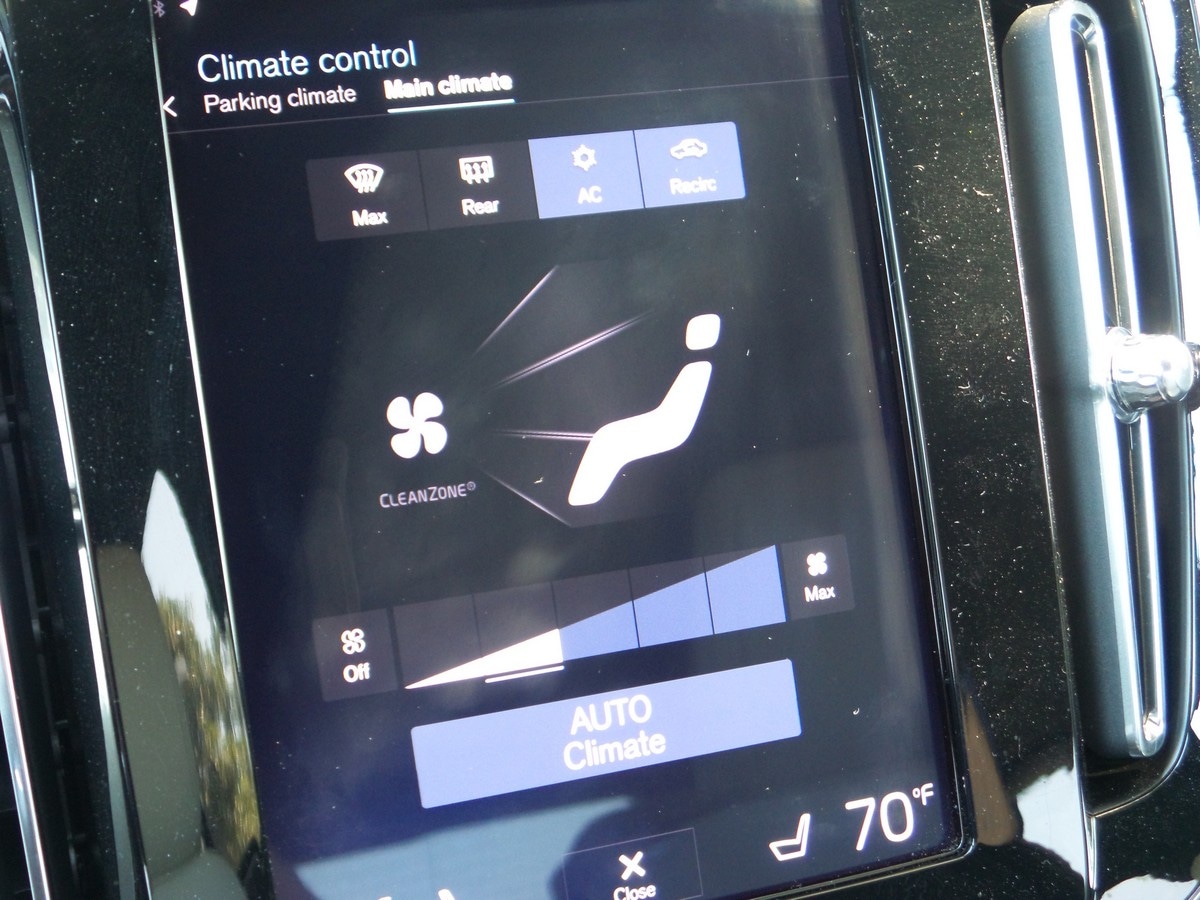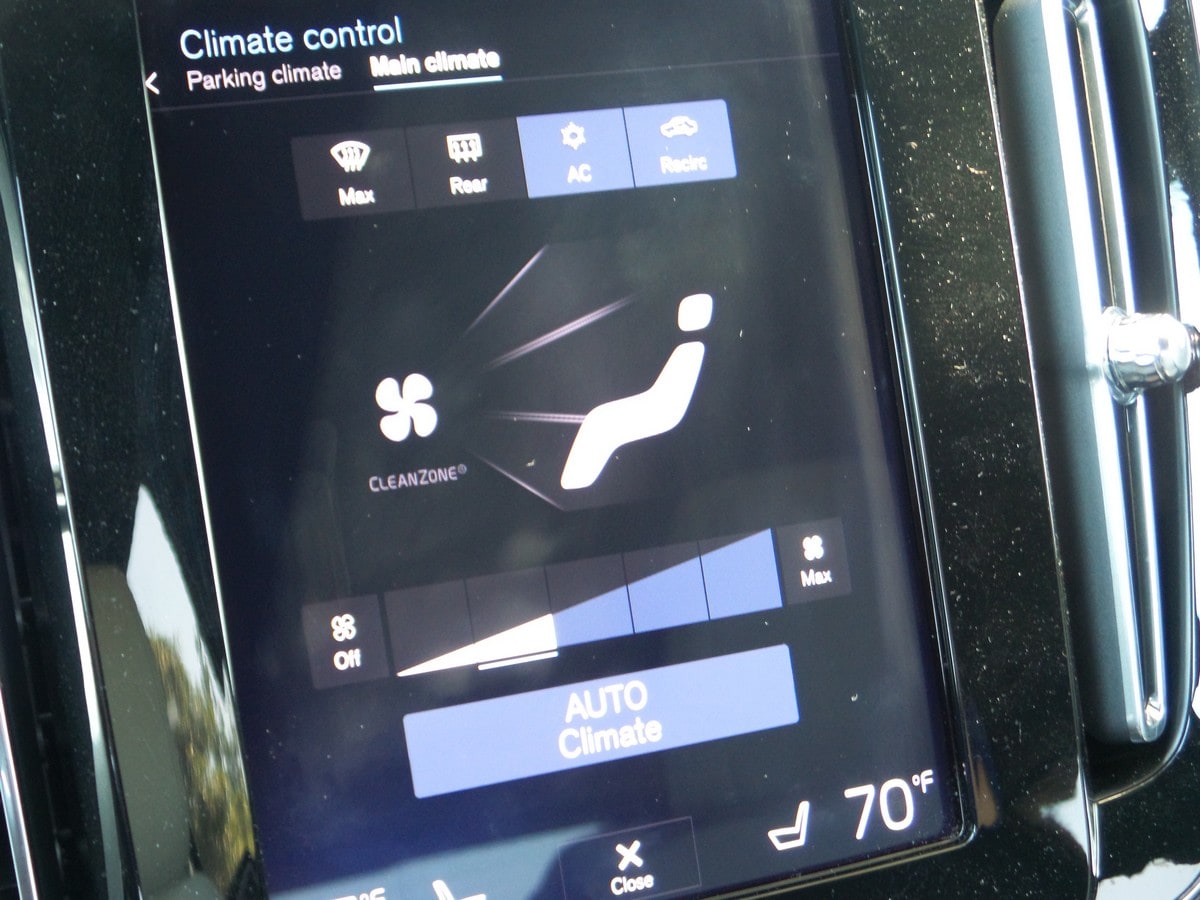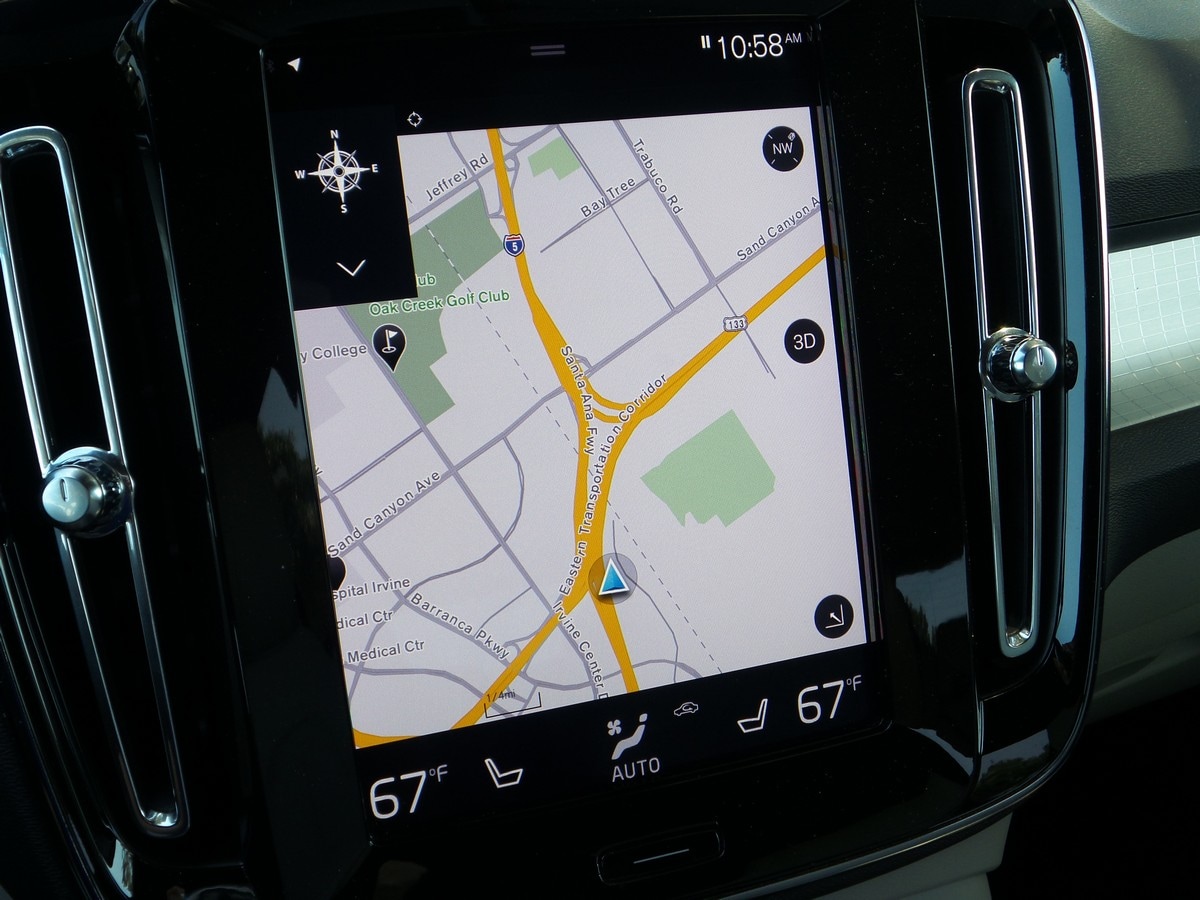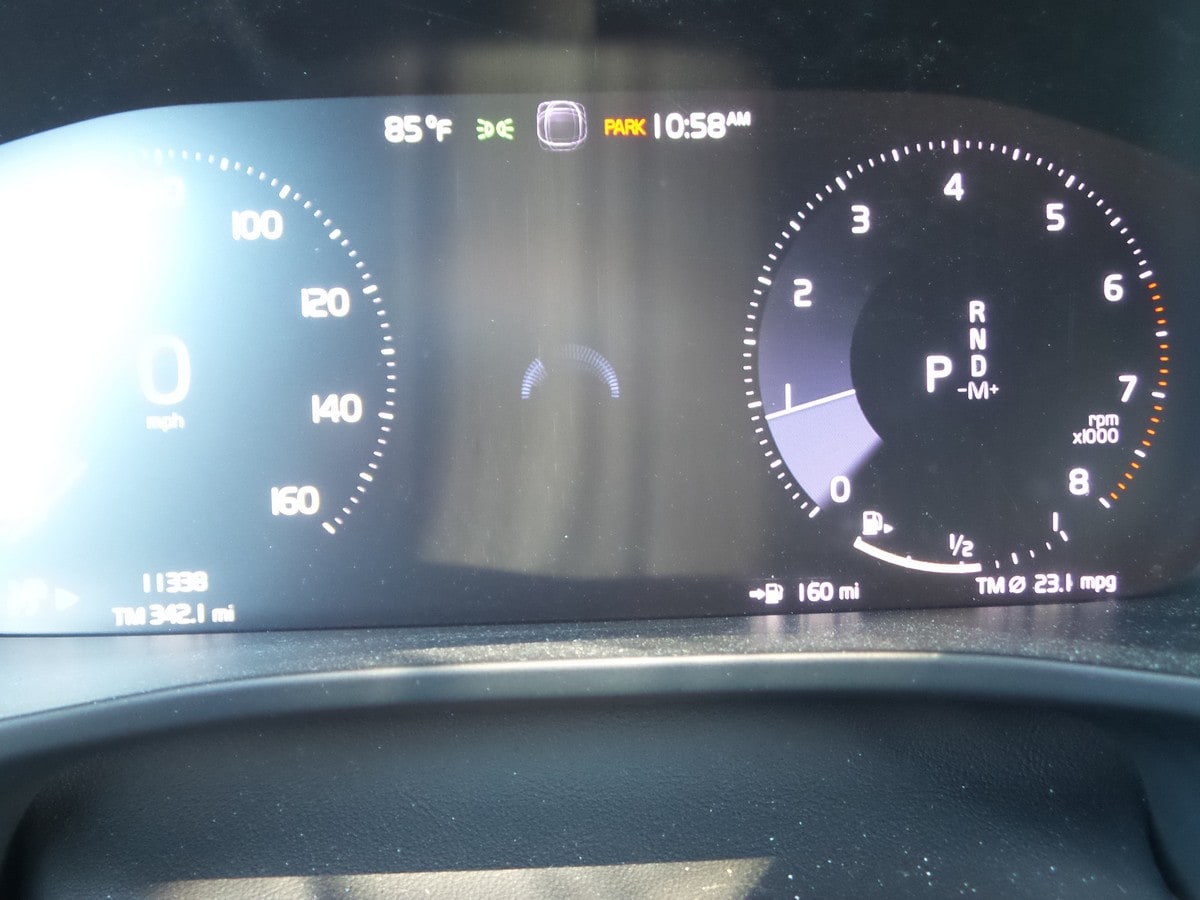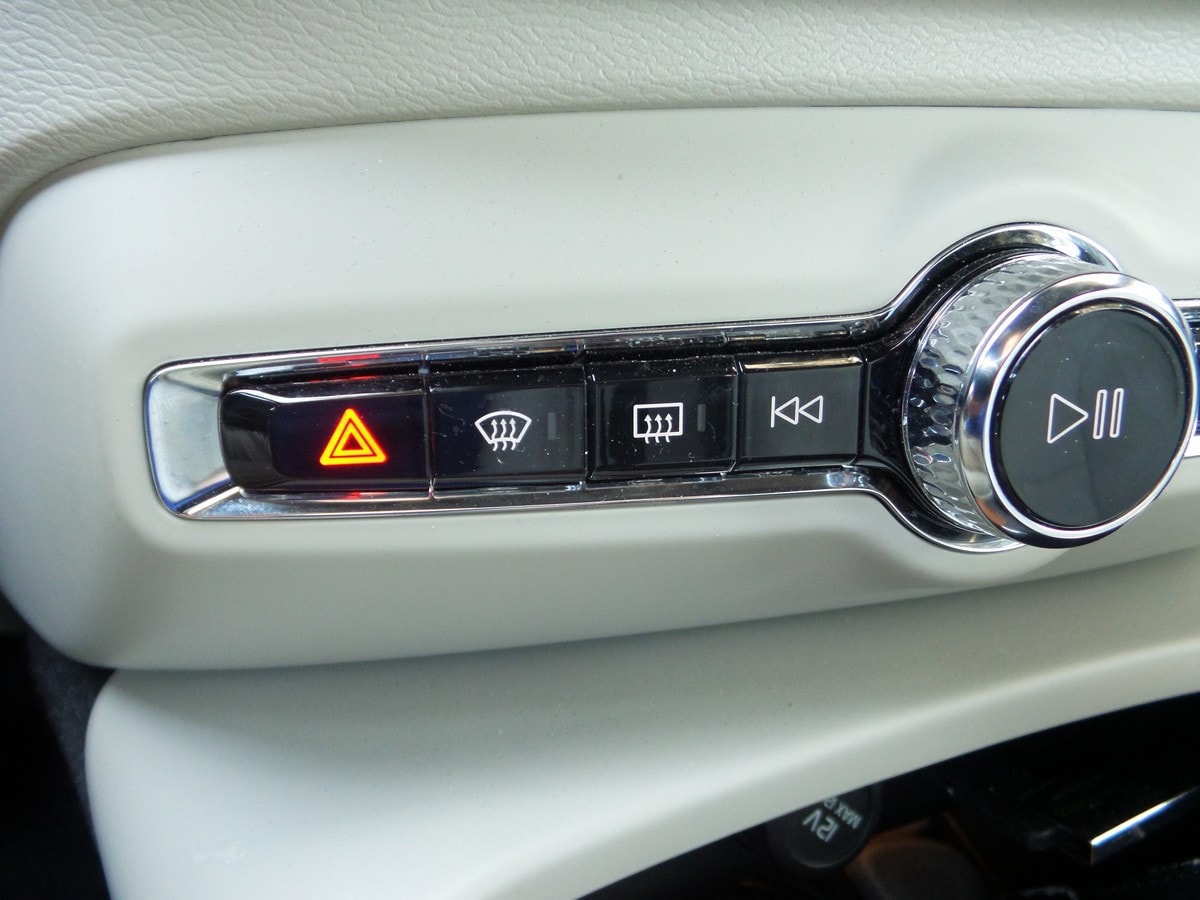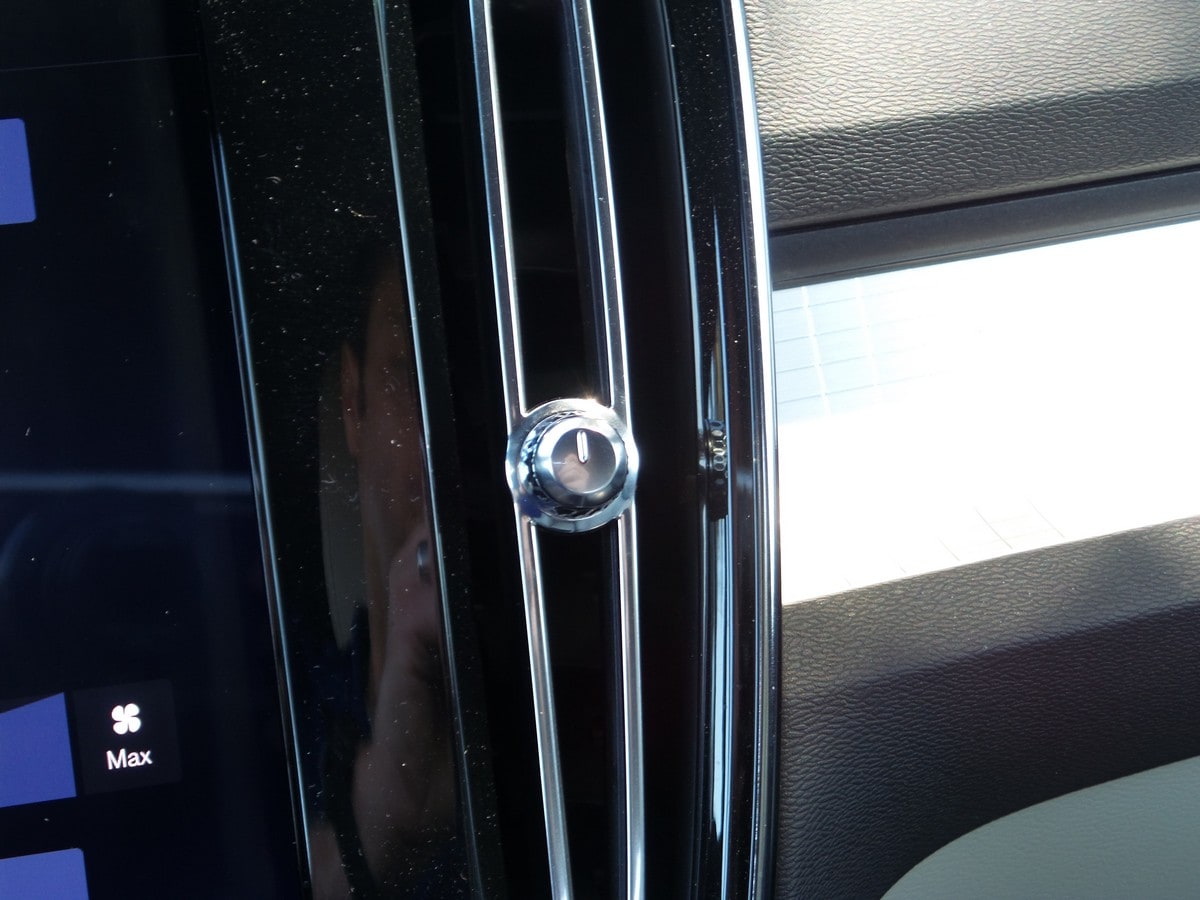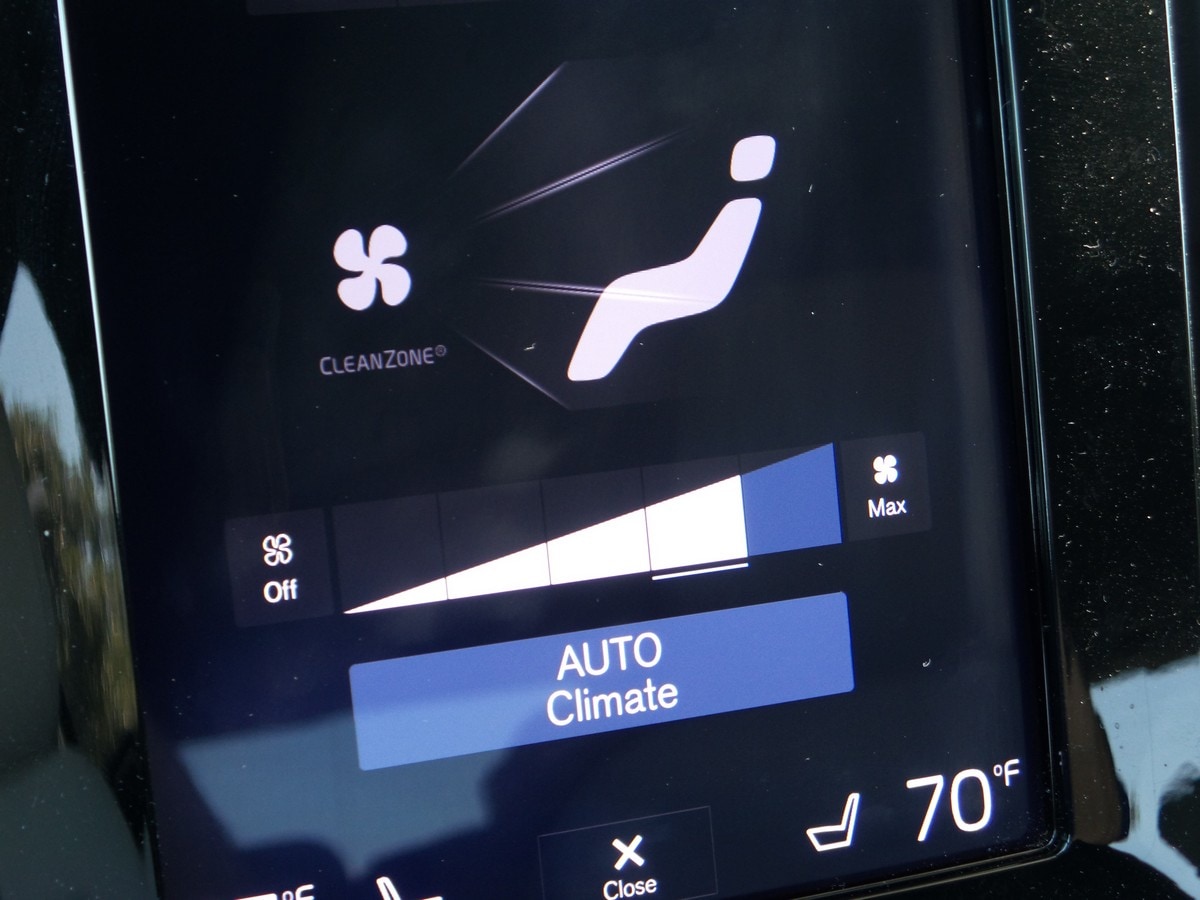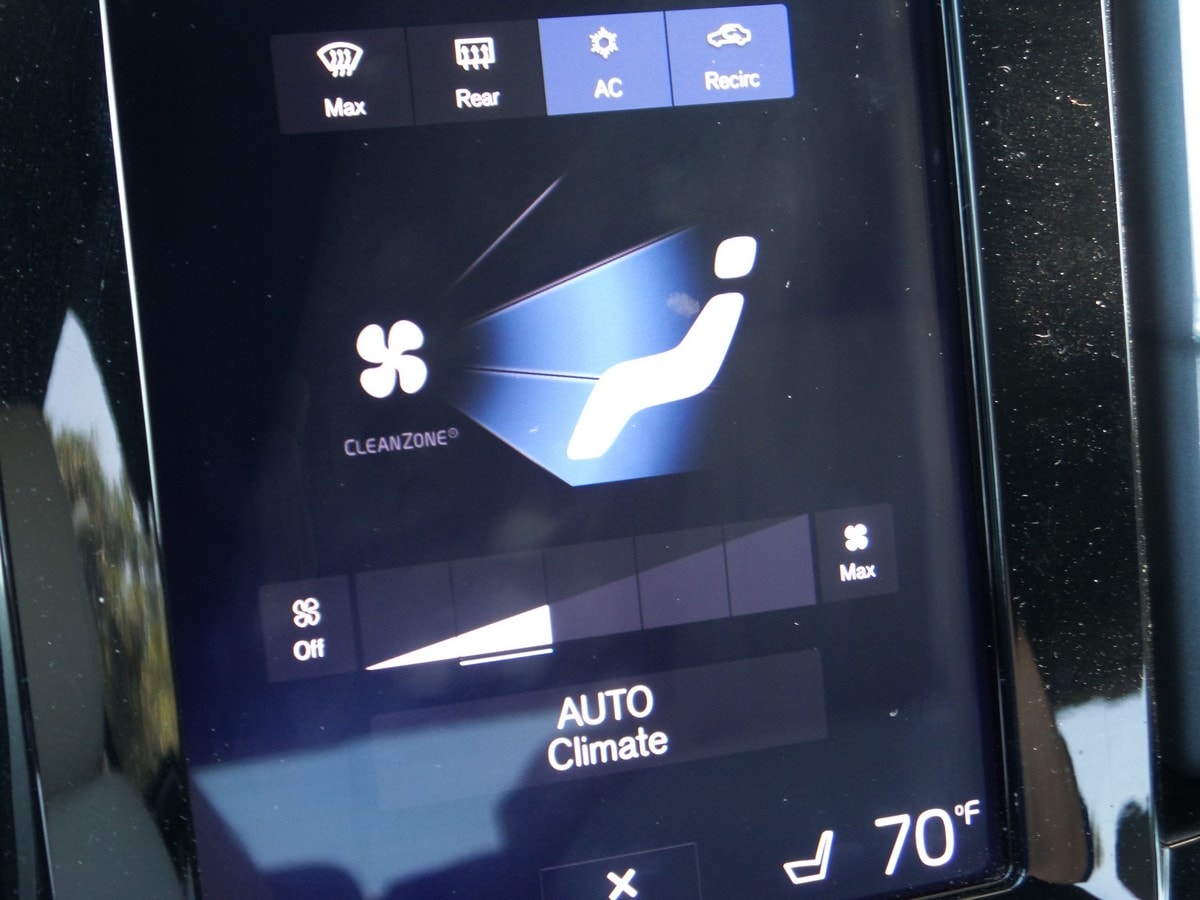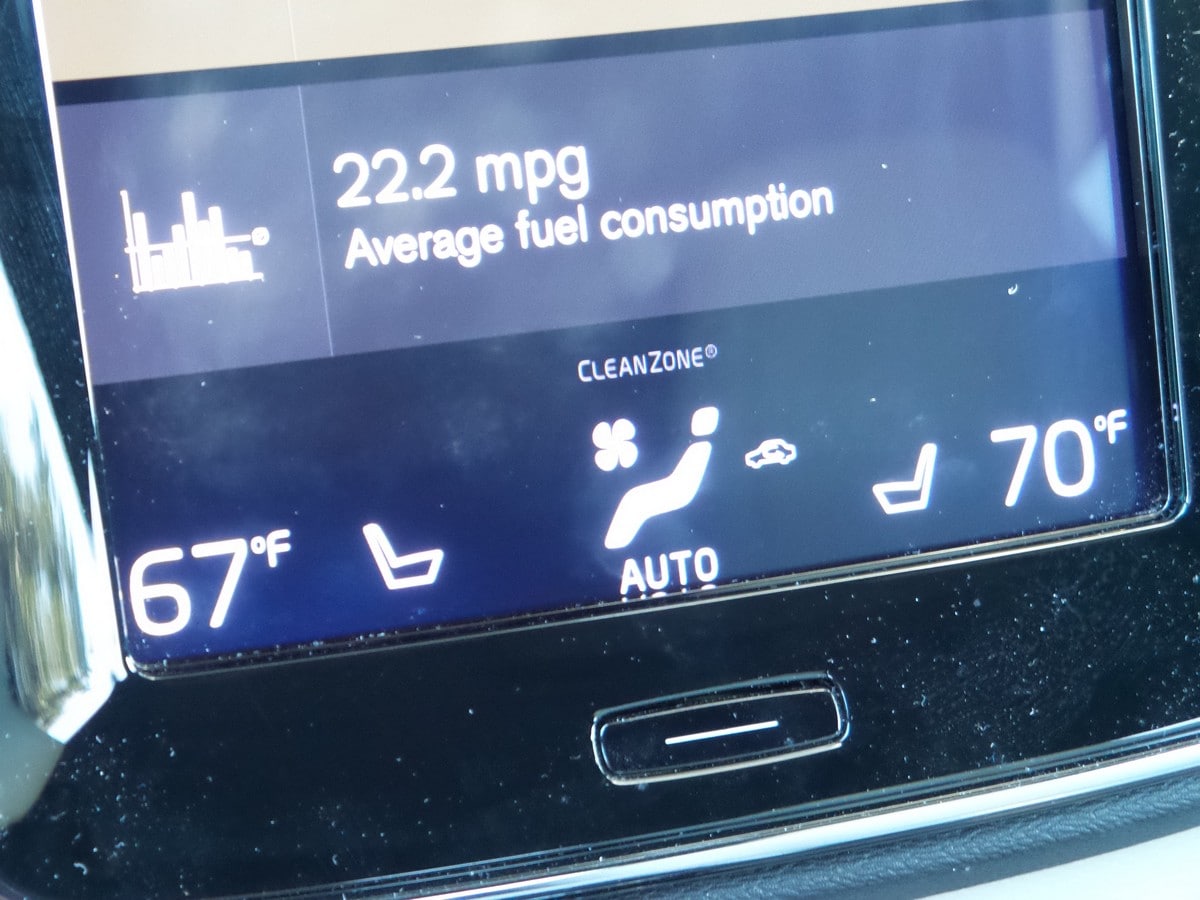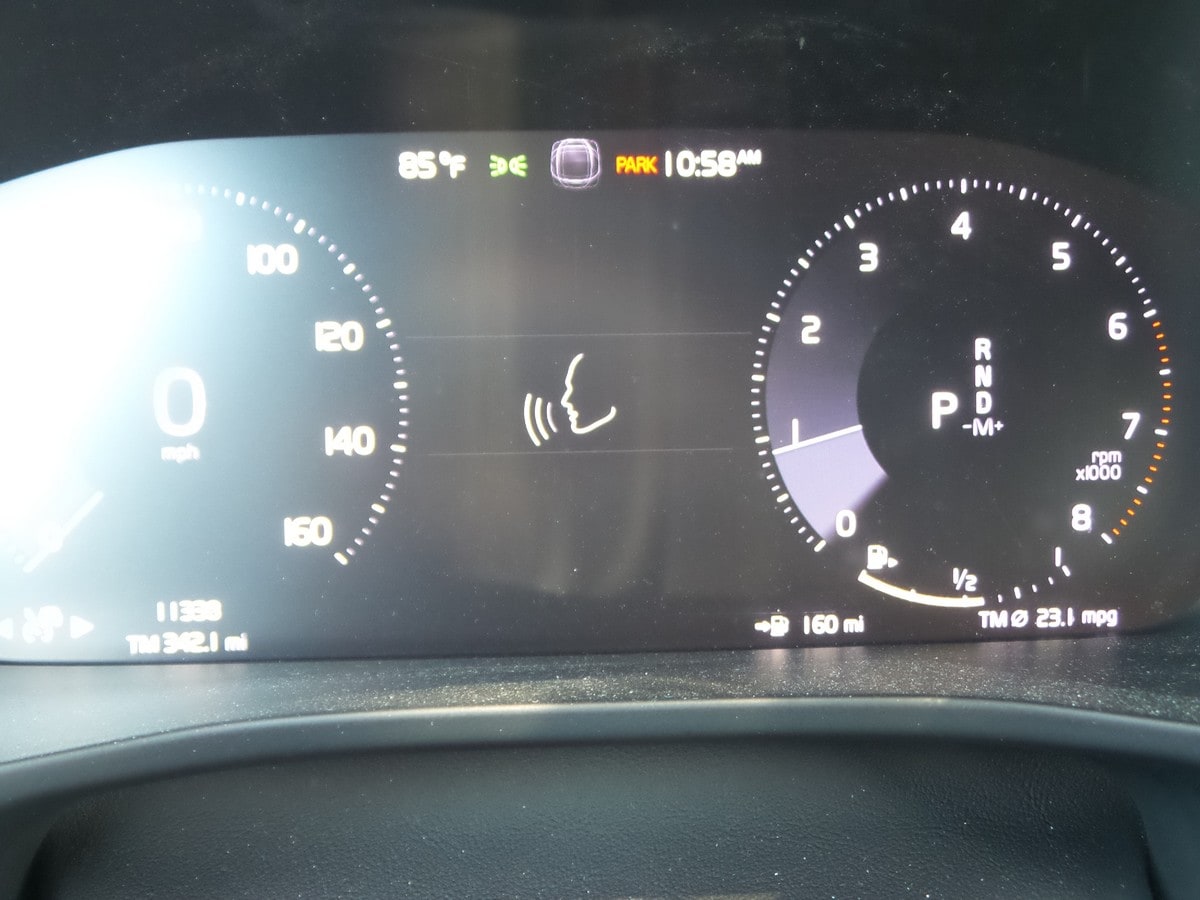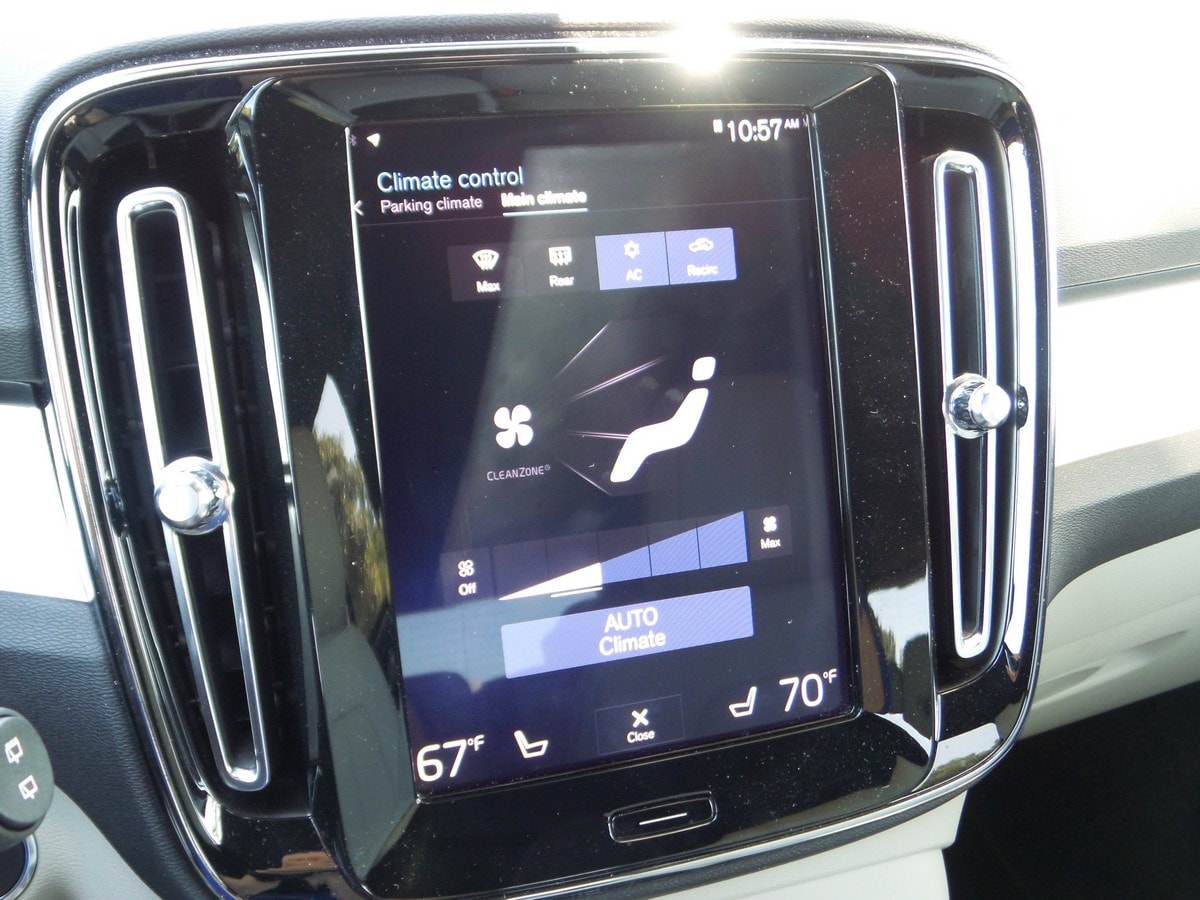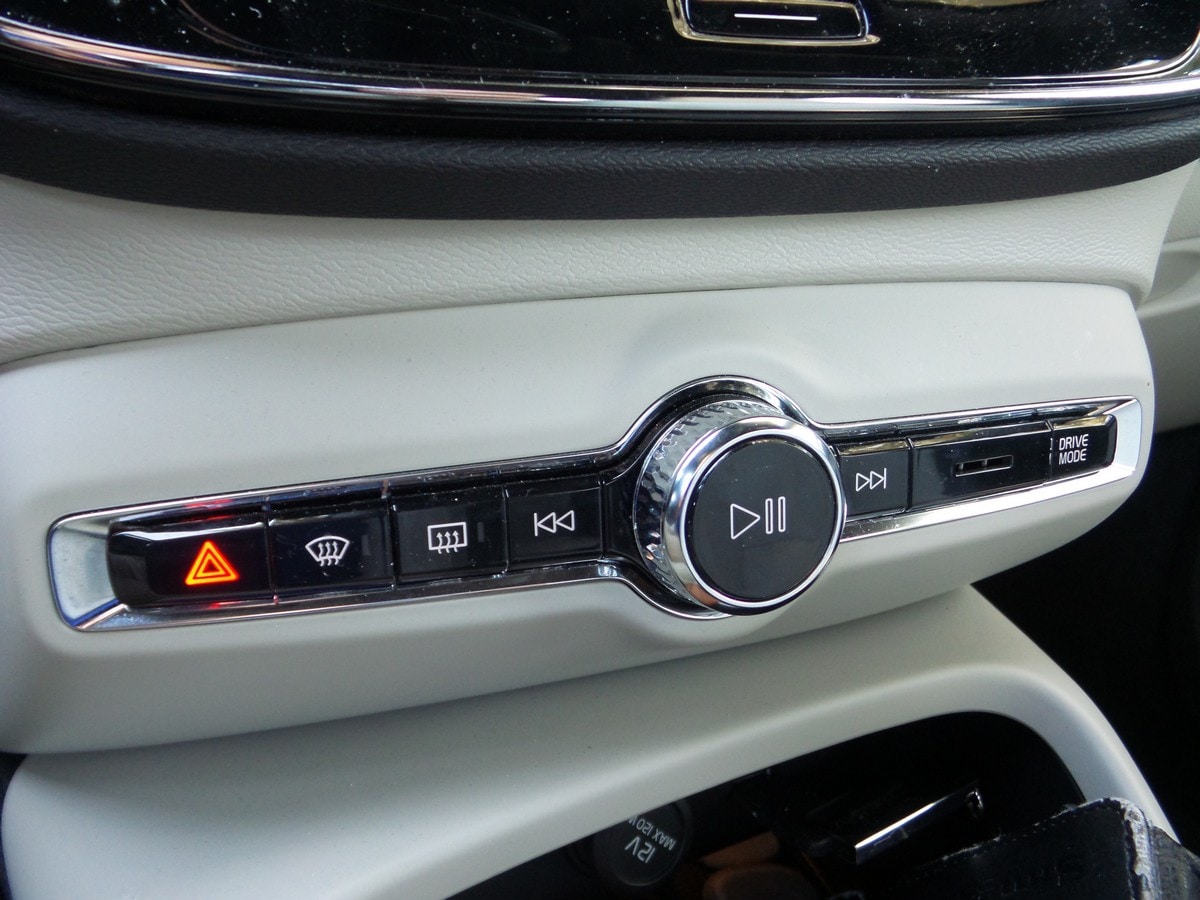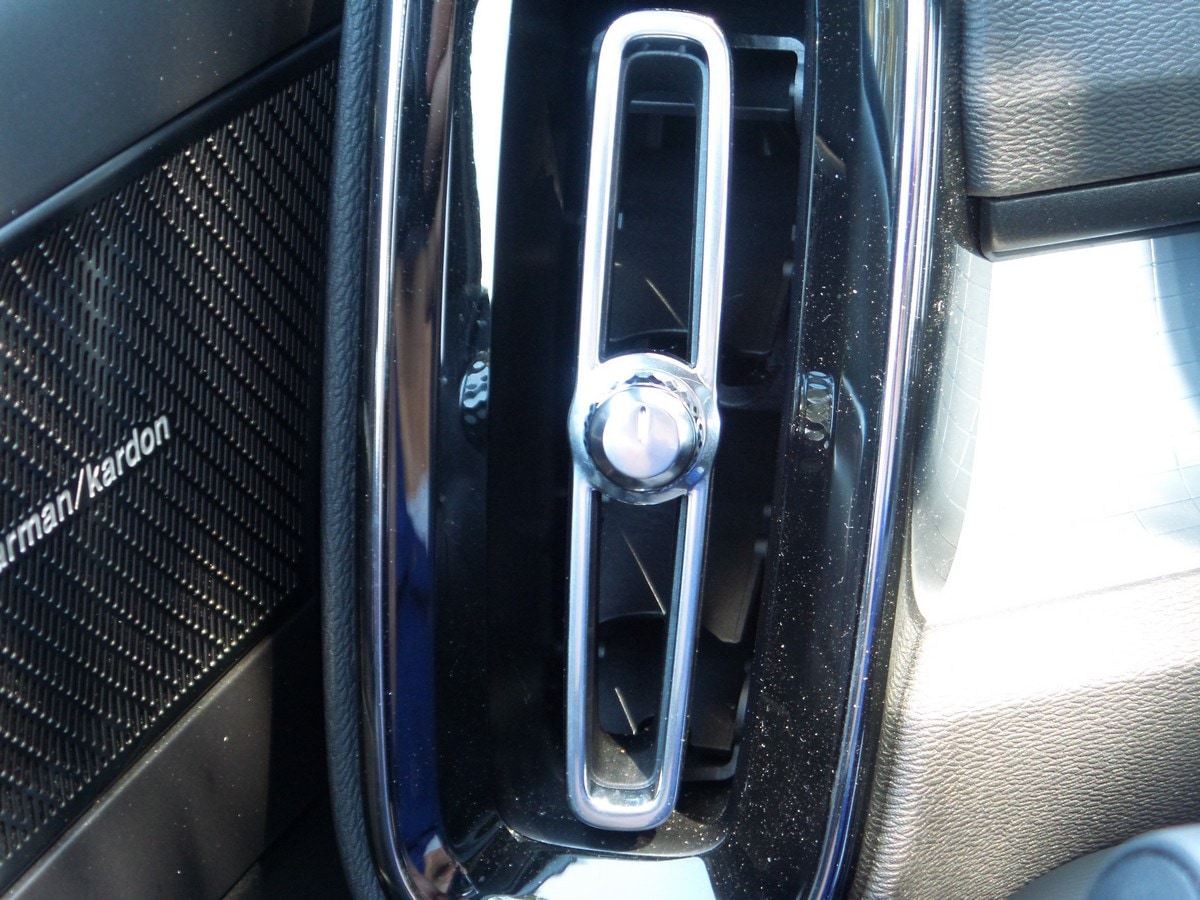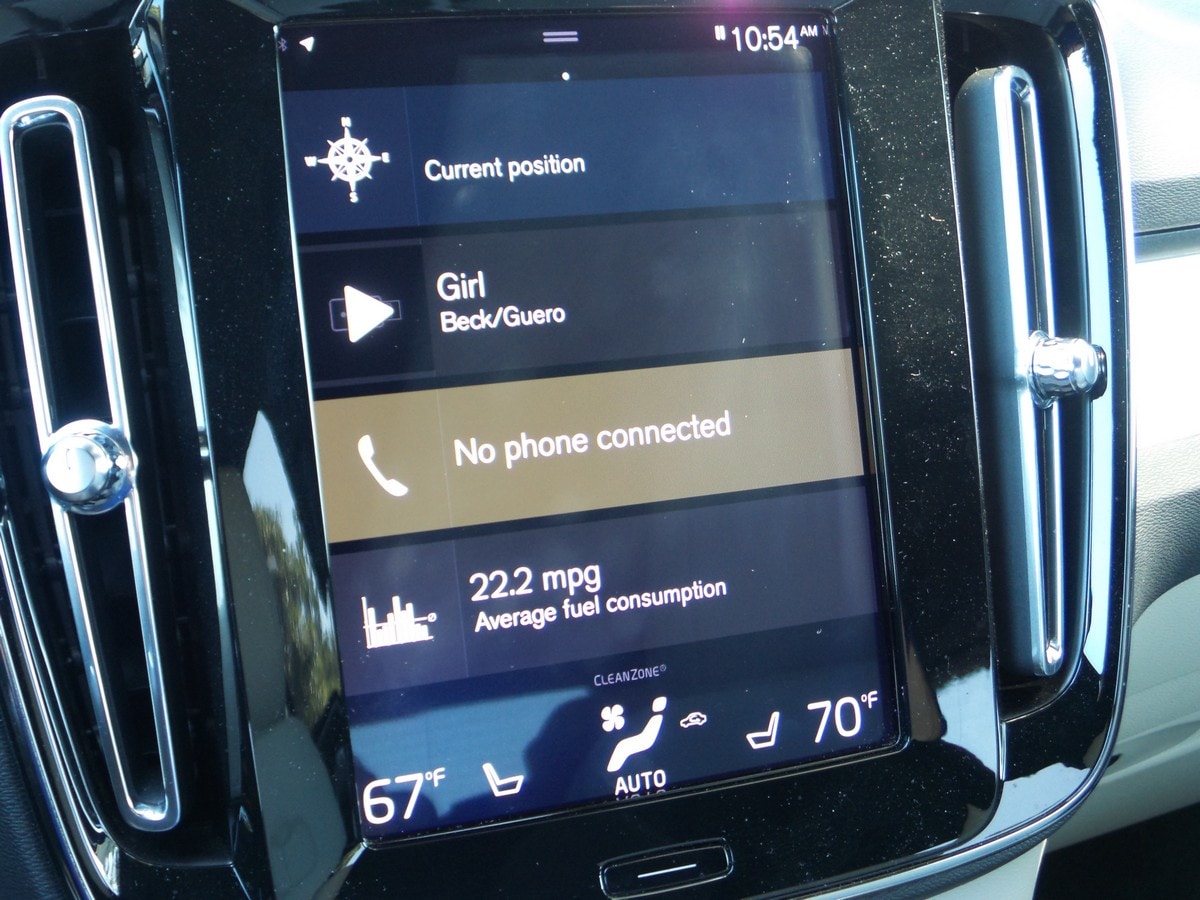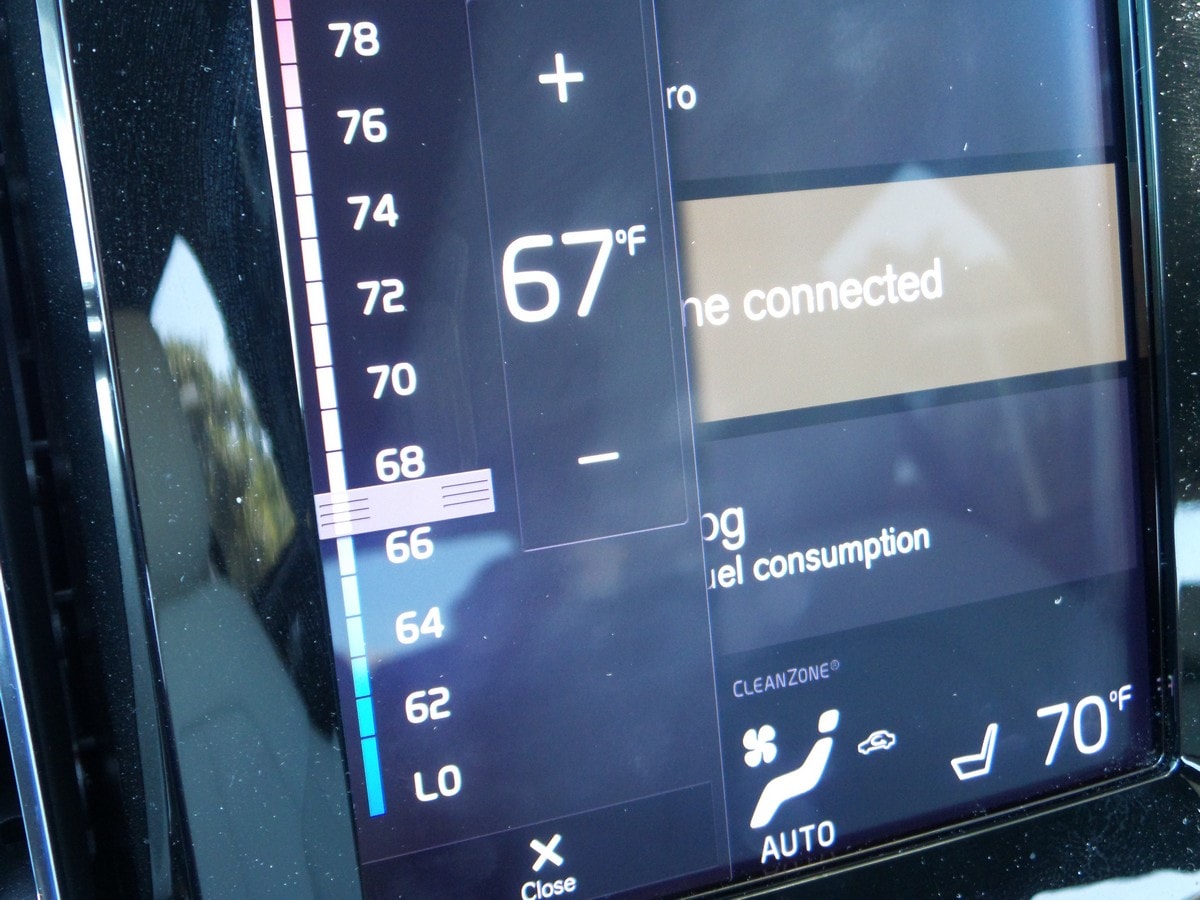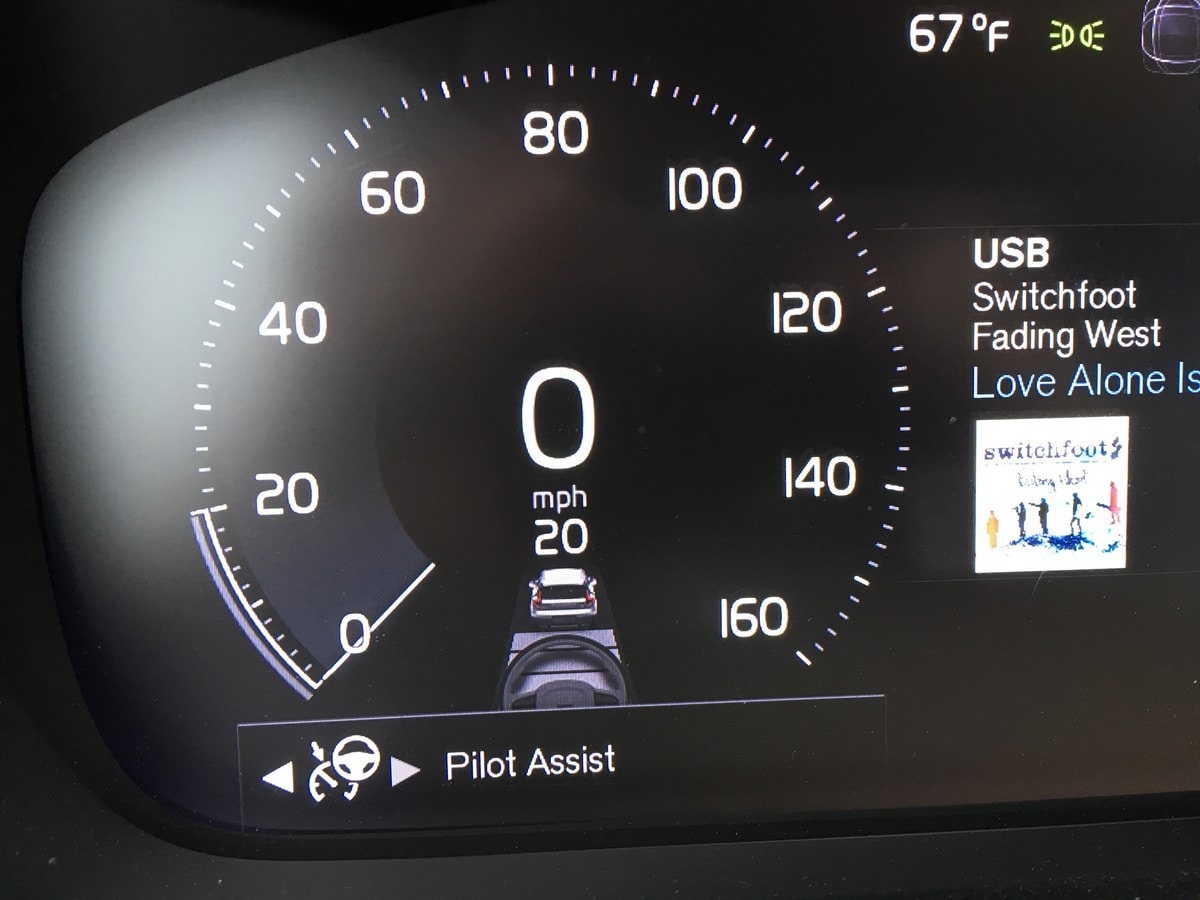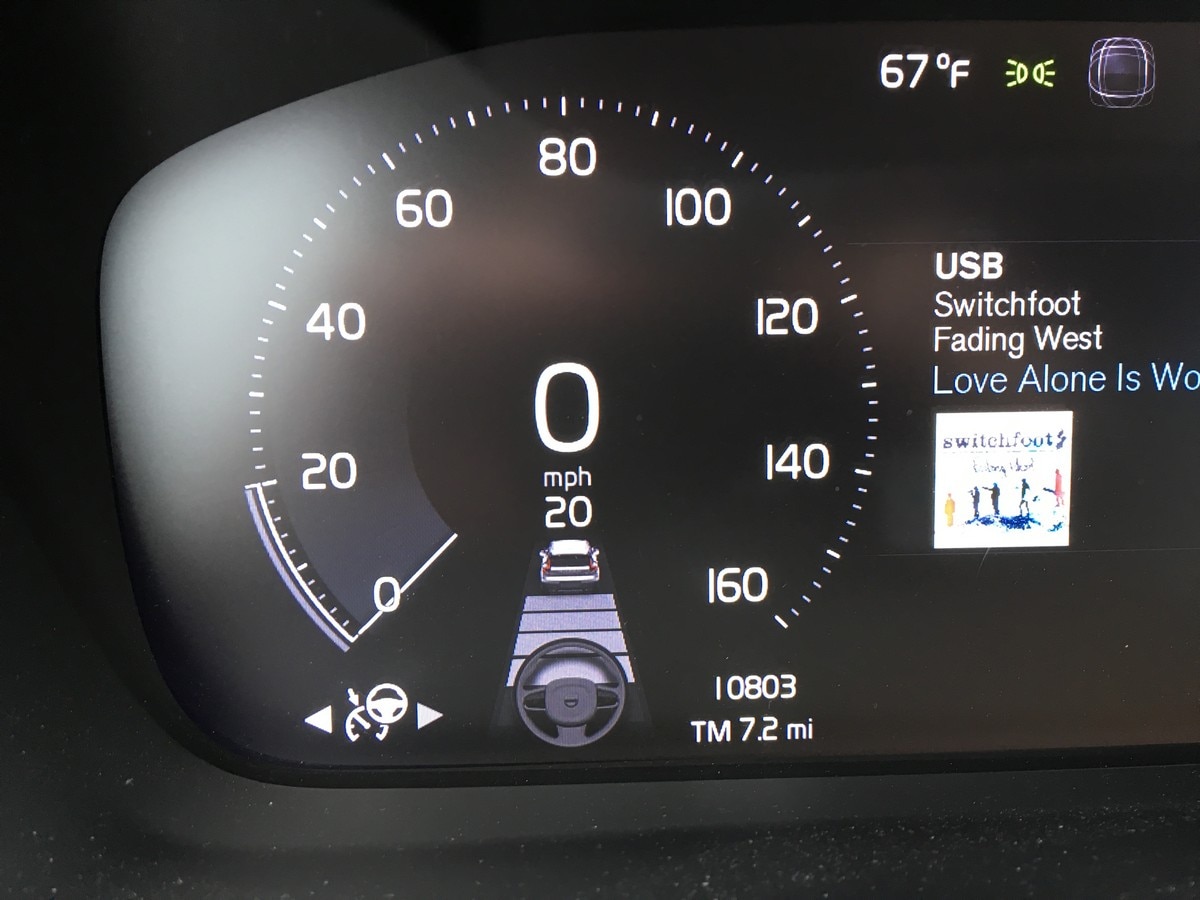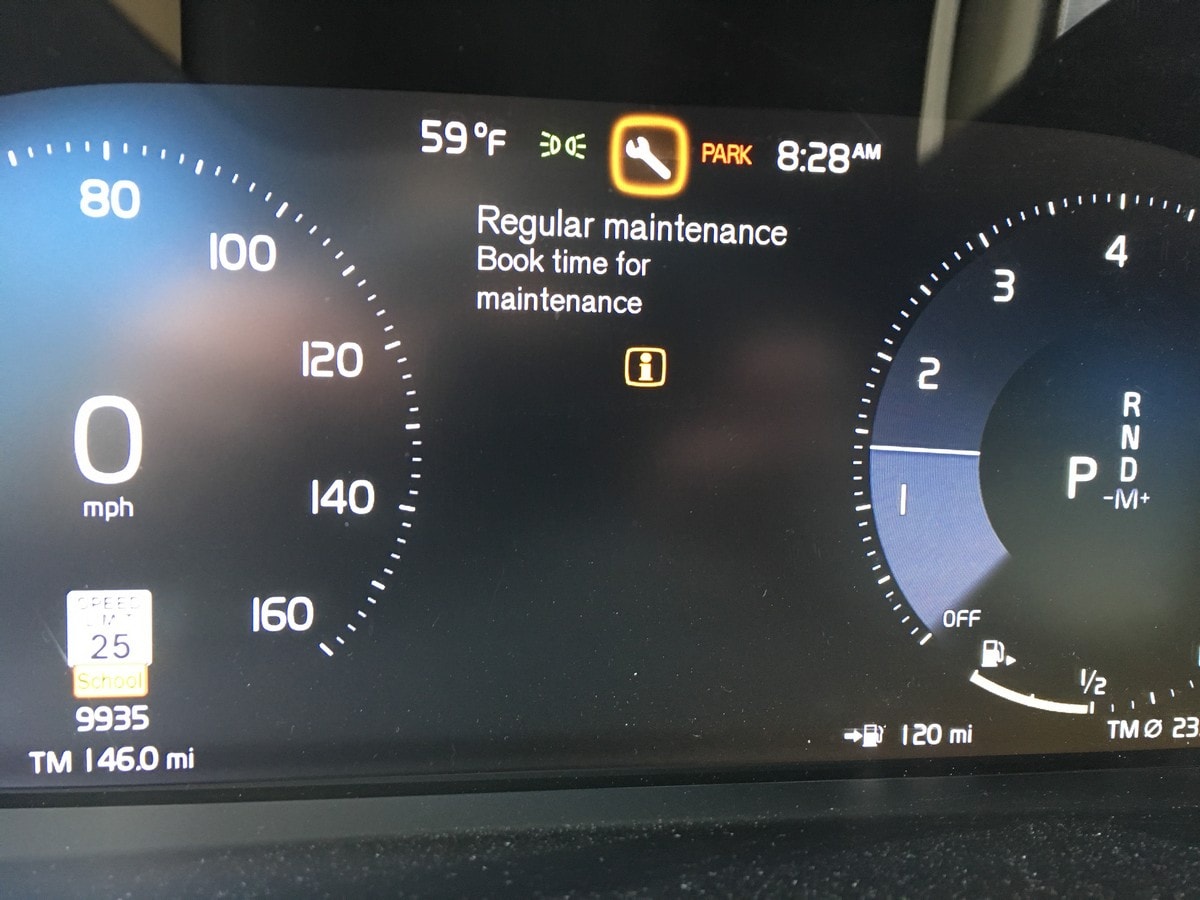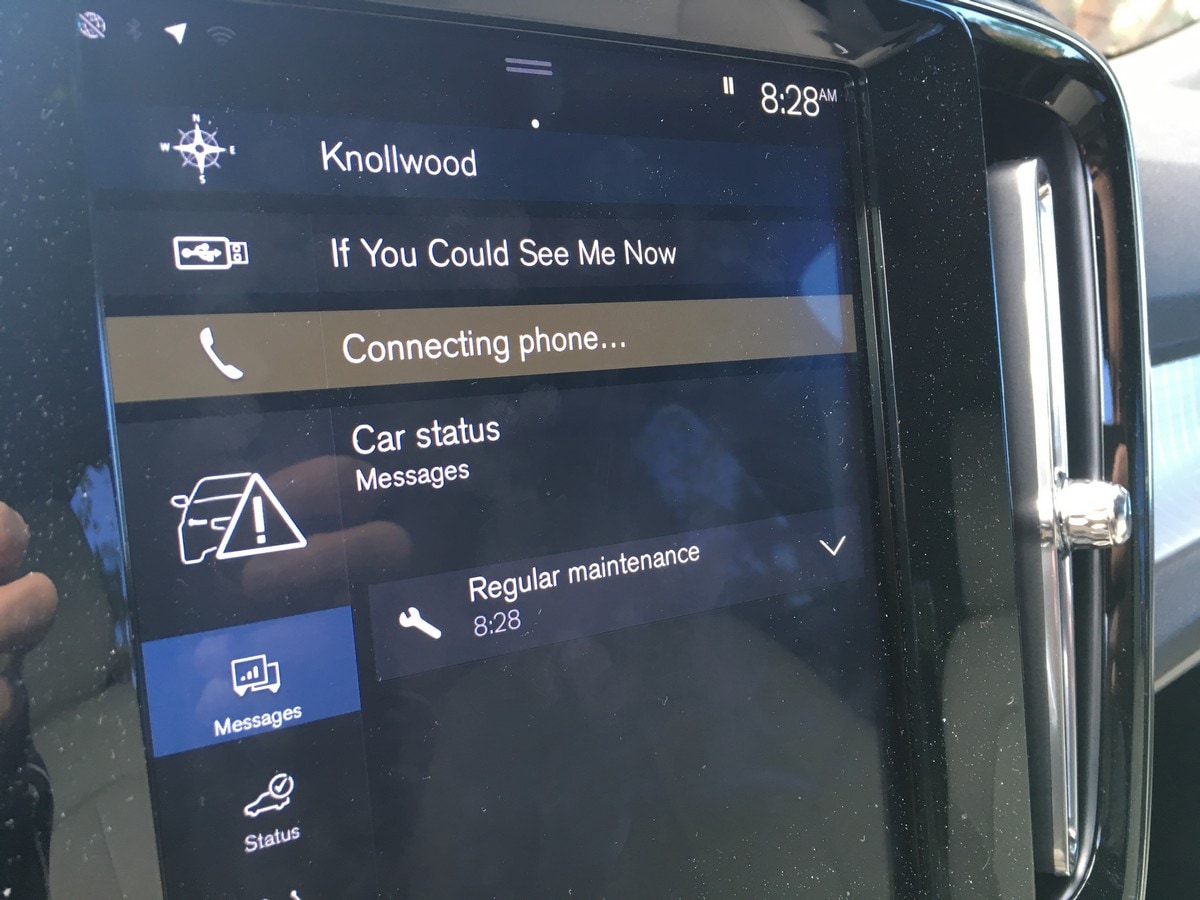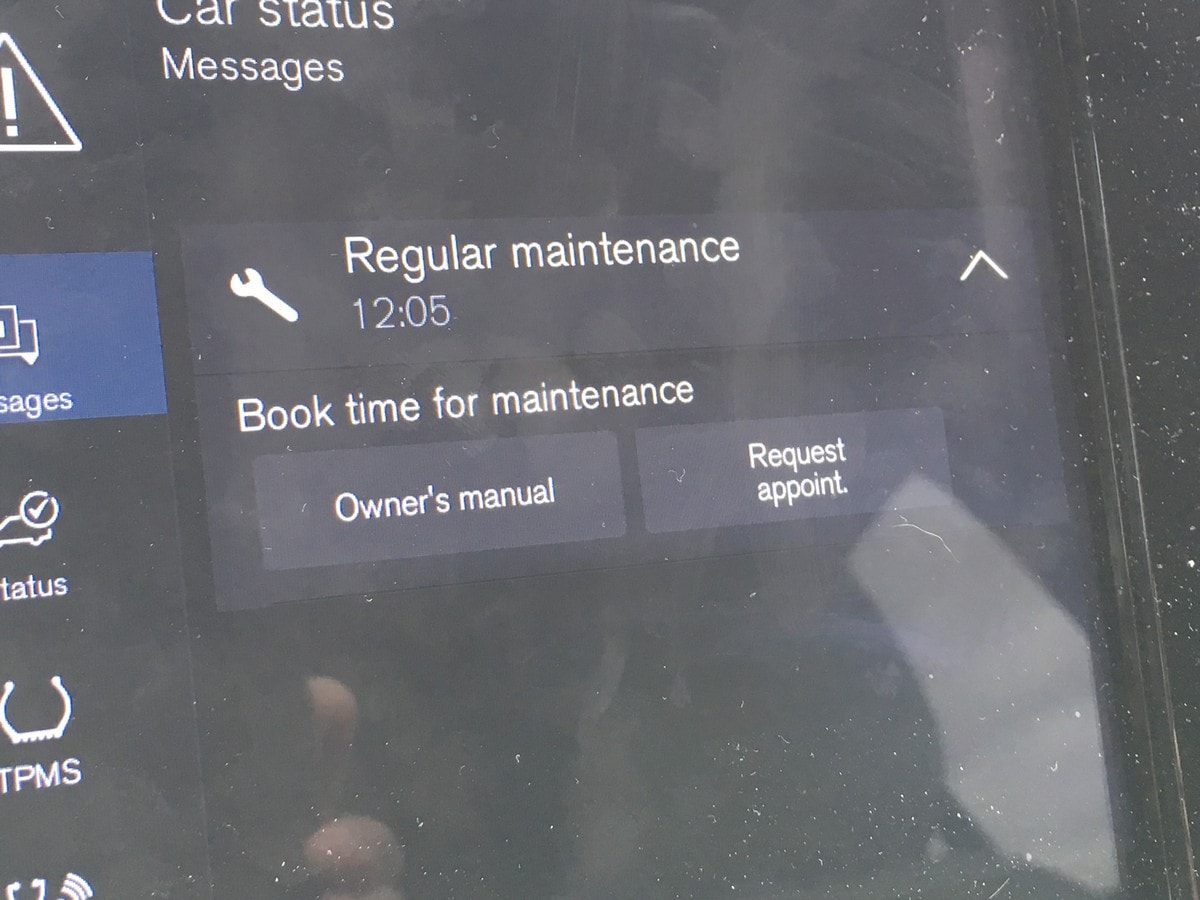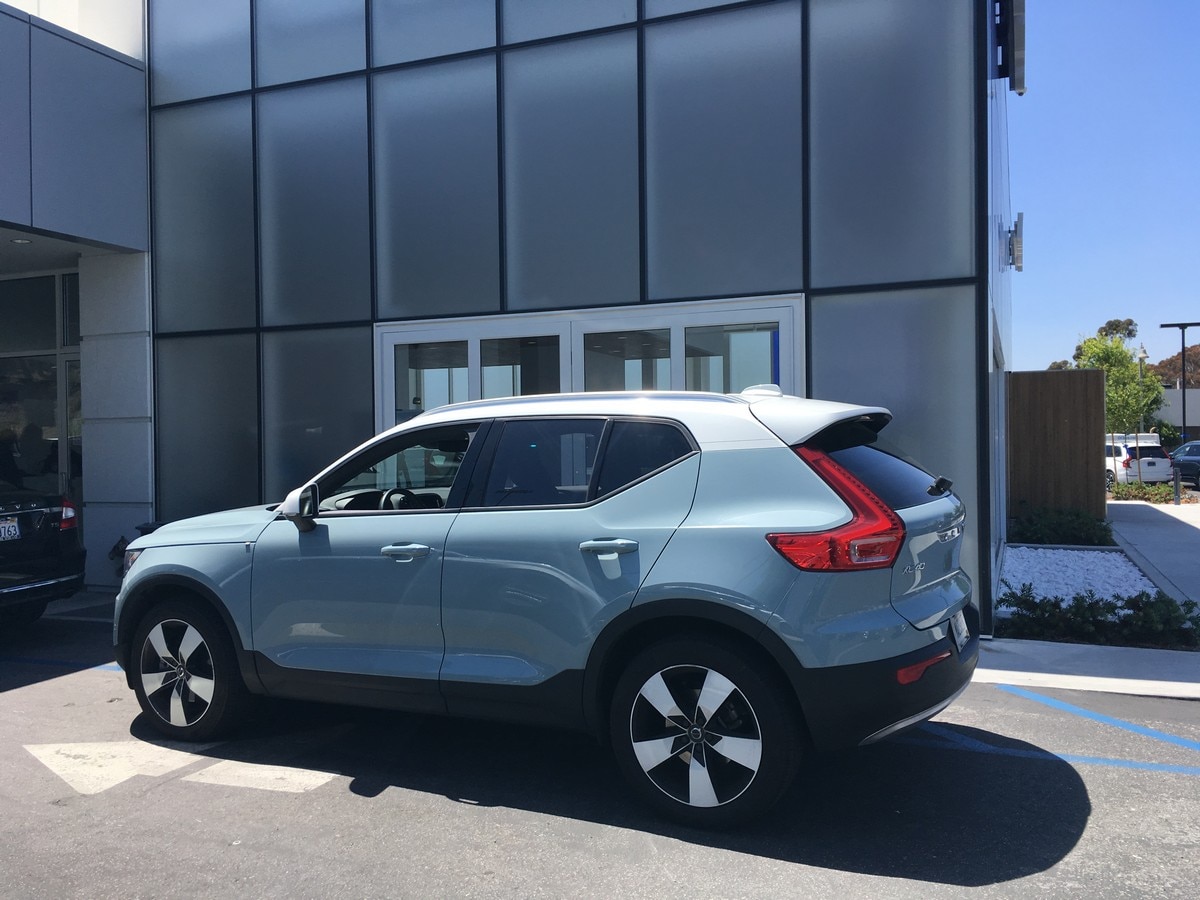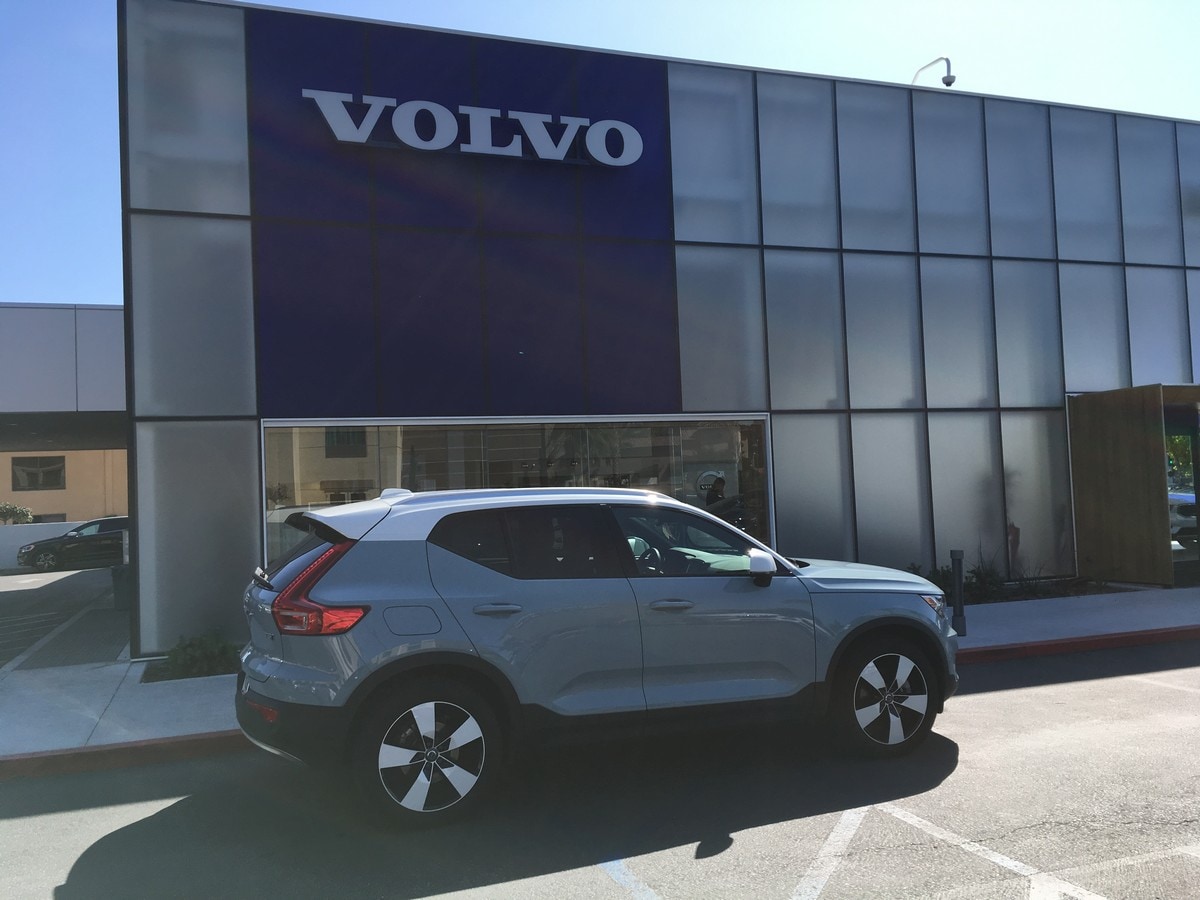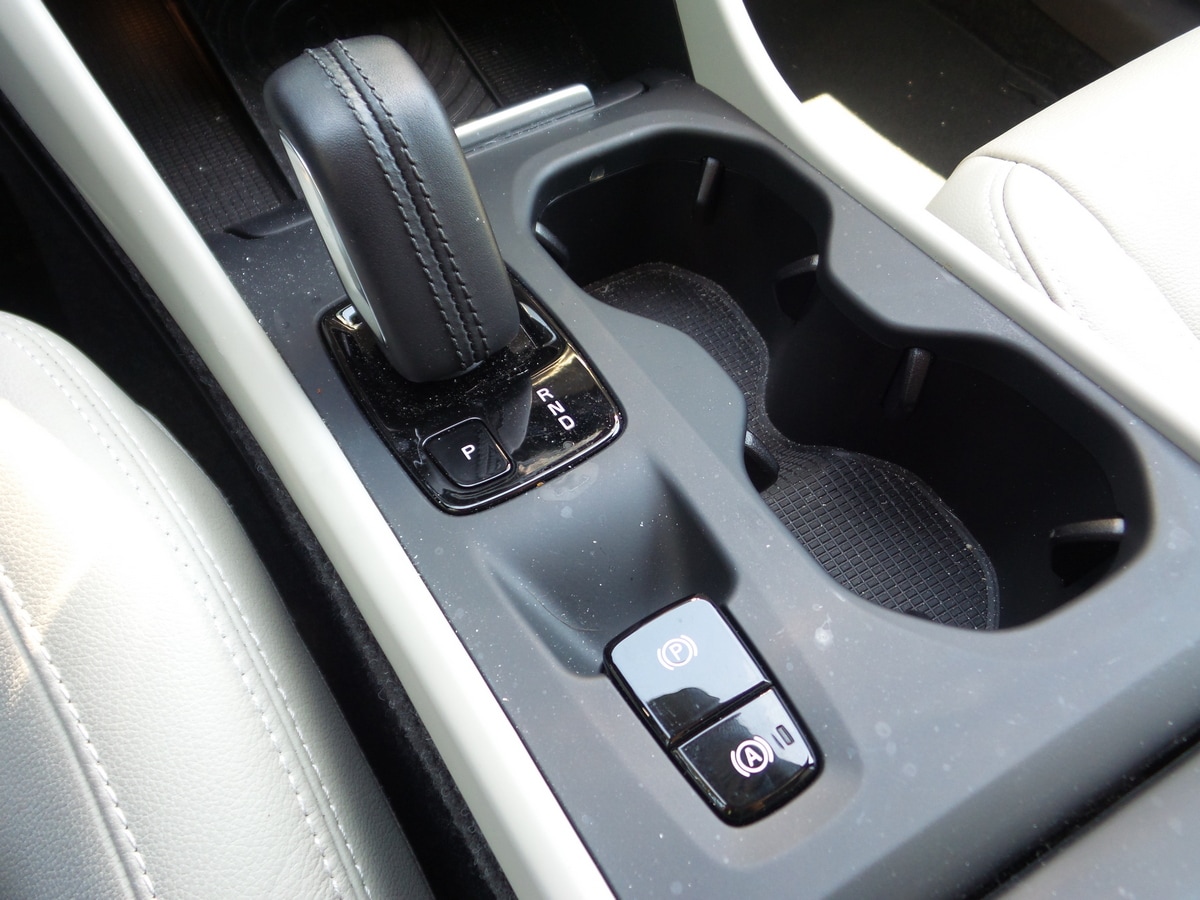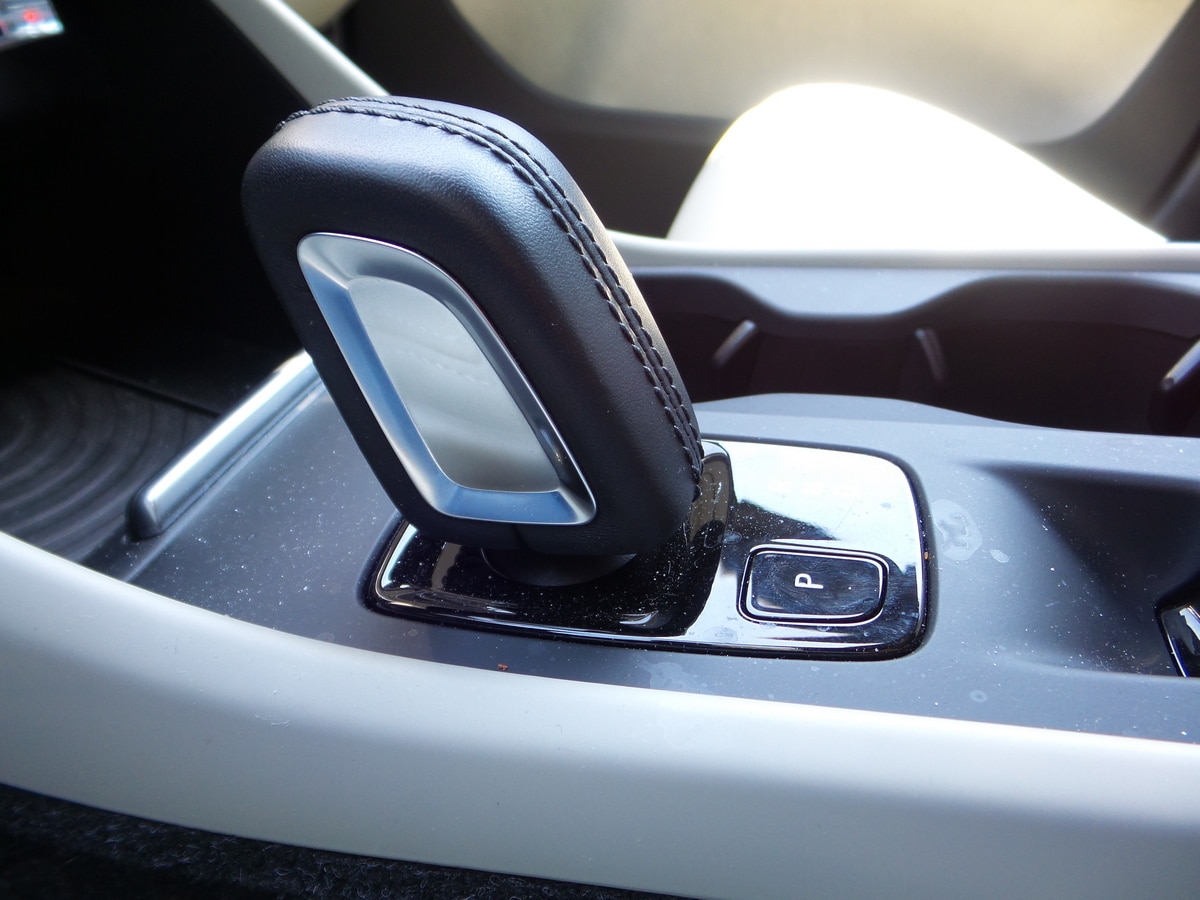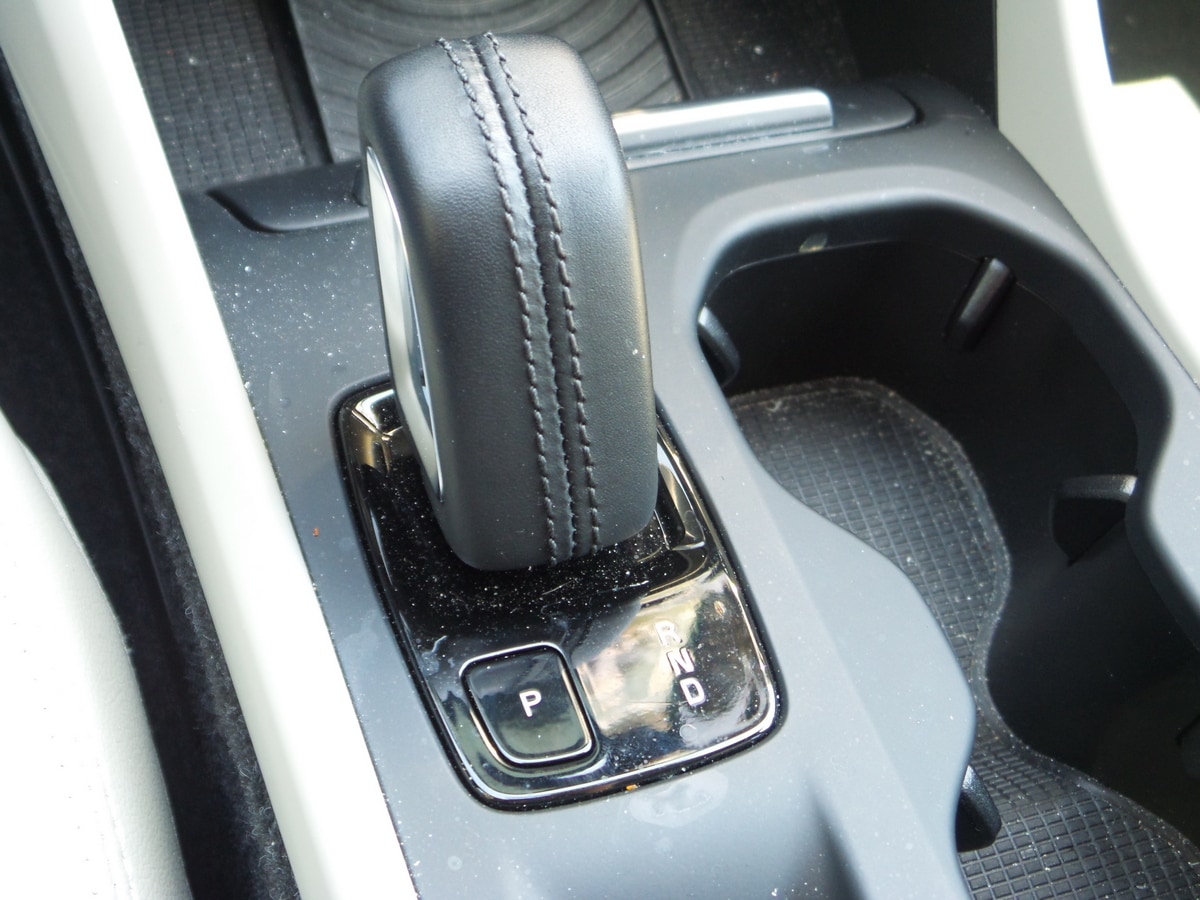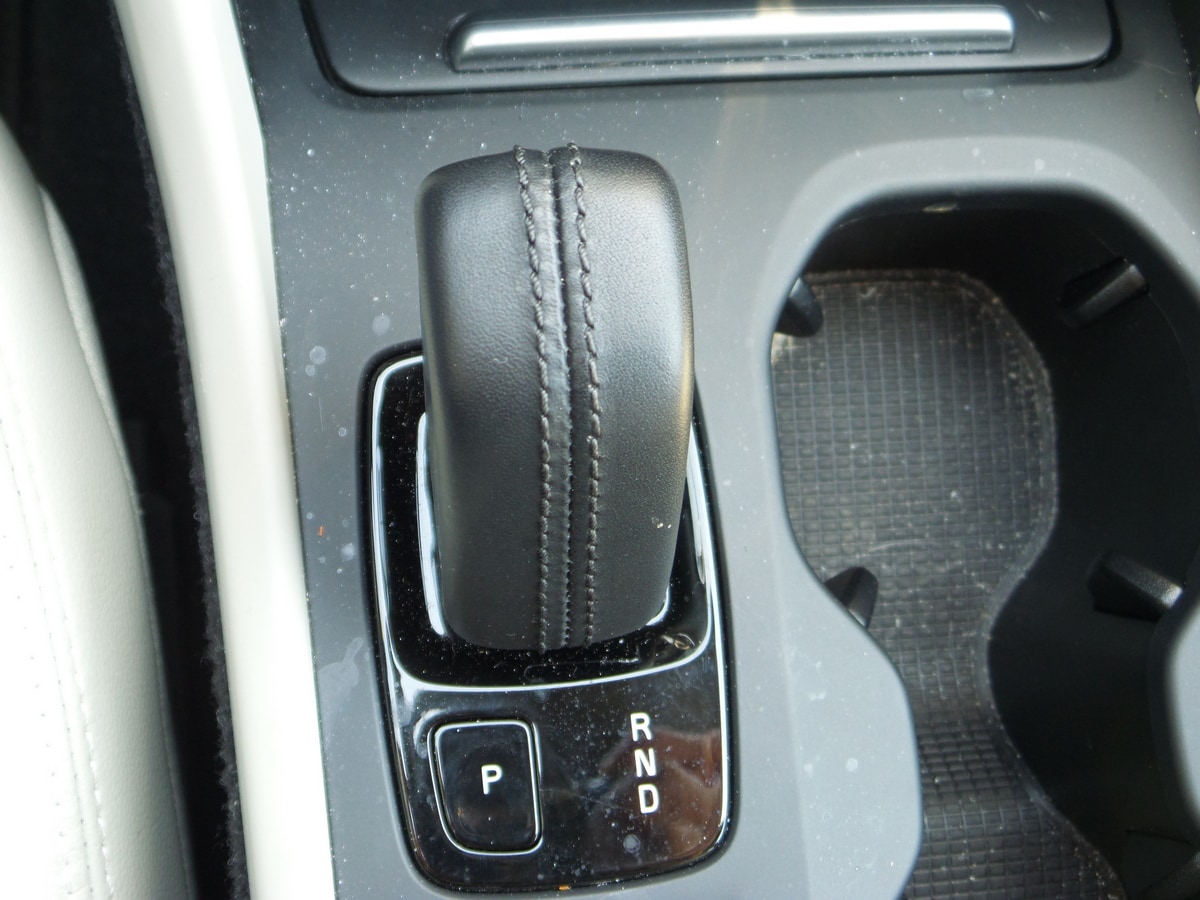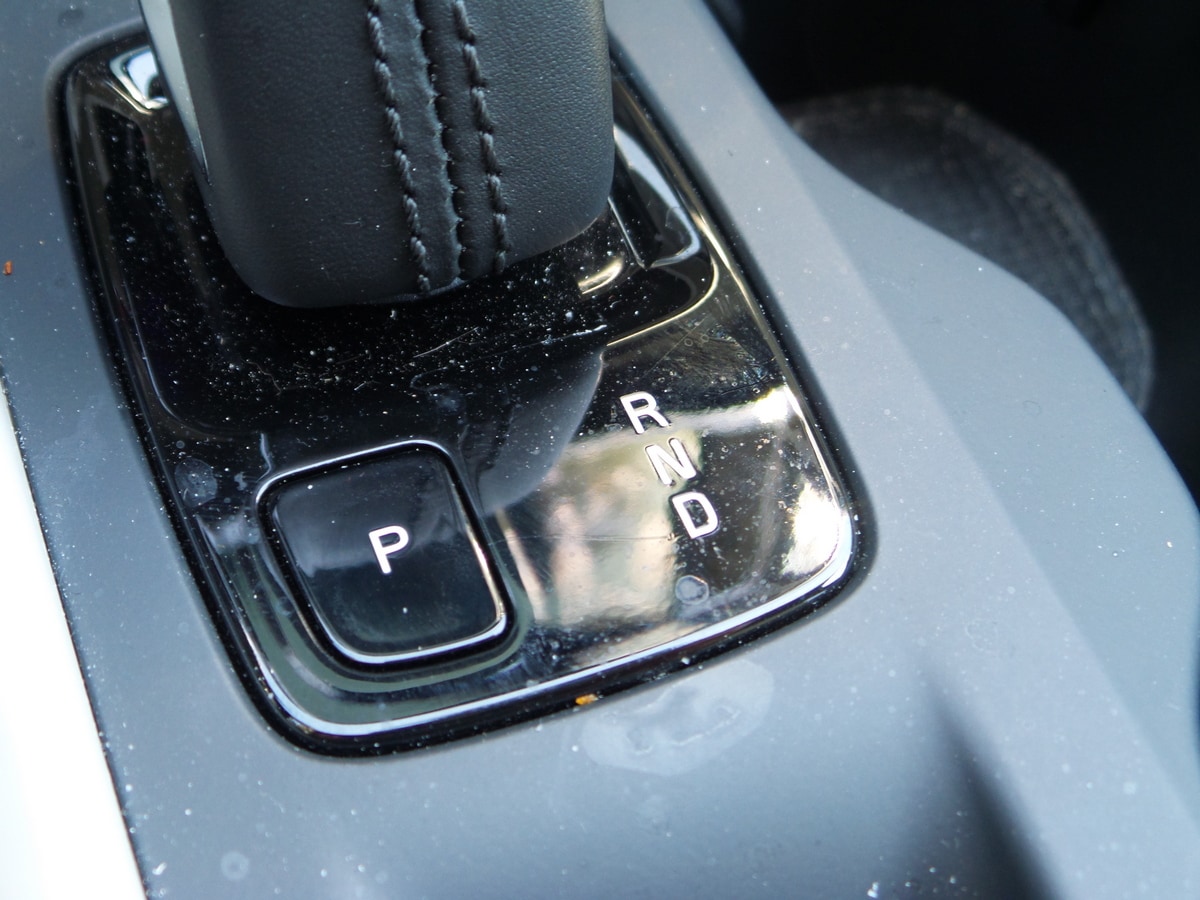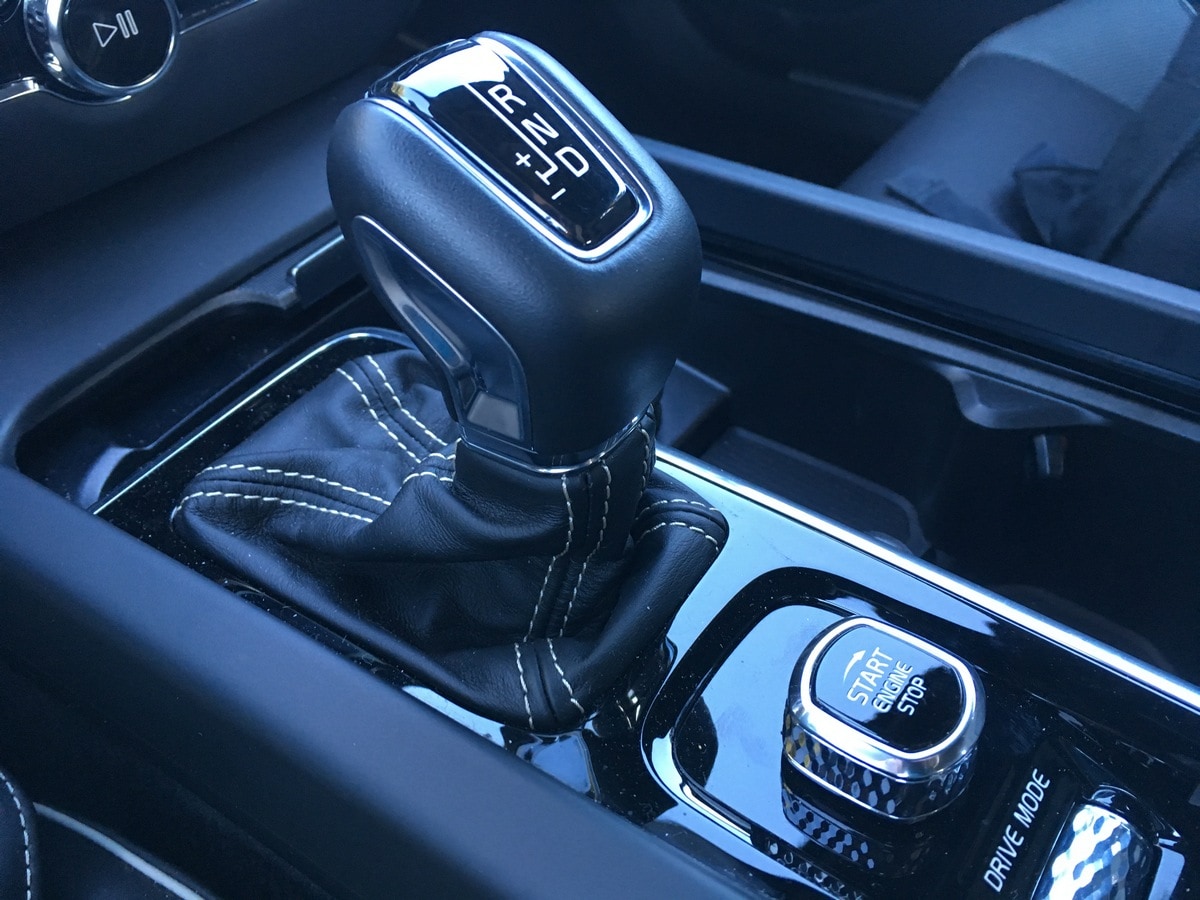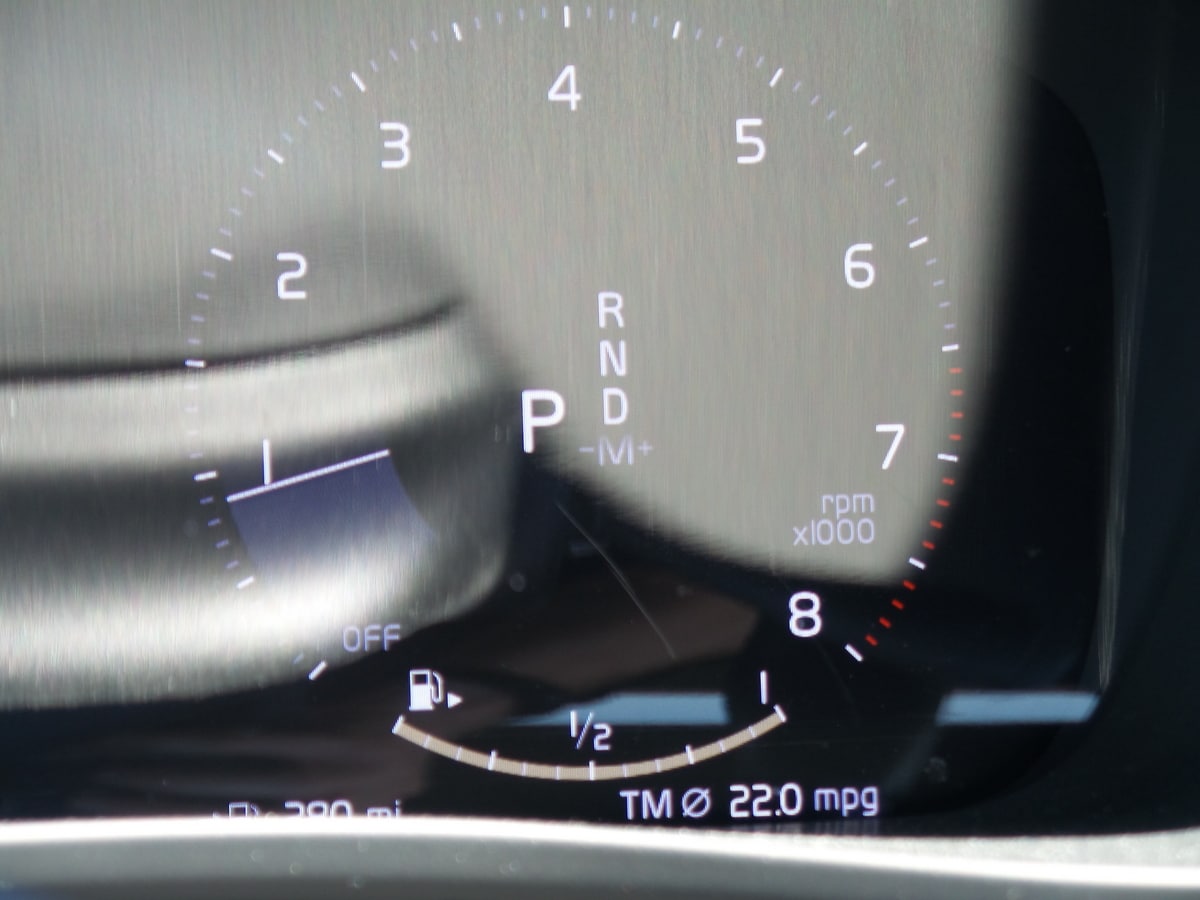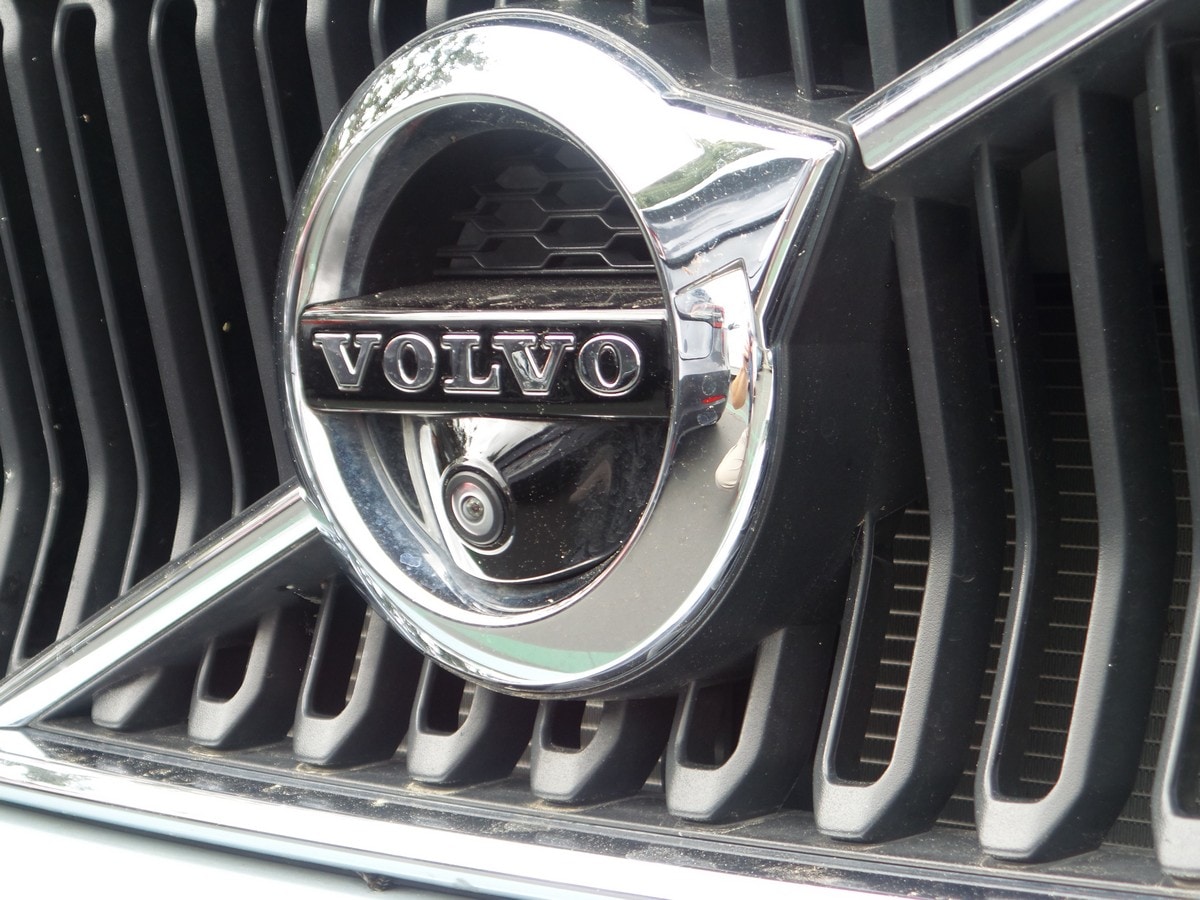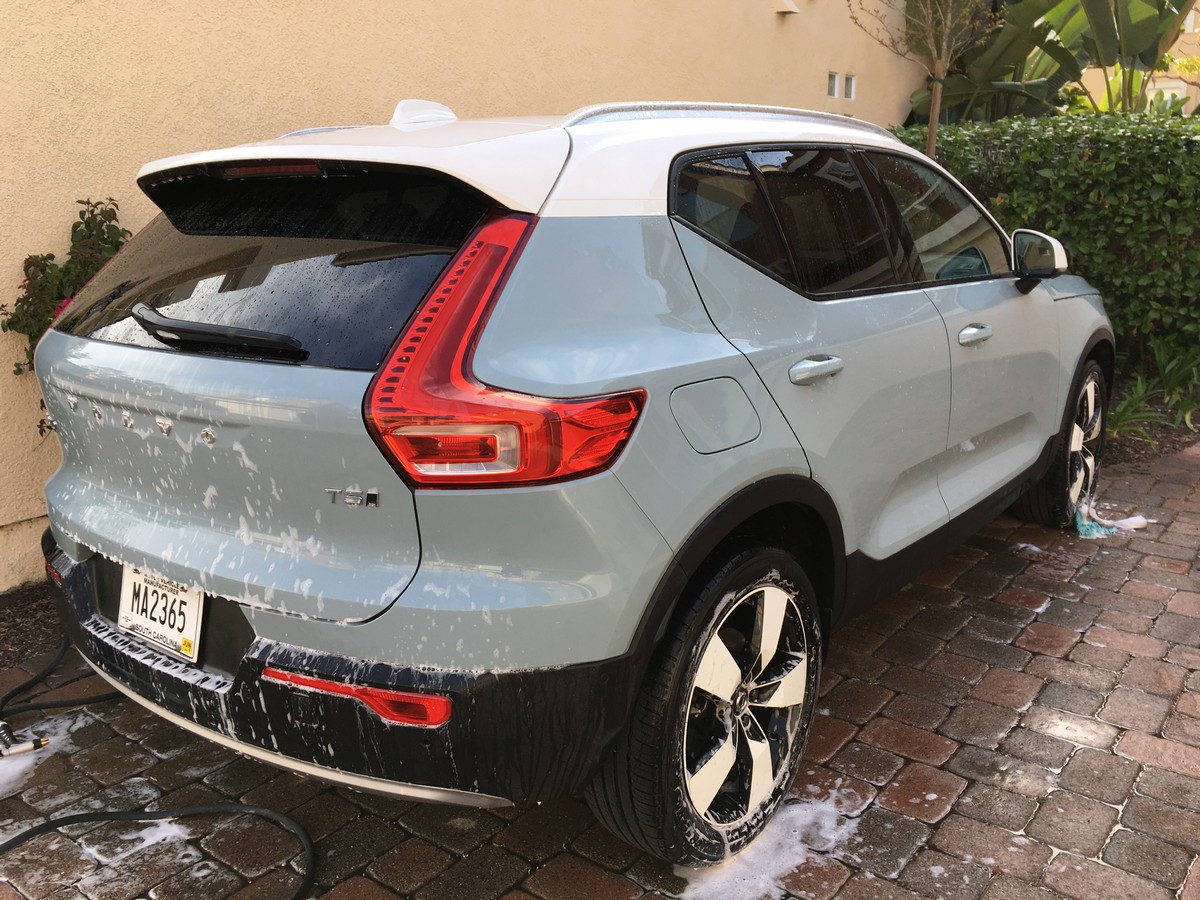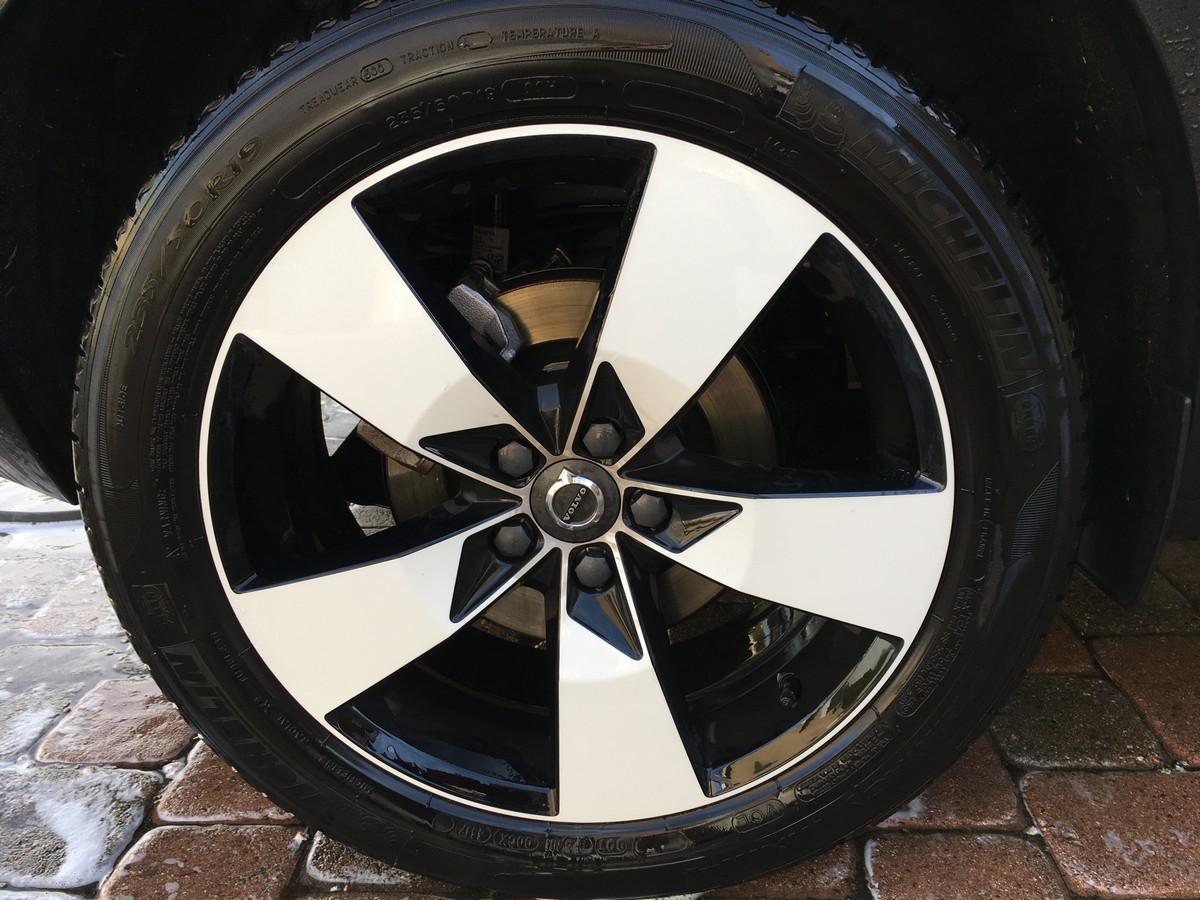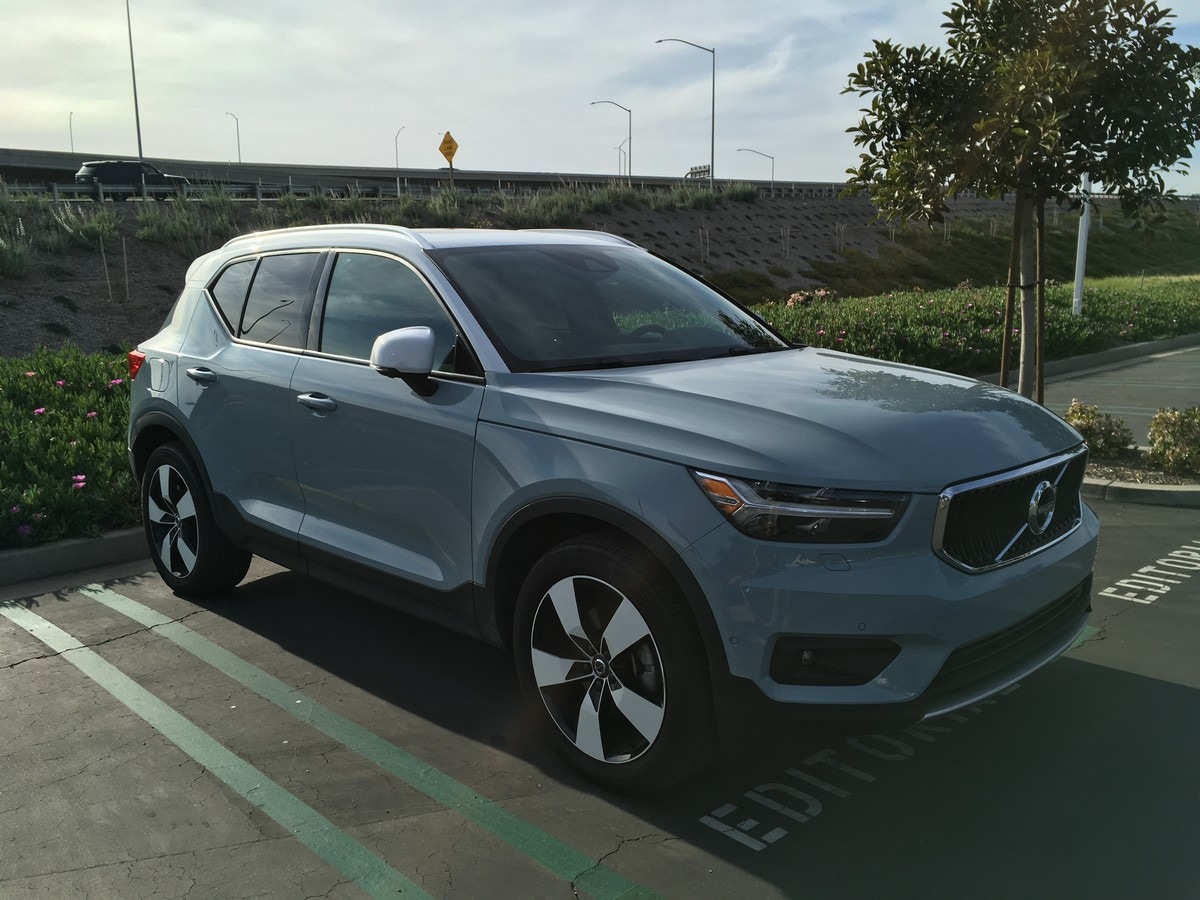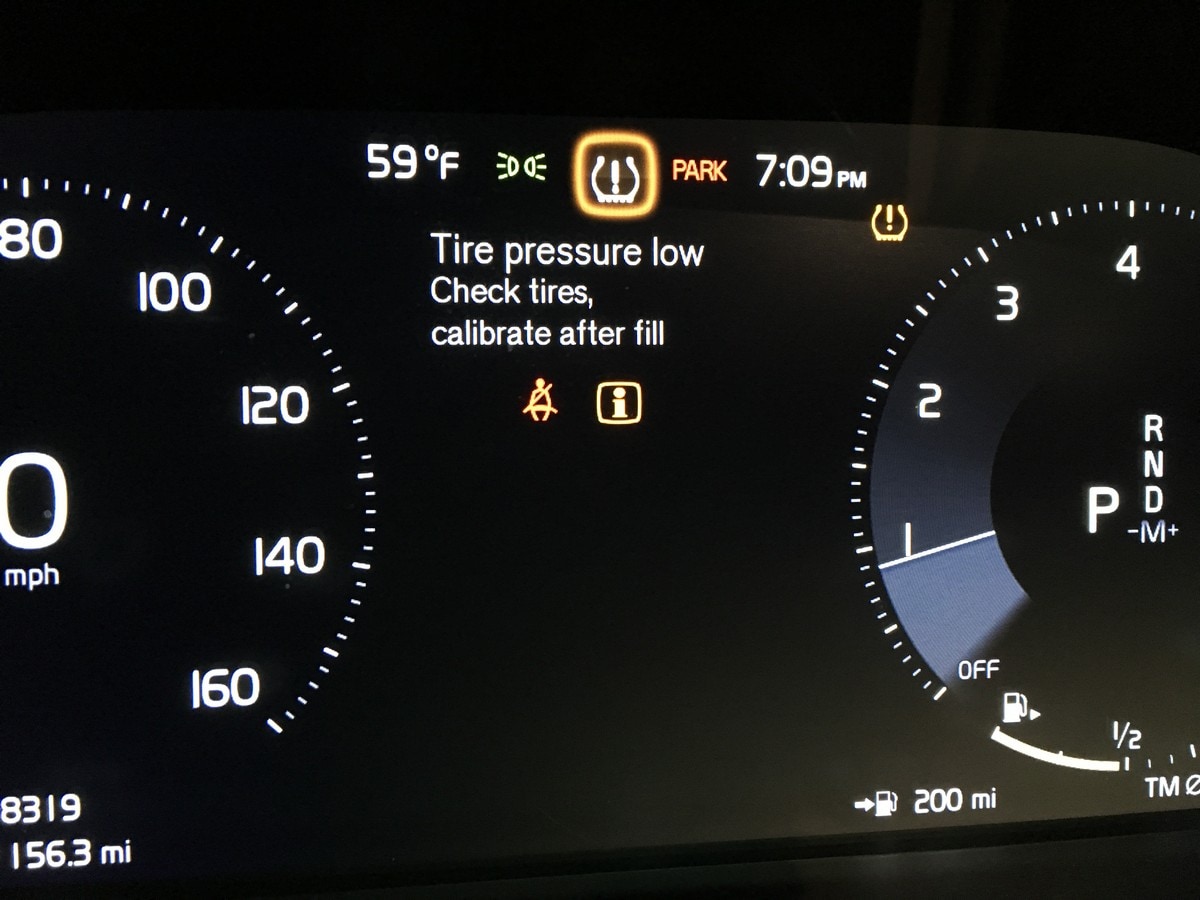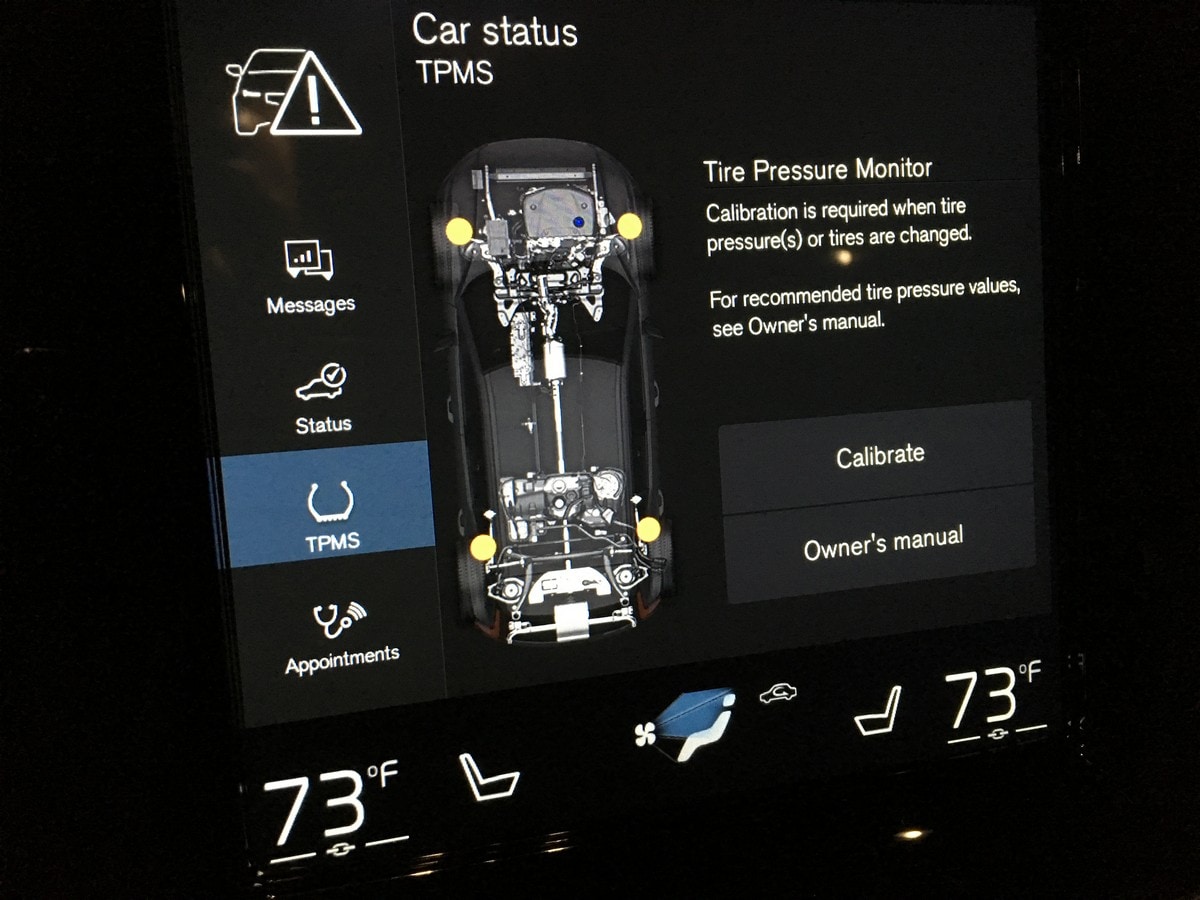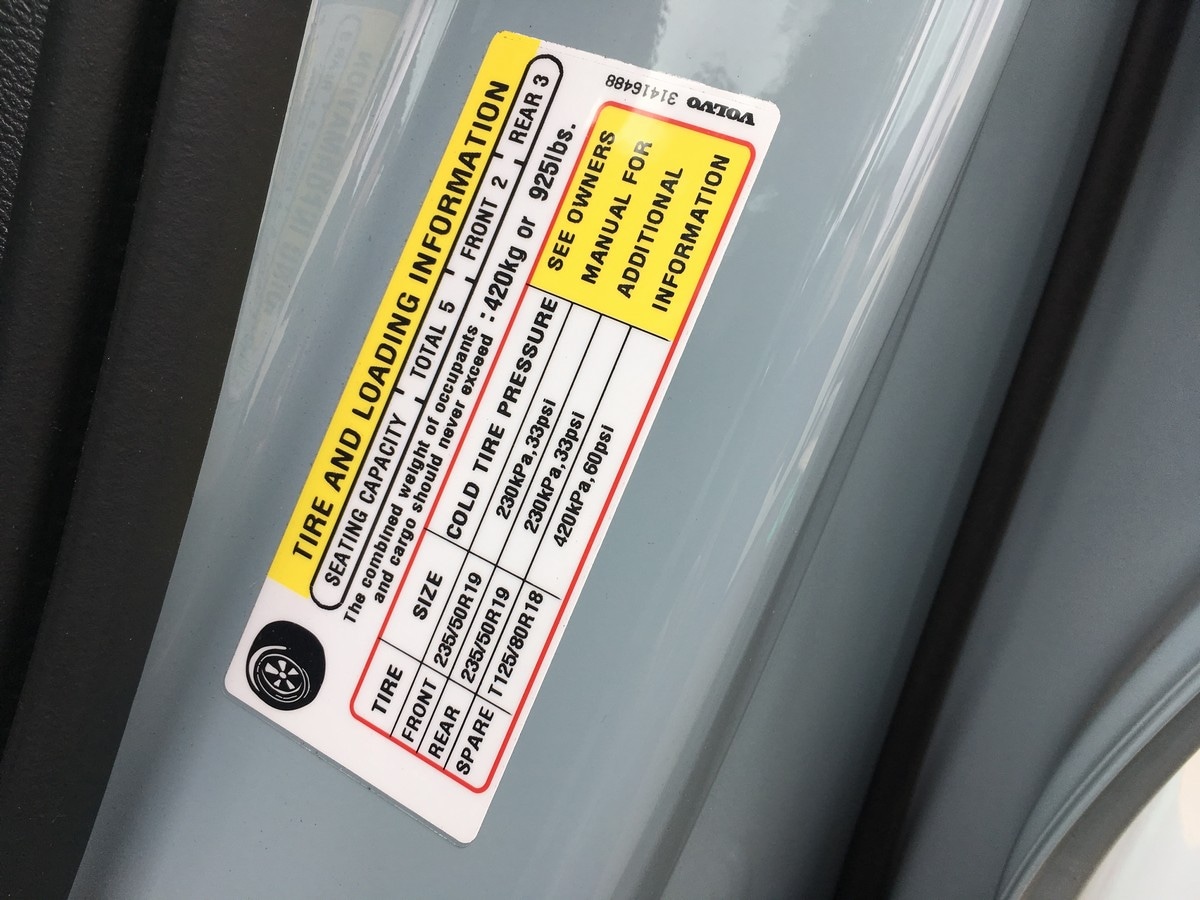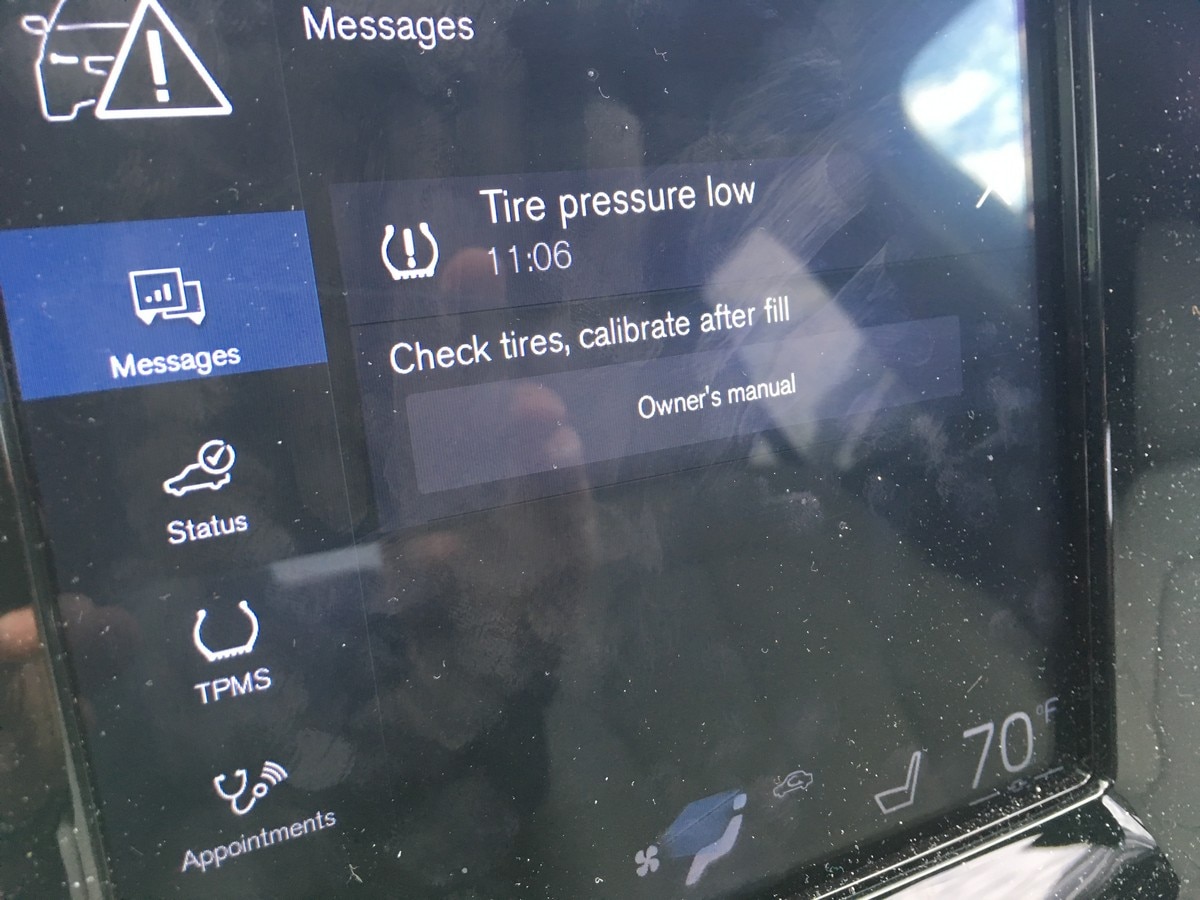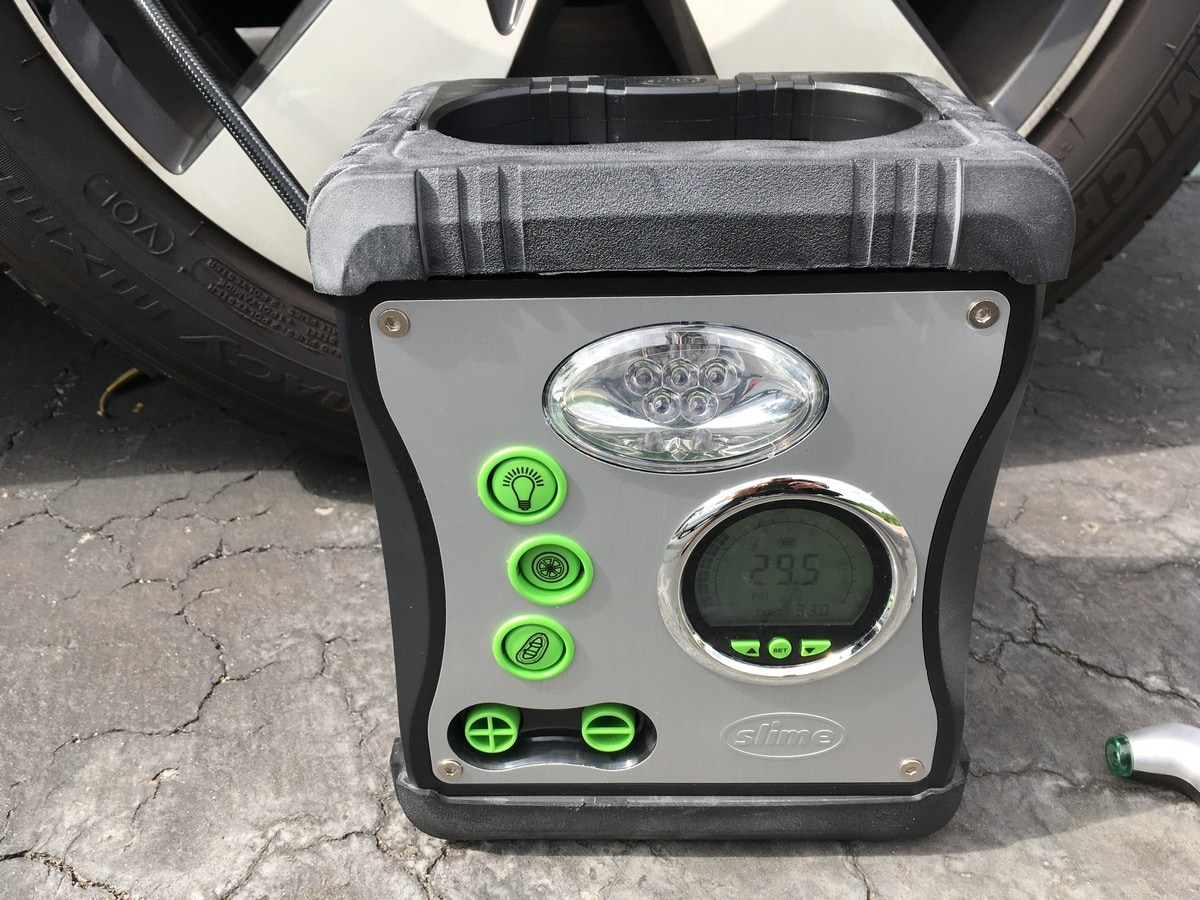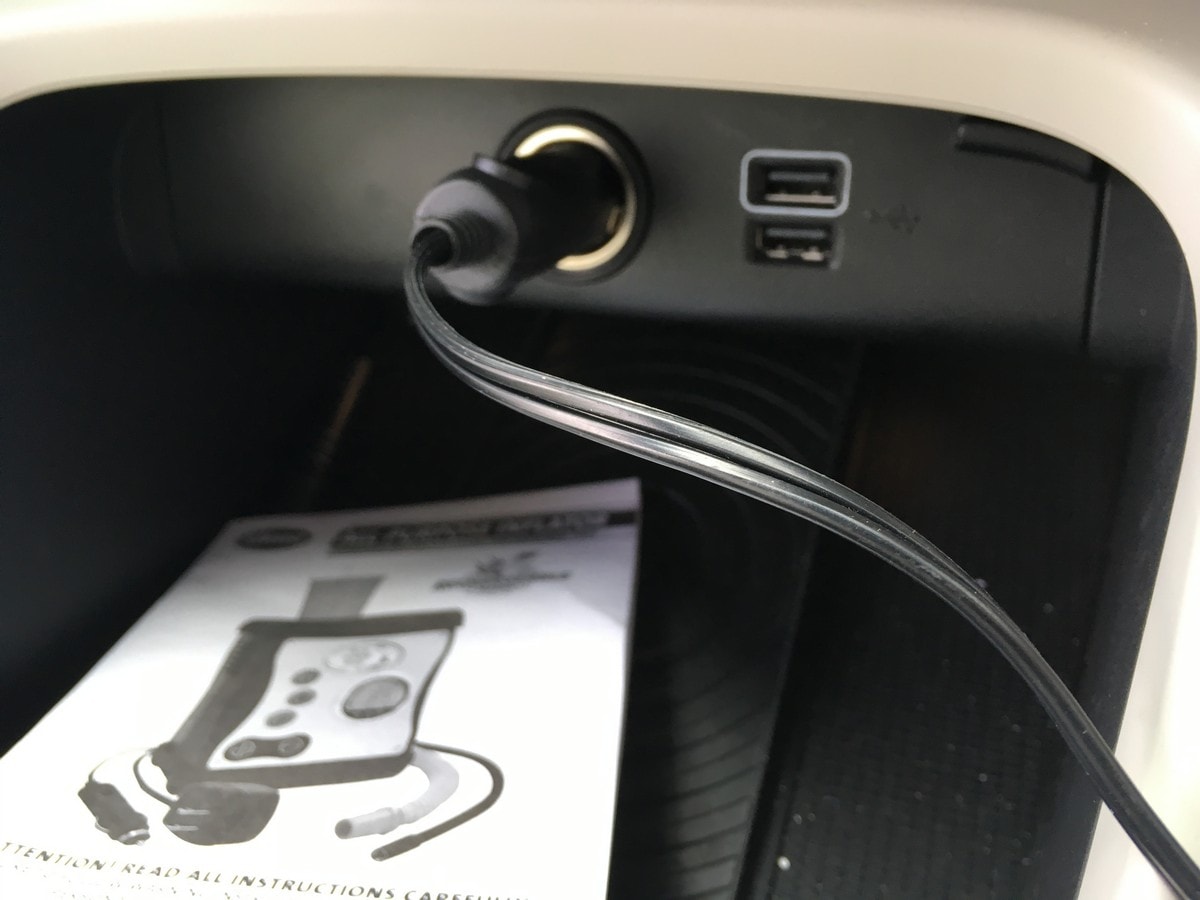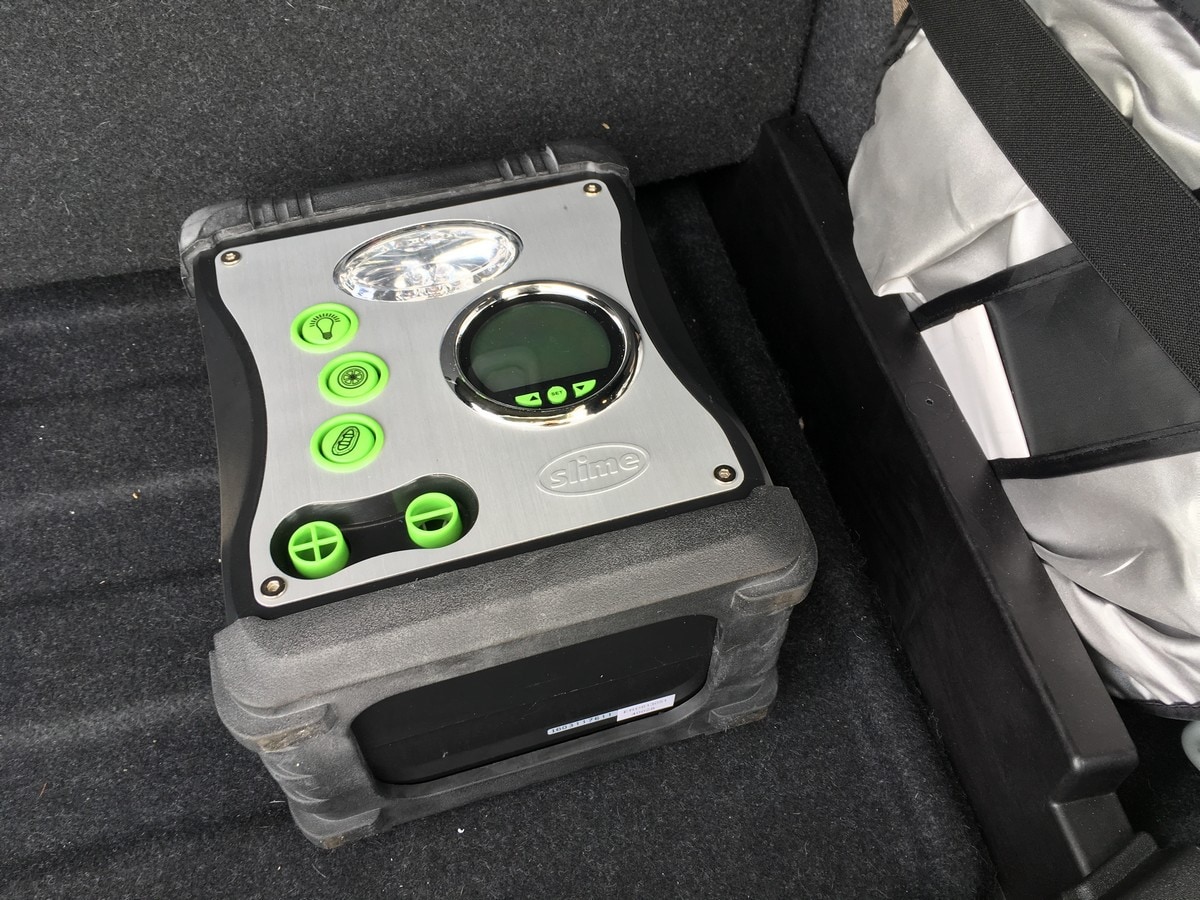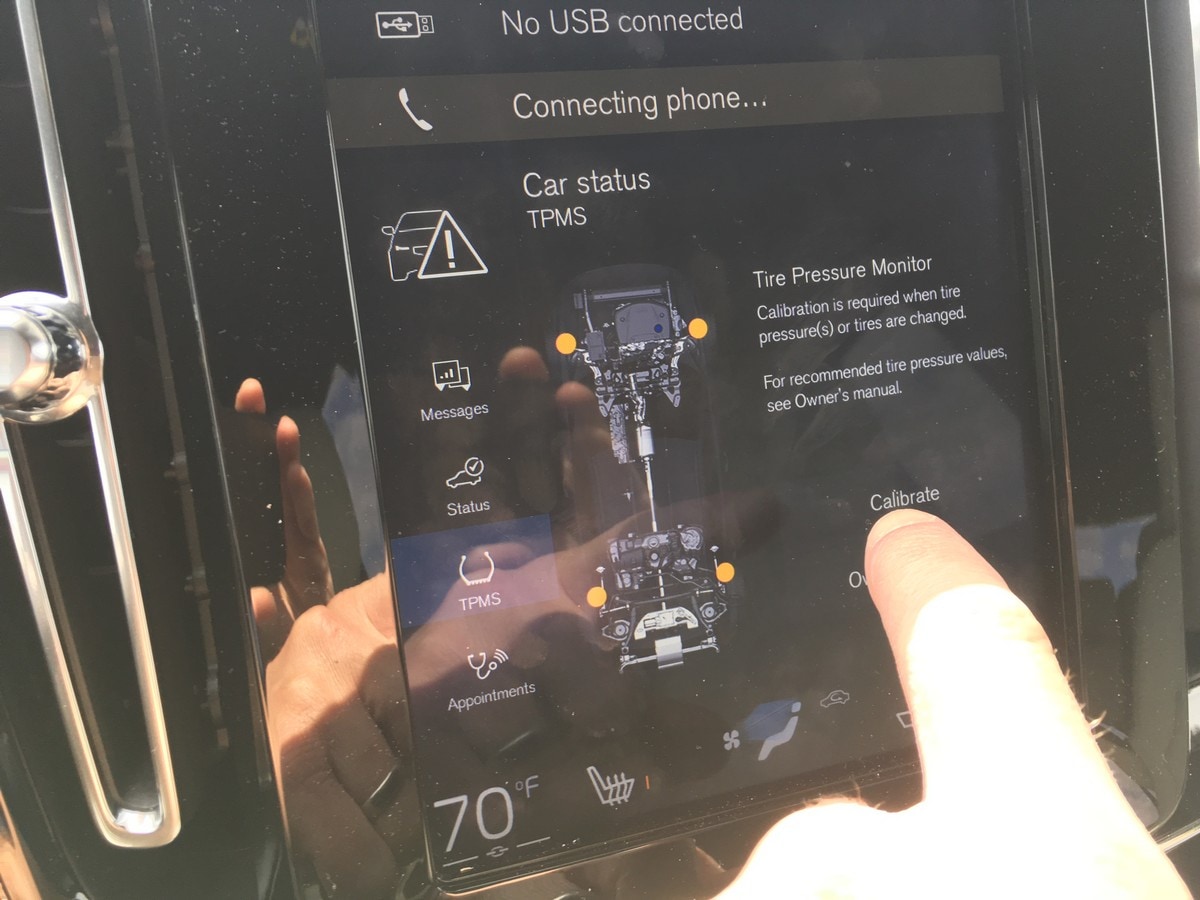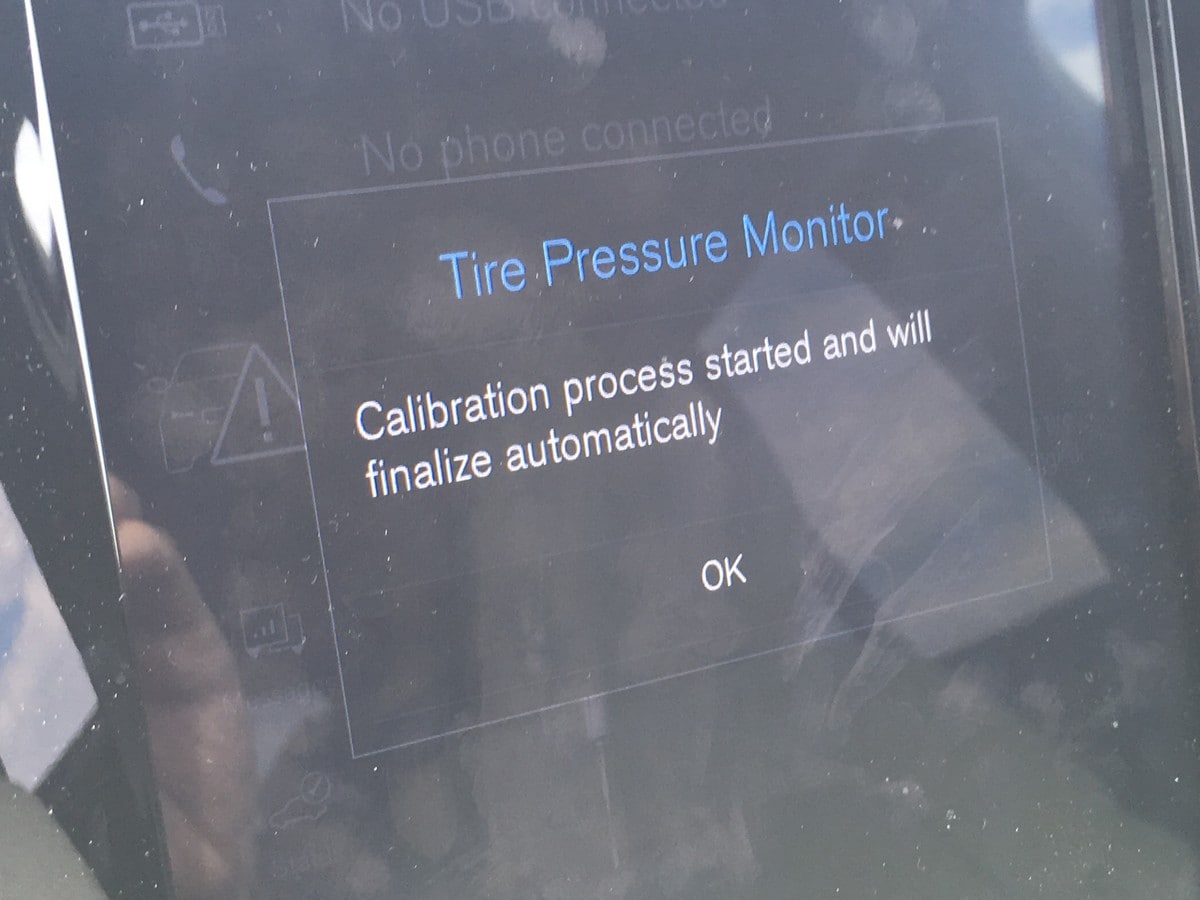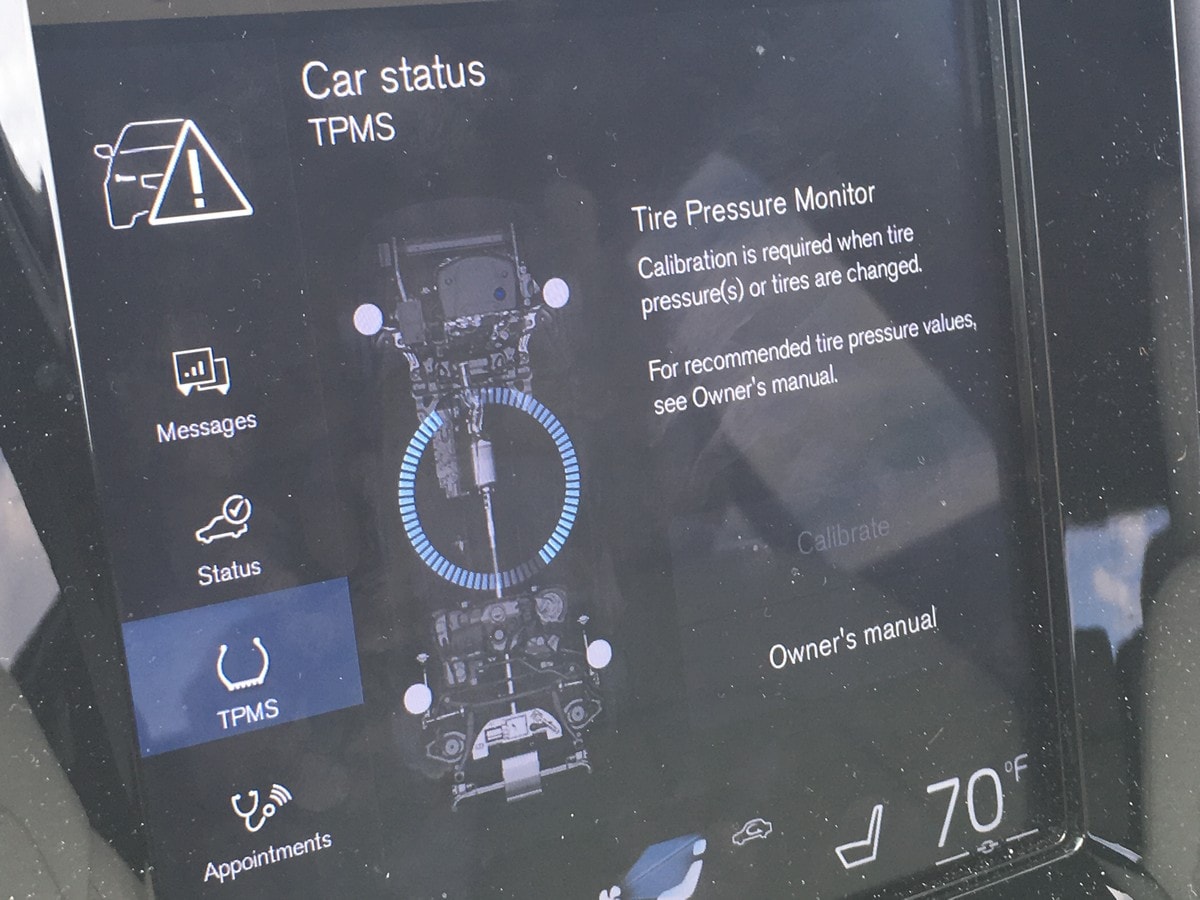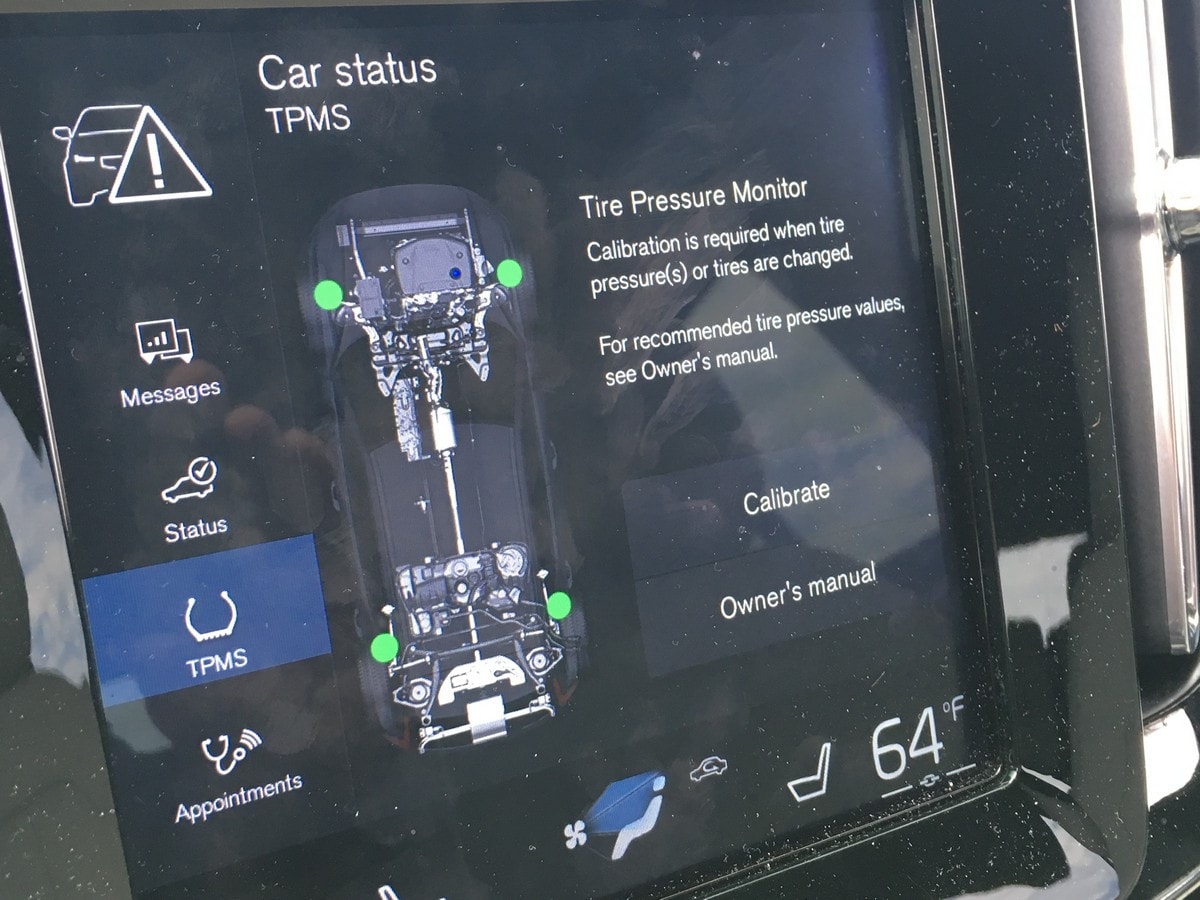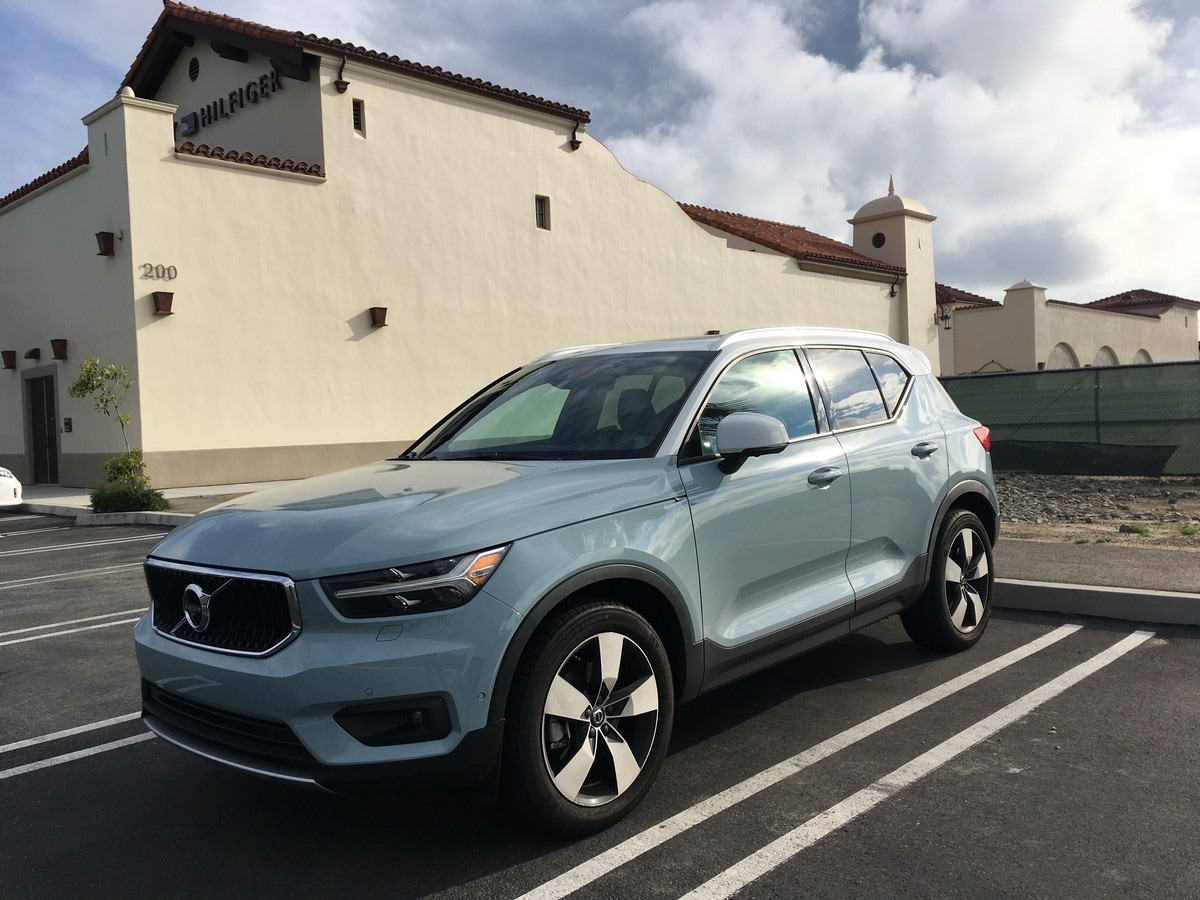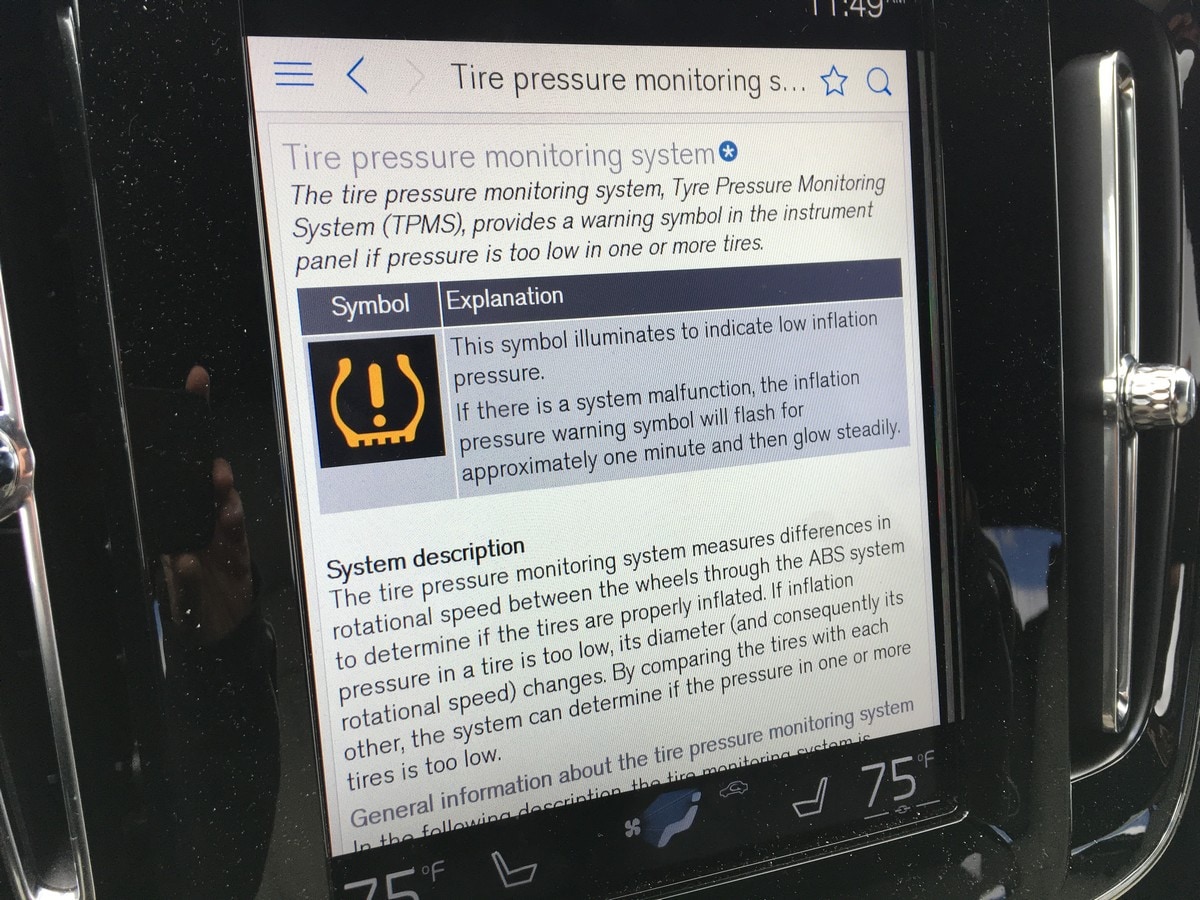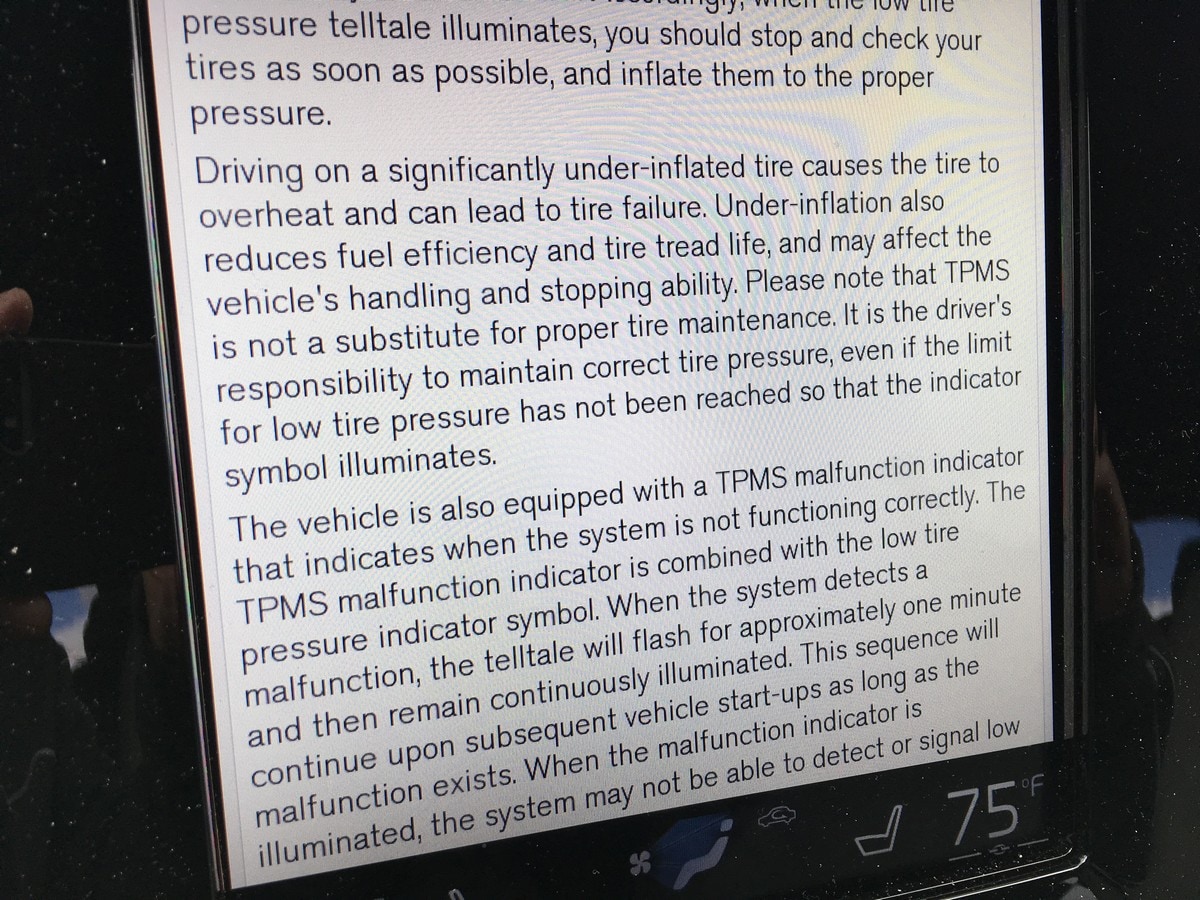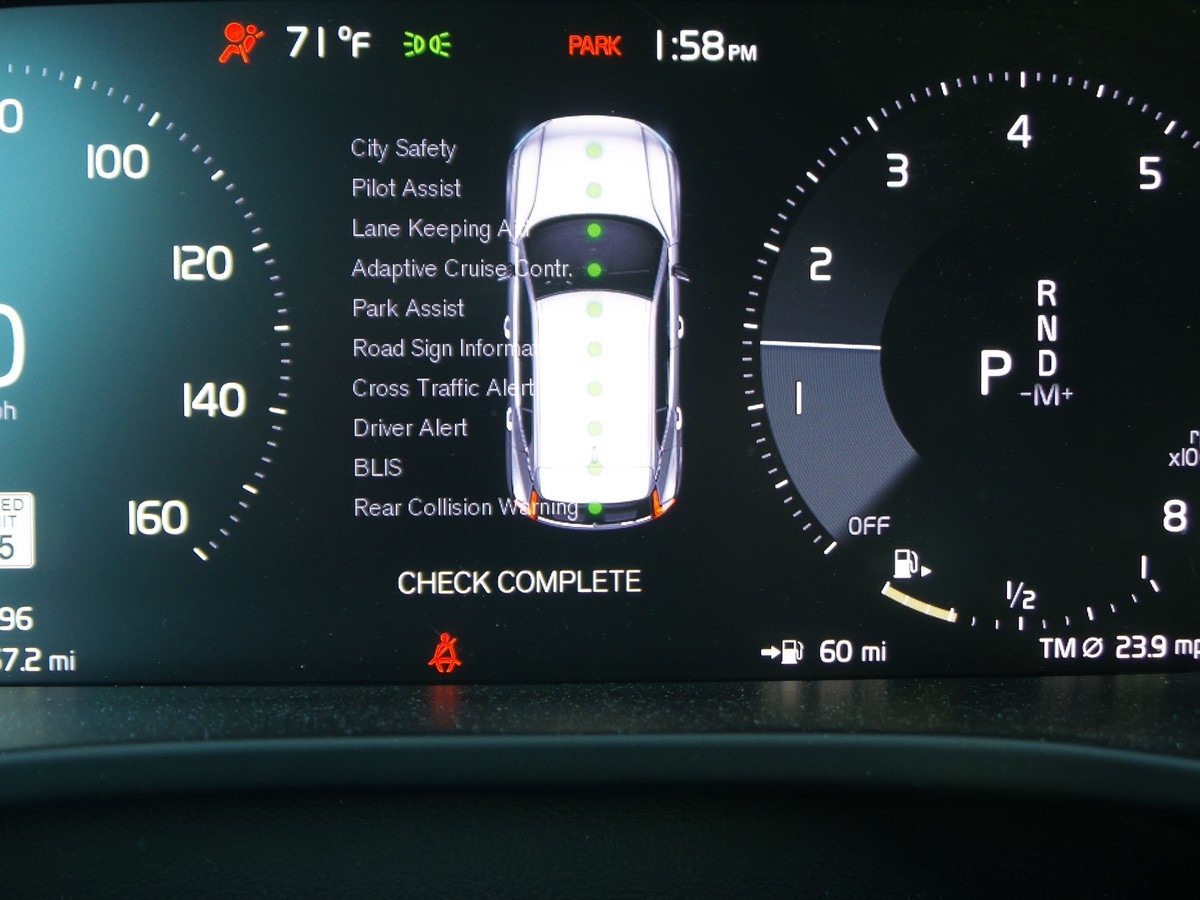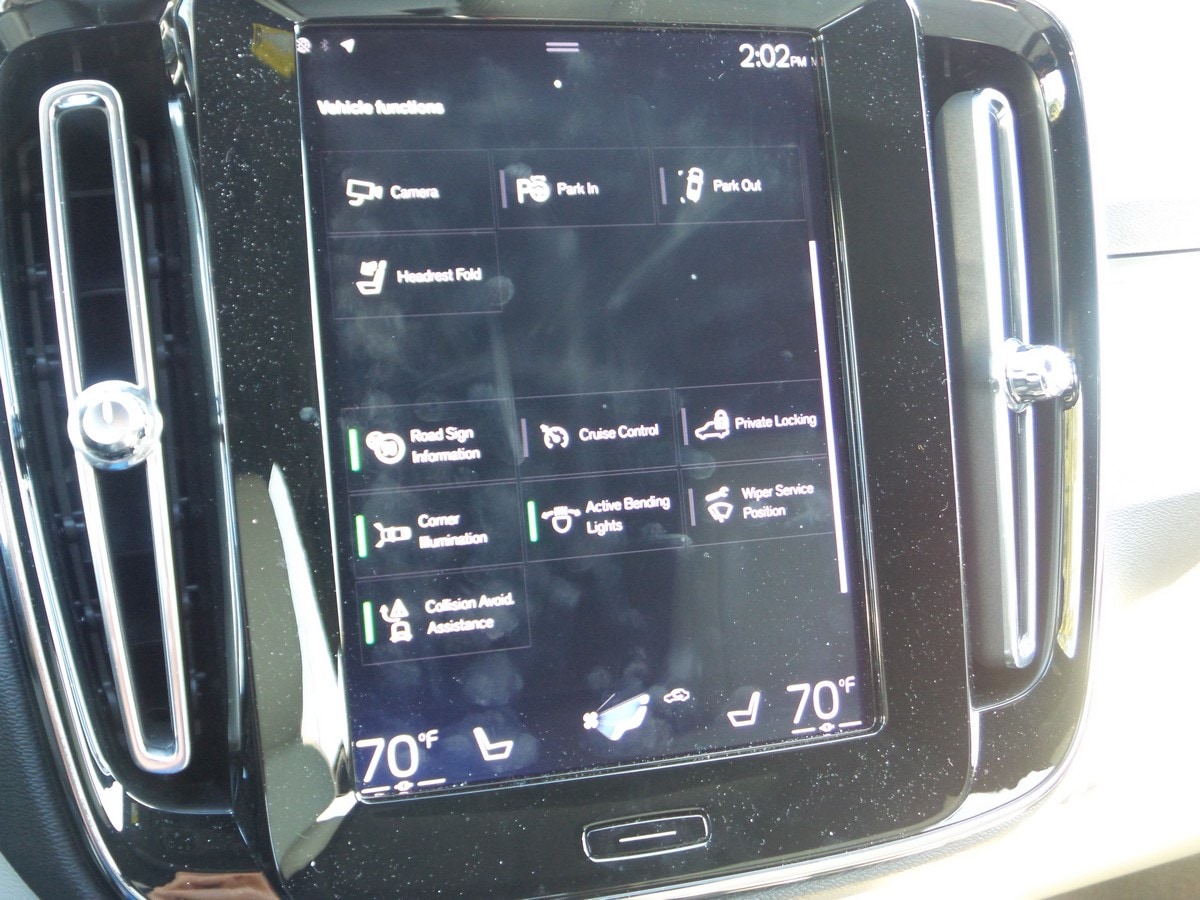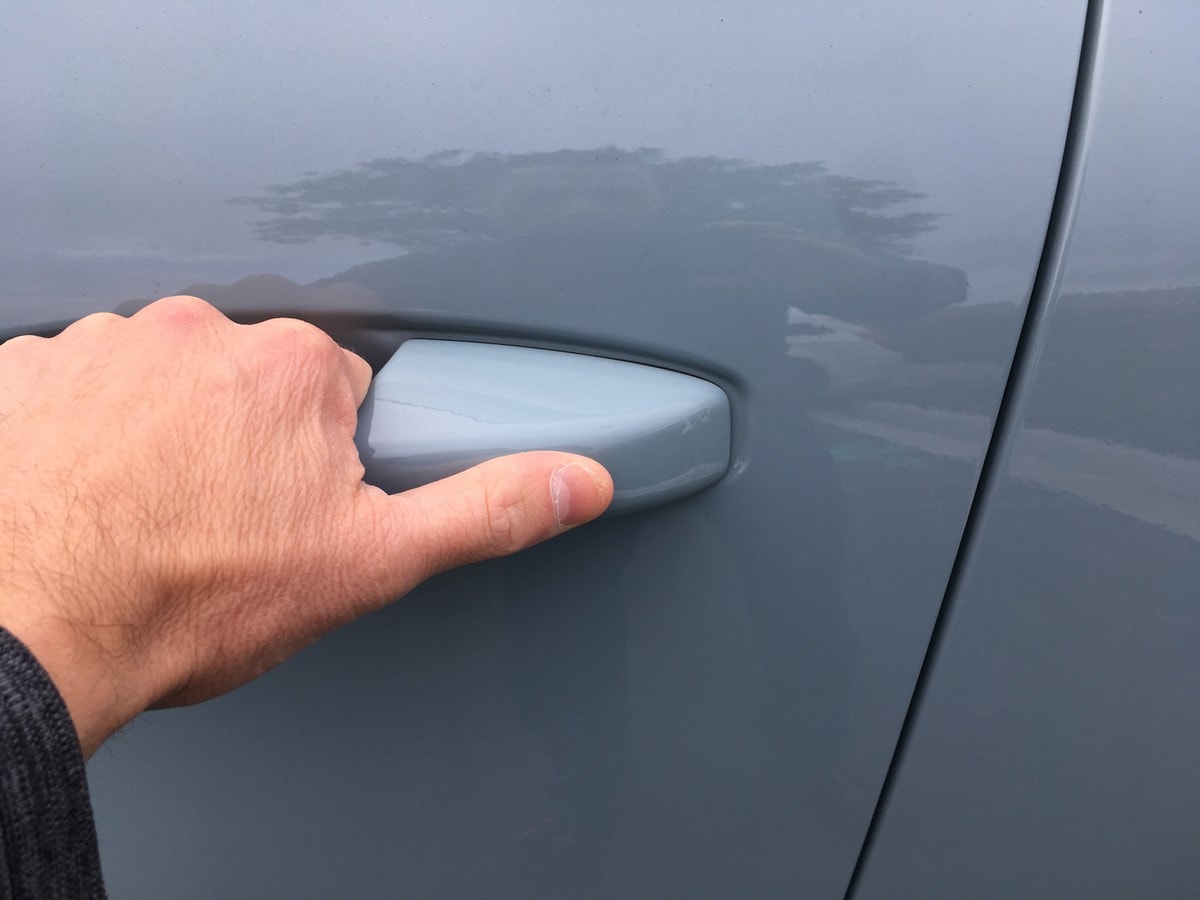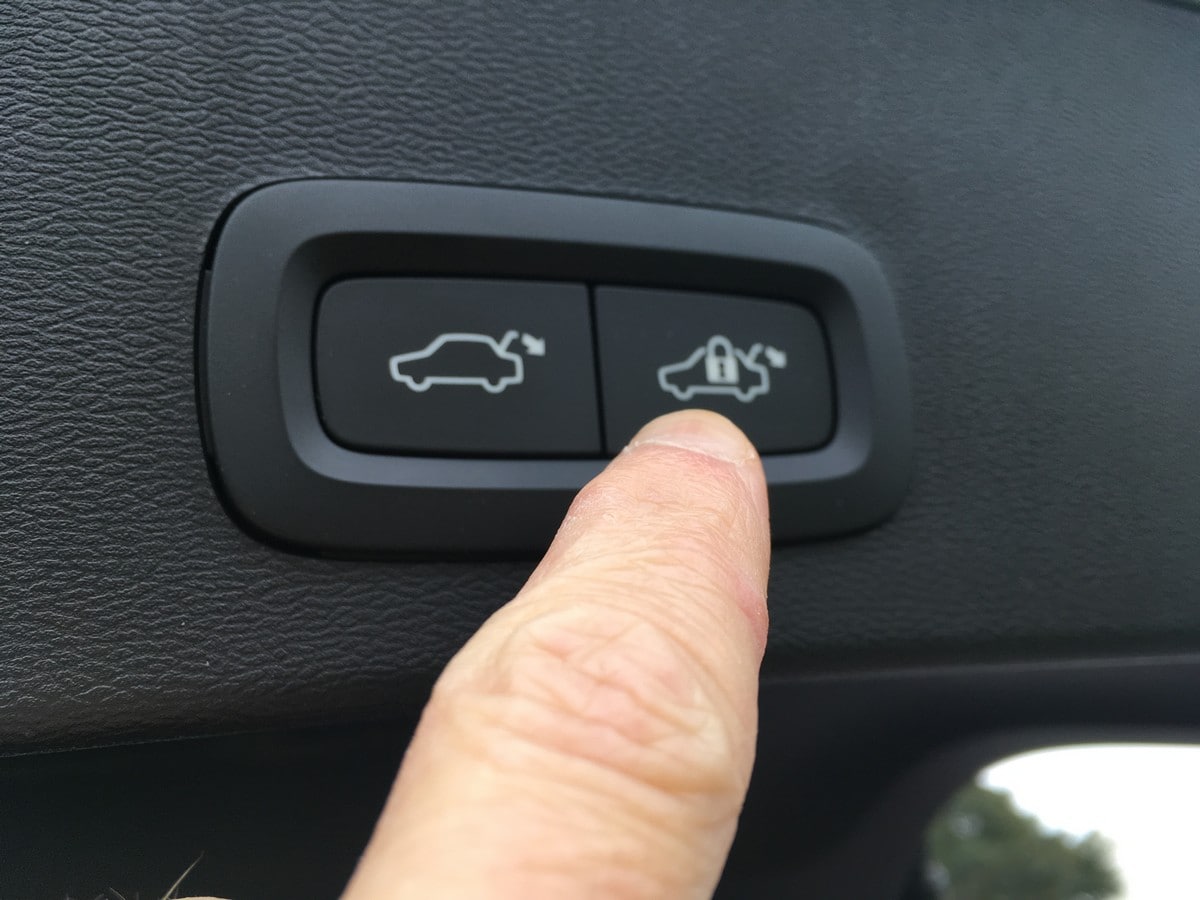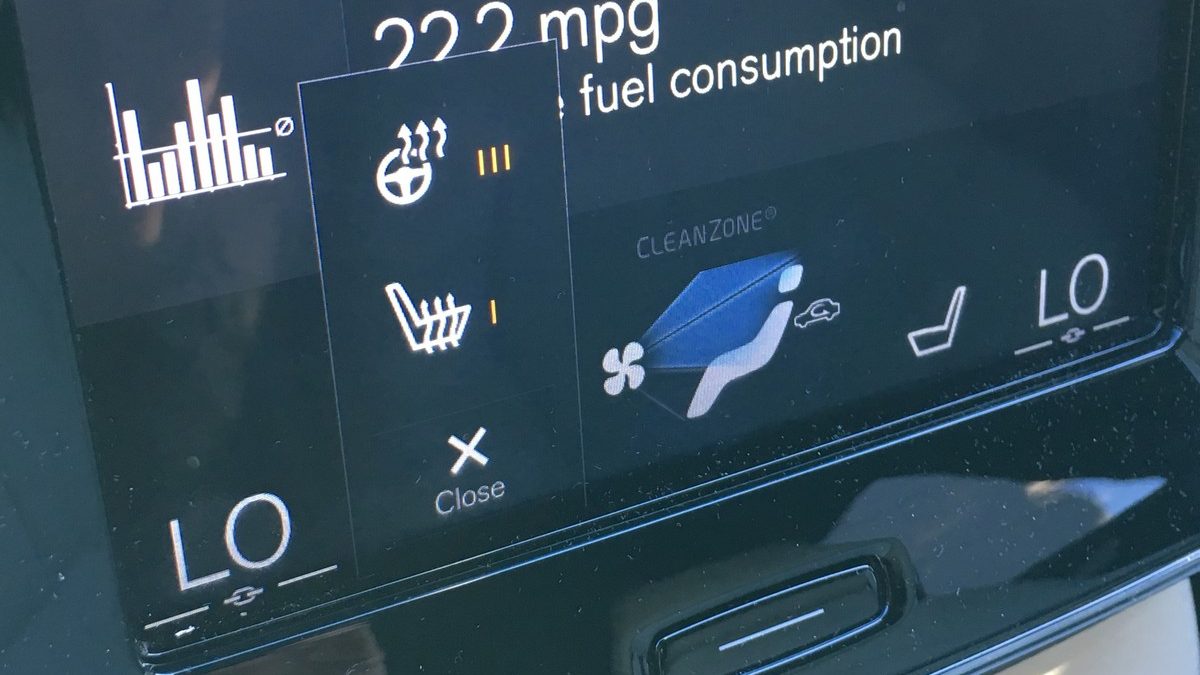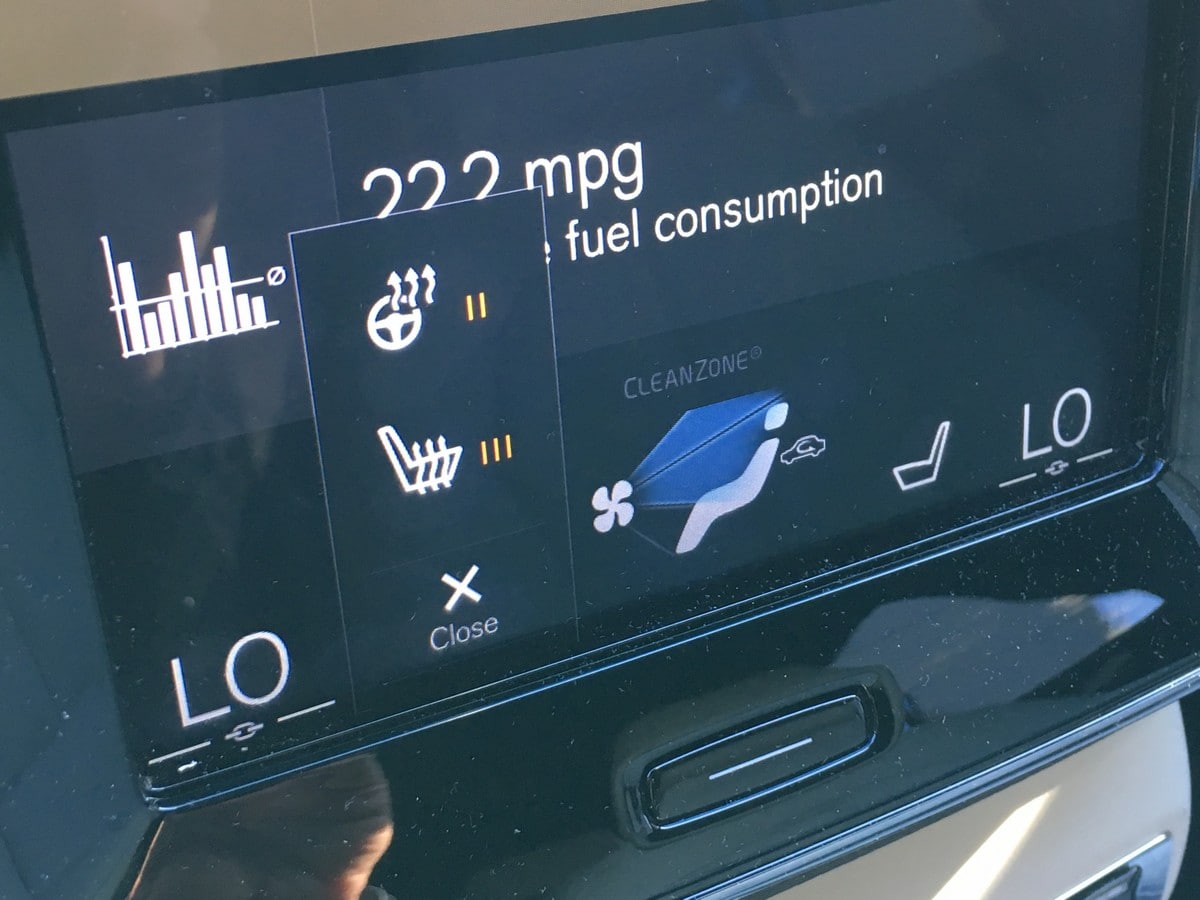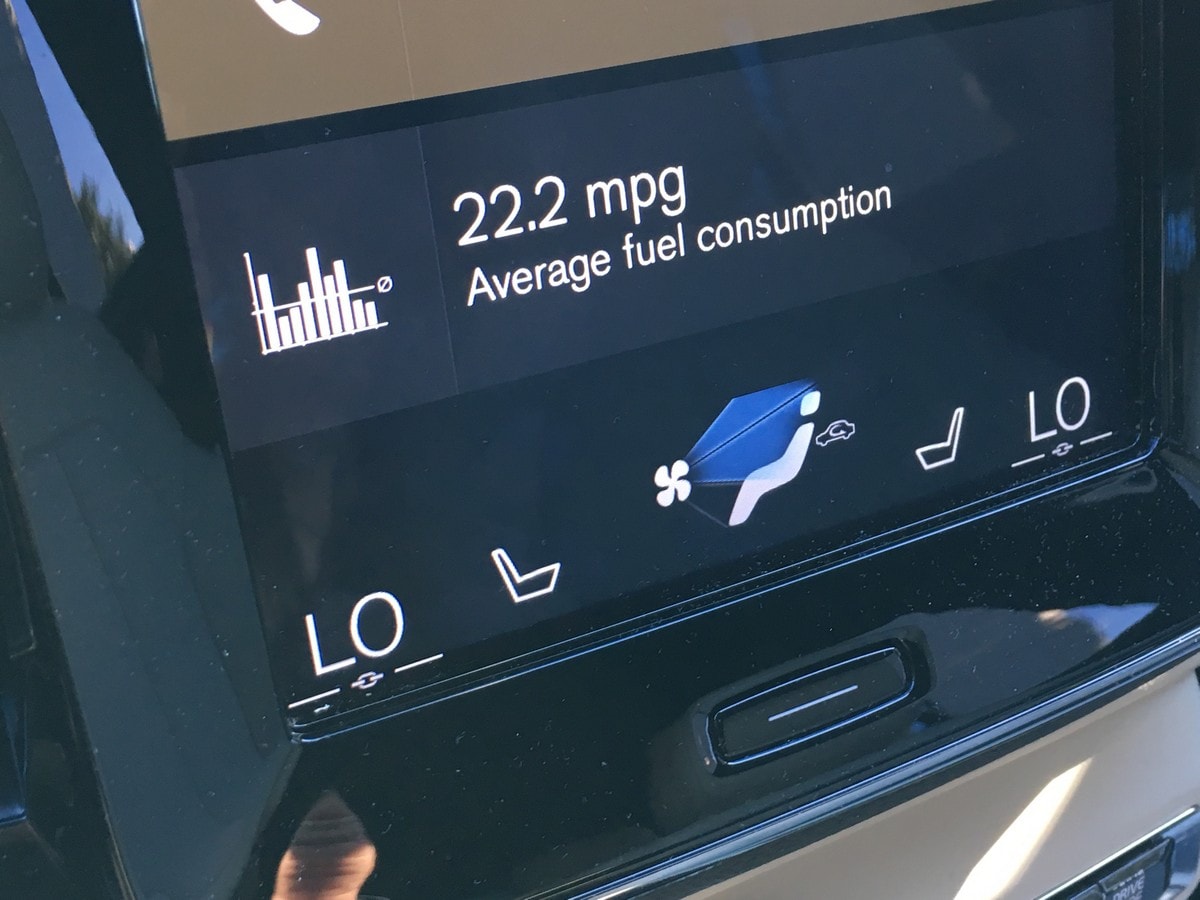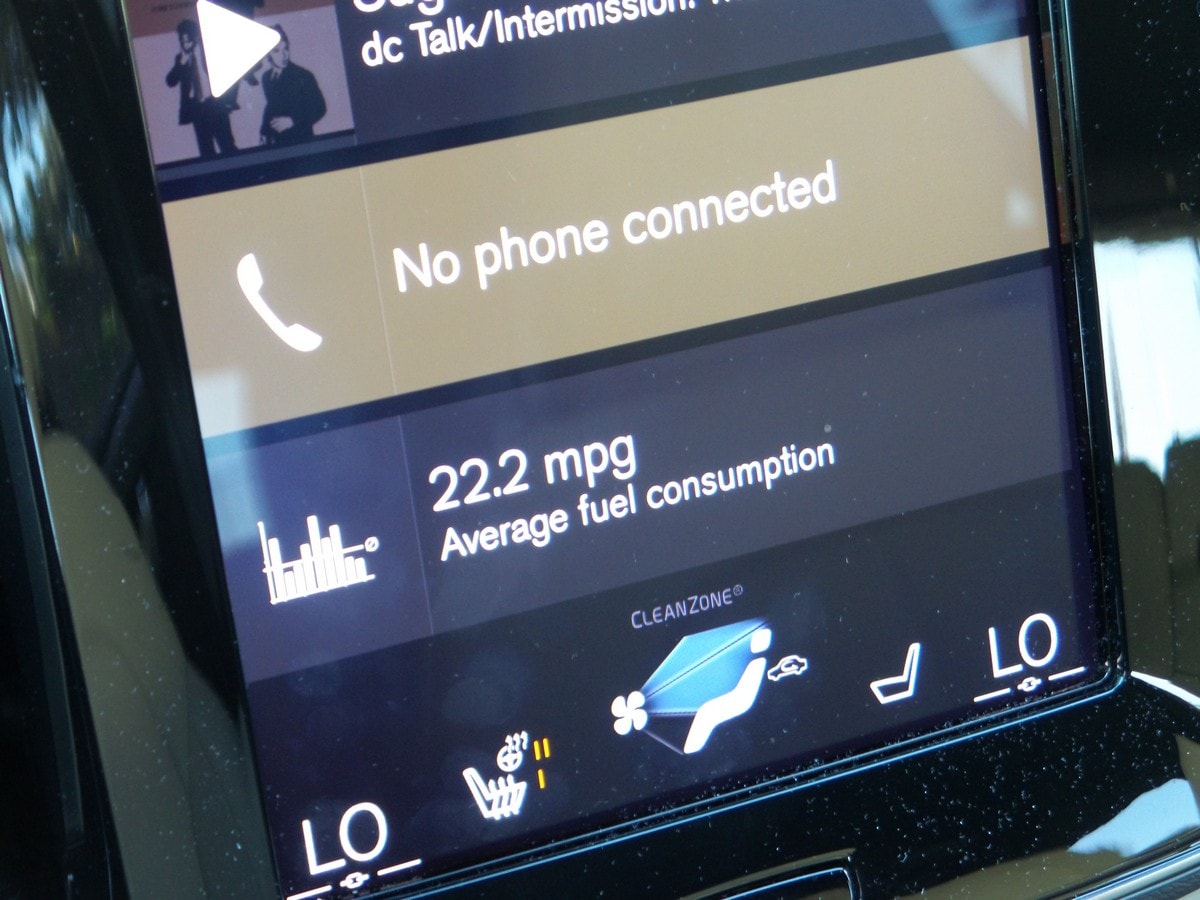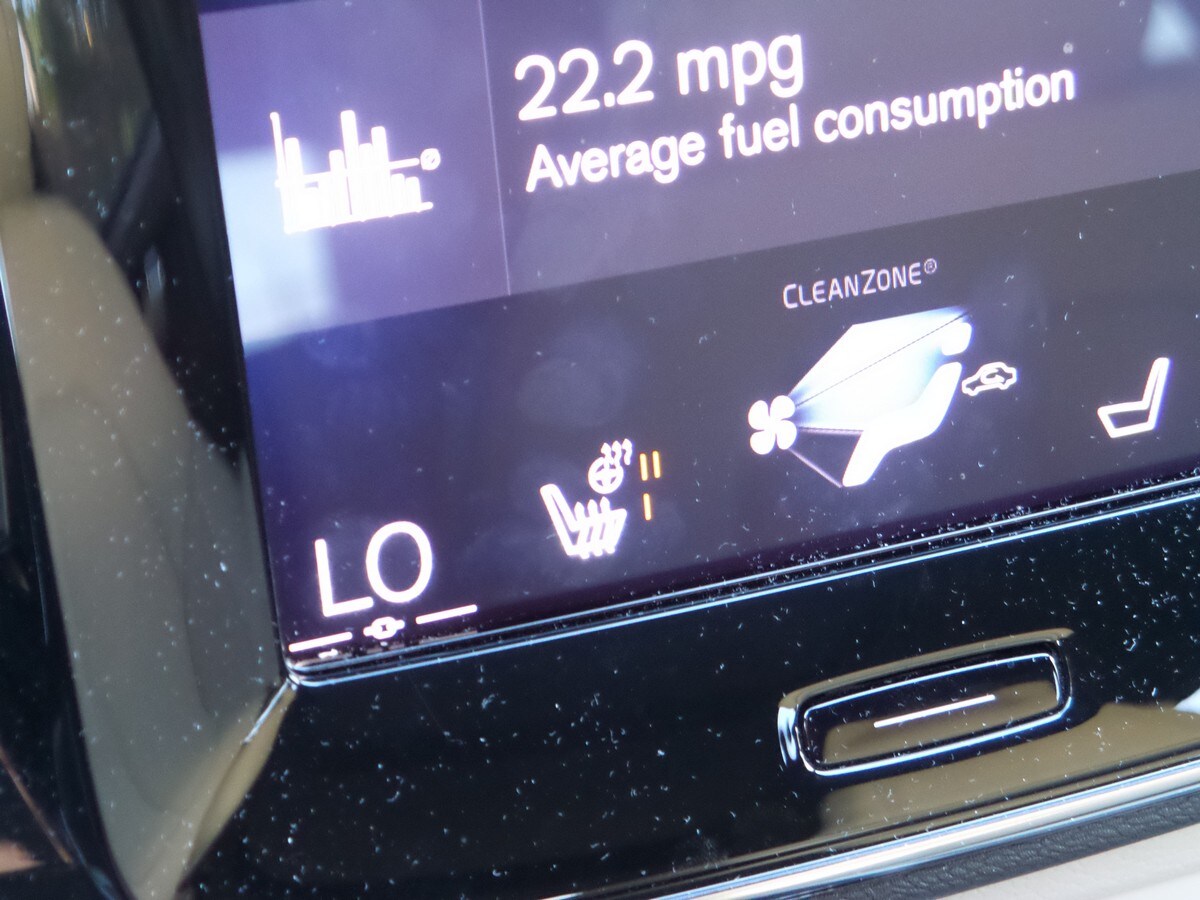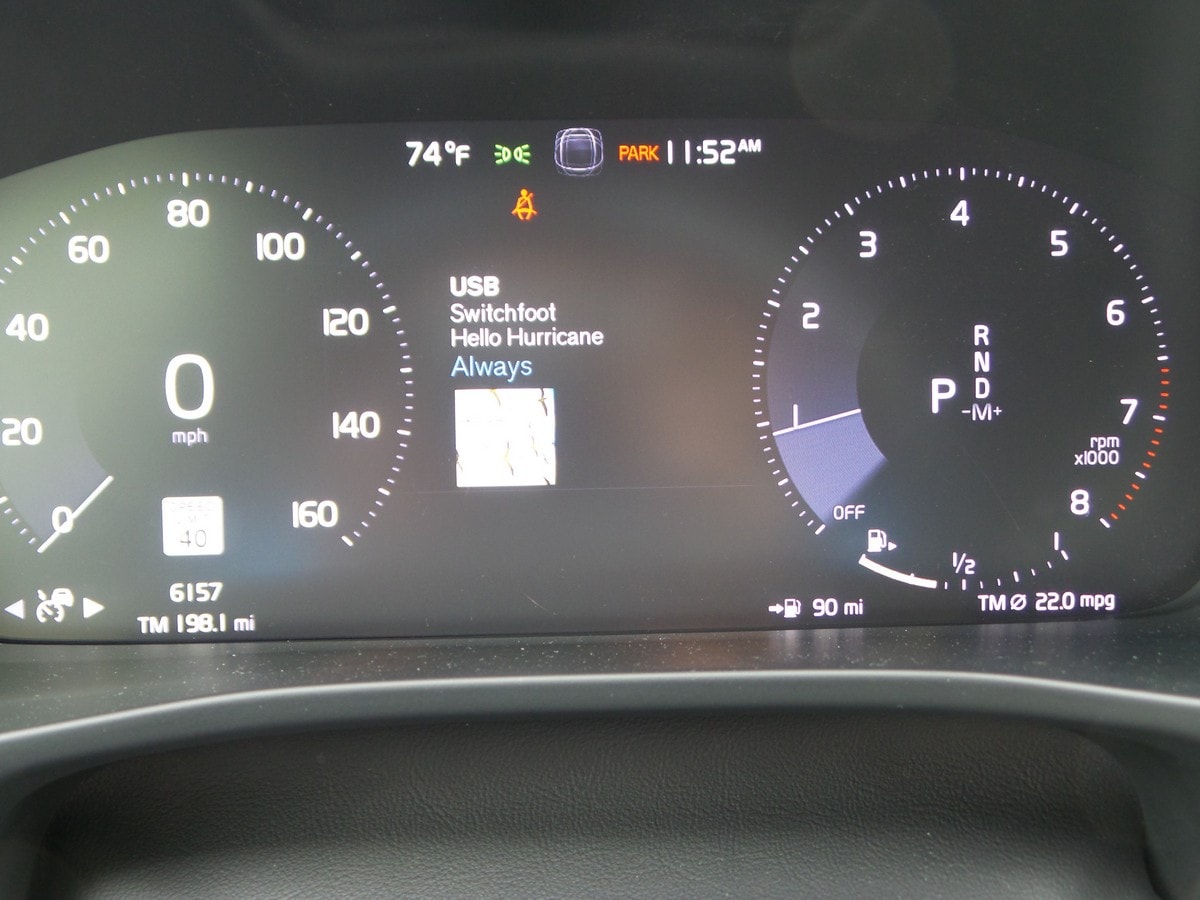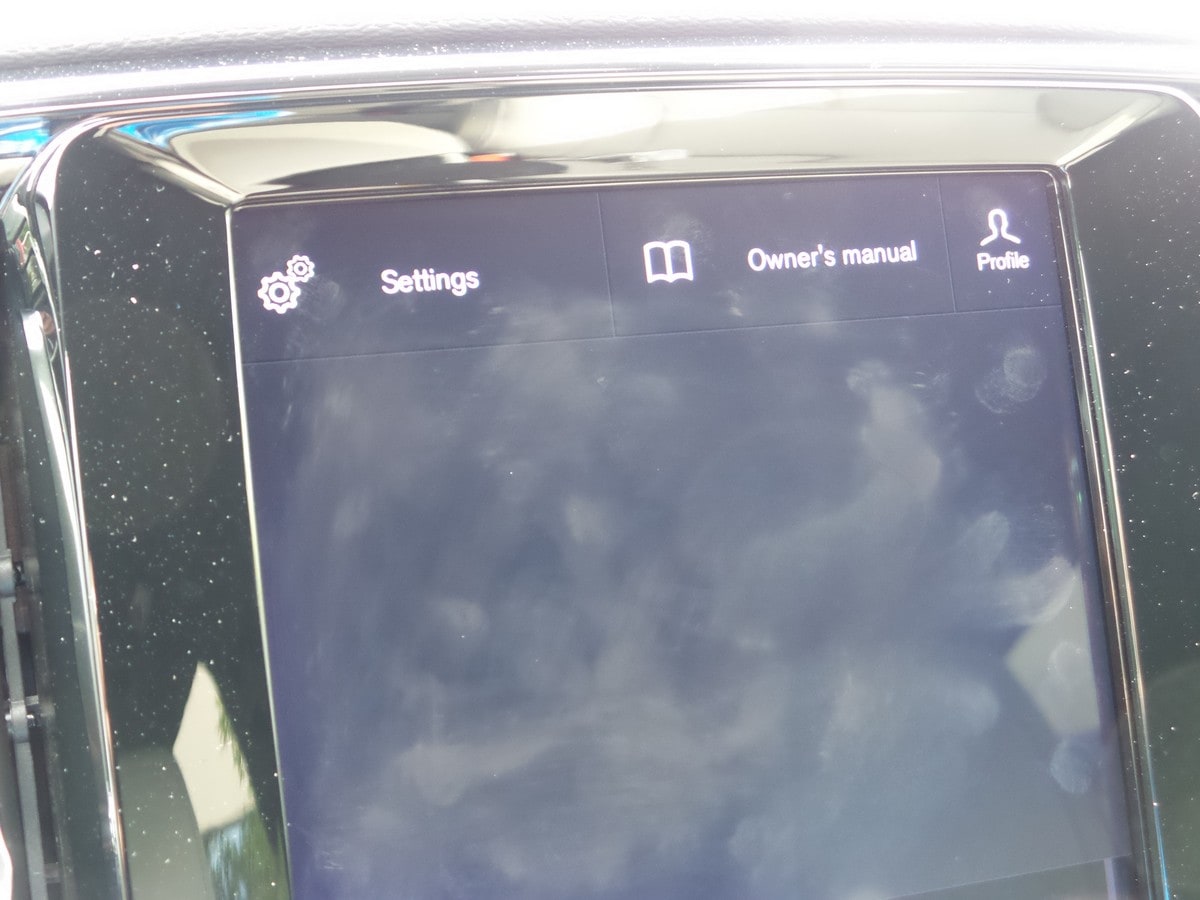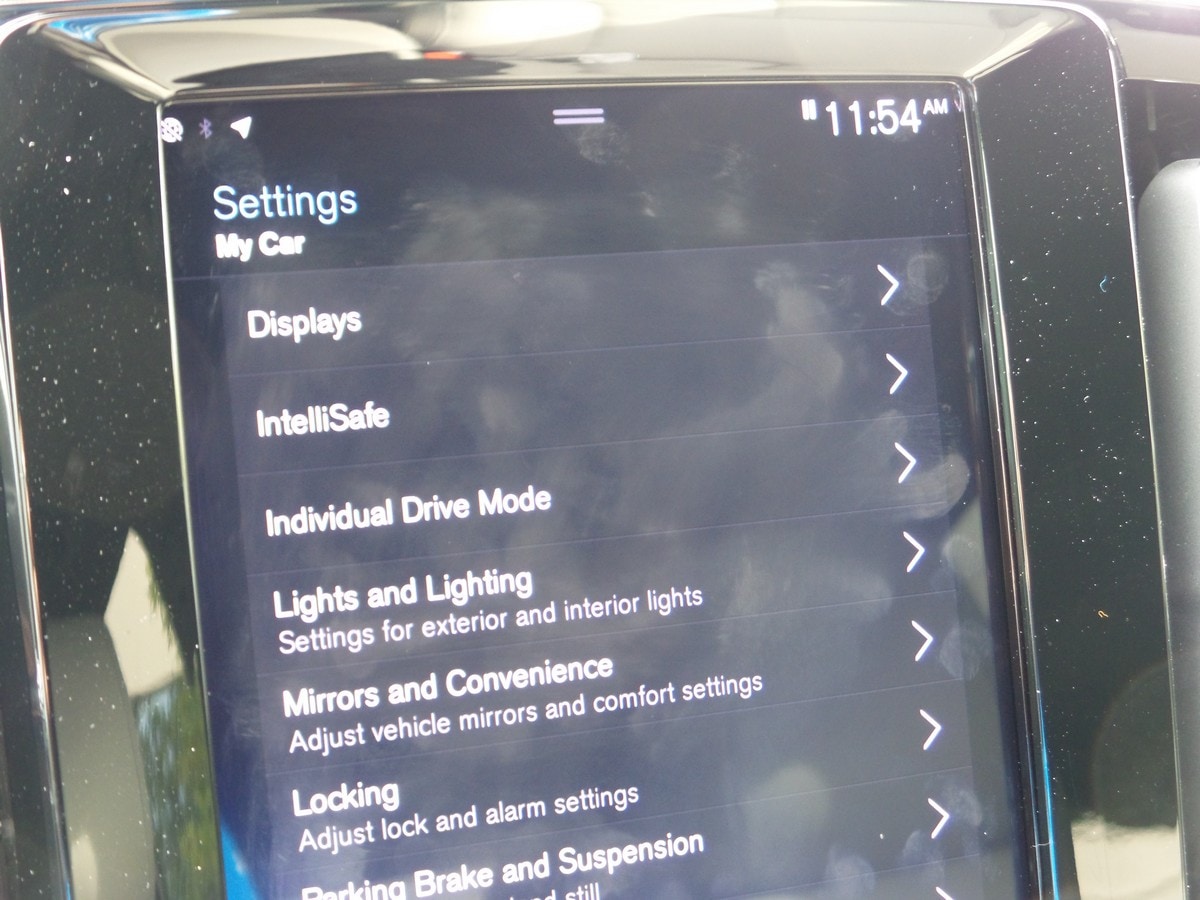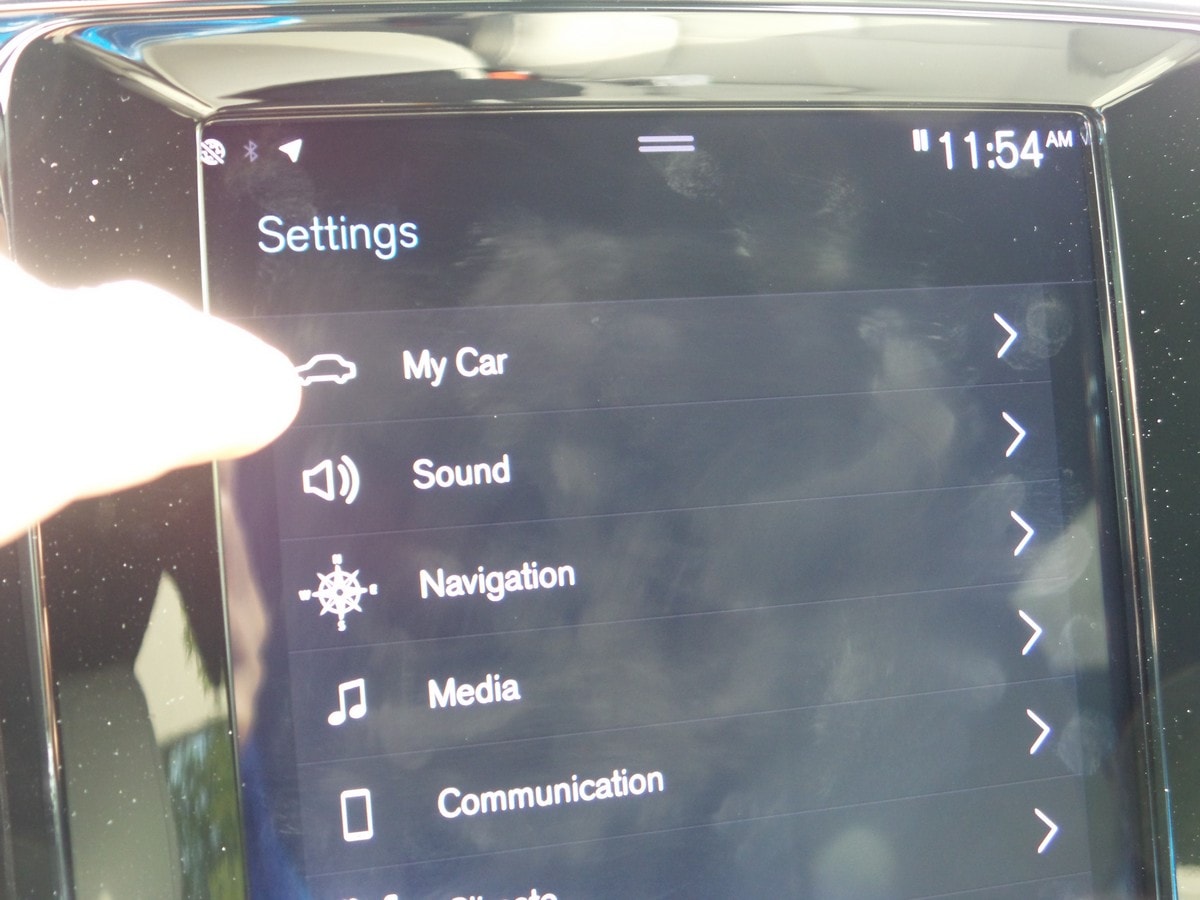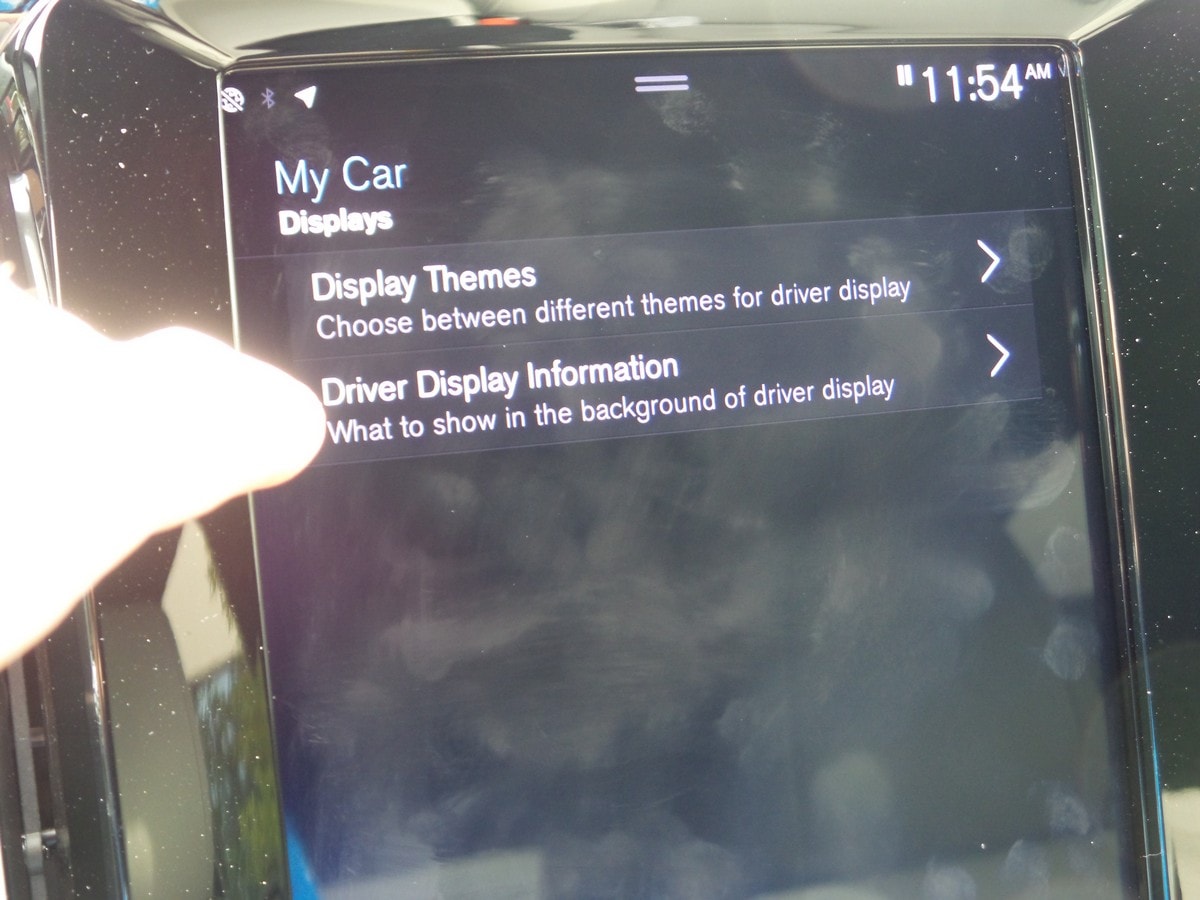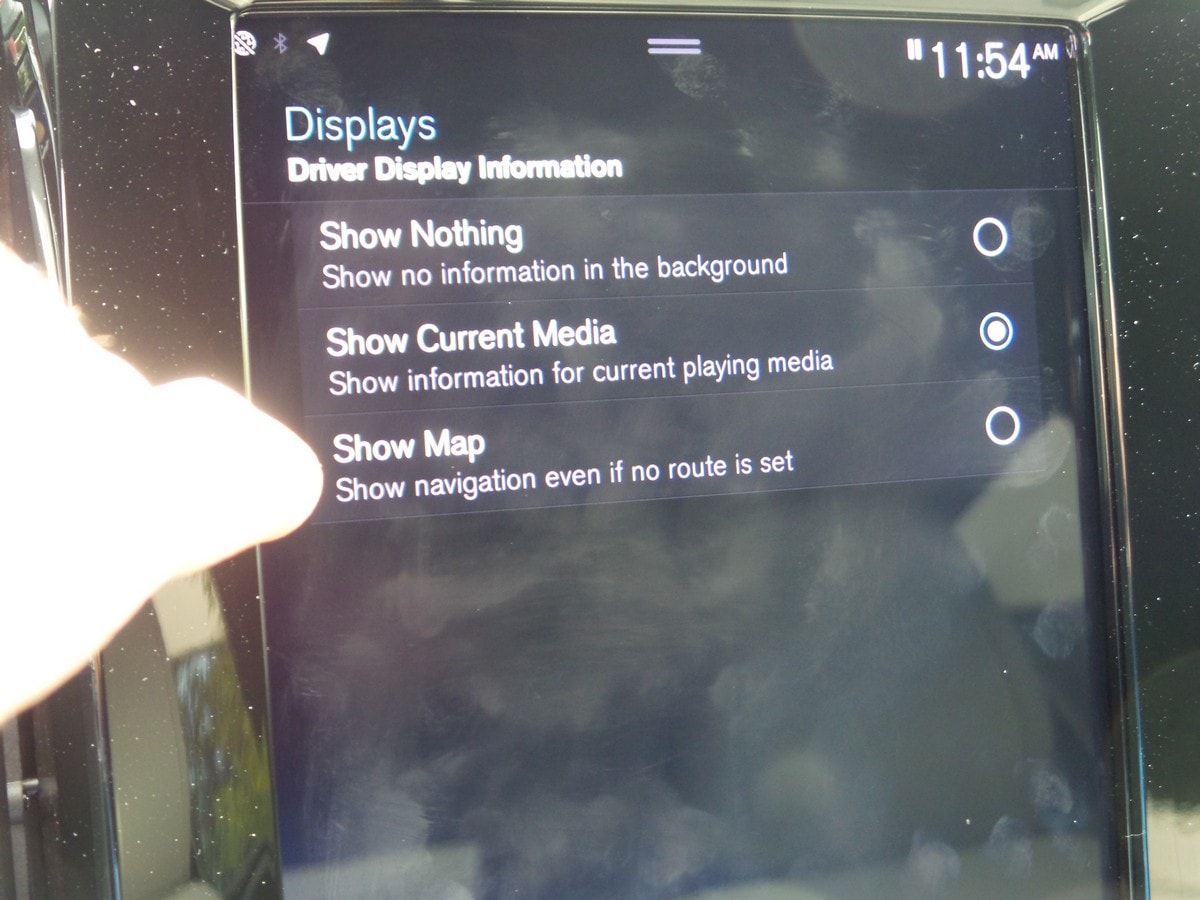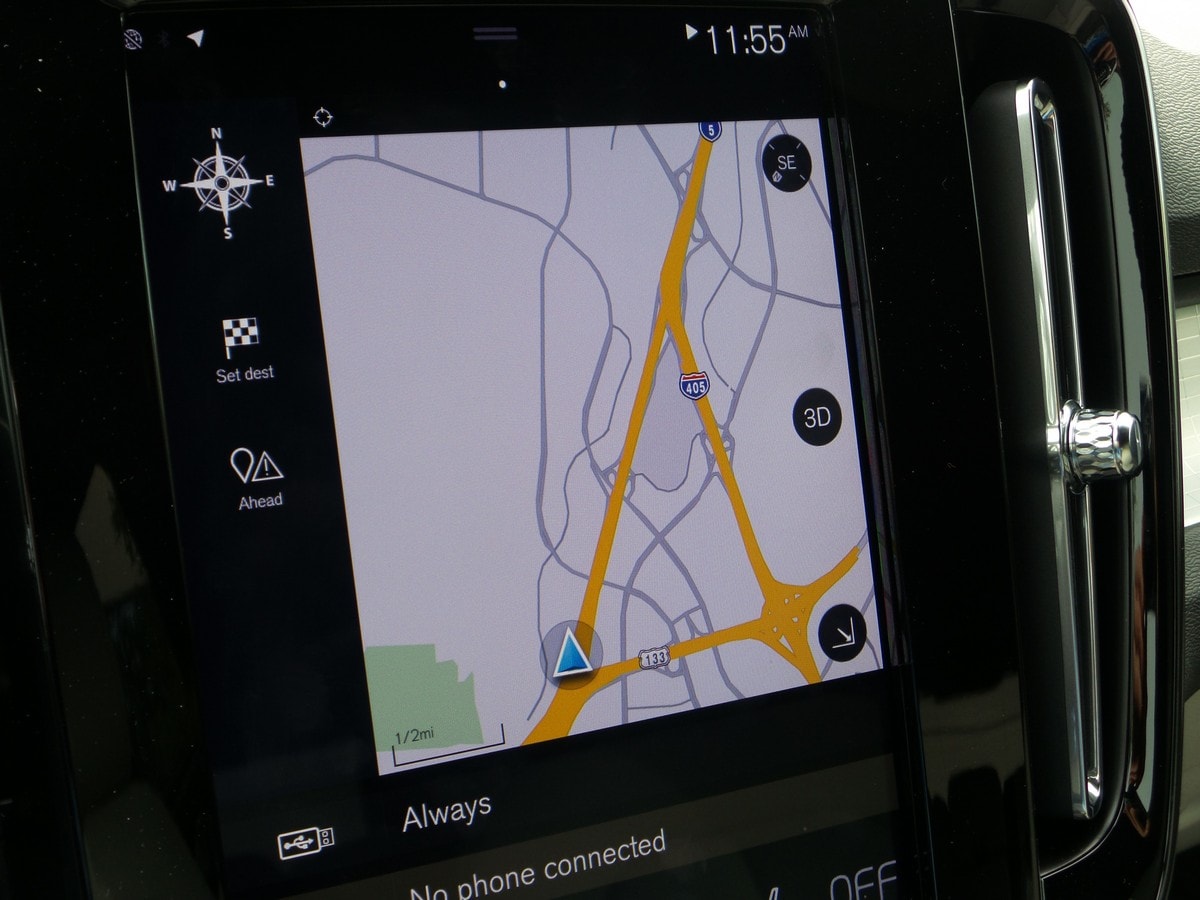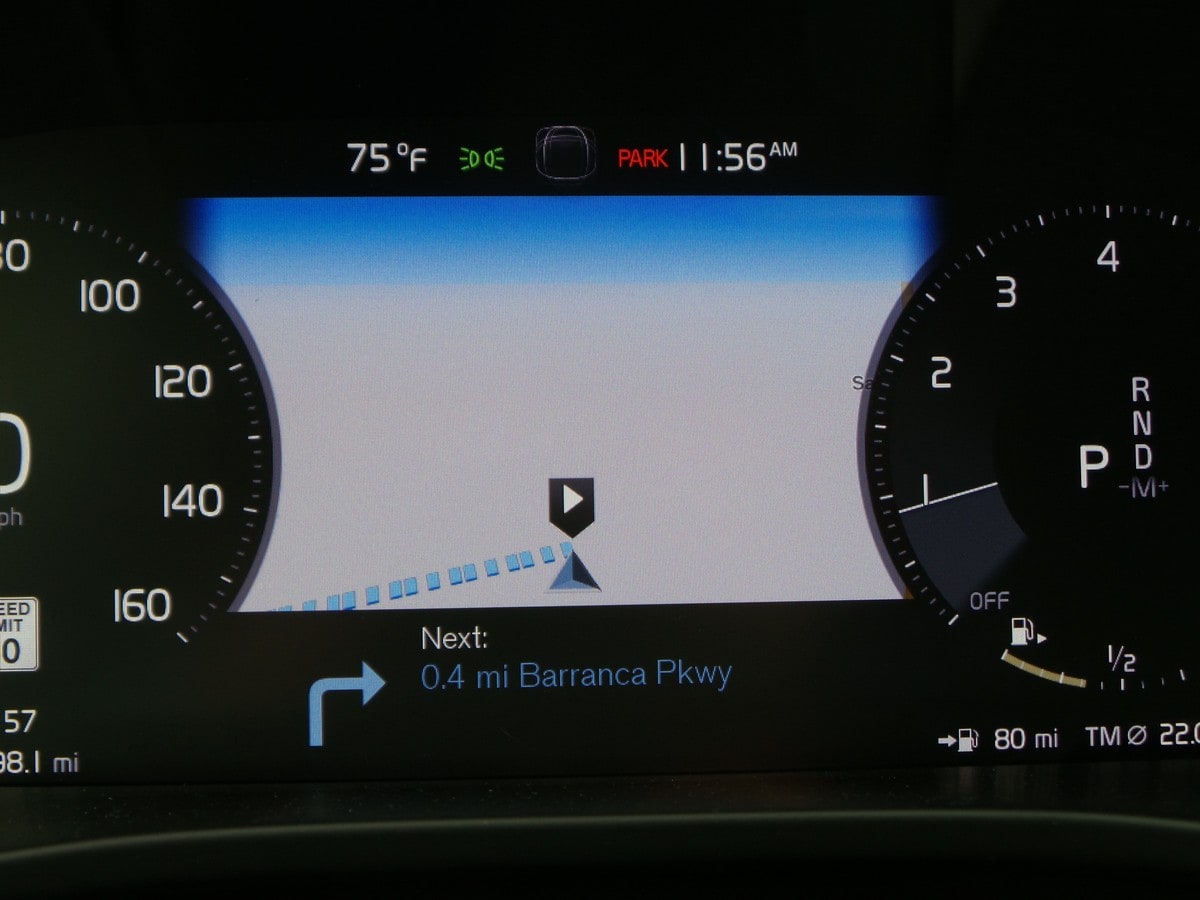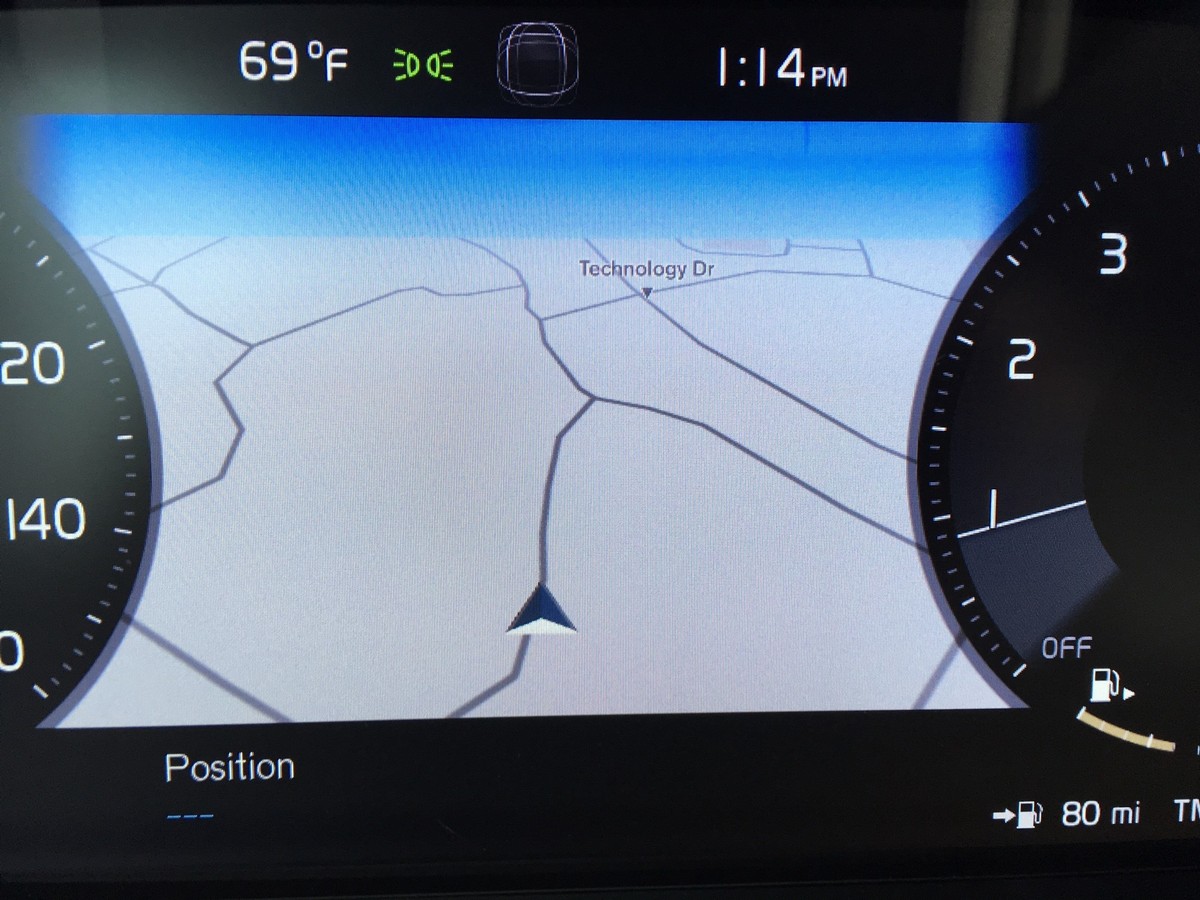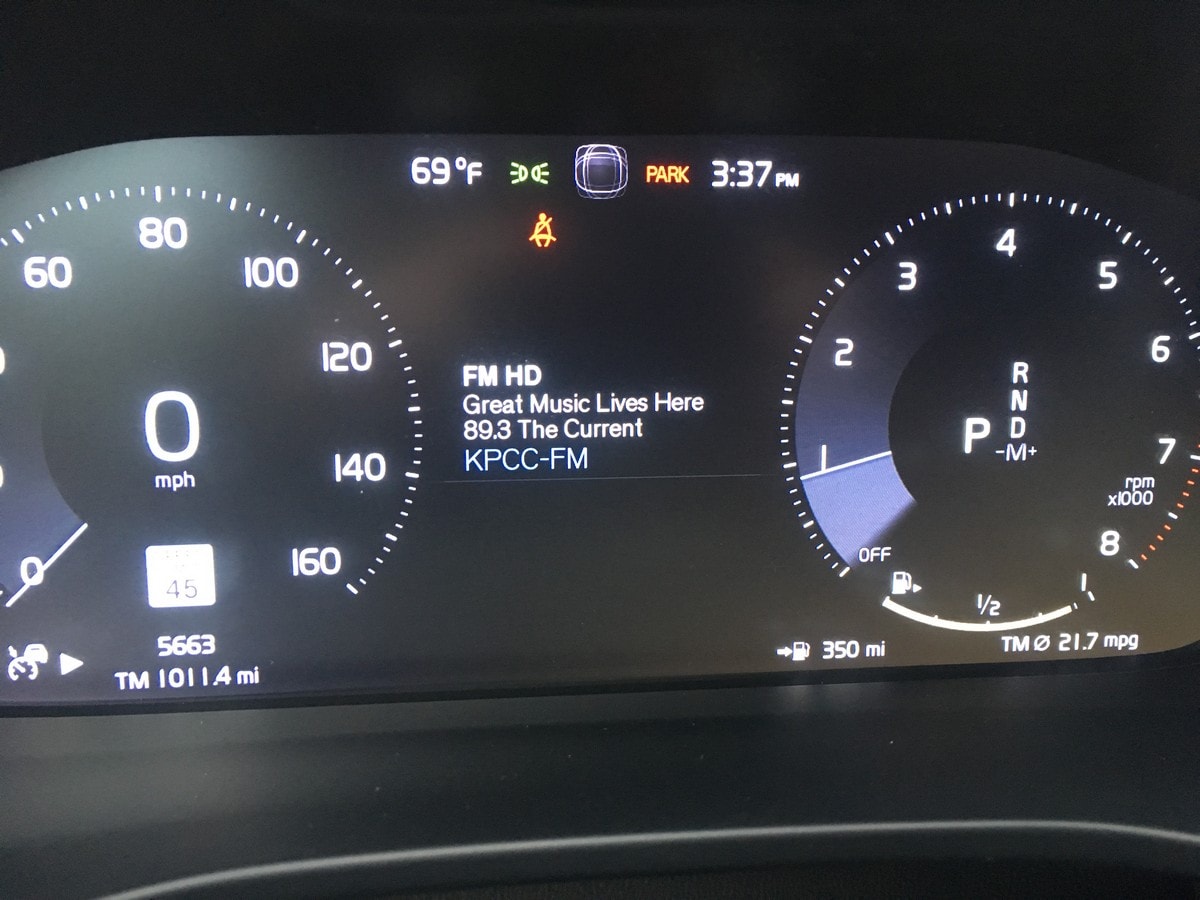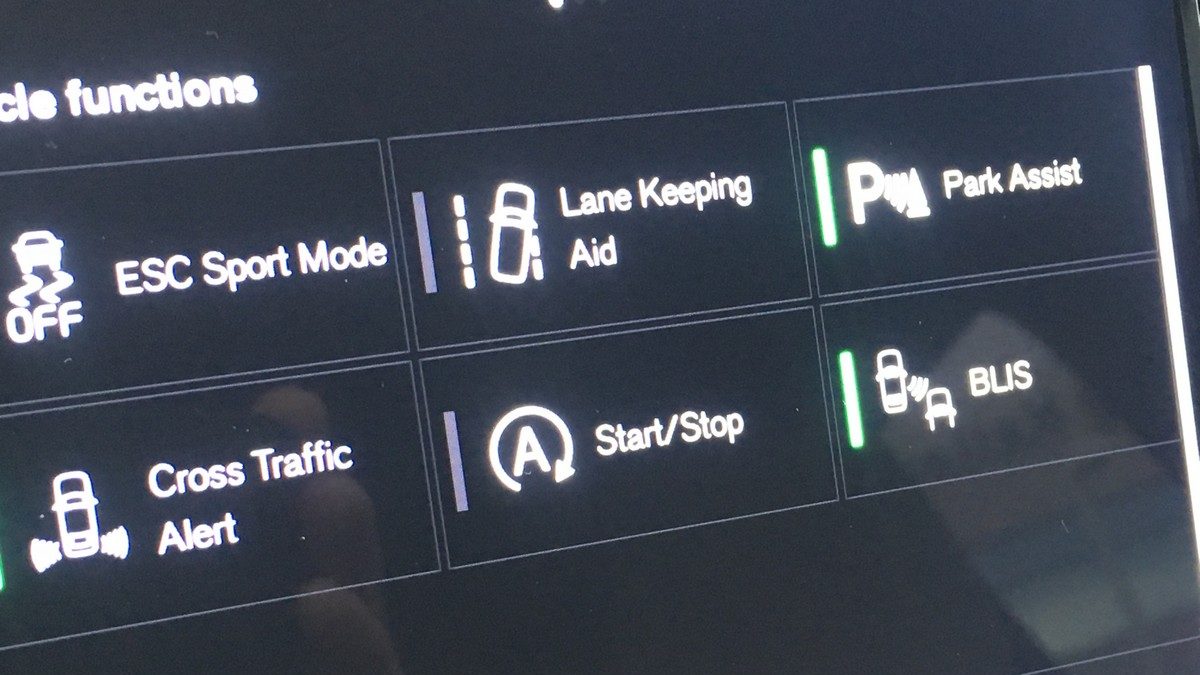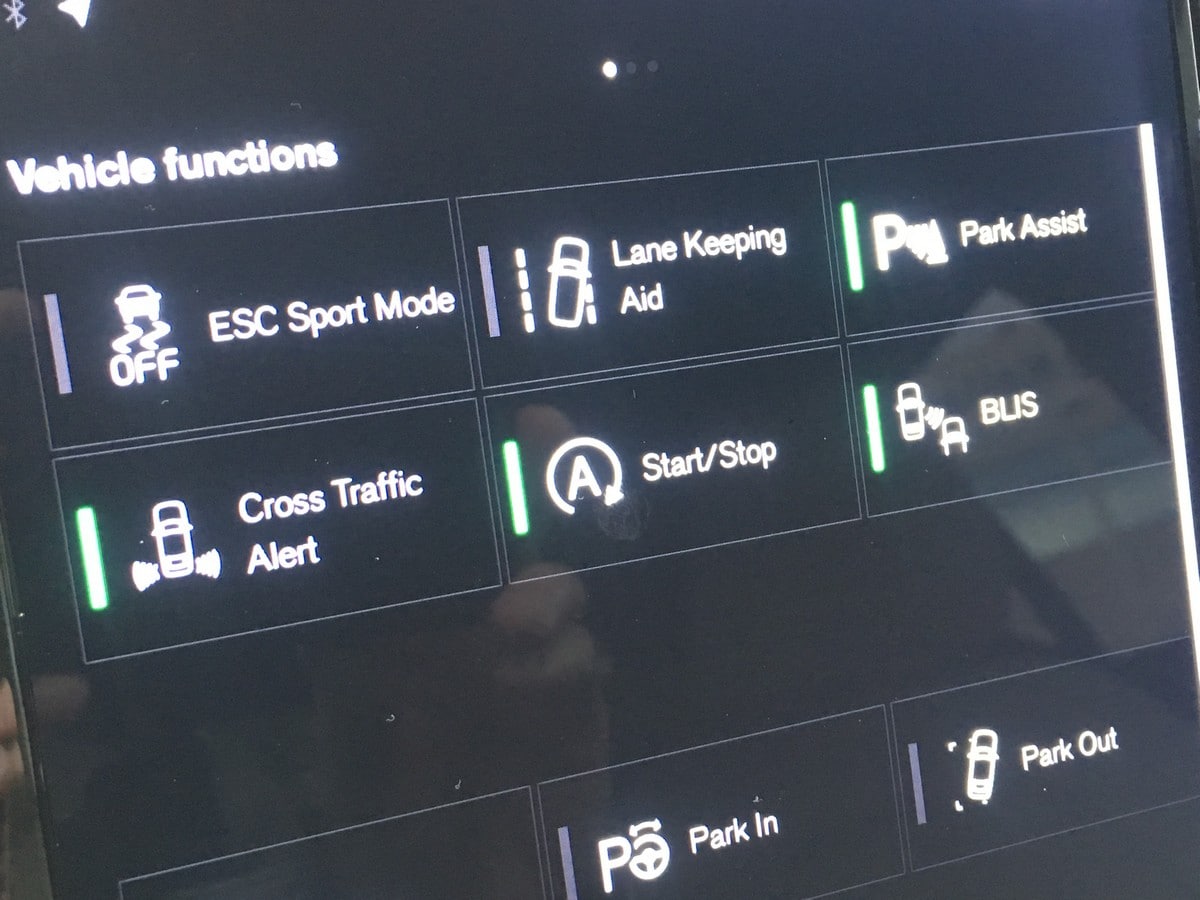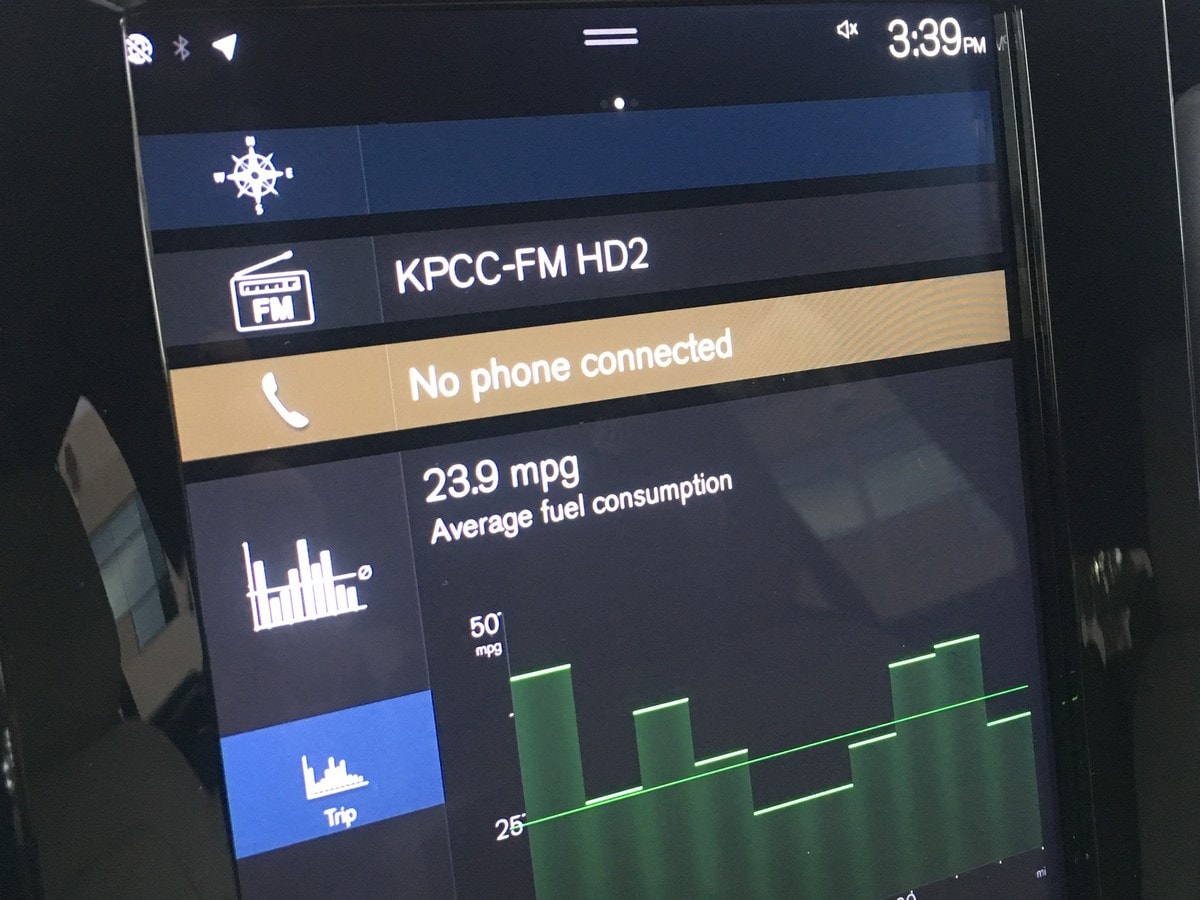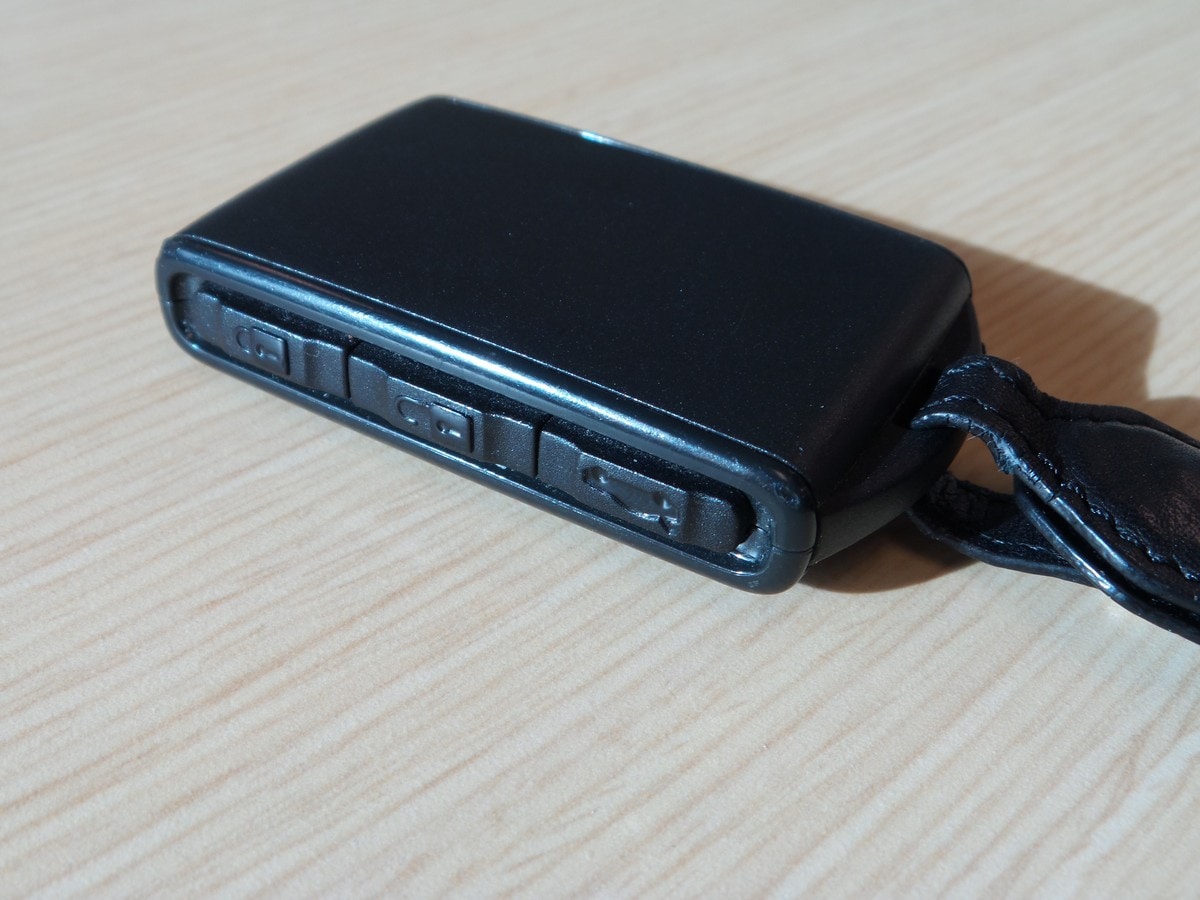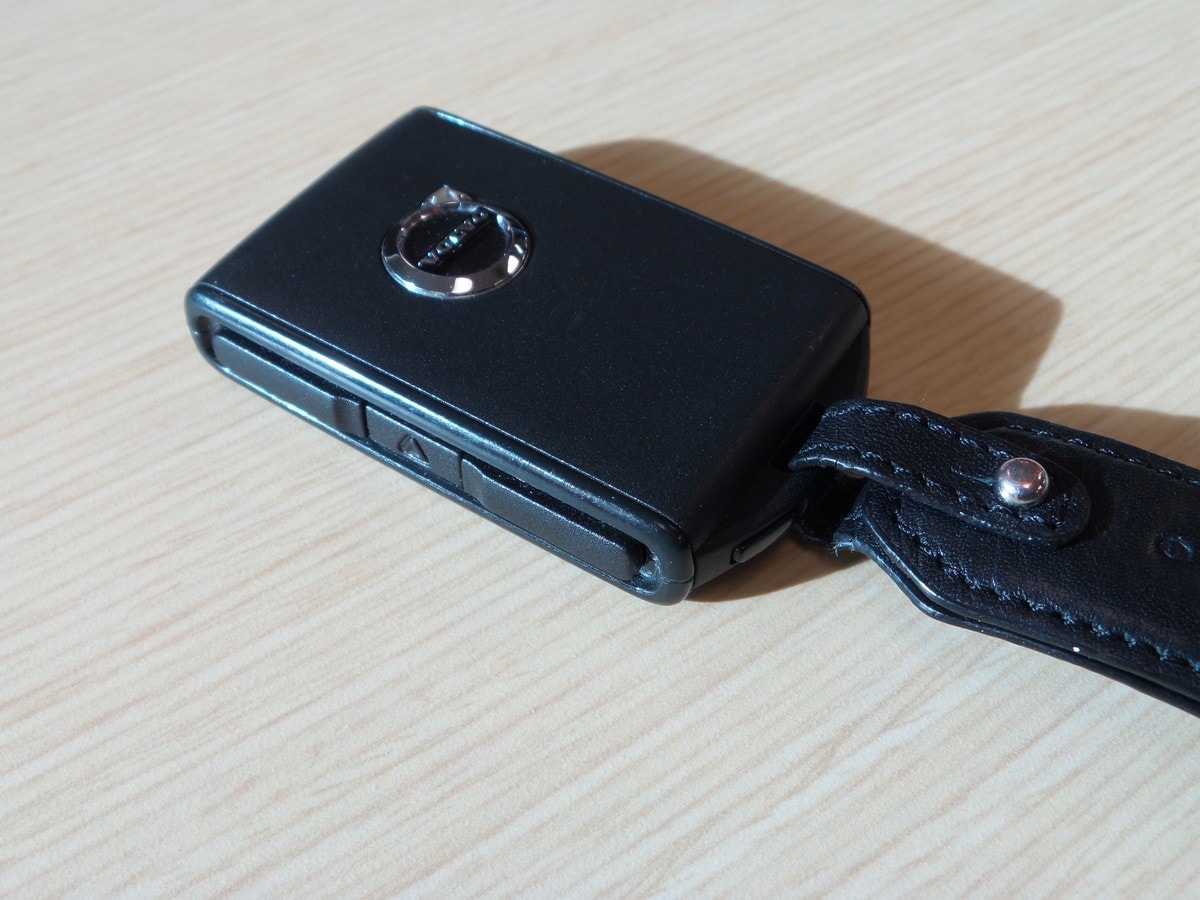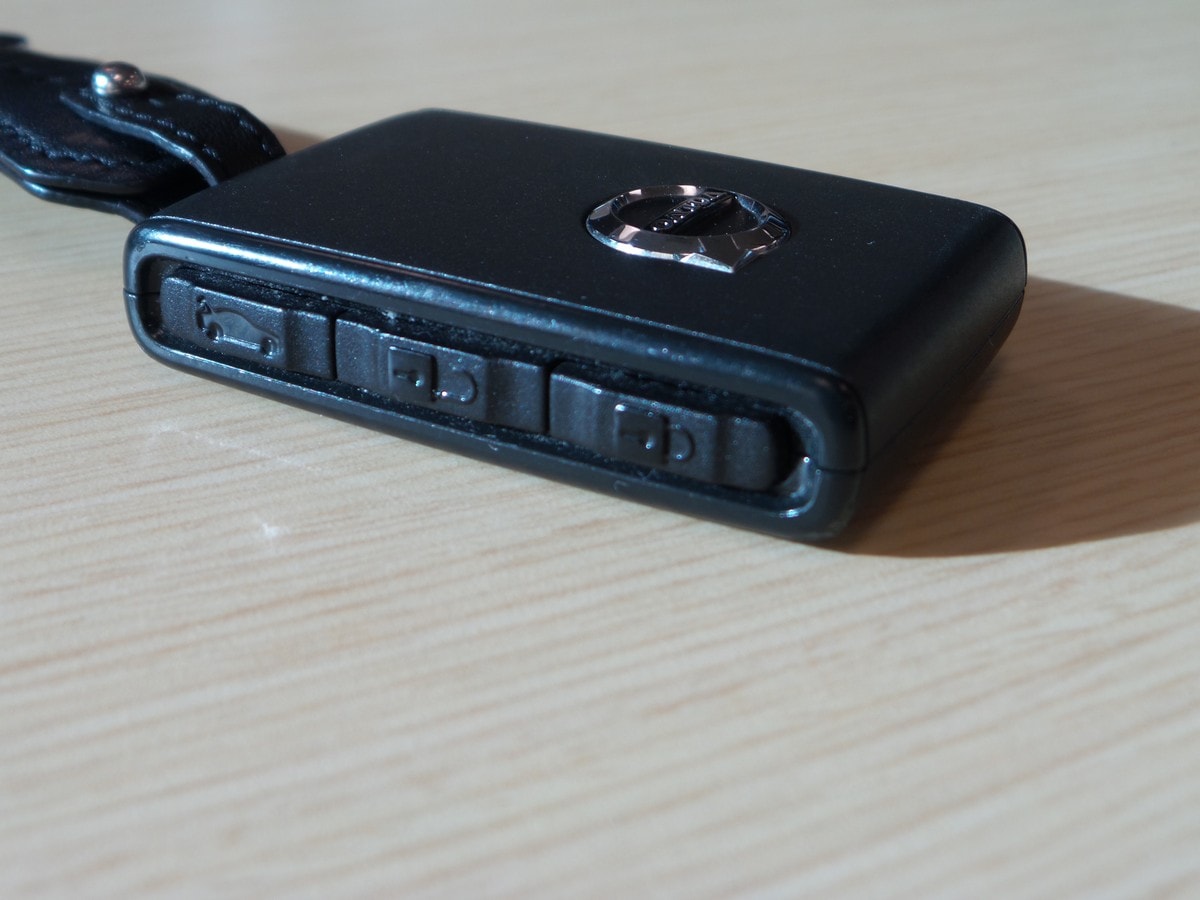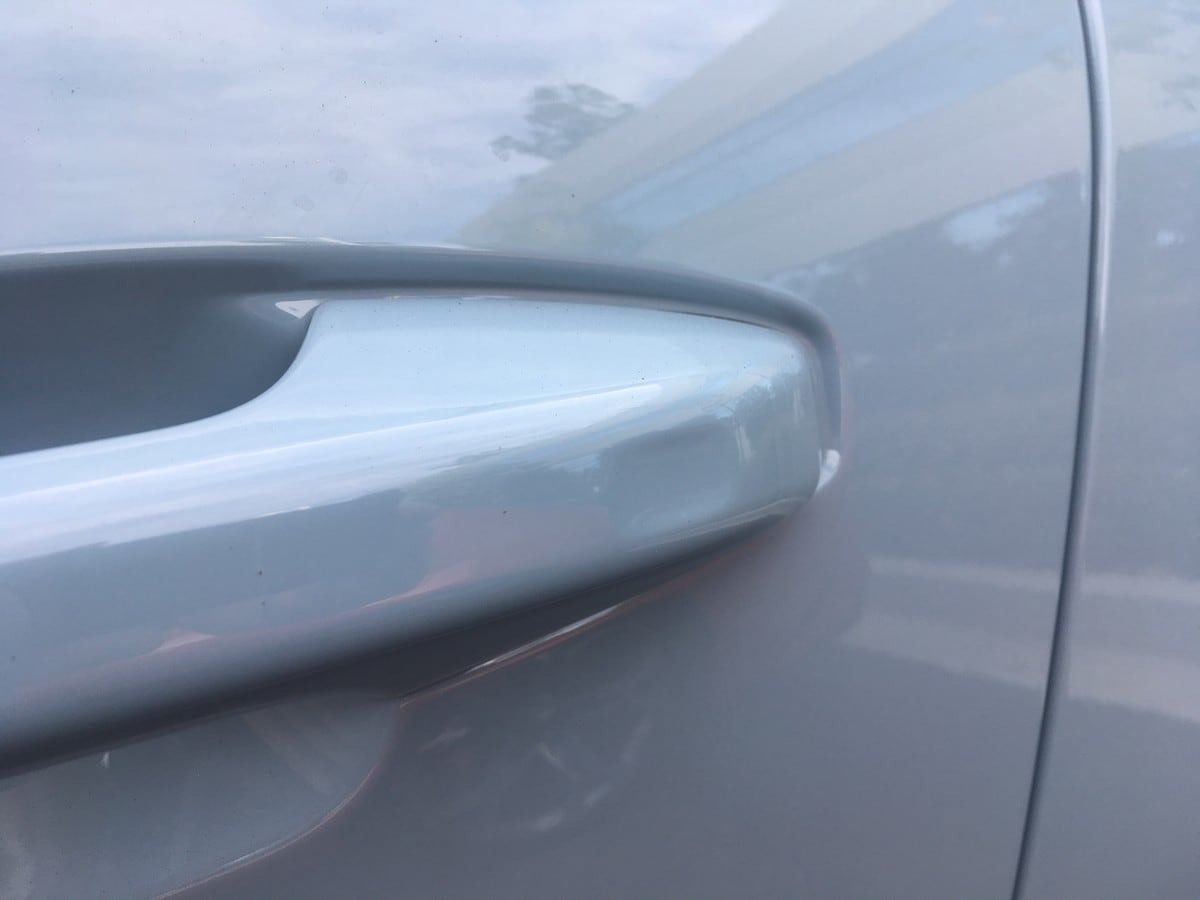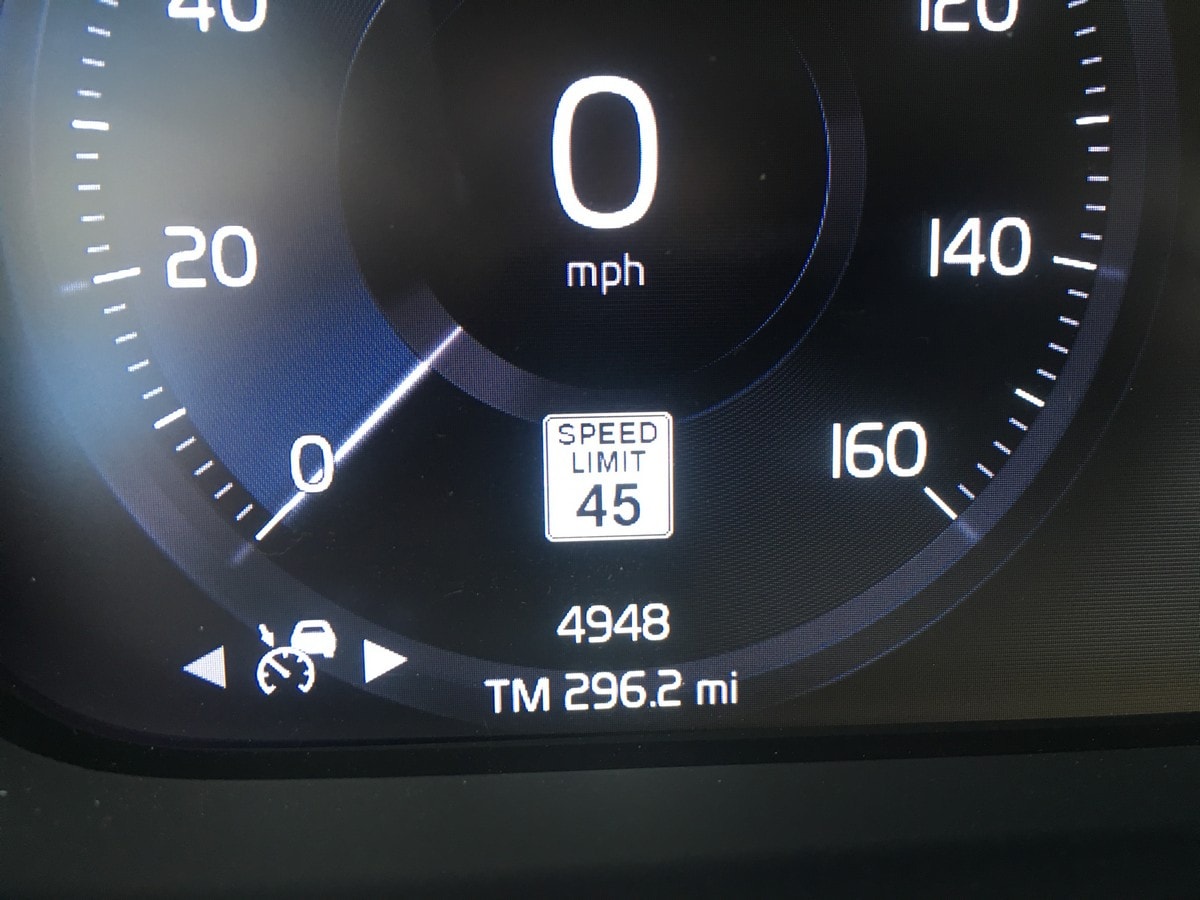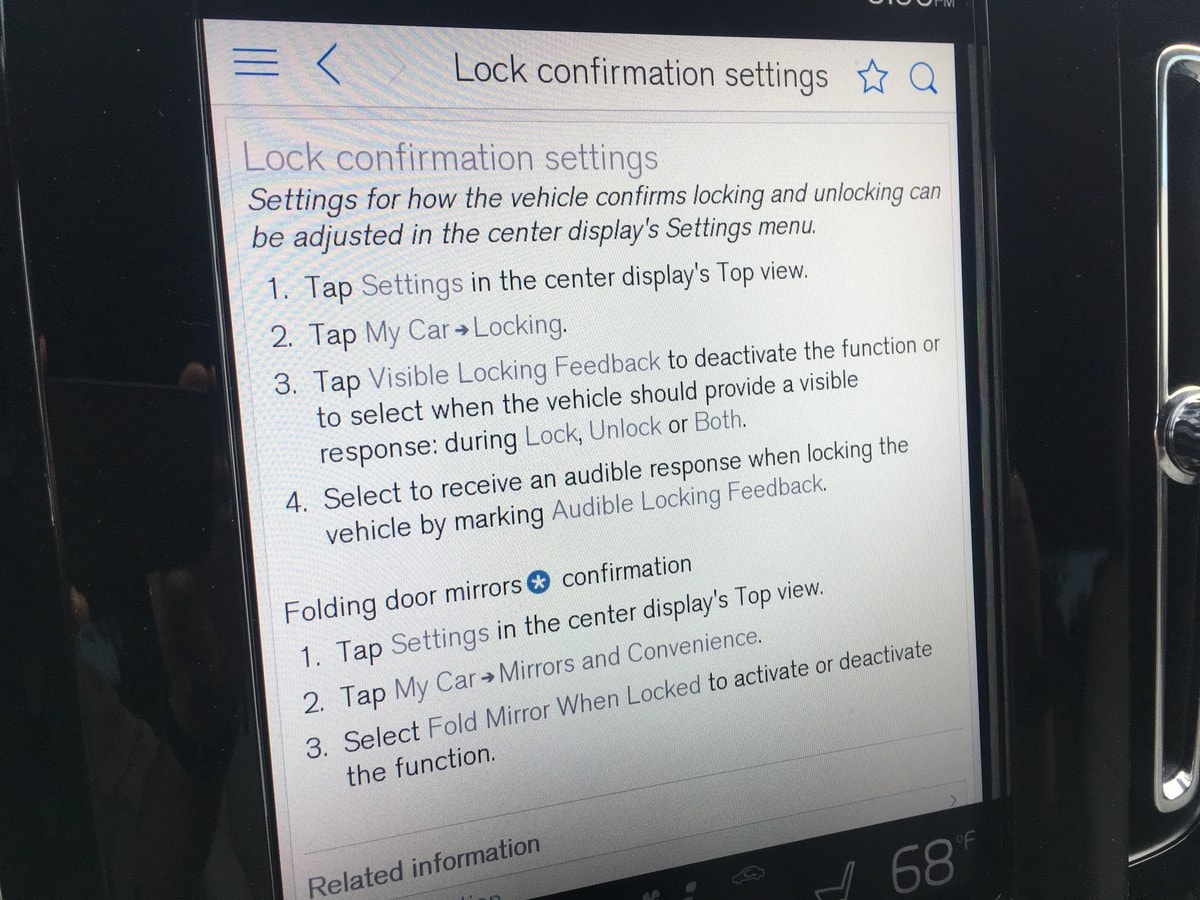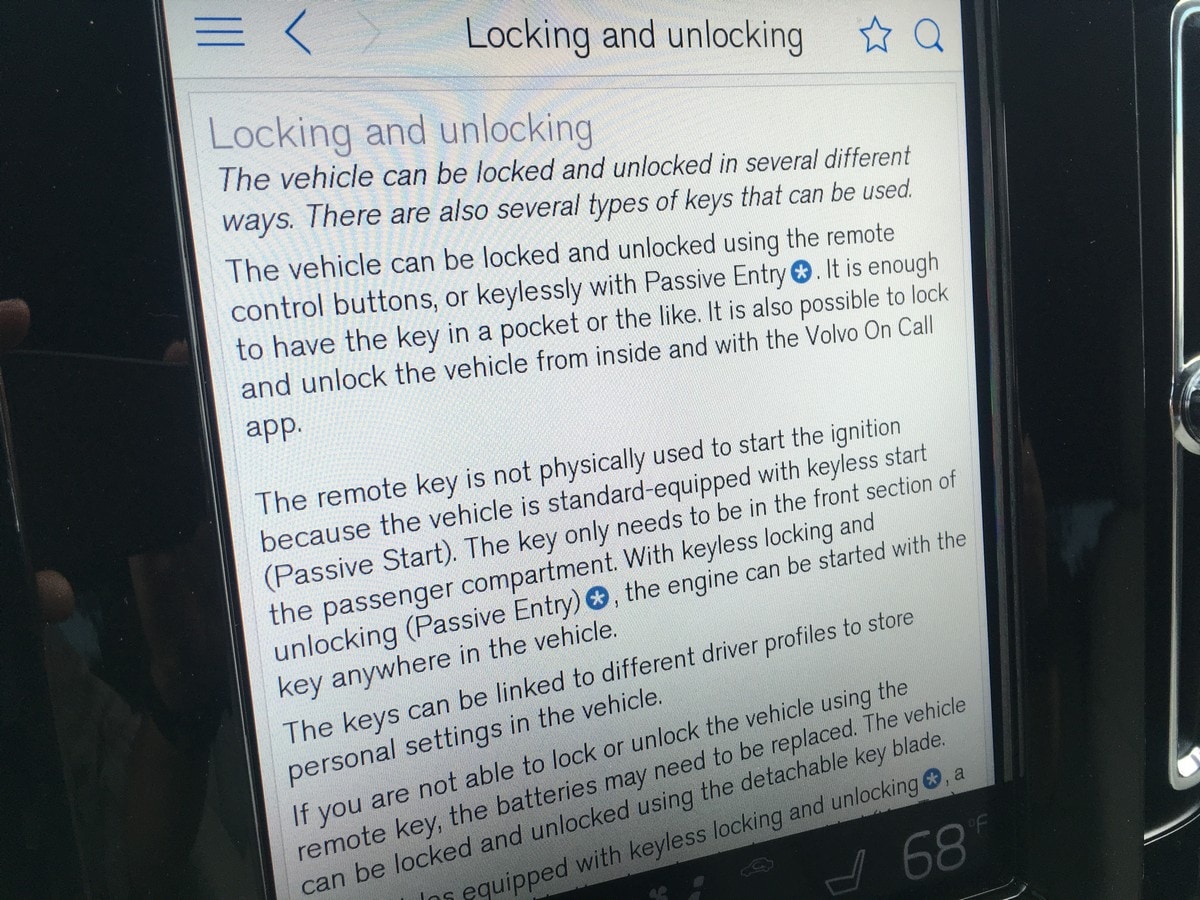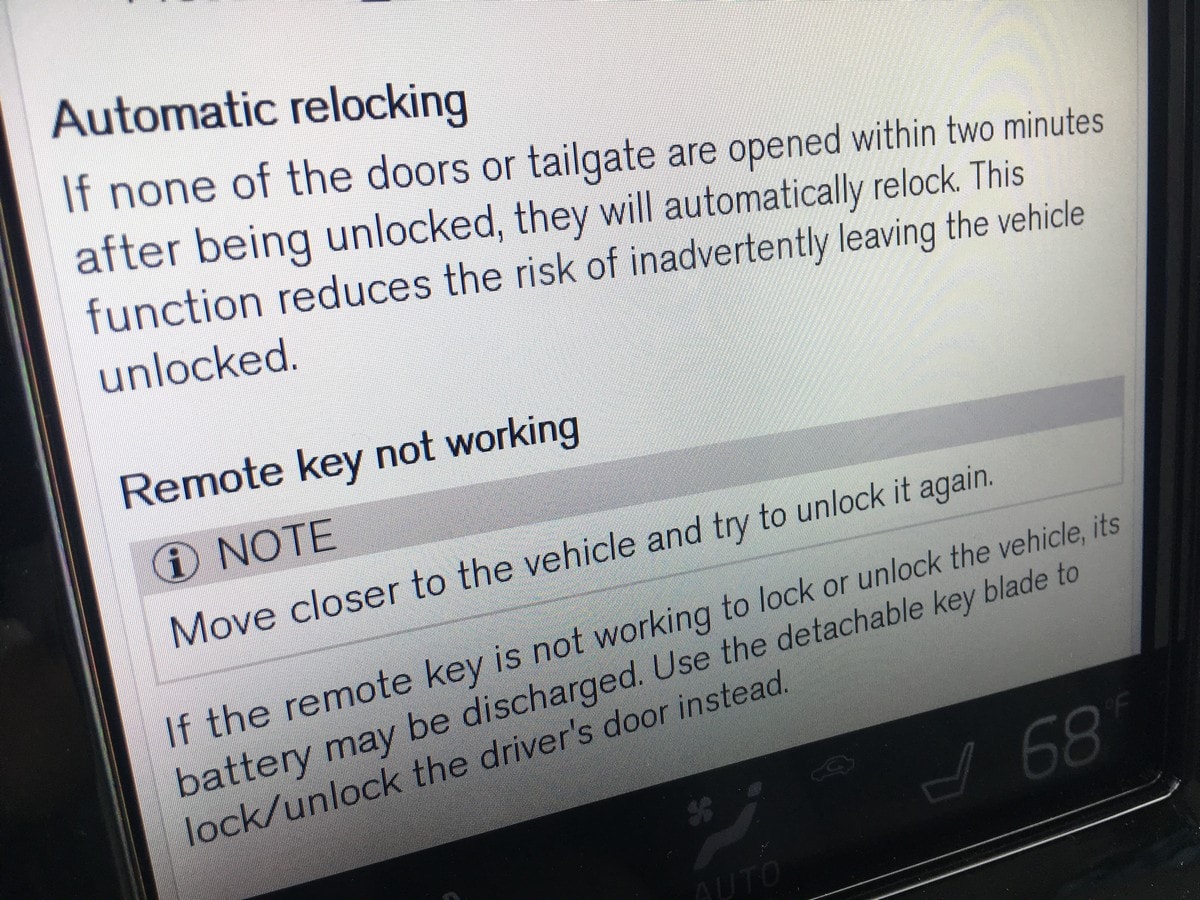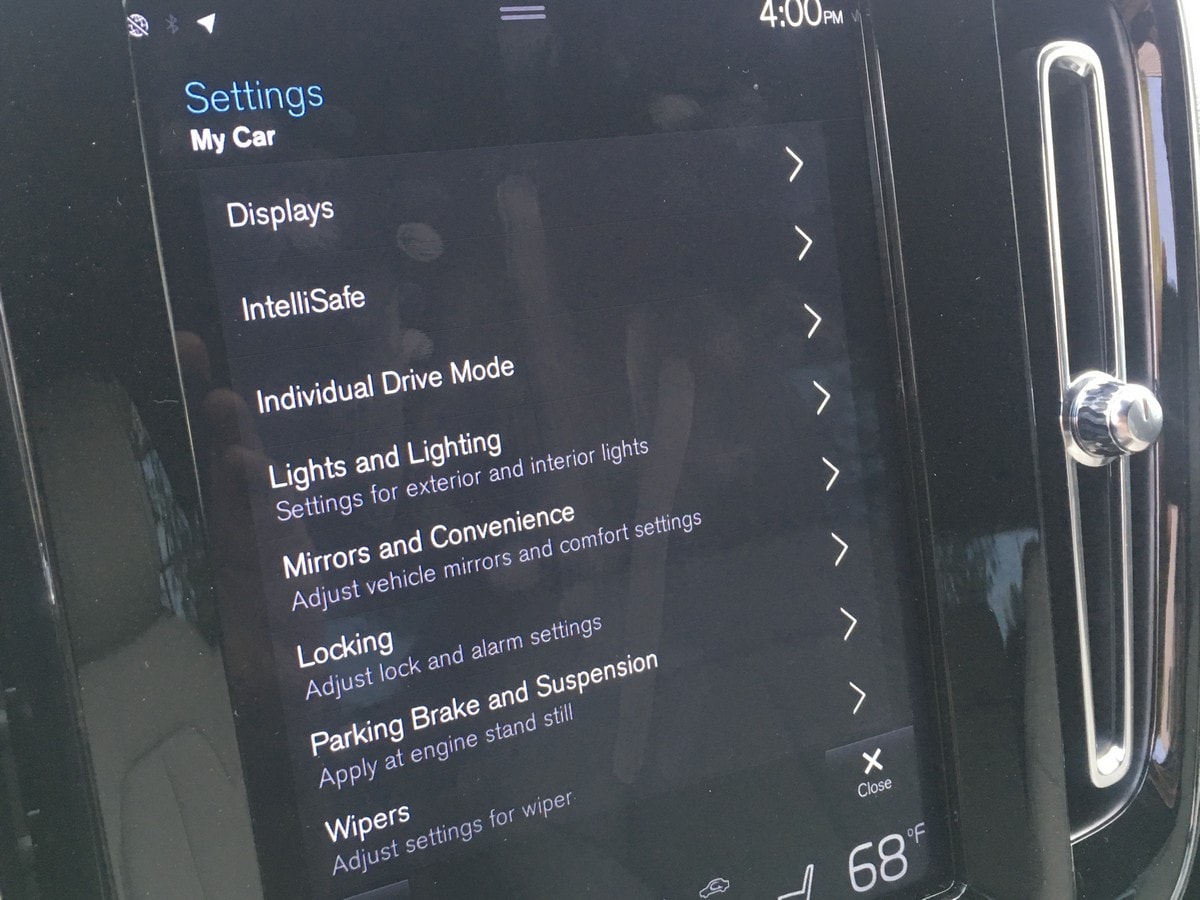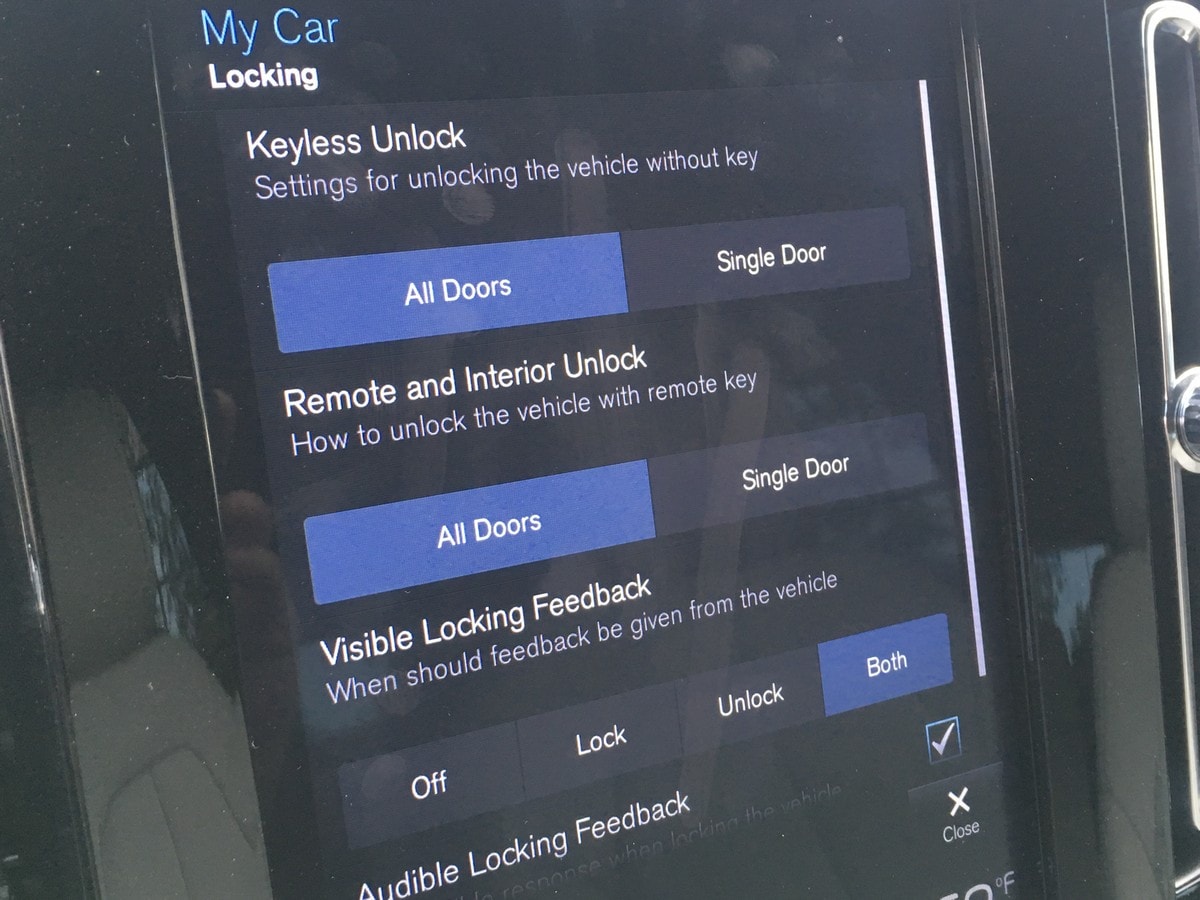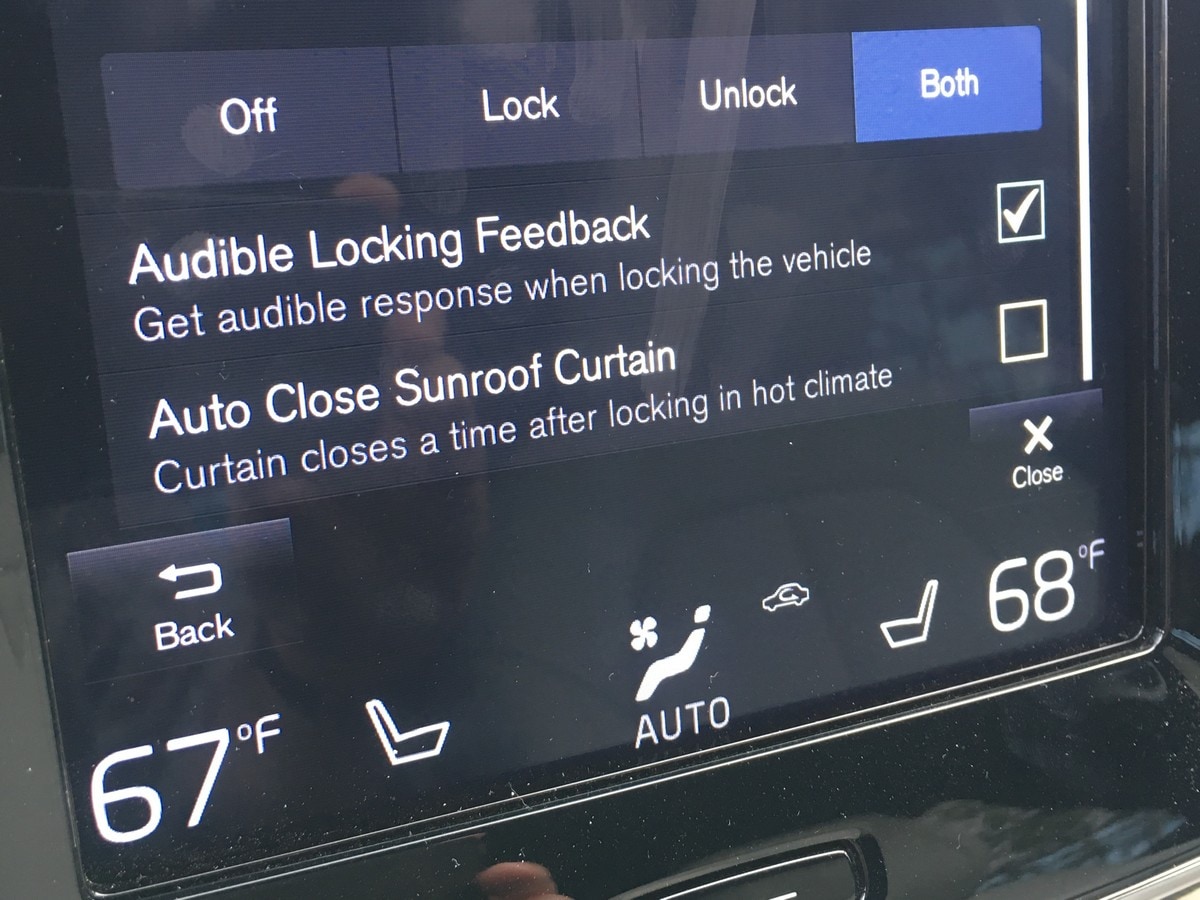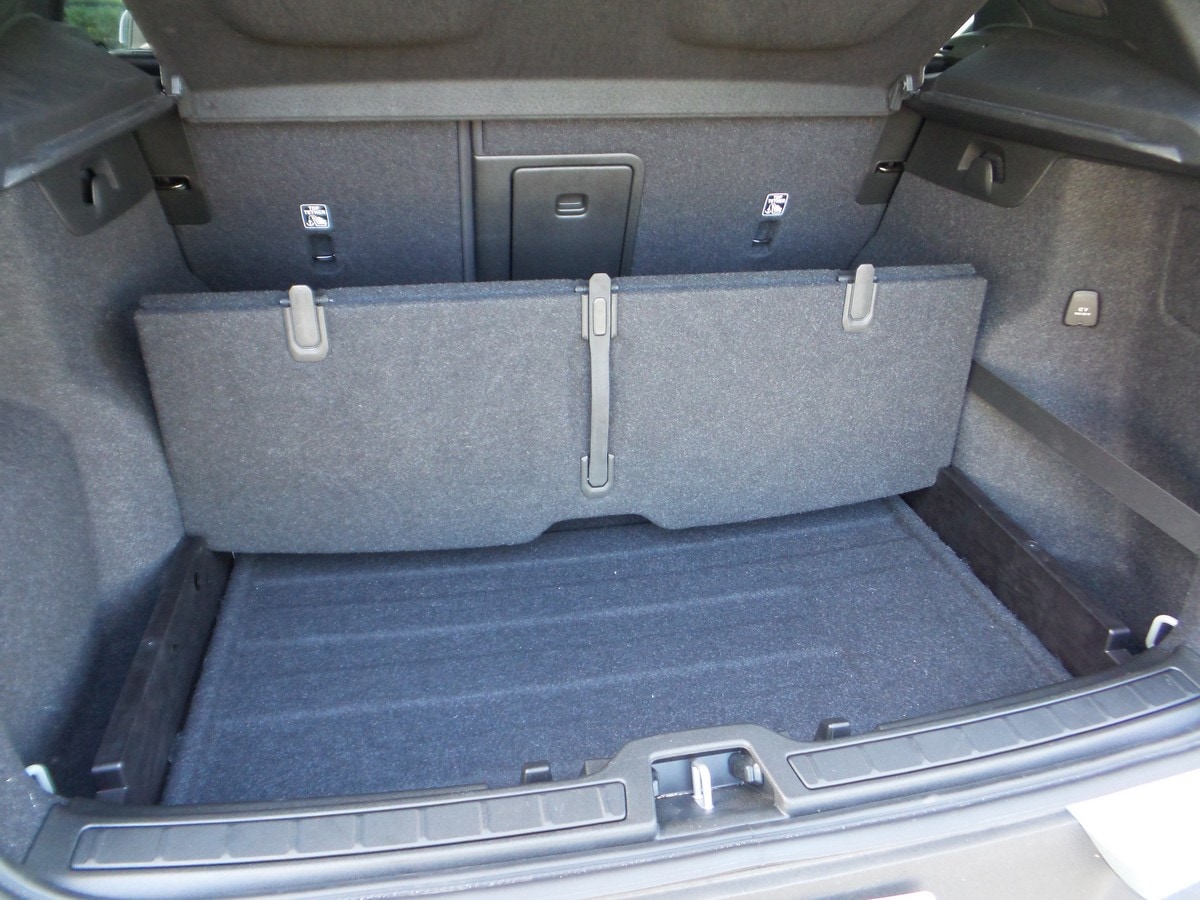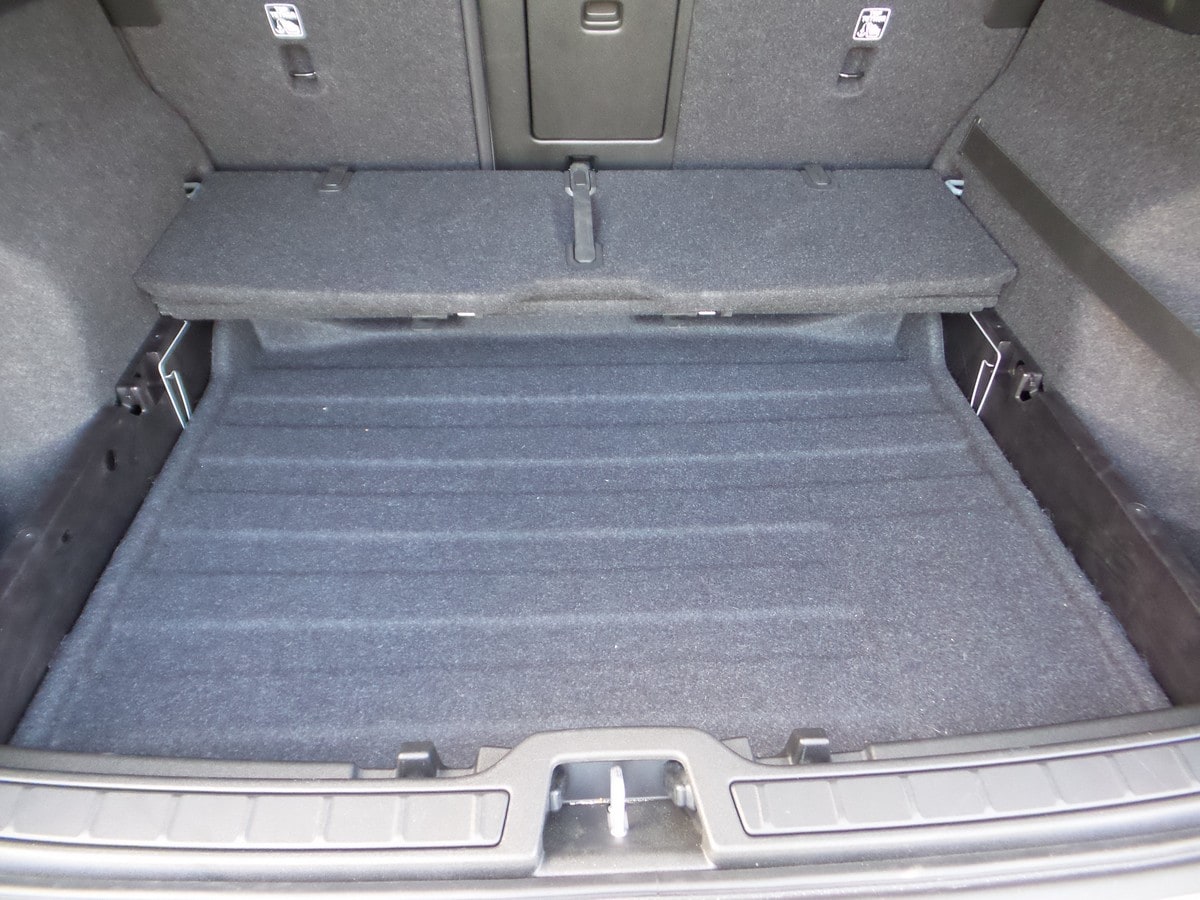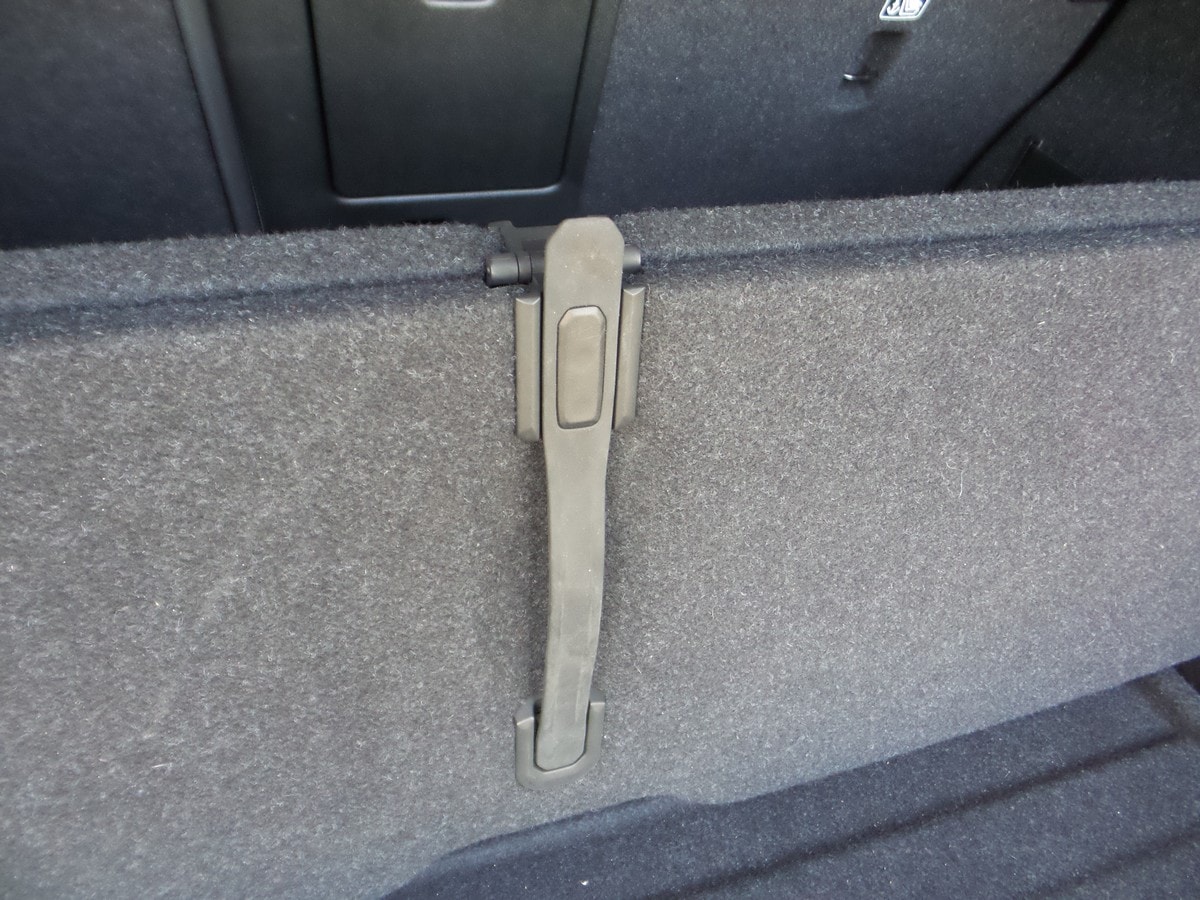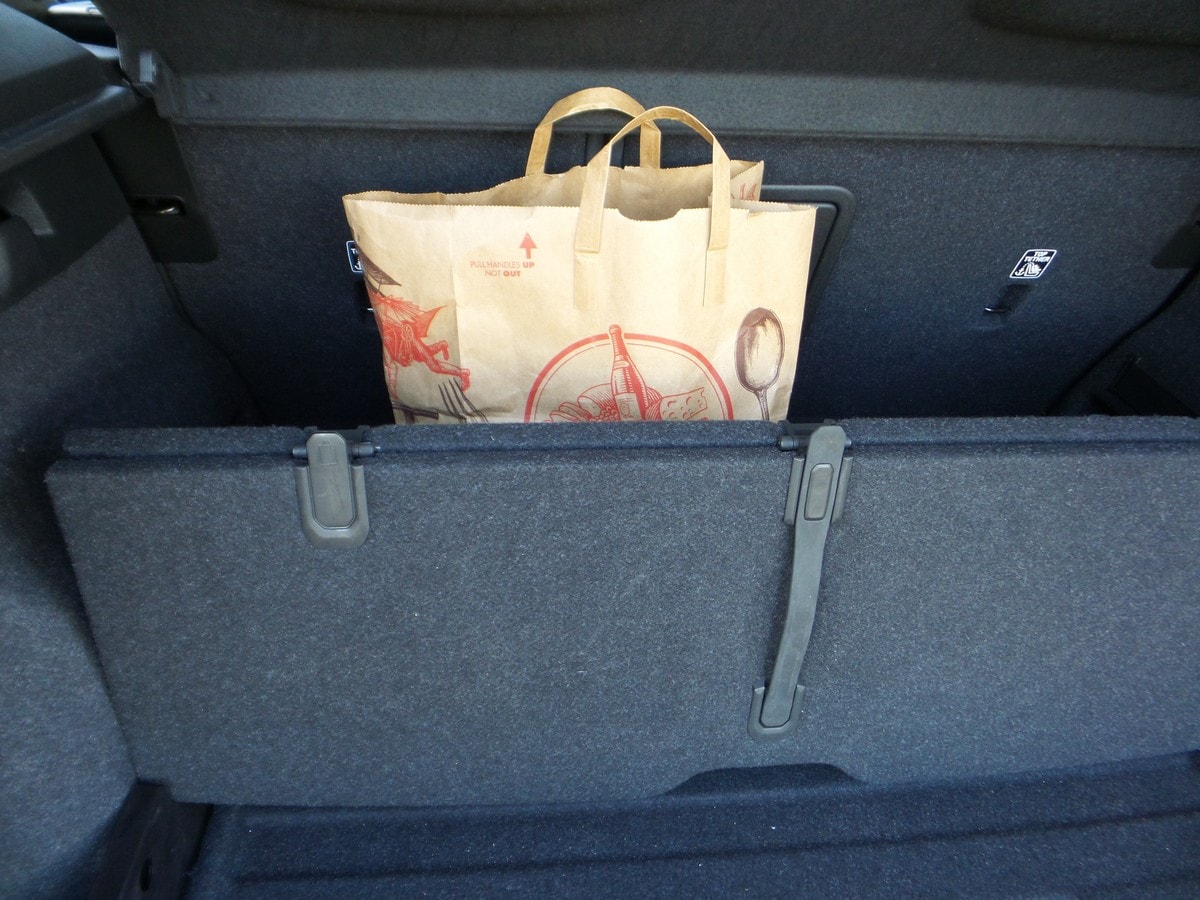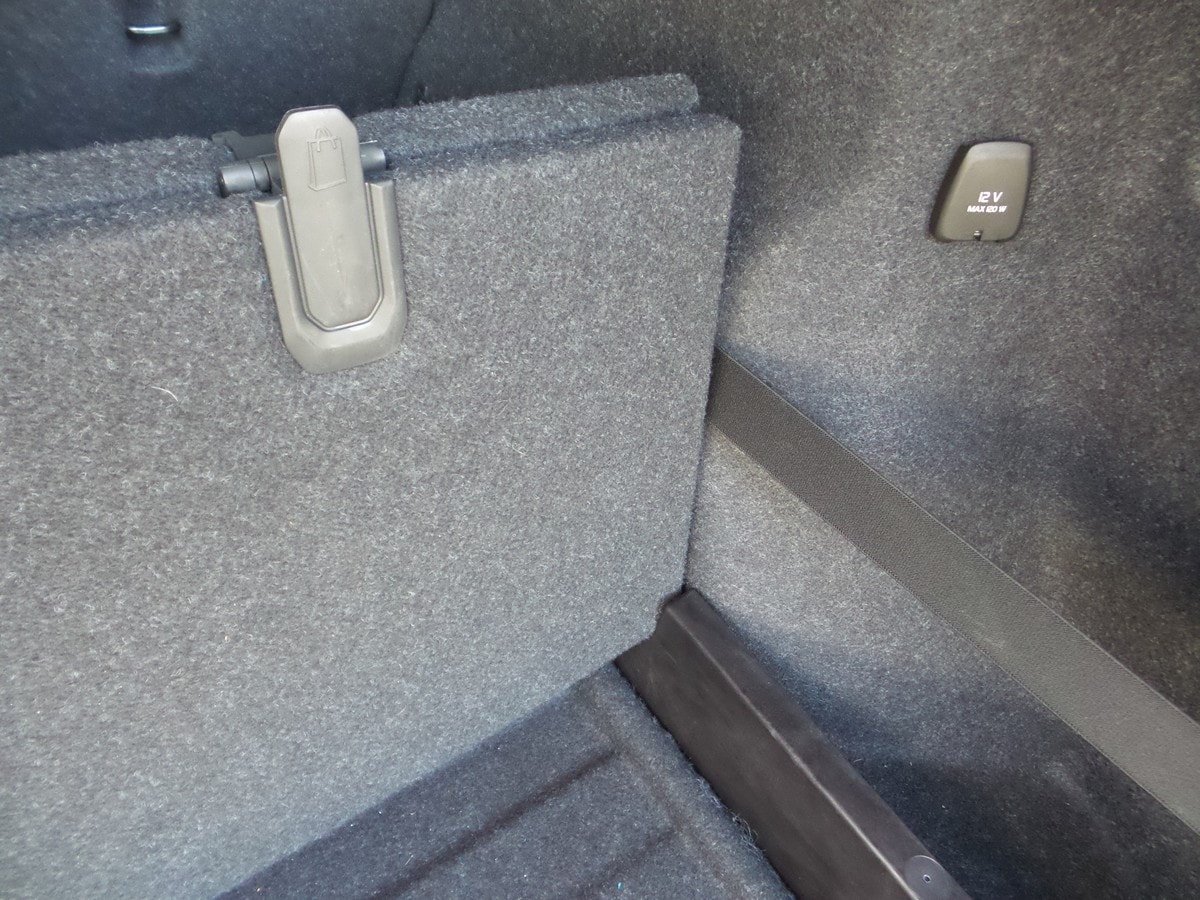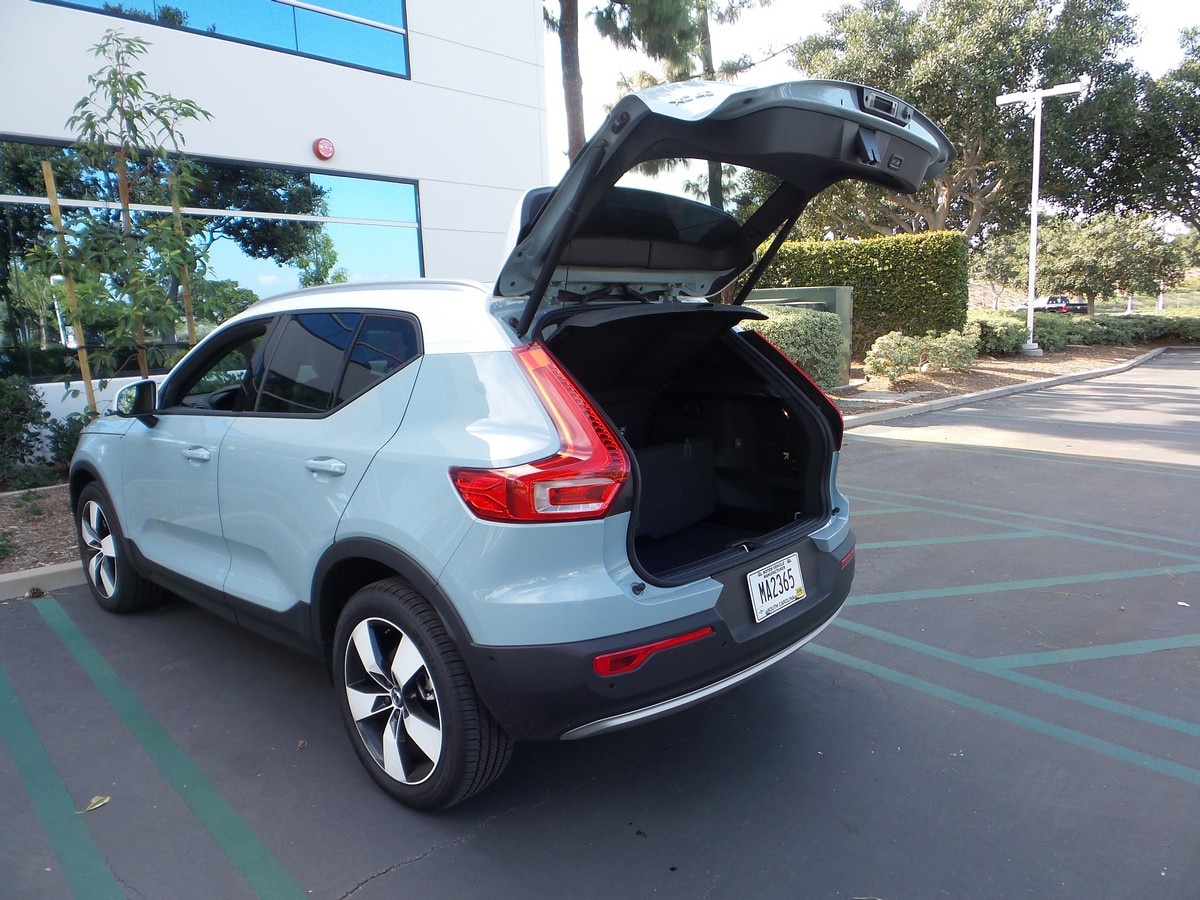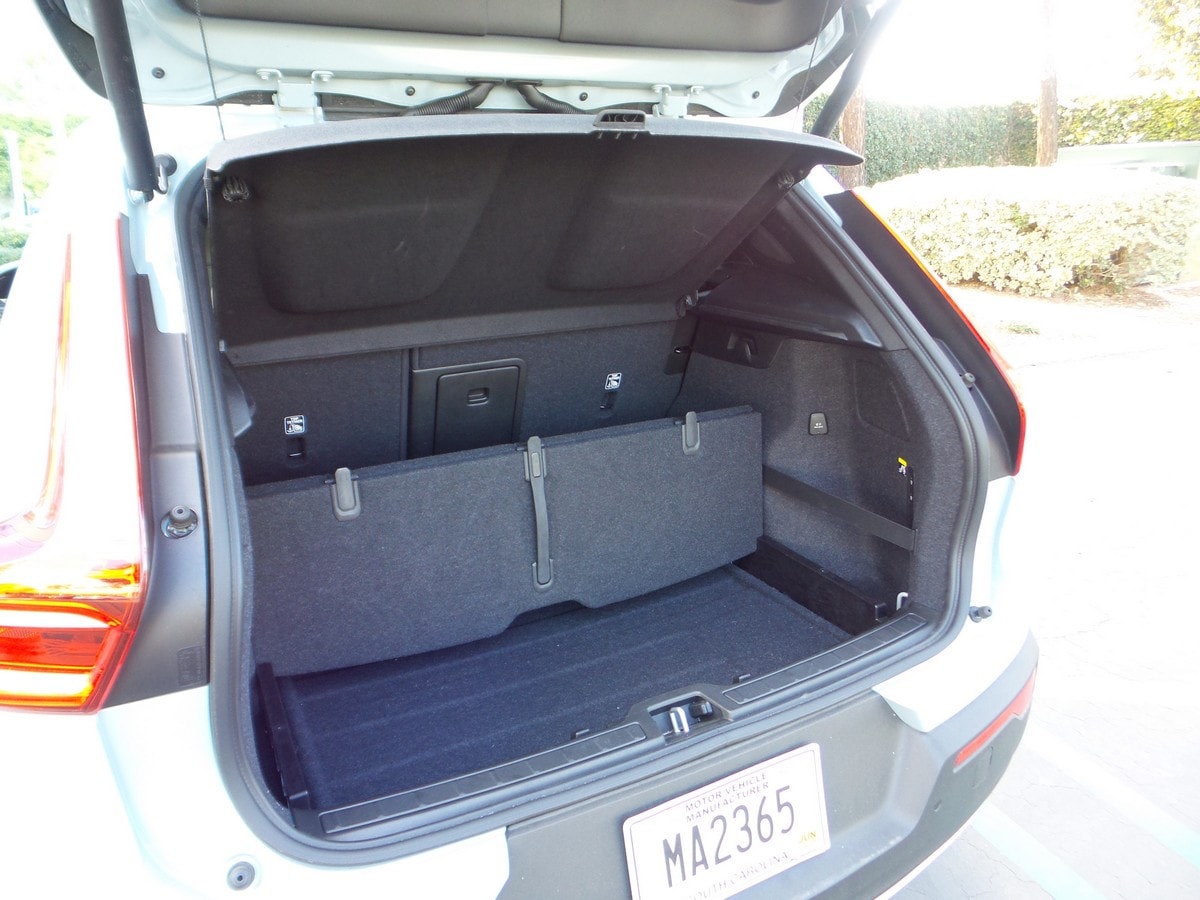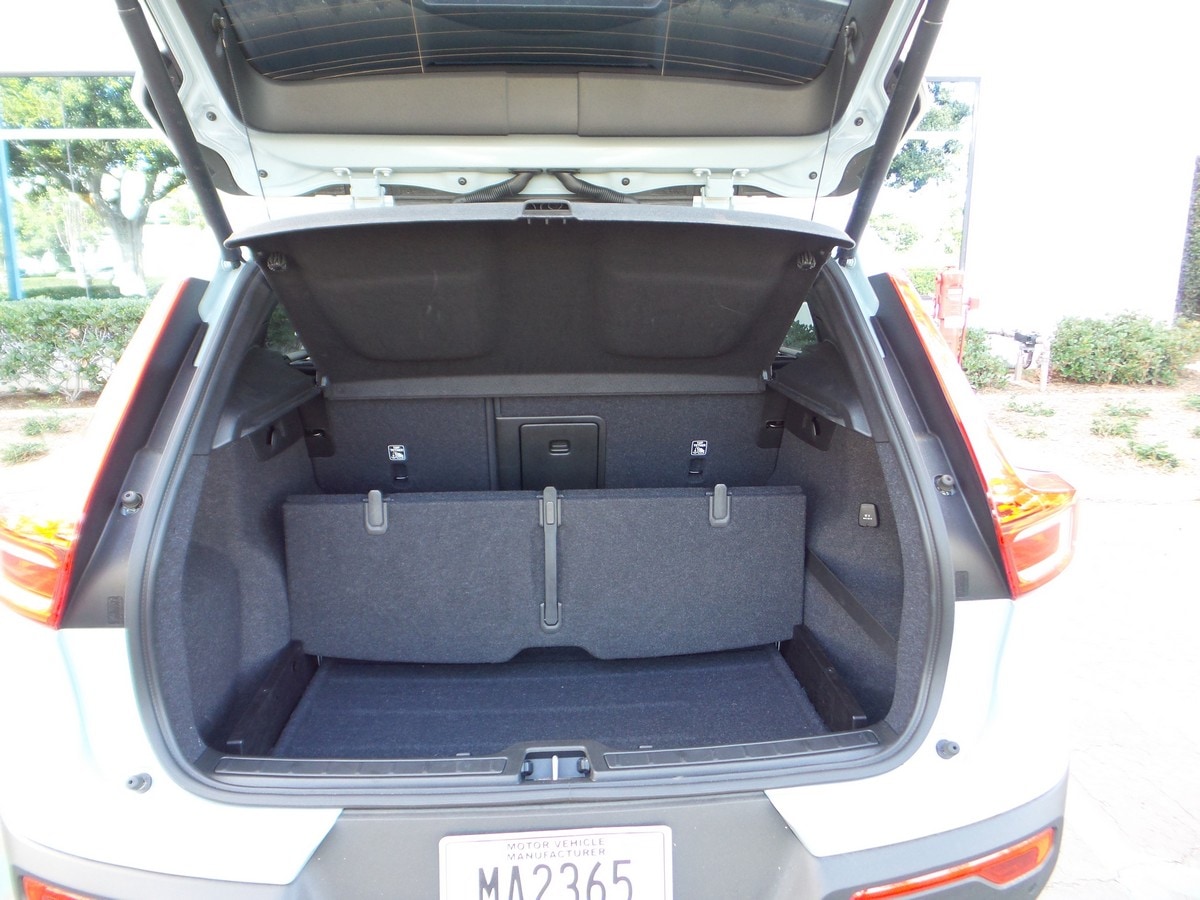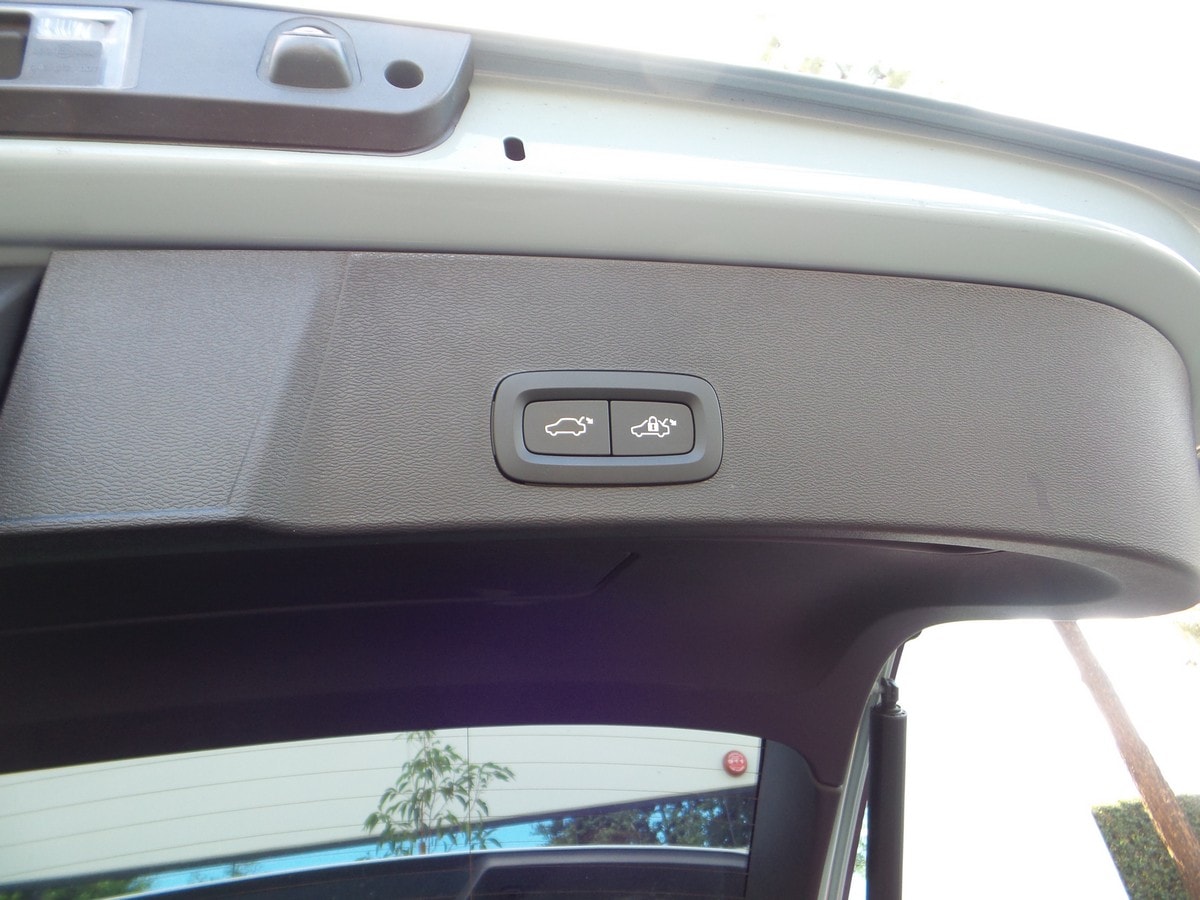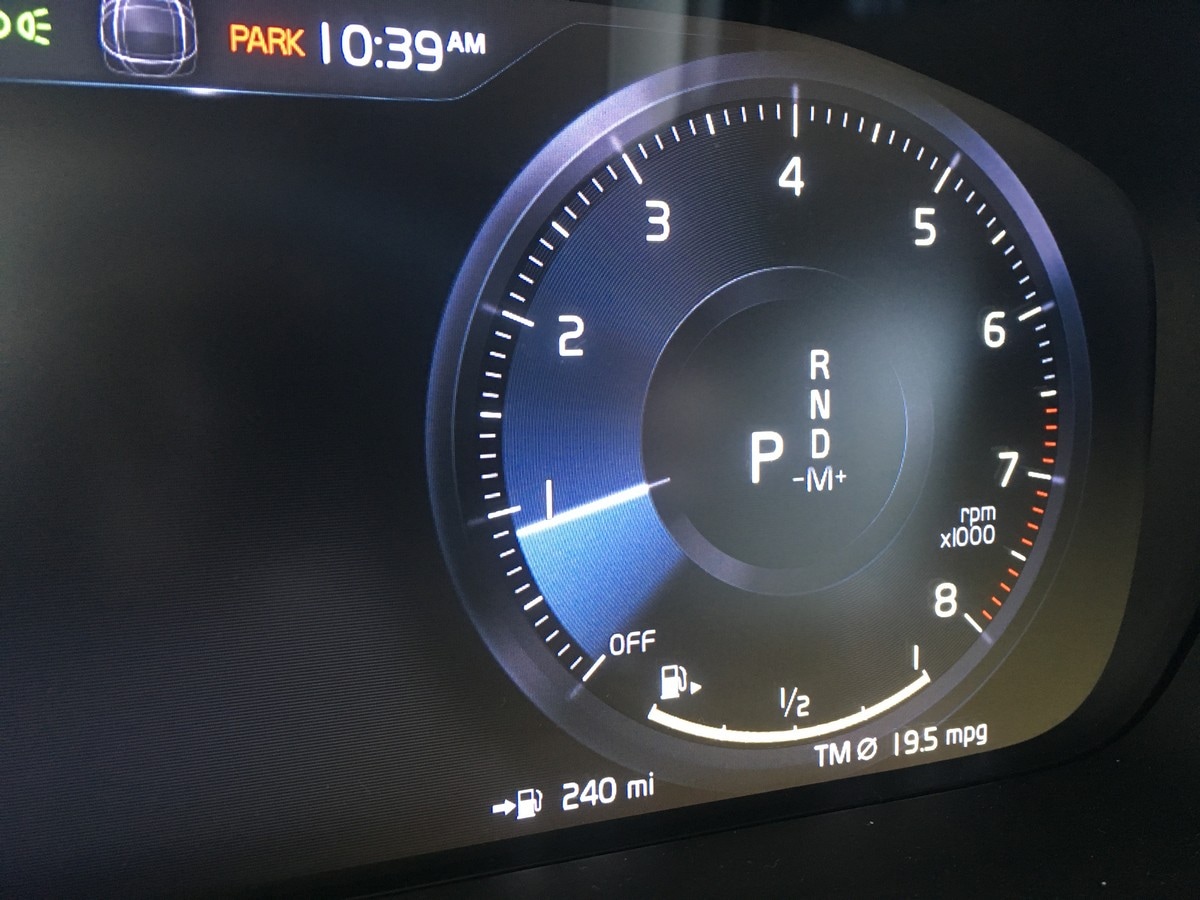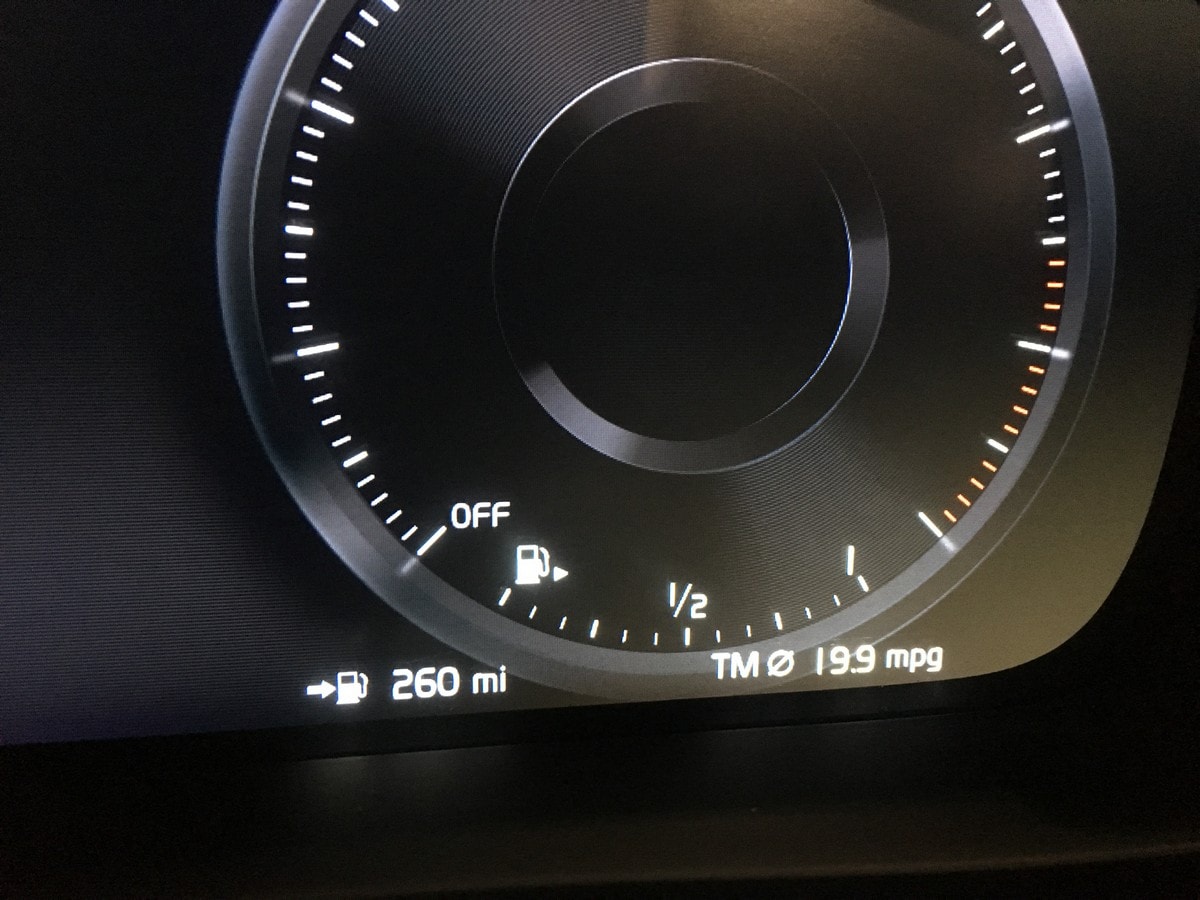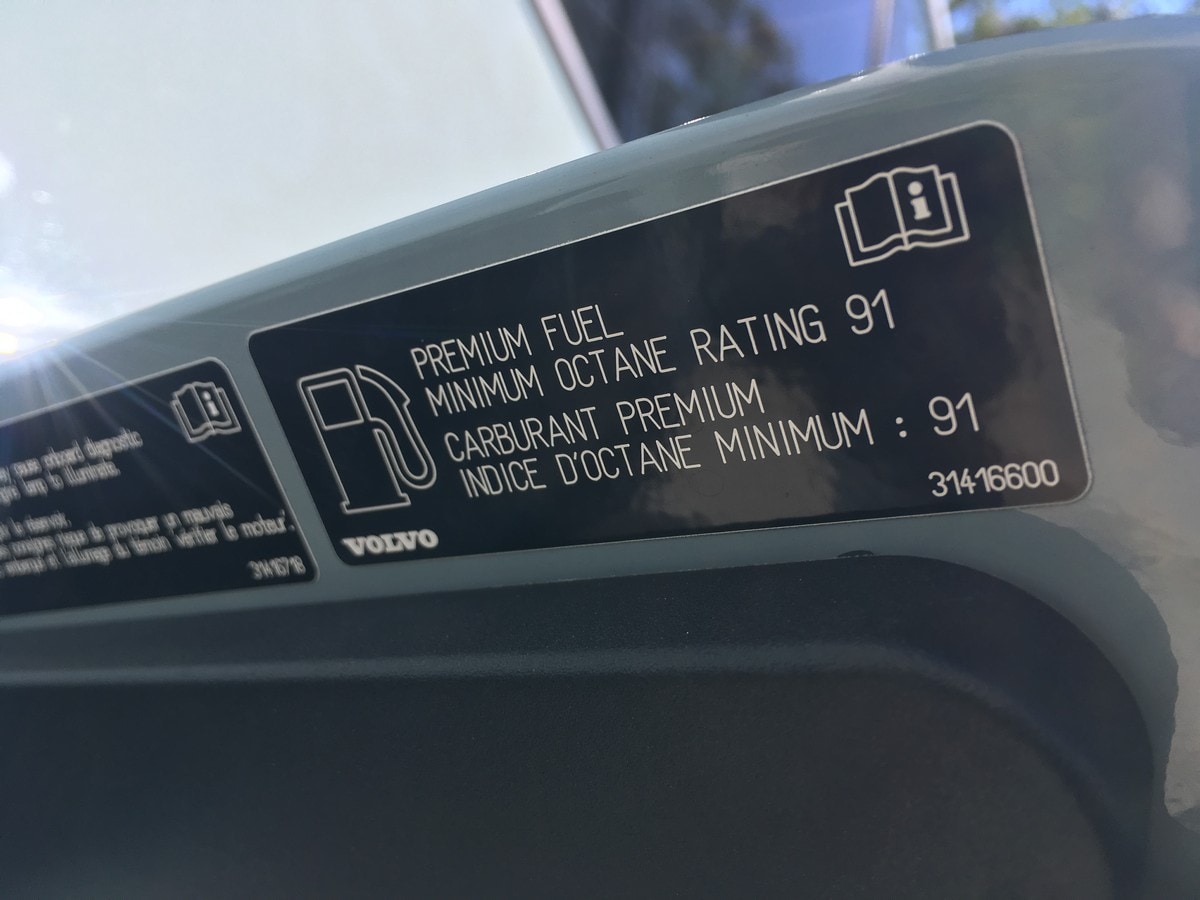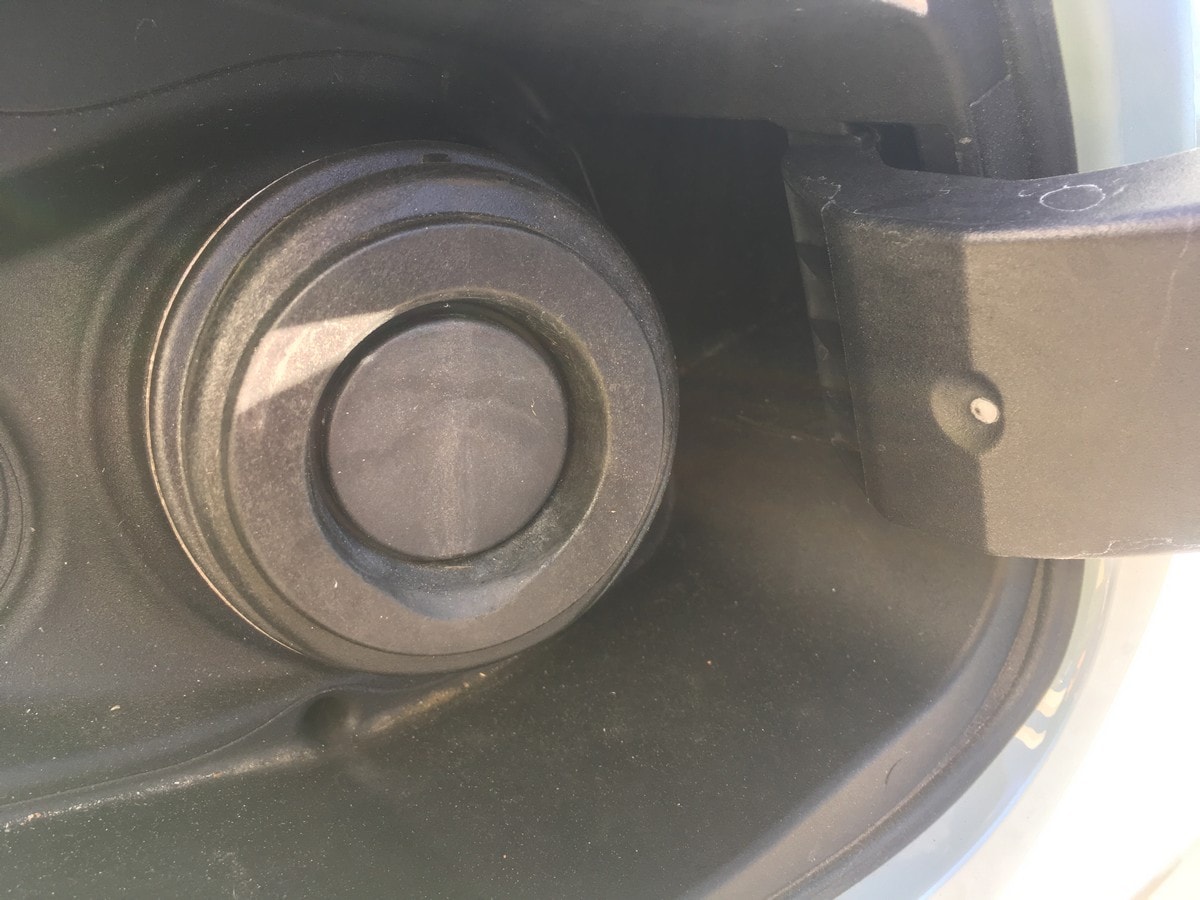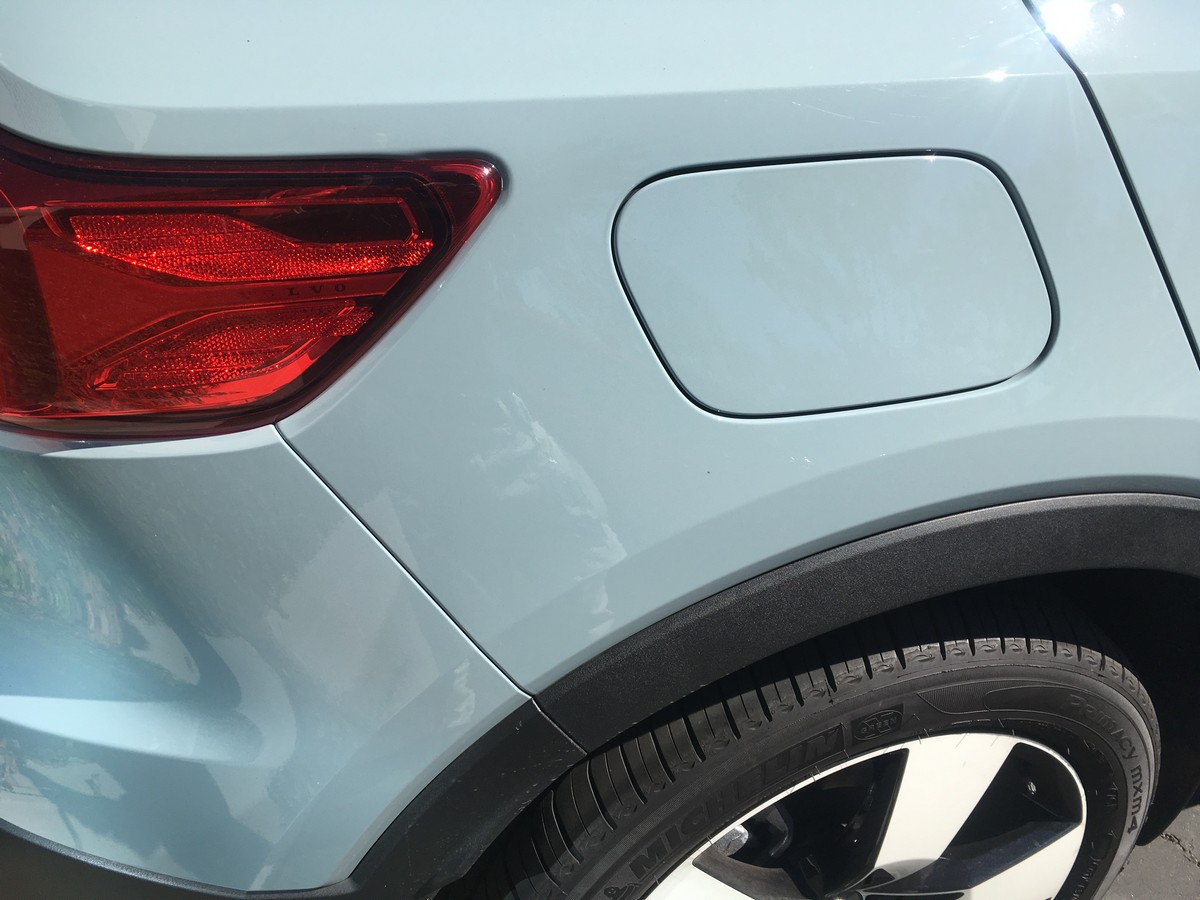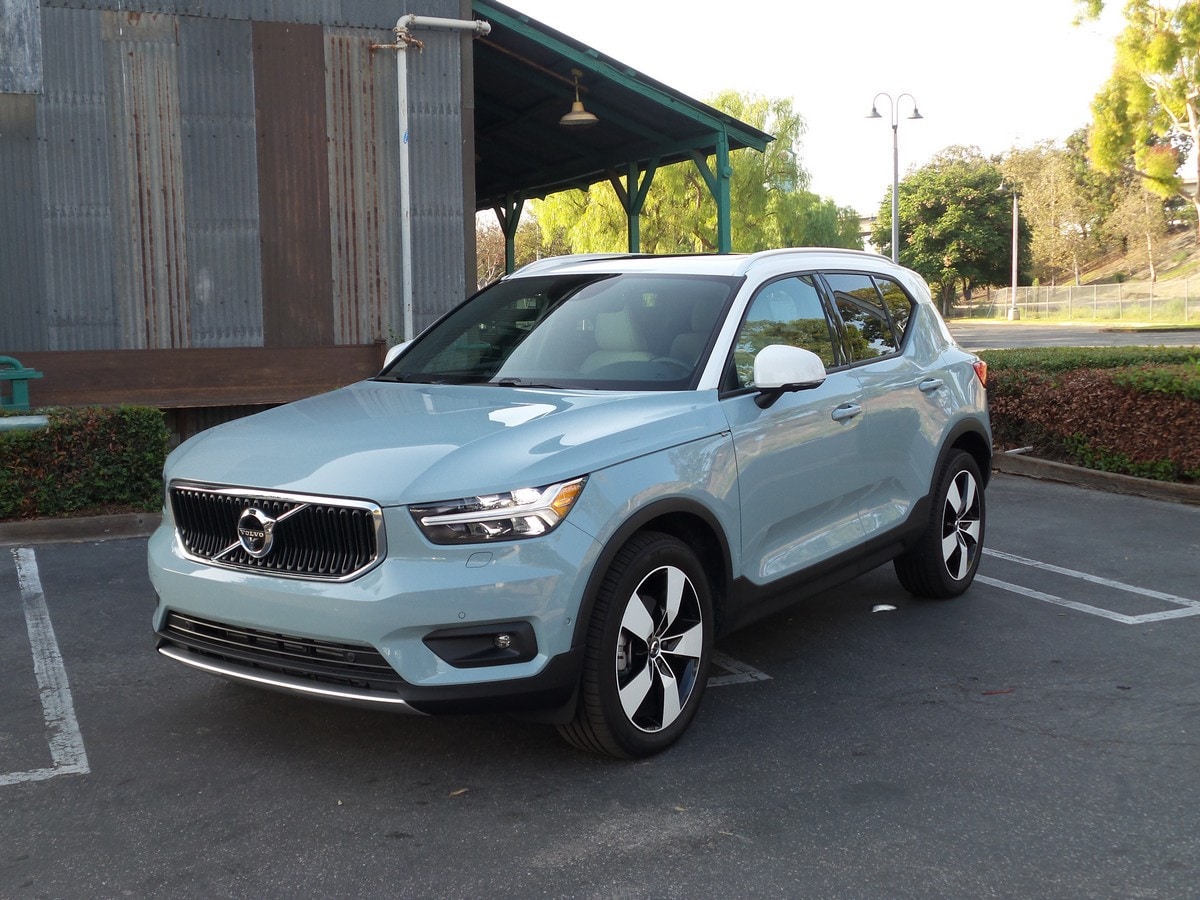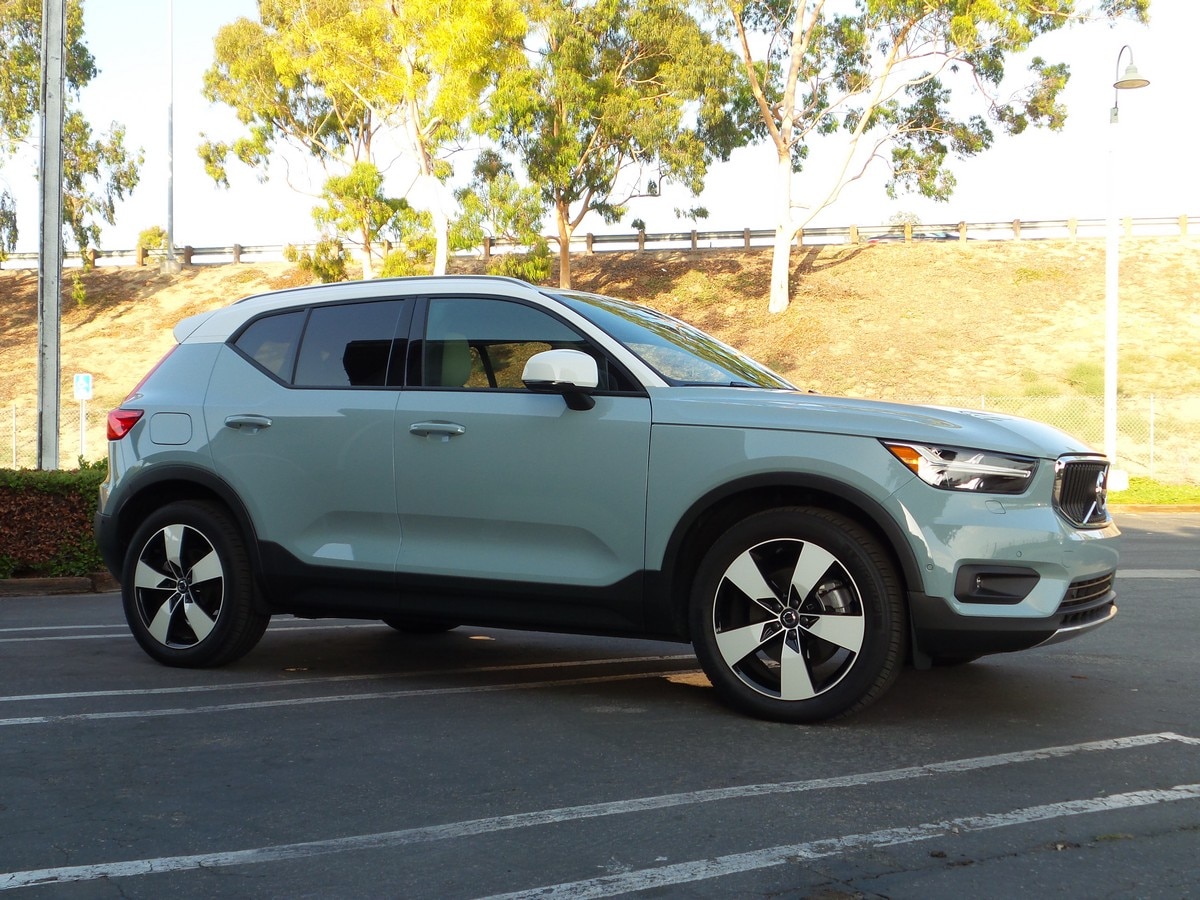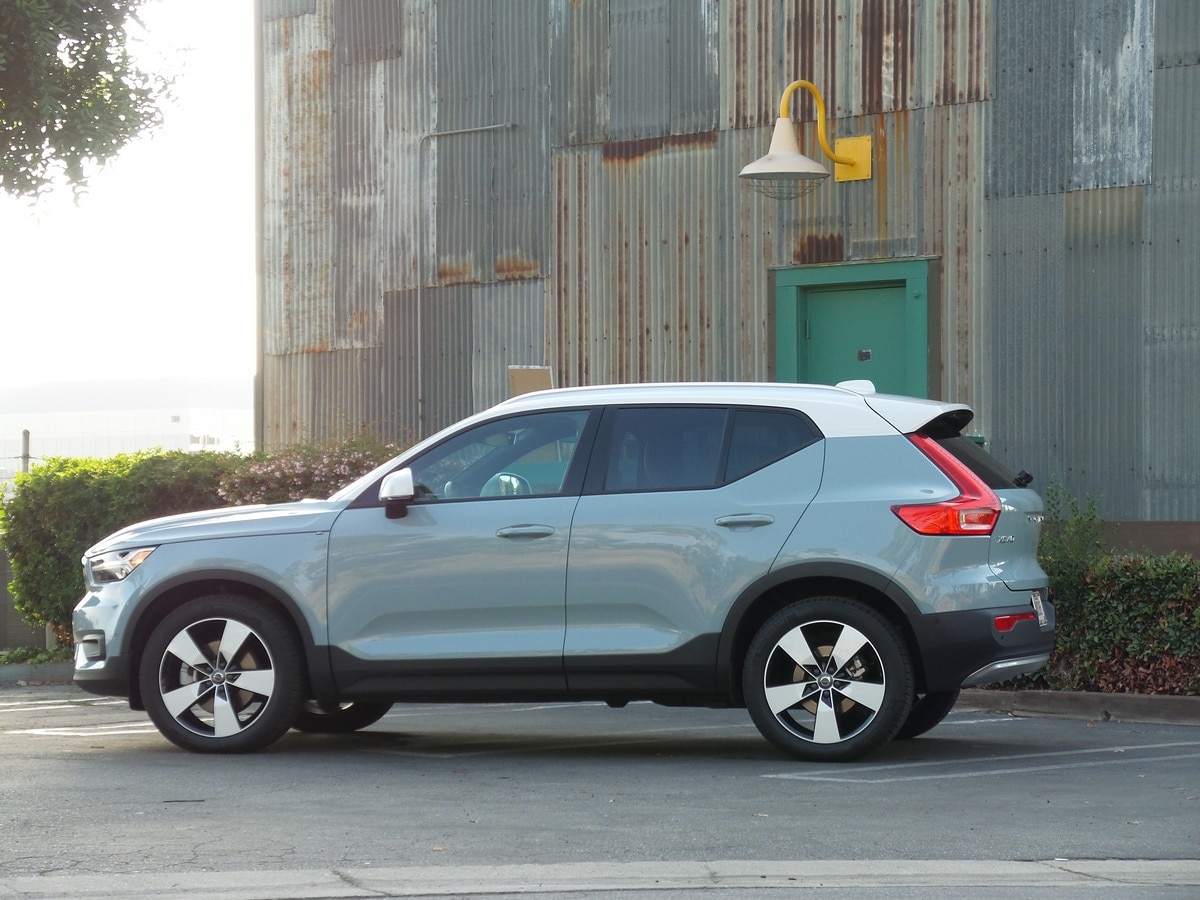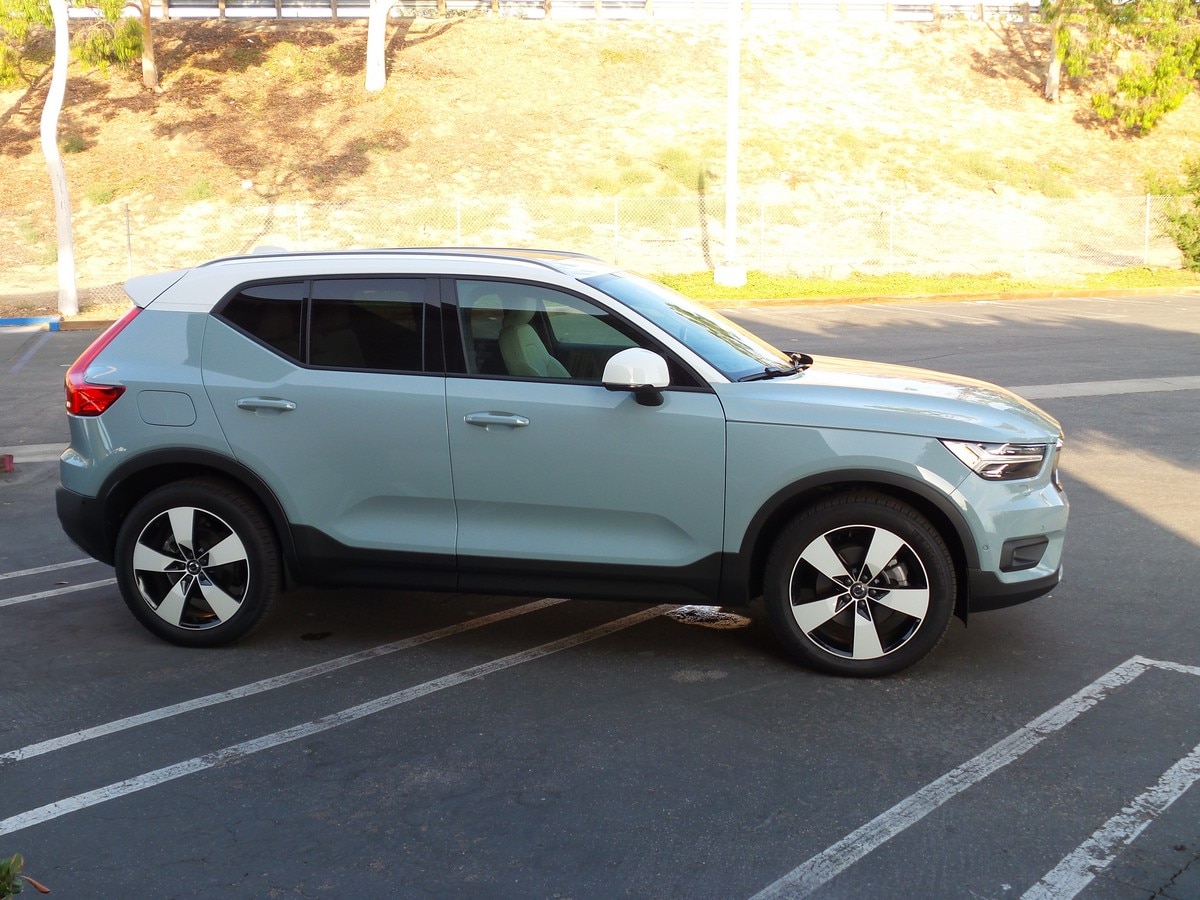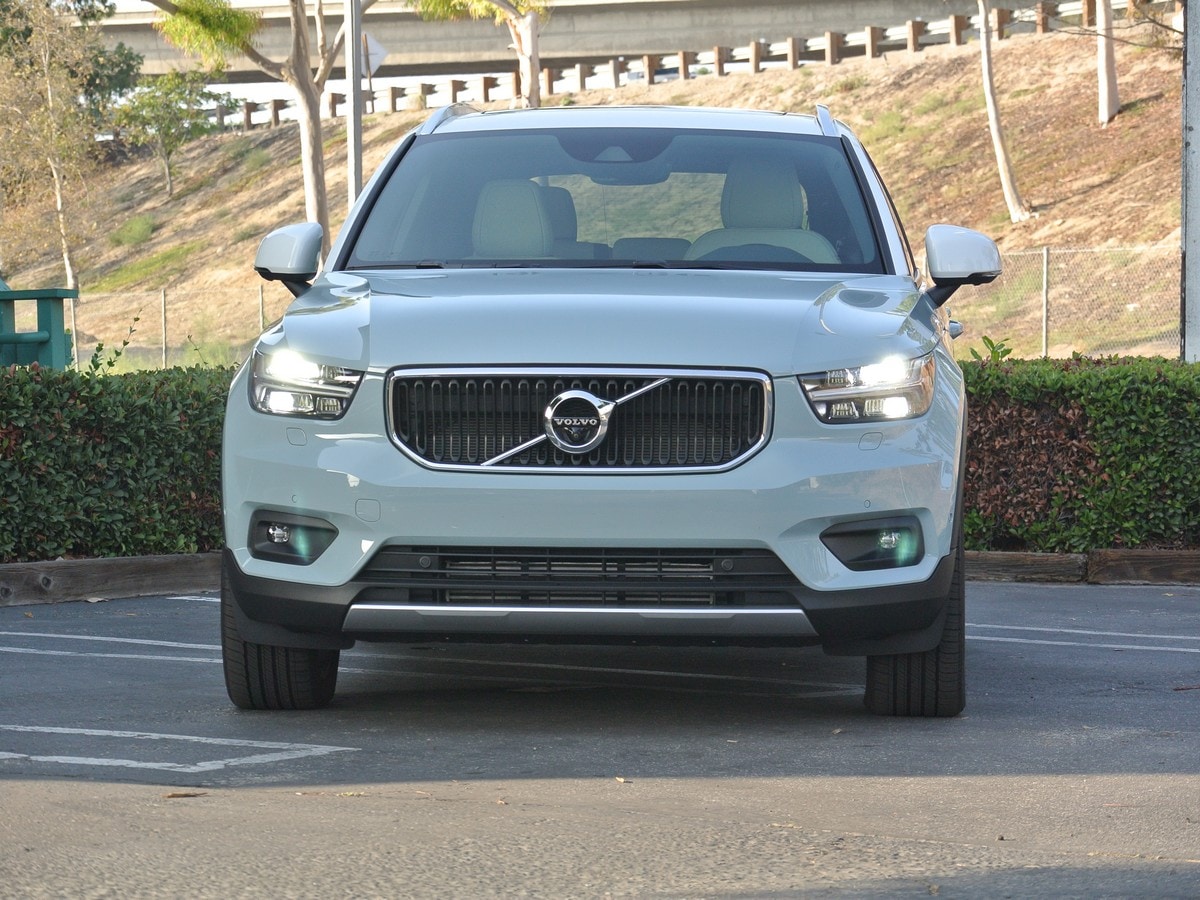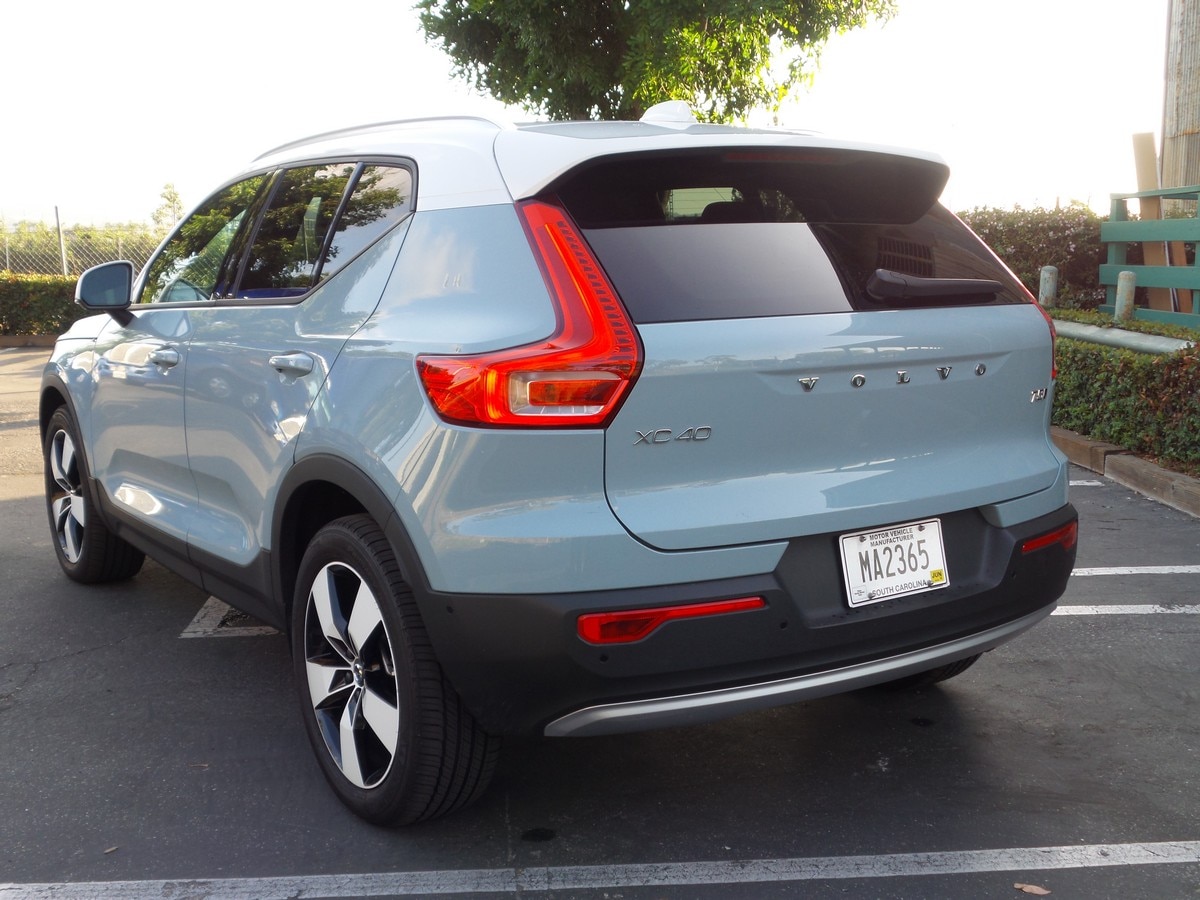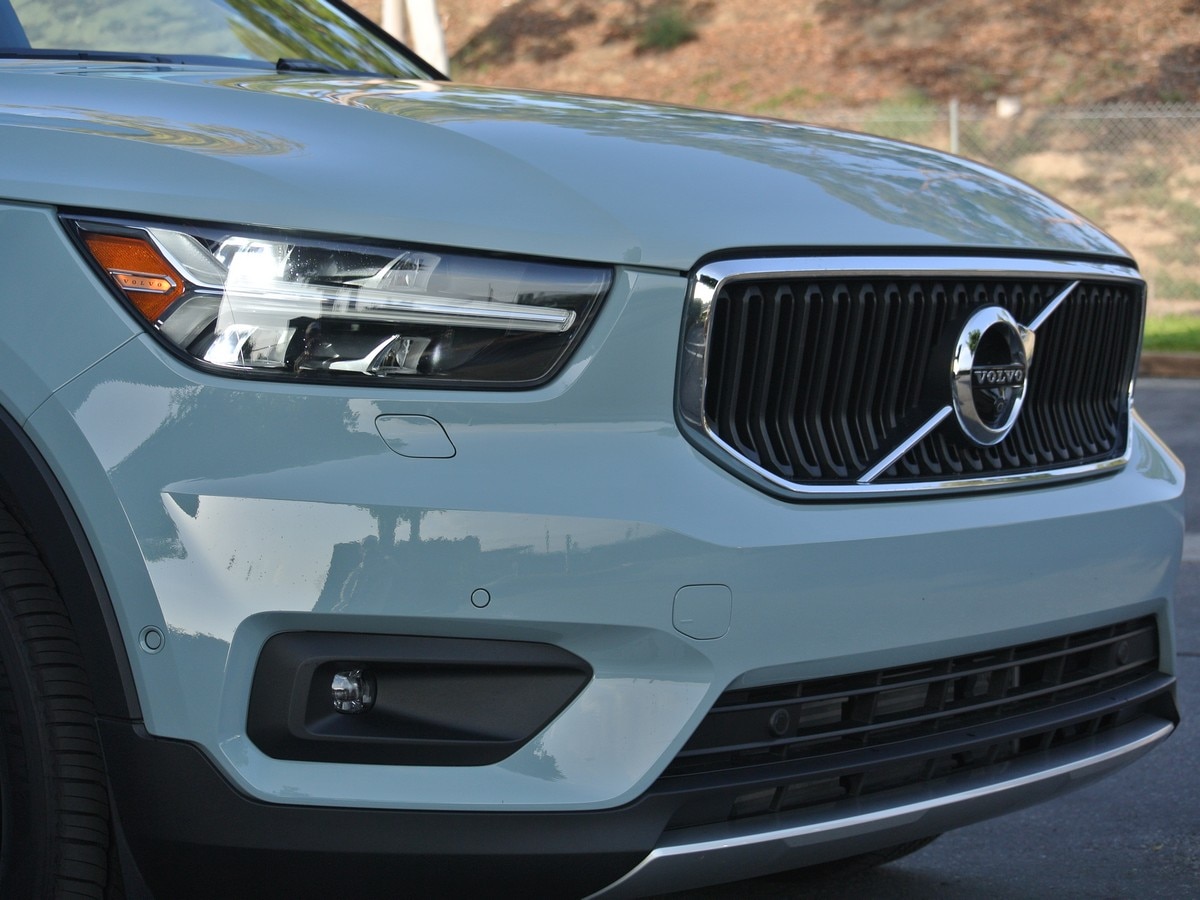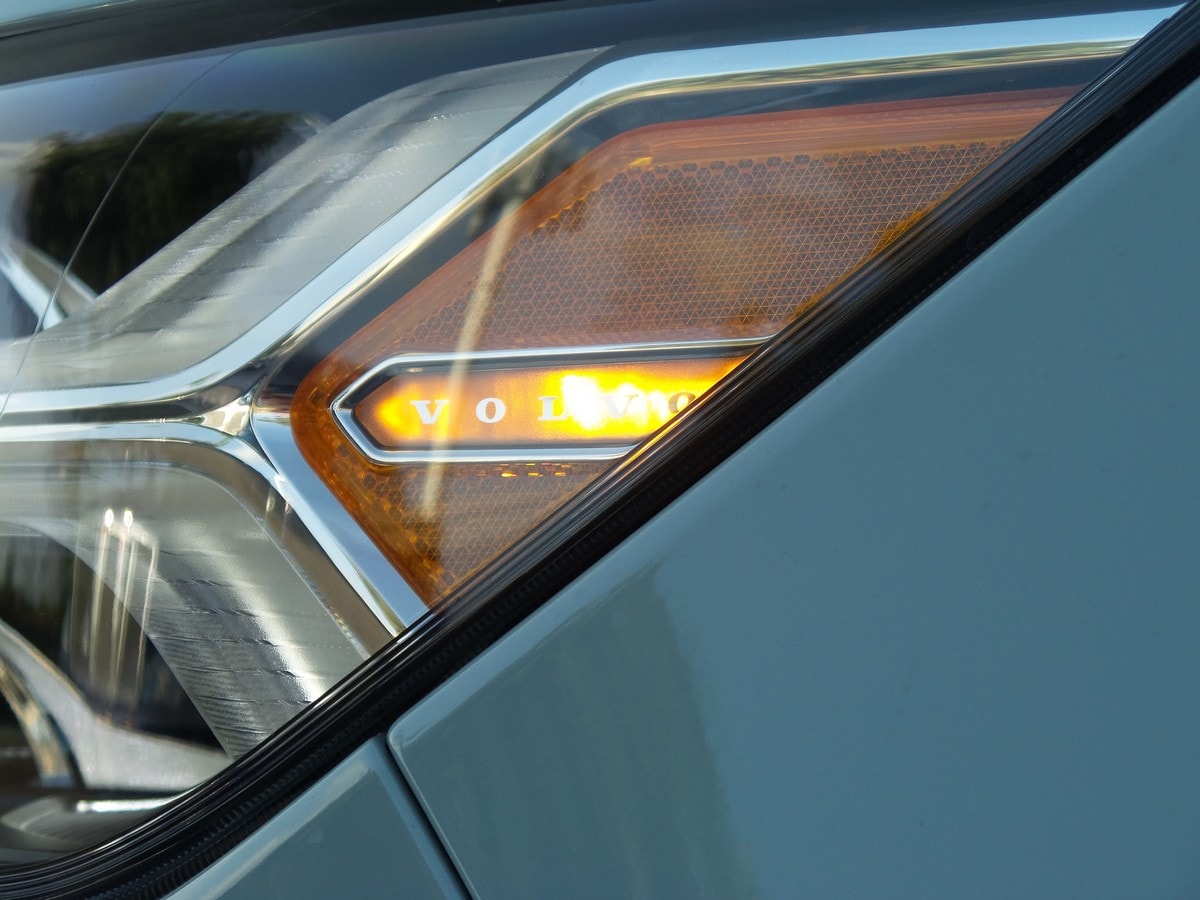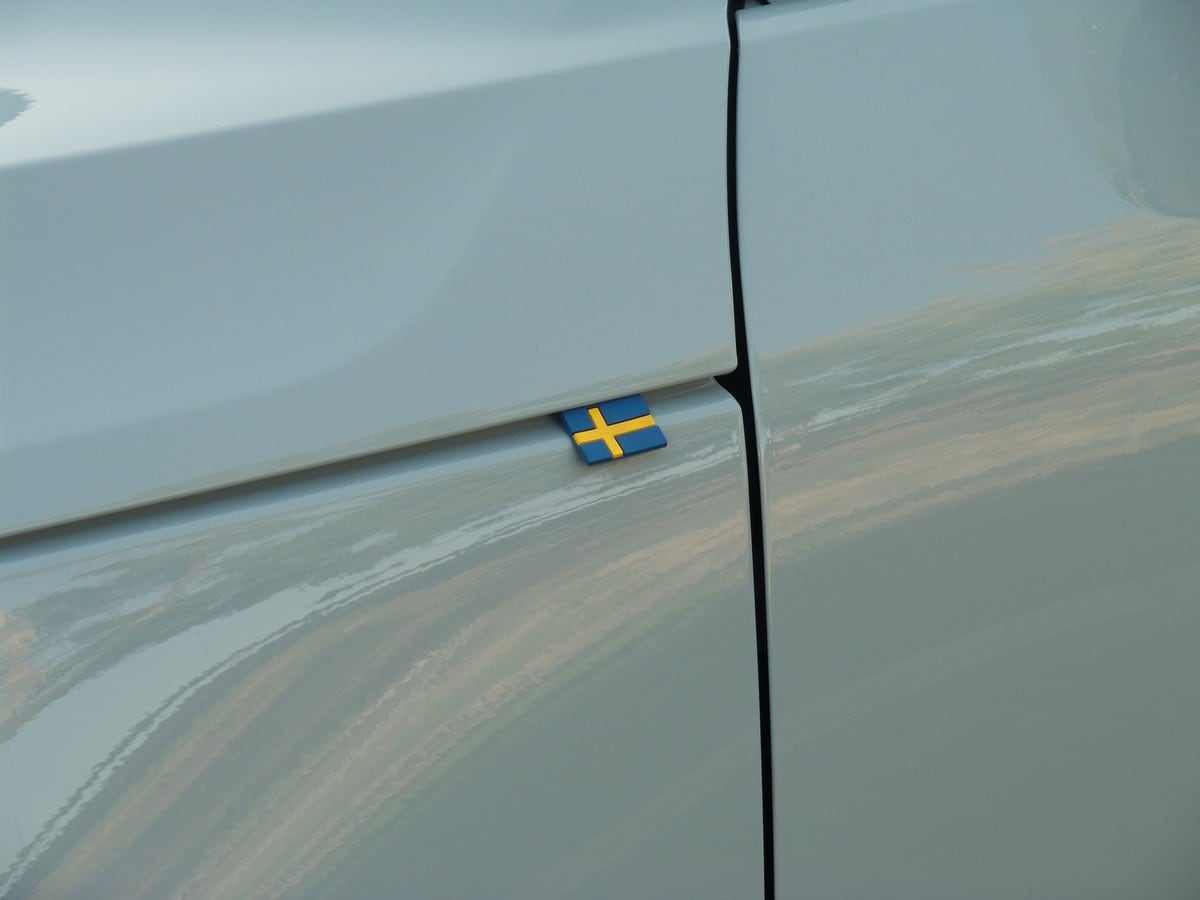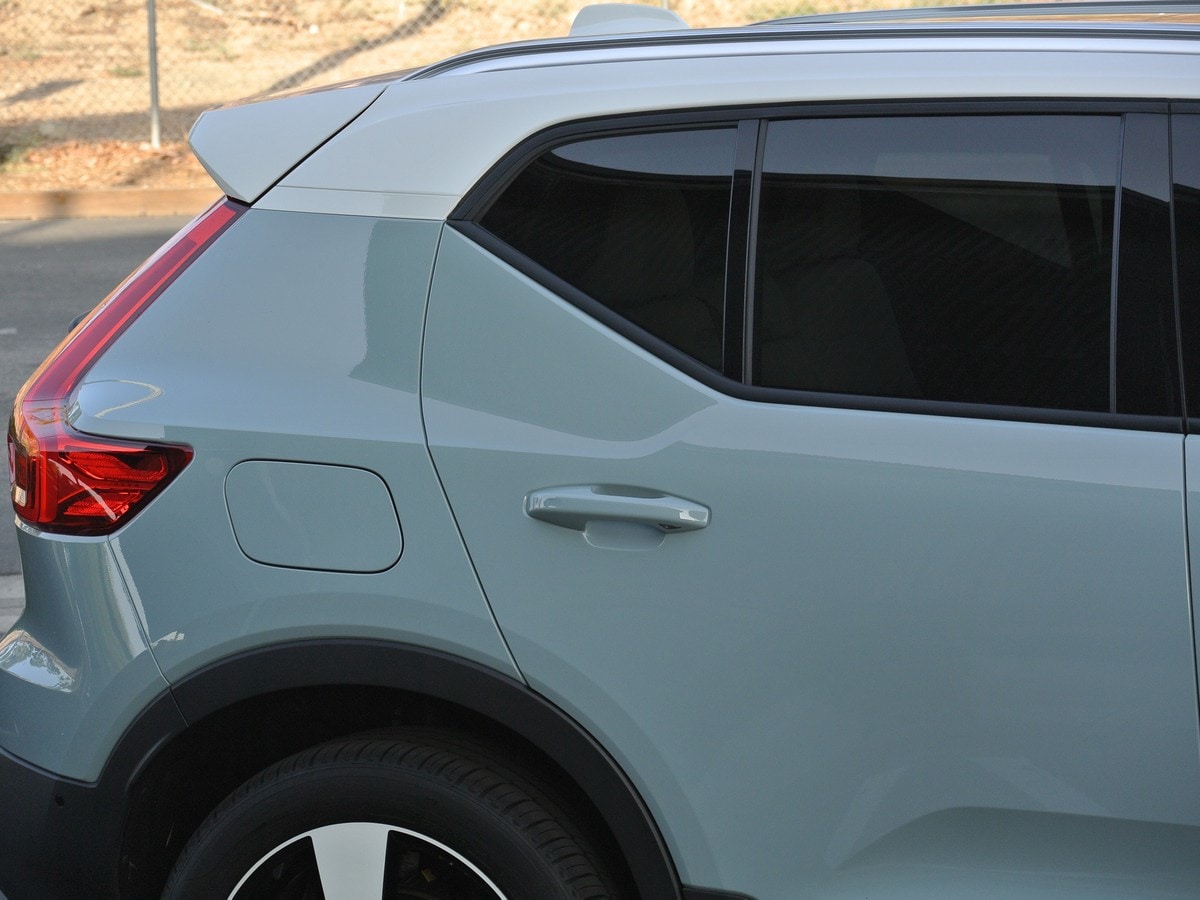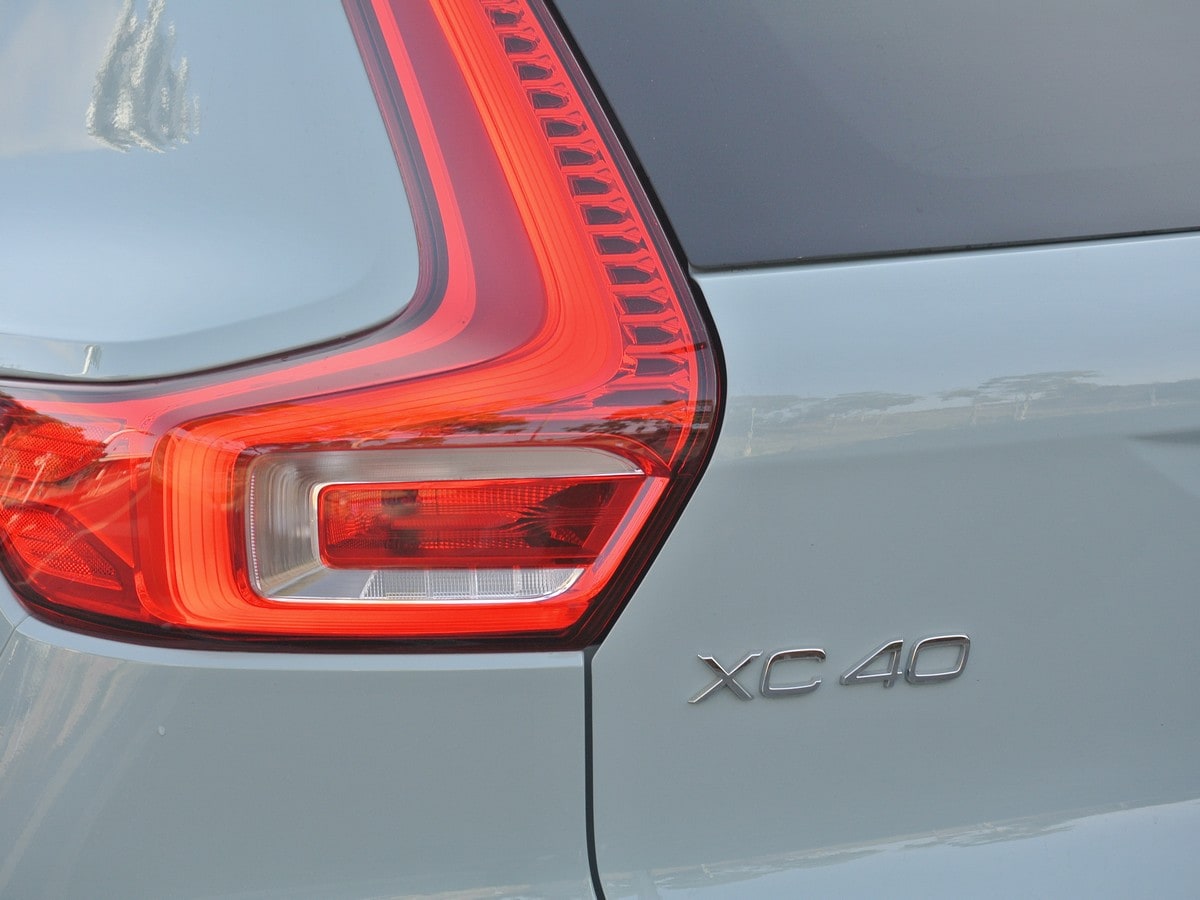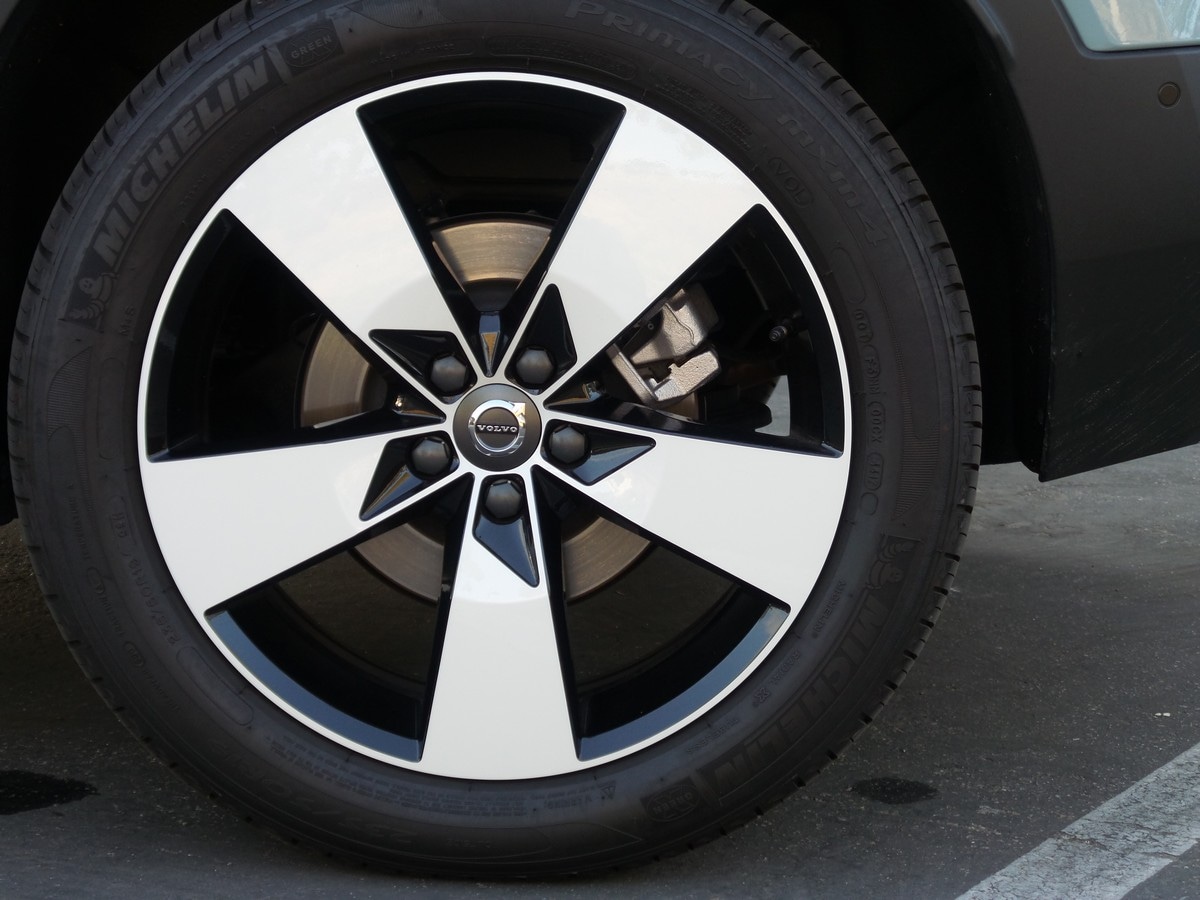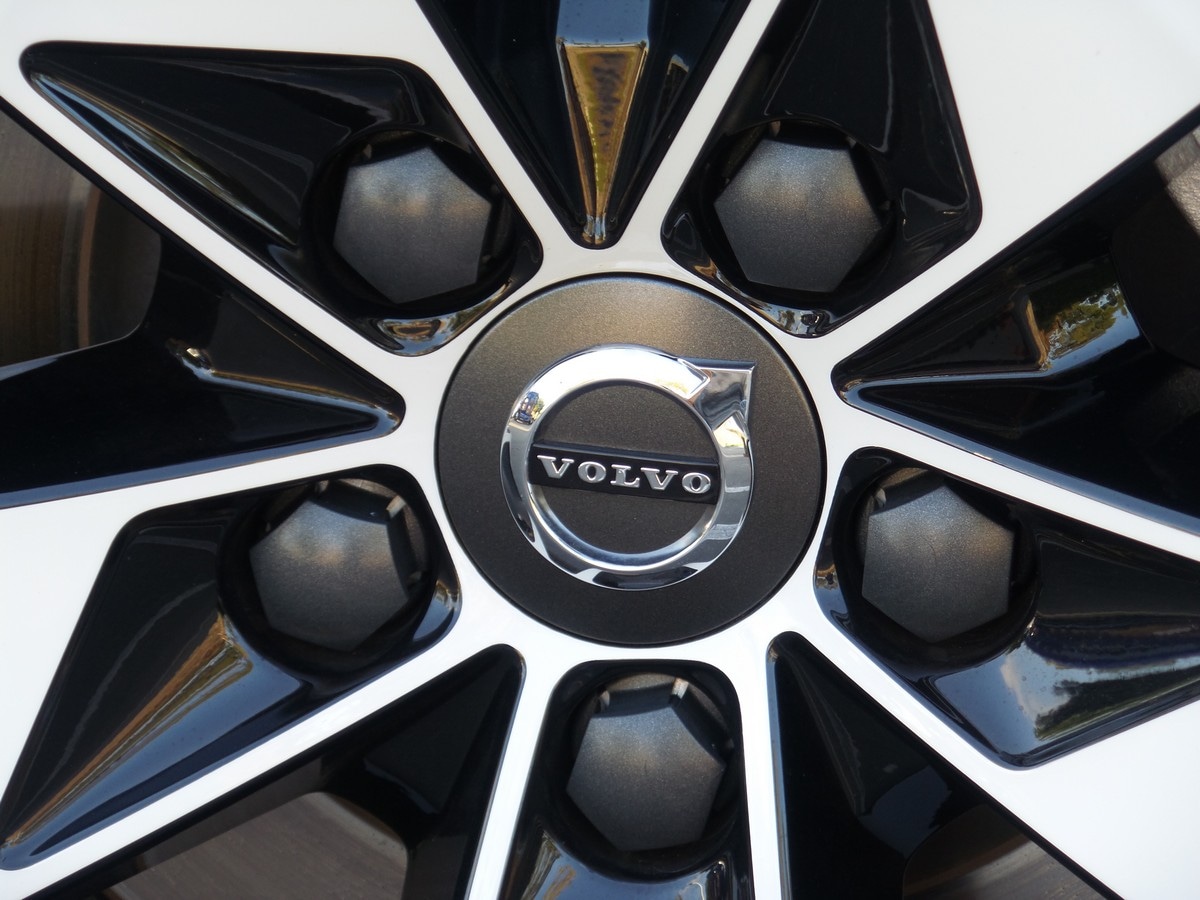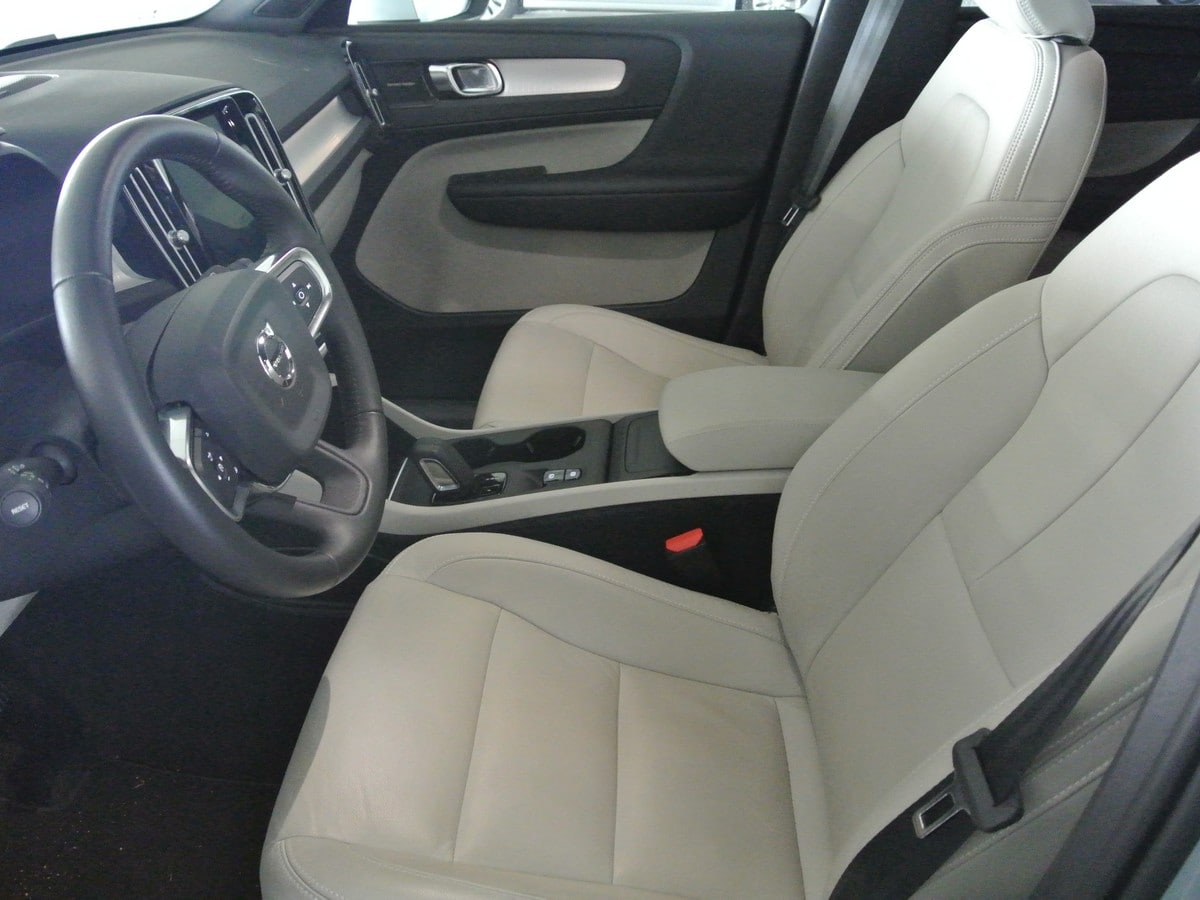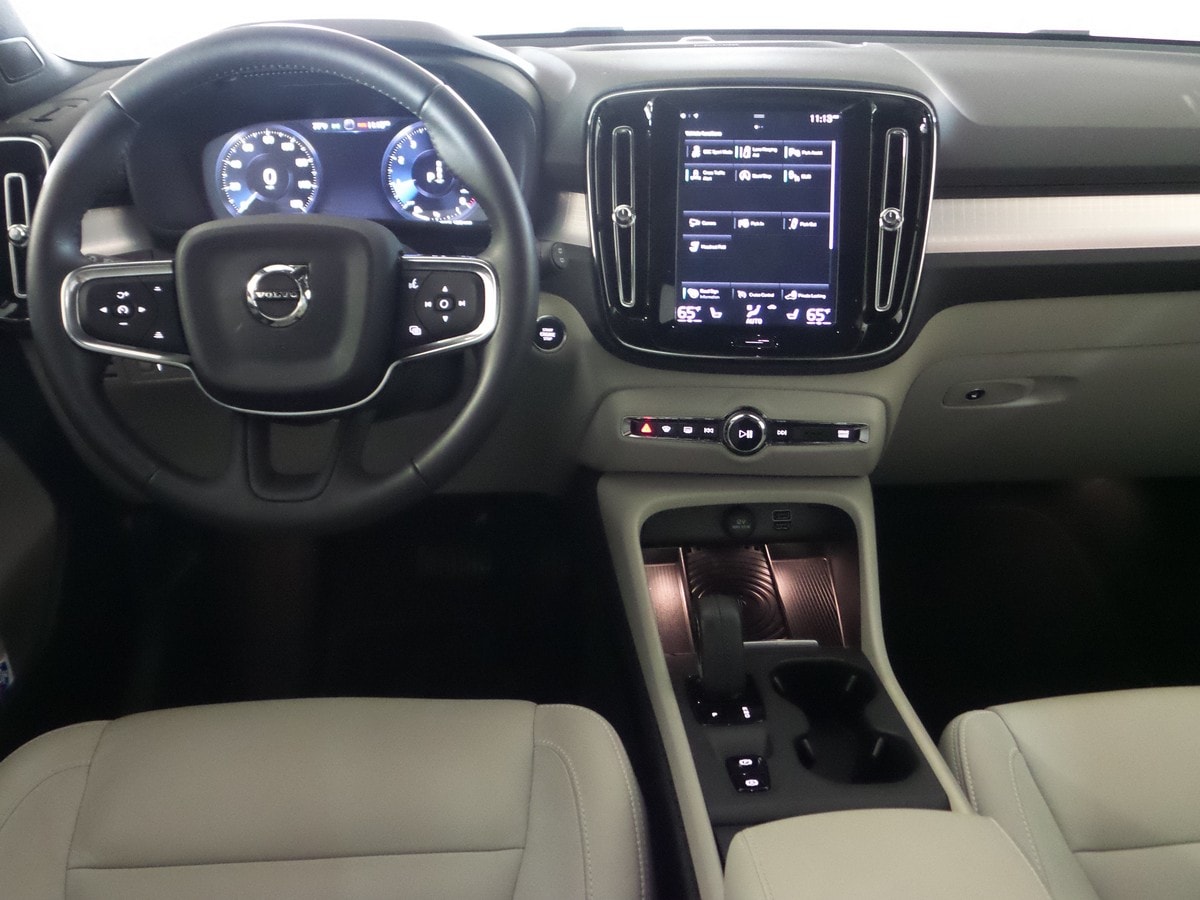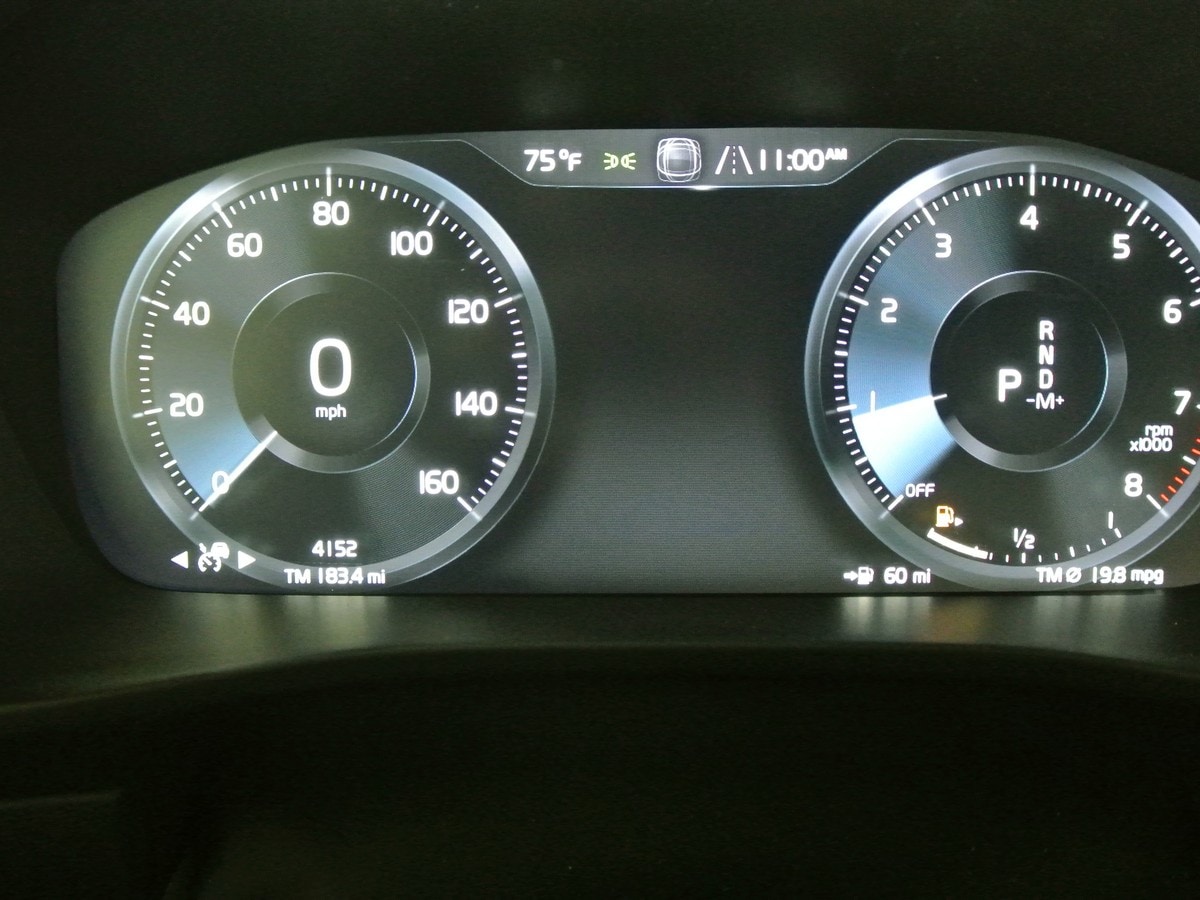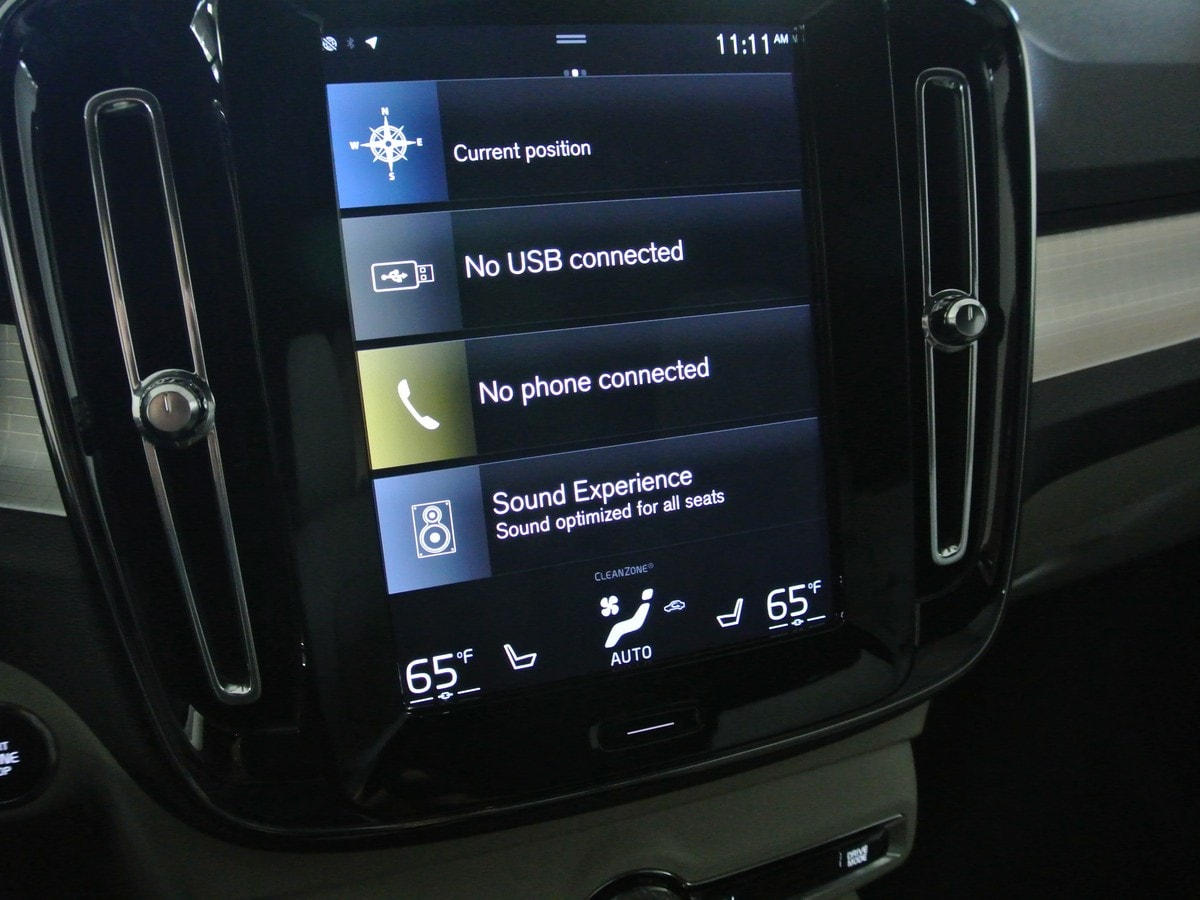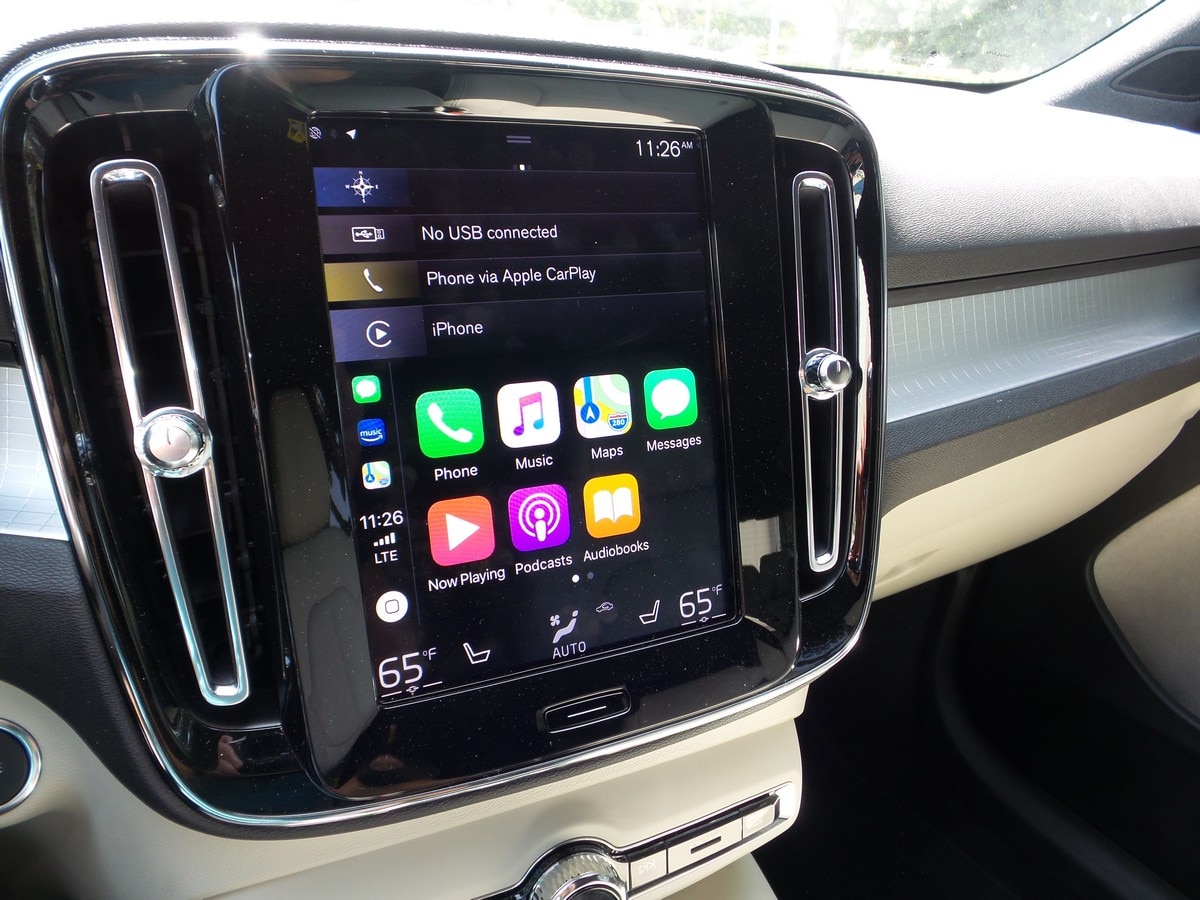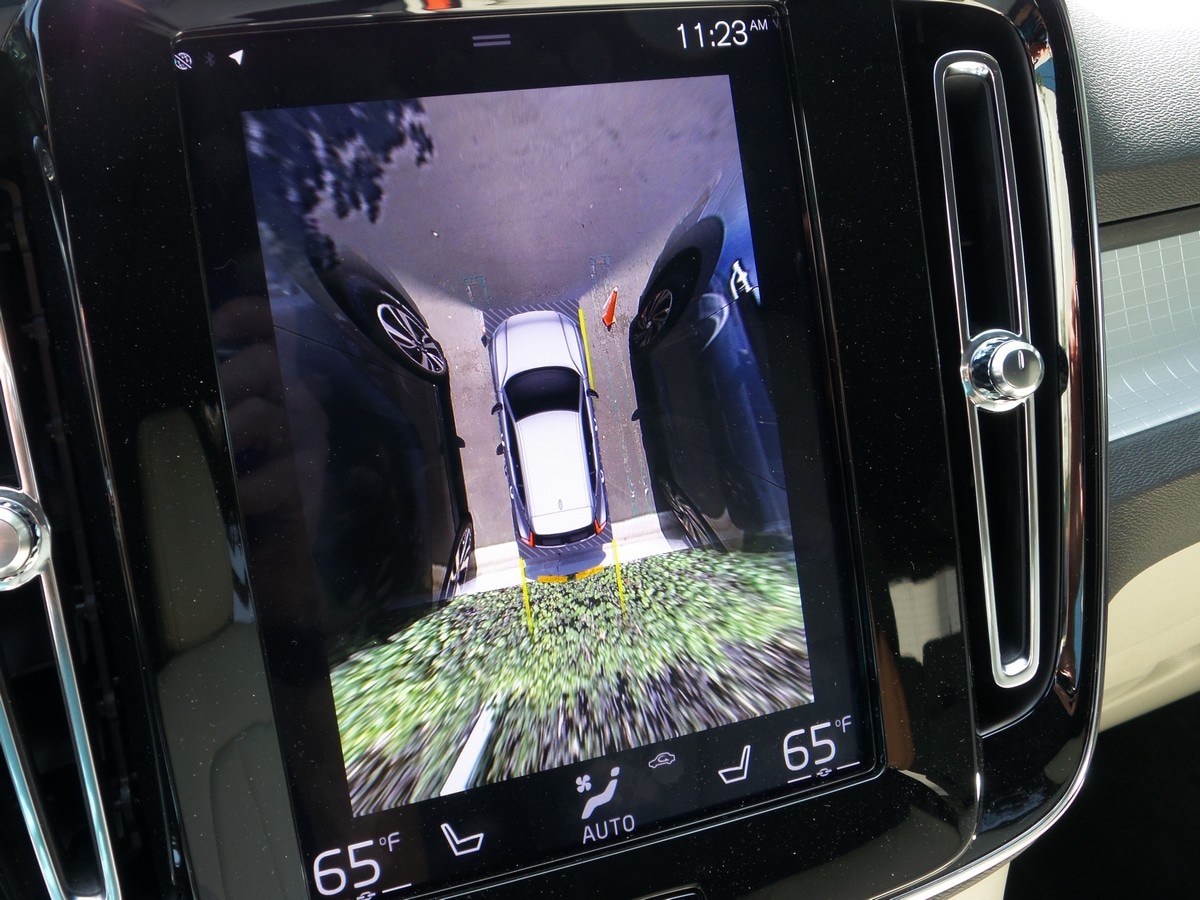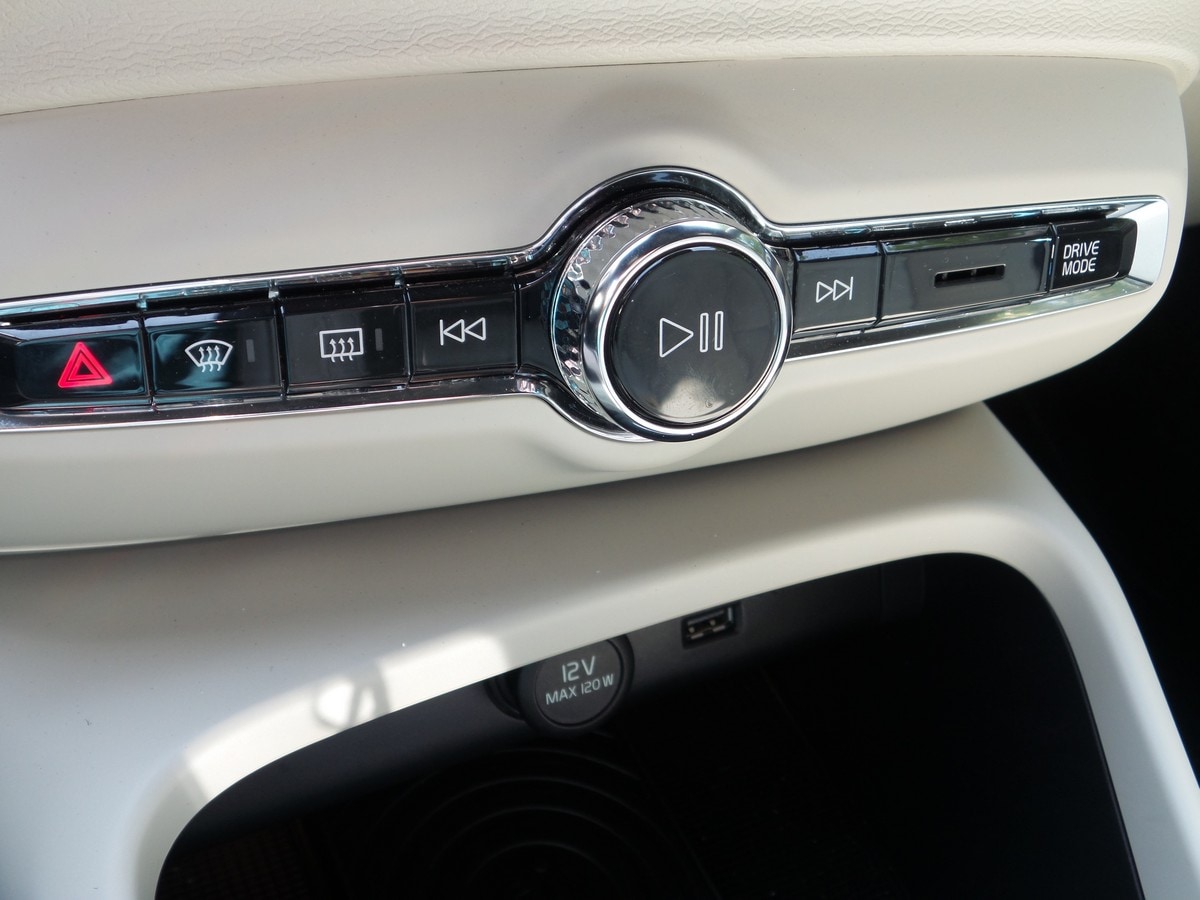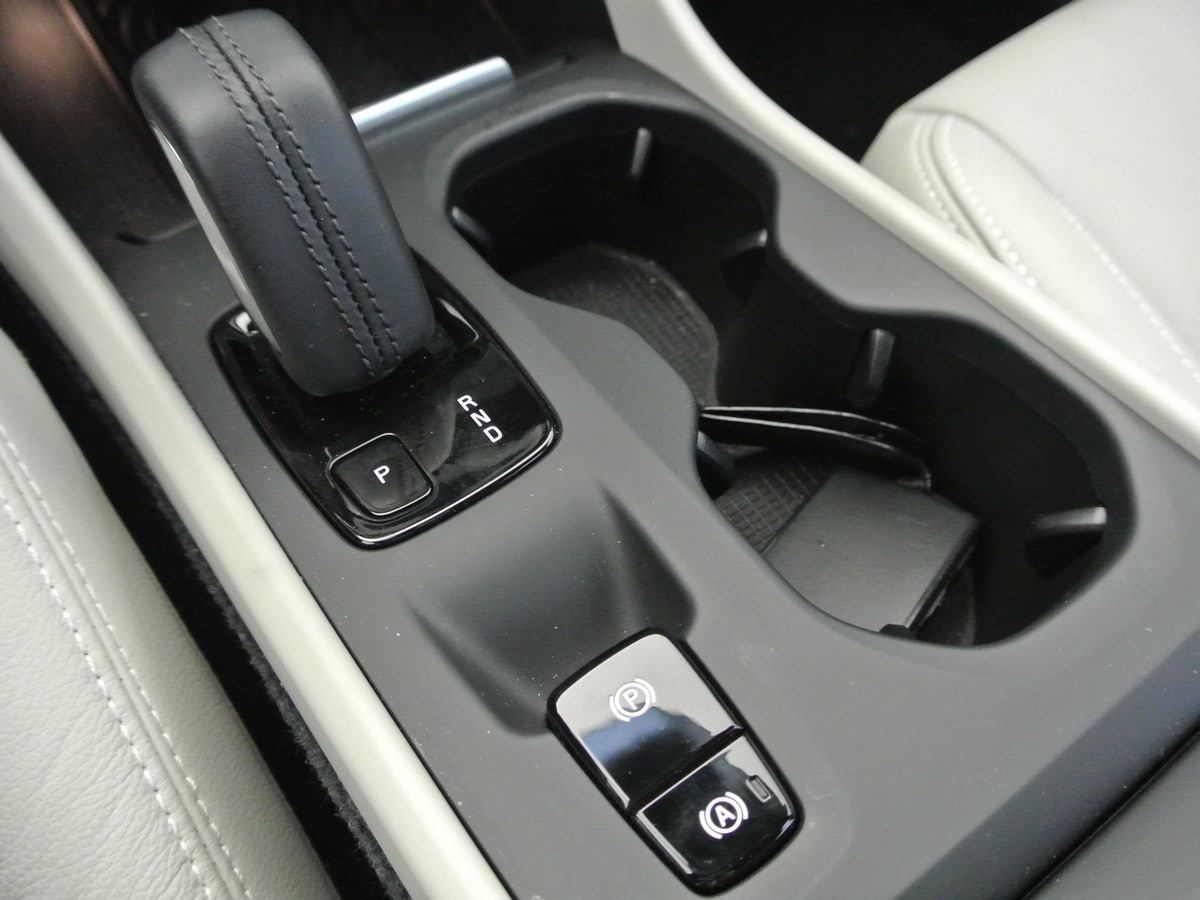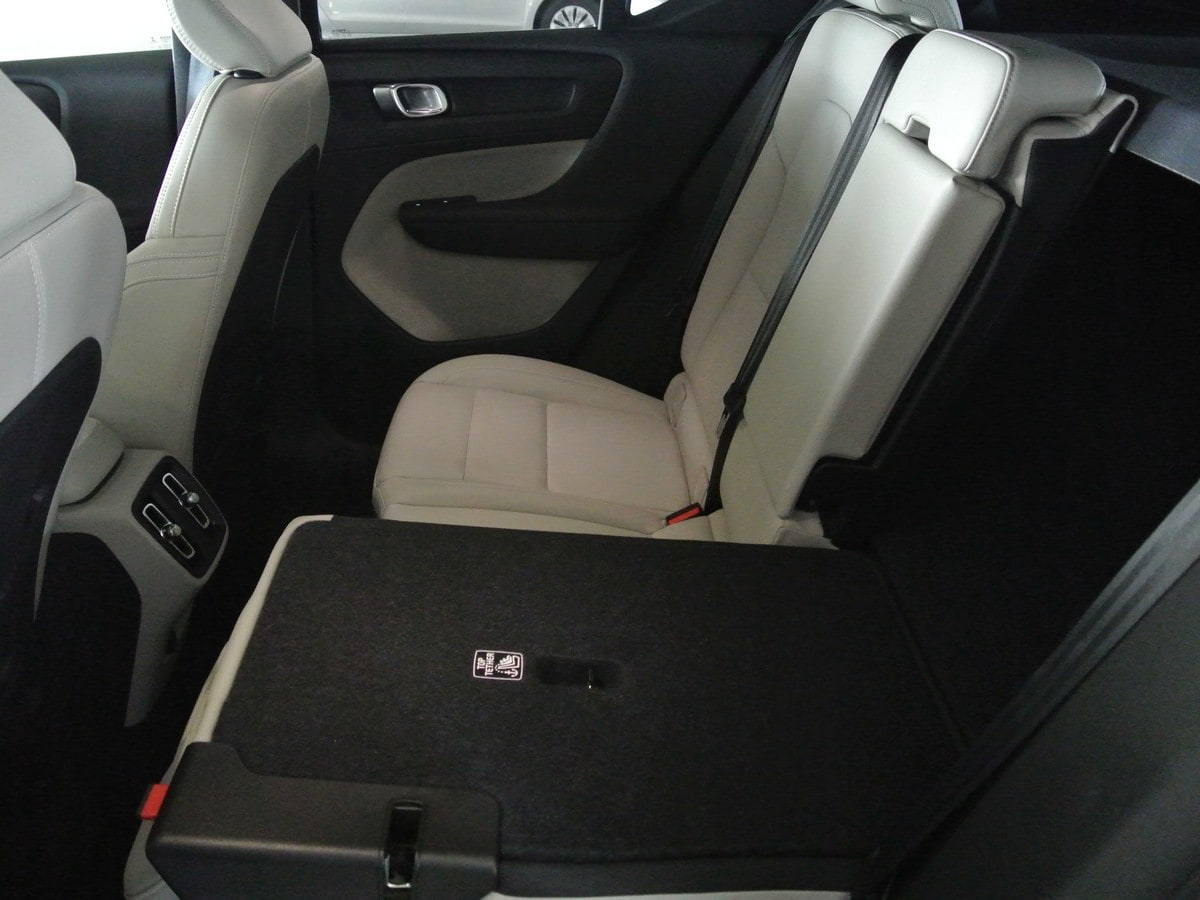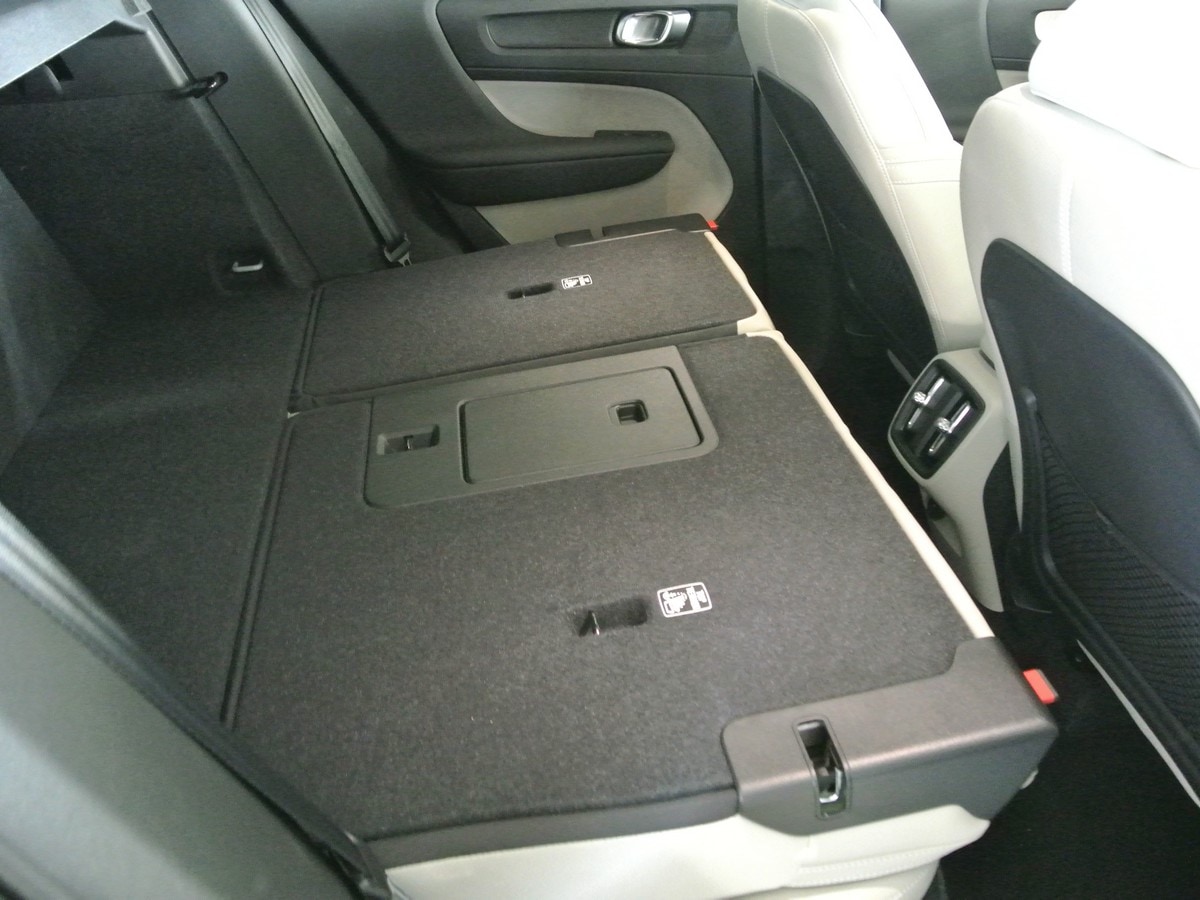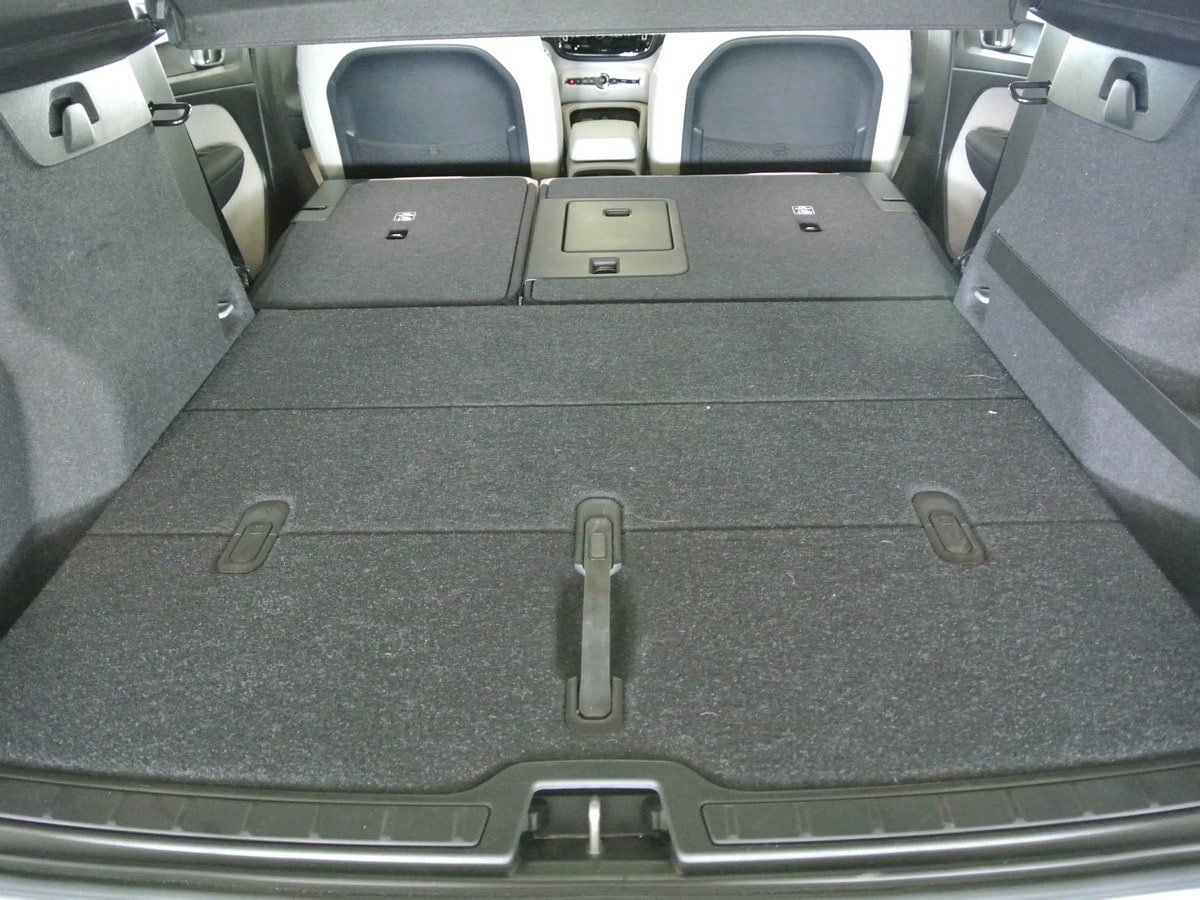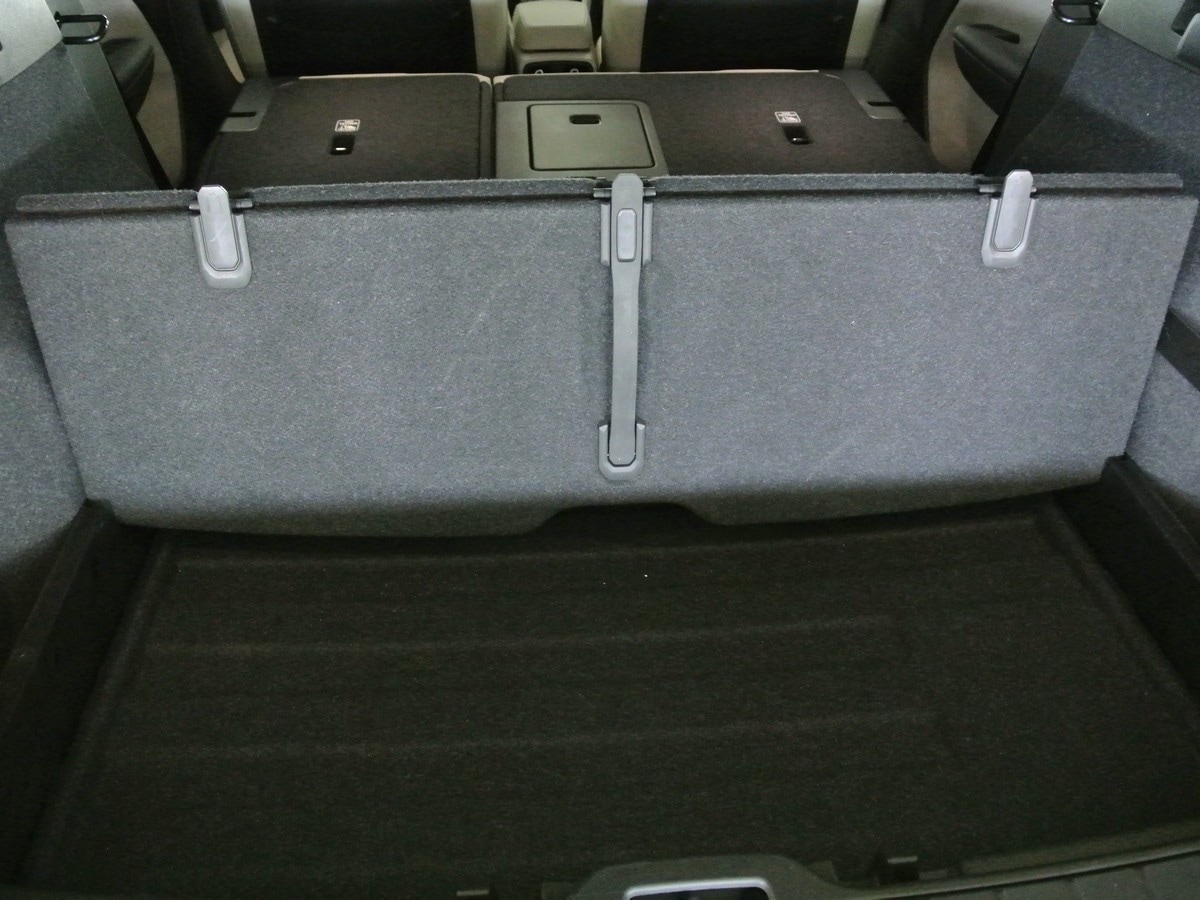We’re spending 12 months with this Volvo XC40, which wins two KBB Best Buy Awards for 2019, reviewing the full ownership experience with ongoing updates. How impressive is the XC40? It’s one of our favorite new models for 2019.
It’s a Wrap
by Matt Degen on September 20, 2019
Price: $44,315 | Price yours
Current Odometer: 12,038 miles
Latest MPG: 19.2 mpg
Lifetime MPG: 22.2 mpg
Maintenance/Service Costs: $0
Time out of Service: 0 days
Time really did fly with our Volvo XC40 long-term test vehicle. Cliché as that may be, the truth is it’s a testament to just what a great vehicle it has been. It was among the more memorable cars that has served in the Kelley Blue Book long-term fleet over the years.
It arrived a year ago with just shy of 4,000 miles on the odometer, and left our fleet with a touch over 12,000 miles on the odometer. In that time and over those miles, we are happy to report that we had zero mechanical problems or other issues. We took it in for the regularly scheduled 10,000-mile maintenance service/vehicle check and everything passed with flying colors. And if you haven’t already read our update on that experience below, remember that new Volvos come with 3 years or 36,000 miles of complimentary service – a nice surprise.
Everyone on the staff drove the Volvo XC40 at some point, and we all liked it so much that we named it both our Subcompact Luxury SUV Best Buy of 2019 and the overall best new model. That’s some seriously high praise and shows just how solid this vehicle is, not just in its class but in general.
While no car is perfect, this one has far more positive traits than it does negative ones. As the editor who did the majority of driving and writeups on the 2019 Volvo XC40, I conclude our coverage with my likes and dislikes.
Likes
- Design: Yes, beauty is in the eye of the beholder, but I really dig the looks of the XC40. It magically blends tough, cute, practical and modern yet classic. There are distinctive touches large and small, from the optional contrast-color roof to the tiny Swedish flag above the left front wheel arch. Perhaps best of all, the design actually helps the Volvo’s practicality. Its boxy shape, in contrast to the rounded and sloped profiles of some other SUVs, means more interior cargo room.
- Size: Not everyone needs a huge SUV. For my wife and I, the Volvo XC40 perfectly suited our needs. Its tidy size – just over 174 inches long – also meant it was a snap to maneuver in tight spots and left room to spare in the garage.
- Interior space and storage: As I just mentioned, despite being shorter than a Honda Civic sedan, the Volvo XC40 boasts a lot of cargo capacity. Fold the rear seats, and you get 57.5 cubic feet. And the way Volvo’s subcompact SUV uses that space is awesome, with a built-in divided cargo area and sub floors and even grocery hooks that always kept my stuff secure.
- Audio: In my last post I sung the praises of the Volvo XC40’s optional Harman/Kardon audio system. It’s a good value, and will keep your ears happy for years.
- Spry power and handling: Not all of our staffers liked the way our XC40 with its T5 engine – the more potent, 248-hp unit – delivered its power, but we all liked its strength. And remember, with the T5 version of the 4-cylinder, as opposed to the 187-hp T4, you get all-wheel drive standard instead of front-wheel drive.
- Safety: The XC40 is a Volvo, so you know it’s safe. The Swedish brand has built its reputation on safety. Even better is how much safety tech comes standard in the XC40. From front and rear collision warning with automatic braking to lane-keeping aid and run-off road mitigation, the Volvo XC40 is loaded with safety features. And unlike others, Volvo doesn’t make you pay extra to have these potentially life-saving and accident-avoiding systems.
- Value: “Luxury” and “value” don’t often go together, but here again the XC40 succeeds. For the latest model, a base 2020 Volvo XC40 T4 starts at $34,345, and the even more recommendable T5 Volvo XC40 is only $2,000 more. And keep in mind, it comes standard with a lot of stuff, not the least of which are the safety features.
- Semi-autonomous driving: Volvo’s optional Pilot Assist remains one of the best systems of its kind. This semi-autonomous driving feature will pace the car in front of you, right down to a stop, plus keep you in lanes. While other cars can do this, the Volvo’s system is very smooth in its semi-autonomous driving manners and in the way in which you turn the system on. All it takes is a couple button presses on the steering wheel.
- Seat position: Everybody’s body is different, but mine loves the XC40’s seating position. In addition to being firm yet comfortable, the XC40’s seat offers a great range of adjustability. I like to sit higher, and in the XC40 you can get an especially commanding perch with the seat raised.
Dislikes
This list is mercifully shorter, but as I said – no car is perfect.
- Fuel range and idiosyncratic gauge: One of the first things I noticed and wrote about with our XC40 is that after gasoline fill-ups, it would show a range of only 240 or 250 miles. That’s less than some all-electric vehicles, and far less than the EPA’s indicated range of 369 miles. Now granted, any vehicle’s range varies depending on driving. But the XC40’s trip estimator tended to vary widely and quickly. But more often than not, I found myself gassing up far more frequently than I wanted. In our 38 fill-ups, we never cracked 300 miles of range. The most we recorded was 284 miles. More often than not, we were filling around the 250-mile mark. If you buy one of these, take note that you might be doing the same. It also doesn’t help that, at the 50-miles-left mark, the fuel warning illuminates.
- Pre-emotive safety can startle: Can a car be too safe? It can when it screams warning and even applies the brakes when unnecessary, thinking a collision is imminent. Unfortunately this happened with the Volvo XC40. It only occurred a few times, but it’s unnerving to say the least.
- That gear selector: No one on our staff liked the Volvo’s nubby little gear selector, not because of its size or design, but because it requires a “double tap” to select a gear. Unlike a normal selector, you had to press down twice for drive and up twice for reverse. Anything else gets you neutral. And it did for me countless times, and it was frustrating every time.
- Infotainment lag: Overall, the Volvo’s 9-inch, vertically oriented touchscreen is the centerpiece of an innovative infotainment system. But it’s not as quick as, say, an iPhone’s screen. It could be slow at times, most often just after starting the vehicle.
- Some turbo lag: Yes, as with other smaller turbo engines (this is a 2.0-liter 4-cylinder), this one can be hesitant off the line. I learned pretty quickly how to modulate pedal application for smoothness, but when other staffers drove the vehicle after not being in it a while, they’d gripe about lag.
- Rear door opening: It’s narrow. I never noticed this because, well, I don’t sit back there. But at one point I had planned to transport our dogs in back. That turned out to be a no-go. Yes, it could have been done, but not as easily as other vehicles. Beyond the seat being higher (and difficult for our older dog to reach), the rear door doesn’t open as wide as that of other vehicles. This isn’t just an issue for dogs. If you plan to regularly shuffle friends or family in back, make sure they are comfortable getting in and out.
And that’s a wrap. Many positive traits, and a few negative ones to be aware of if you are thinking about buying, leasing, or subscribing to an XC40 (it was the first vehicle offered as part of Volvo’s recently introduced subscription service).
I’m writing this a week after the XC40 left our care, and I must say that I miss the little guy. Our long-term fleet is now a bit less practical, and a lot less quirky yet stylish.
The 2019 Volvo XC40 has a great audio system
by Matt Degen on August 20, 2019
Price: $44,315 | Price yours
Current Odometer: 11,910 miles
Latest MPG: 19.1 mpg
Lifetime MPG: 22.2 mpg
Maintenance/Service Costs: $0
Time out of Service: 0 days
The 2019 Volvo XC40 is full of surprises. That’s apparent if you’ve been reading our updates over the past months. One of its most pleasant surprises is something you’ll probably use and enjoy every time you drive: The audio system.
The Volvo’s standard 330-watt/8-speaker system is quite impressive, and even its layout is unique to the vehicle. You know how in most cars if you look at the bottom of the front doors there are speakers? Not in the Volvo XC40.
To save space, its woofers have actually been placed behind the dashboard. This both frees up space in the doors for odds and ends, and places the sound higher in the cabin and closer to your ears.
Get the Harman system
For not a lot more coin, I recommend getting the optional Harman/Kardon premium system in the XC40. It is $800 extra on Inscription and R-Design models, or included in the $1,850 Multimedia Package in the Momentum model. The package also bundles navigation, which comes standard in the other two trims.
The Harman system adds extra wattage – 600 total – and five additional speakers, including an air-ventilated subwoofer.
Overall, the system sounds great. Relative to cost, it sounds excellent. I’m most impressed with the crispness and depth of sound. From high-pitched vocals to thundering bass that’s deep yet undistorted, the Volvo XC40 relays notes with authority. Even rarer is the “airiness” of the sound. By that I mean, in addition to its surround-sound, the overall crispness enables music to feel pure and non-fatiguing to the ears over many miles.
For the most part, I listen to higher-resolution FLAC files ripped from CDs and loaded onto a thumb drive. The Volvo reads and plays FLAC just fine, in addition to the more common MP3 files, whether they’re on a USB drive or phone. I like that it also imports album art to display on the 9-inch vertical screen.
A variety of digital sources
Other sources sound impressive, too, from FM stations and free HD Radio stations to Bluetooth streaming and music playing via Apple CarPlay.
Like other new cars, a CD player is not available, and in this one there’s not even an auxiliary jack to plug in a portable. There are, however, two USB ports. Switching between sources is a breeze using the steering wheel-mounted controls. In addition to the above-average audio, I like that album art is displayed, too.
With the thousands of miles I’ve now put on our Volvo XC40, I’ve listened to countless songs and a variety of music. I’m happy to report that my ears appreciated them all.
Acclimating to the Volvo’s climate controls
by Matt Degen on July 17, 2019
Price : $44,315 | Price yours
Current Odometer: 11,338 miles
Latest MPG: 23.1 mpg
Lifetime MPG: 22.2 mpg
Maintenance/Service Costs: $0
Time out of Service: 0 days
It’s summer. It’s hot. That means I’m using – and adjusting — the Volvo XC40’s climate control system more than ever. And while I’ve been driving this Volvo for nearly a year now, I feel like I still haven’t quite mastered it.
On the surface, the XC40’s climate system — like that of other new Volvo’s — works quite well given the fact that almost every function is performed via the touch.
Touch interface
Yes, like seemingly every other function in the XC40, controls to adjust climate are integrated into the large, vertical touchscreen. There are no physical buttons to adjust temperature or fan speed. The only physical controls for climate are the defrost buttons.
I’m not a fan of such systems because they require multiple steps. For example, instead of just twisting a dial or toggling a switch to adjust temperature with traditional physical controls, in the Volvo you first must tap the screen to access the climate settings, then adjust to your desired setting or fan speed.
That said, Volvo’s setup is responsive and pretty easy to use. What Volvo has gotten right is that the touchscreen always displays the temperature and tapping its area in the lower portion of the screen immediately grants access to the climate settings. Other systems might require an addition step just to get to the desired controls.
Once the settings are opened, adjusting the temperature is pretty easy and can be accomplished in a few ways via a vertical chart spanning from just less than 62 degrees to just over 82. You can change the temps by targeting your desired spot on the graph, by swiping up or down via a horizonal bar, or using the plus and minus symbols next to the current displayed temp to adjust one degree at a time, which is what I usually do.
Or just say it
Another way to change the climate is via voice. The Volvo features a voice command system, in which you hit a prompt button in the steering wheel and simply dictate what you want. “Set temperature to 65 degrees.” “Call Mom.” “Directions to xxx.” And so forth.
In theory this allows you to keep your hands on the wheel, eyes on the road and not bother with having to smudge the screen. While I’ve had issues in the past with using voice commands for navigation, setting the climate via voice works well.
No fan of the fan settings
If I have an annoyance with the Volvo’s climate system in general, it’s that I can never seem to get it to blow with just the right amount of force for my taste. The Volvo XC40 has five settings for fan speeds, which is quite enough. But I can never seem to get the exact force I desire at a given time. Nor have I quite mastered its “auto” mode, which could do a better job indicating when it’s actually on.
But getting back to the fan speeds, here’s a personal example. At just one bar, it’s a gentle breeze. But often when I adjust it up just one notch, it blows harder than you would expect given the gradients. I don’t want to go from a relatively gentle waft to something more of a whoosh. There needs to be more adjustability in-between. For all the Volvo’s fine-tuning of its myriad other features, I haven’t found a Goldilocks “just right” setting for fan speed.
That said, there are other ways to customize ventilation. In addition to the selection of fan speeds, you can use the human-looking icon to adjust where the air is directed. Targeting different or multiple areas also seems to adjust force of airflow. Finally, the vents themselves can be adjusted for more or less airflow by twisting the classy silver dial on the housing.
None of these things are deal breakers. Overall, the Volvo does a good job heating and cooling. Just know that if you buy a new Volvo, there will be a learning curve for many aspects, even something that should be as simple as setting your preferred climate.
The Volvo XC40’s Pilot Assist semi-autonomous driving system works wonders
by Matt Degen on June 24, 2019
Price : $44,315 | Price yours
Current Odometer: 10,803 miles
Latest MPG: 21.0 mpg
Lifetime MPG: 22.2 mpg
Maintenance/Service Costs: $0
Time out of Service: 0 days
I wish I’d had the Volvo XC40 years ago when I was commuting up to 3 hours per day, oftentimes in gridlocked, stop-and-go-traffic. That’s because Volvo’s XC40 offers one of the best semi-autonomous driving systems available. And just as important as its abilities is that it’s easy to use.
Your confidence-inspiring co-pilot
Volvo’s semi-autonomous driving system is called Pilot Assist. It costs extra, but not substantially. In fact, I think it’s a bargain for what you get.
Pilot Assist is bundled with the $1,400 Premium Package. In addition to the semi-automated driving capabilities of Pilot Assist, the package includes power-adjustable passenger seat, dual-zone climate control, an inductive phone charger, a secret storage compartment I’ll highlight in another post, power-folding rear-seat headrests and the ability to power fold the rear seats from the cargo bay, keyless entry, hands-free tailgate, high-level interior lighting and the XC40’s slick adjustable rear cargo floor that I’ve already written about in a prior post. See? That $1,400 buys a long list of stuff.
But it’s Pilot Assist that is the point of this post, so let’s get to that.
Adaptive Cruise Control taken to next level
Pilot Assist is like adaptive cruise control (ACC) taken to the next level. When engaged, an ACC system will slow when the vehicle ahead slows, and speed up when it speeds up. With its stop-and-go feature, the Volvo will even hold the brakes for several seconds. When the vehicle ahead moves, the Volvo follows. In the grind of stop-and-go traffic, it’s a real stress reliever.
Pilot Assist does all that, but also adds the ability to steer itself to stay in lanes. That means when Pilot Assist is engaged, the Volvo XC40 will pace the vehicle ahead in traffic, while also steering itself. The Pilot Assist system works at speeds of up to around 80 mph.
This is not a fully autonomous driving system, but it’s a significant step closer. You still have to keep your hands on the steering wheel, but when the system is engaged I keep mine there more for guidance and in case the Volvo does something I don’t want it to do. If you take your hands off the wheel for more than few moments, the Volvo will prompt you with visual and audible alerts. If you continue to leave your hands off the wheel, the system will shut off.
After using the system for hundreds of miles and many hours over the past few months, there have been few instances where it’s gone awry. It works amazingly well.
Frustration-free on the freeway
Pilot Assist is at its best on the freeway. It works great when traffic is flowing, but I love it even more in slow-moving, stop-and-go situations.
In snarled traffic, the system takes the stress out of constantly having to go from pressing the brake and gas pedals. It does the stopping and going for you. All I do is keep my foot near the brake pedal, again just in case something goes awry. And nothing has yet.
Pilot Assist goes a significant step further by steering, carefully using the lane markings as guides. It’s pretty incredible, and I can’t tell you what a stress reliever it is.
In addition to being able to use either ACC or the full Pilot Assist system, you can also vary how close the Volvo follows the vehicle ahead. There are five levels of distance, and you can choose less or more via the buttons on the left side of the steering wheel that are represented as horizontal lines. In the digital instrument cluster the Volvo will then affirm your selection.
Easy to engage
As for engaging Pilot Assist, that too is simple. You can do it one of two ways: The first is to press the main cruise control button on the left side of the steering wheel (it looks like a little speedometer) and then press the right arrow directly to the right. The second way is to press the right arrow first, then the cruise control button. In the bottom left of the digital instrument cluster you’ll see a green steering wheel icon illuminate.
You cancel either the ACC or Pilot Assist systems at any time by tapping the brake pedal or pressing the main cruise control button. And while the Pilot Assist system will steer the car, you always have the ability to override it by turning the wheel as usual. Putting on the turn signal, meanwhile, will temporary pause the self-steering functionality so you can make the lane change (some other automakers’ systems can automatically change lanes when the signal is engaged, but not yet in this Volvo).
I’ve been thoroughly impressed with the Pilot Assist system, not just for its ability to relieve stress in traffic and its ease of operation, but the circumstances under which it can do so. I’ve found only a few instances when the system won’t engage.
Even works in pouring rain
A couple particular times that I marveled that Volvo’s Pilot Assist still worked was in pouring rain. And I mean buckets. Even in these conditions that required the windshield wipers to be set and maximum (and still barely keep up), the Volvo’s Pilot Assist system somehow continued to function.
As a driver who loves to, well, drive, I admit some past wariness to the whole autonomous and semi-autonomous driving thing. But if done right, as this Volvo does, it’s a boon. It makes for safer, less stressful driving, especially in conditions like stop-and-go-traffic or monotonous highway treks. Then, when you do take back complete control of the vehicle, you can relish the act of driving even more.
10,000 miles and time for the first service
by Matt Degen on May 29, 2019
Price : $44,315 | Price yours
Current Odometer: 10,005 miles
Latest MPG: 23.1 mpg
Lifetime MPG: 22.2 mpg
Maintenance/Service Costs: $0
Time out of Service: 0 days
A few hundred miles before our 2019 Volvo XC40 was about to mark its 10,000th mile, a service reminder appeared in the digital instrument cluster and central touch screen. Such a notification from the car itself isn’t all that unique, but as with all things Volvo, the XC40 does an even better job not just conveying information, but enabling you to act on it.
In this case, a little wrench icon and message appeared in the digital instrument cluster that read: “Regular maintenance; Book time for maintenance.”
Yes, in addition to letting you know the Volvo is ready for an oil change, it allows you to request an appointment directly from the car. This can be done via the Volvo ID that an owner can set up to link the car and driver’s profile.
An easygoing dealership experience
I went the traditional route and simply called my local dealership, Volvo Cars Mission Viejo. Within 2 minutes, the friendly staffer on the phone had me booked for an appointment.
A couple days later I took the car in for service, which I was told would take about 2.5 hours, including the complimentary car wash. I took the time, opportunity — and dealer shuttle service — to visit a nearby mall. The timing was fortuitous, as it was my wife’s birthday the next day and I still hadn’t nailed down a present.
Thankfully I’m a pretty quick shopper, because the service didn’t take as long as estimated. About an hour and a half after I dropped off the XC40, the service rep said it was good to go. I walked back to the dealership and found the Volvo washed and ready.
Two nice surprises upon pickup
In addition to the standard oil and filter change that’s recommended every 10,000 miles — yes, 10,000 miles, not the old 3,000 that I grew up with — the dealership also upgraded the Volvo XC40’s infotainment software to version 2.0.
I was told the service would make the screen respond faster. And sure enough, that seemed to be the case. But even better, the vehicle’s navigation system now included traffic conditions. I believe the optional Sensus Navigation Pro that our car was equipped with was supposed to have this all along, but for some reason traffic conditions hadn’t shown. This software update seemed to rectify that.
Perhaps the best surprise, though, was when it came to paying the bill. There wasn’t one.
I had forgotten that all new Volvo models include 3 years or 36,000 miles of complimentary service. For most owners, that will mean the services at 10,000 miles, 20,000 miles and 30,000 miles will be taken care of. It’s just one more way that the XC40 — and this Volvo dealership — took care of me.
The XC40’s aggravating gear shifter
by Matt Degen on April 26, 2019
Price : $44,315 | Price yours
Current Odometer: 9,307 miles
Latest MPG: 20.6 mpg
Lifetime MPG: 22.2 mpg
Maintenance/Service Costs: $0
Time out of Service: 0 days
Overall, every one of our editors who has driven the Volvo XC40 has praised it. We dig it so much, in fact, that it won two KBB Best Buy Awards for 2019, including the prestigious Best New Model.
But despite its general greatness, there is one trait we dislike: the gear shifter’s operation.
The Volvo XC40’s shift lever is a little nub of a thing, cute and minimalistic. It also stands out from many other shifters in that it is not gated. Rather than move up and down on a rail, it sits on a fixed column and moves like a lever on a ball joint. These are not the issues, though.
Our problem with the XC40 shift lever is that it requires two pulls to put it into drive. To get it in reverse, you must perform a similar motion, pushing up on it twice. Both are akin to needing to perform a double tap with a mouse or your finger on a screen every time you want to perform the all-important function of putting the car into drive or reverse (putting it into park is simpler, requiring only the push of the P button near the bottom left of the shifter).
We can’t think of any other vehicle with such a setup, and that has led several of us to miss putting the Volvo into gear. Instead, we’ll pull or push the lever once, and instead of going into drive or reverse, it goes into neutral. That’s a shame, because this is something you need to do literally every time you want to drive.
I’m nearing 10,000 miles in the Volvo, and I still occasionally put the car in neutral because I didn’t perform the double motion. It’s frustrating.
What’s the rationale?
It’s also unnecessary. While yes, the XC40’s gearshift design cleans up space, I’d rather swap that bit of extra room for a standard gear lever. It’s not as though Volvo doesn’t have them.
The larger XC60 has a regular shift lever, as does the 3-row XC90. Heck, even the slick new Volvo S60 sedan we tested this week has one – check out the photo of its shift lever vs. that of the XC40.
I and my fellow KBB editors aren’t the only ones to complain about the XC40’s gear lever. Other reviewers have also called it out. And, anecdotally, so has at least one owner I know. I recommended the XC40 to a friend and he consequently bought one. In most aspects he’s very happy with it. But within the first weeks of ownership he texted me, asking why in the heck does it require a double-tap to get into gear.
For now we’re stuck with this, but who knows? Maybe if Volvo hears enough frustrations from other owners, a redesign will happen.
Bath time tips for the Volvo XC40
by Matt Degen on April 3, 2019
Price : $44,315 | Price yours
Current Odometer: 8,870 miles
Latest MPG: 19.9 mpg
Lifetime MPG: 22.2 mpg
Maintenance/Service Costs: $0
Time out of Service: 0 days
In my mind, nothing quite bonds you with a car like a proper wash. I don’t mean a quick spin through a self-serve station, but a good old hand wash with a bucket, sponge and quality automotive suds. While there’s no denying the convenience of the former, there’s something special about doing it yourself if you have the time and place.
After an absolutely epic rainy season here in Southern California that has yielded an equally epic array of flying critters that have ended up as splats on the front of the XC40, it was due for a cleaning. And this would require the kind of elbow grease that only comes with a hand wash.
While sudsing up with my favorite car care products this past weekend (I’m partial to those made by Meguiar’s and Mothers), there were a few things that I learned while giving the XC40 its first proper hand wash, and why you’ll want to do the same now and then if you have one of your own.
- Those sensors: The XC40 has numerous sensors, especially those involving cameras. Just like a windshield, you’ll want to make sure they are nice and clean so the Volvo’s digital eyes can see. Pay special attention to the rearview camera lens and, if equipped, the front lens and lenses under the side mirrors.
- Those wheels: One of the most distinctive traits about our Volvo XC40 are its white wheels. Over the thousands of miles I’ve put on it, however, they were looking sad. A good sudsy wash made them pop again, but it took the kind of scrubbing you just don’t get at a drive-through wash.
- Keep the key elsewhere: If there was one frustrating aspect of my time washing the XC40, it was that it kept locking and unlocking itself. That’s because I had the key fob in my pocket, and the touch-based keyless access (which I previously wrote about) kept locking and unlocking the doors, and constantly beeping while doing so. Next time, I’ll leave the key in the house.
- Hand-washing gets you up close and personal, enabling you to see signs of wear, paint chips, or other more serious matters that need attention.
My final tip is to invest in a good chamois or similar purpose-built car drying towel. A lot of people make the mistake of simply drying a car with an old towel or, worse, not drying it at all, leaving marks or water spots. Proper drying is as important as proper washing, and nothing beats a purpose-made drying cloth like a chamois. It will leave your vehicle streak-free, is reusable, and needn’t be thrown in the laundry with your clothes.
Now, the XC40 shines once again, and I can take satisfaction in doing that myself, saving money, and taking care of a car that has been taking care of me.
Volvo XC40 tire pressure warning light – what to do when it goes on
by Matt Degen on March 7, 2019
Price : $44,315 | Price yours
Current Odometer: 8,423 miles
Latest MPG: 23.5 mpg
Lifetime MPG: 22.7 mpg
Maintenance/Service Costs: $0
Time out of Service: 0 days
I wasn’t even halfway through a 100-plus-mile round trip in pouring rain the other night when a warning light came on in our 2019 Volvo XC40. It wasn’t the dreaded “check engine” icon, but another that can – or at least should – warrant equivalent concern: the tire-pressure monitoring system (TPMS).
Tire-pressure monitoring systems became mandatory for new cars beginning in 2008, and they are meant to alert you about a drop in tire pressure. Low tire pressure is a bad thing. A sudden drop can mean you have or are about to experience a flat tire. A slow leak is also dangerous, as a tire with low pressure can rupture, overheat, or compromise steering, braking, and other important facets of driving.
We all make a big deal out of the engine and other “important” parts of our cars, while often forgetting that the only thing between us and the road, literally, are four relatively small patches of rubber. In the end, it all truly rides on the tires.
All to say, when a TPMS light appears, it warrants attention. Trouble is, these things can be fickle. They have a bad habit of throwing false warnings, with the pressure affected by factors including changes in weather. (Check out my “Tire pressure tips” log from a previous long-termer, the dearly missed Volkswagen Alltrack.)
While some vehicles show the exact pressure of each tire, the Volvo does not. It only issued a warning saying the tire pressure was low, and showed each of the four tires as a problematic orange color in the TPMS warning display on the central screen. For a vehicle with as many functions as this one, I was surprised that it only issued this murky warning, and didn’t display the actual pressure of each tire. (You can read more about the Volvo’s TPMS system in the digital owner’s manual.)
When to take action
When the TPMS light appeared in the Volvo, I was driving on the freeway to Los Angeles. The first thing I did was try to get a sense of an impending flat tire. The XC40 continued to steer, brake and stay in lanes just fine. If a tire had ruptured, I would know it, and this wasn’t the case. With just a few miles to go to my destination, I decided to take it slow and easy in the right-hand lane, vs. immediately pull over at night in the rain in unfamiliar territory.
Once at my destination, I visually checked the tires. All appeared fine. I also learned an important lesson: One should always carry a tire pressure gauge in their car. Luckily my friend had an analog style one and I checked all four corners. They read just under 30 psi. That’s a touch below the recommended 33 psi, but not drastically.
After my meeting, I drove the 60 miles home, again at a cautious pace. All went fine, but the Volvo XC40’s tire pressure warning light stayed on. Once home, I rechecked the pressure, this time with a digital gauge. All four tires read 29.5 psi.
Fill’er up
The next morning I drove to work and again checked the tires, as the Volvo’s TPMS light remained on. They again showed 29.5.
Now kismet is a wonderful thing. The very day all this was happening, the folks at Slime tire-care products sent the KBB offices a box of their latest gear to try. Among the products was a cordless, all-purpose, rechargeable inflator. Slime makes several portable tire inflators, but I appreciate that this one (model 40028, $98.99 MSRP or less if you do some online comparison shopping) allows you to set the desired pressure you want it to reach before shutting off.
I plugged the unit in via the Volvo’s 12-volt power outlet and let it rip. Within a few minutes, the tires were filled to their proper setting, and the Slime unit proved accurate, as I rechecked all tires with a gauge.
How to reset the TPMS light on Volvo XC40
The last thing I needed to do was reset the Volvo’s TPMS warning system. This, like so many other functions, is done via the XC40’s center screen.
From the main screen, swipe left, then tap the “car status” icon. From there, tap the TPMS symbol on the left. Finally, tap “calibrate.” Upon doing this, I waited five minutes and the icon only spun before I finally shut off the car. Upon restarting, though, the warning light had disappeared and the TPMS system showed all tires as green and in the good.
A final, important tip for you and your car
I mentioned that the Volvo’s recommended tire pressure is 33 psi. How did I know that? It’s listed on a sticker on the sill of the driver’s door. And it’s not just the Volvo. Most cars will list their recommended tire pressure via a similar sticker.
Go ahead, check yours. More importantly, check your tires’ pressure, and do so on a regular schedule. If they are low, fill them up. And don’t forget that fifth one, if you have it – the spare tire.
You can use a compressor or tire inflator of just about any type to do this (I even used a bike pump once, but it was a heckuva workout). If you don’t have a tire inflator, most gas stations will. Just look for the “Air/Water” area. It might cost a couple of quarters, but that’s a small penance for safety.
The Volvo XC40 is loaded with safety features
by Matt Degen on February 19, 2019
Price : $44,315 | Price yours
Current Odometer: 7,896 miles
Latest MPG: 23.9 mpg
Lifetime MPG: 22.7 mpg
Maintenance/Service Costs: $0
Time out of Service: 0 days
Saying the Volvo XC40 is safe might be akin to saying water is wet. But seriously, the amount of safety features on Volvo’s smallest SUV – and its least-expensive vehicle – is noteworthy. Even more impressive is just how much of this stuff is standard.
Let’s start there. Say you spend the least on a new 2019 Volvo XC40. That would be the T4 Momentum trim, starting at $33,700. (T4 XC40 models are front-wheel drive and use have a 187-horsepower engine. T5 XC40 models, starting at $35,700, are all-wheel drive and have a more powerful 248-hp engine.)
A Volvo XC40 comes standard with all the usual safety equipment you’d expect: airbags, traction control and vehicle stability control systems and ABS. That’s normal for a new car. What’s surprising are all the active safety features you get in the XC40, even the lowest-priced T4 model. Here are some of them:
- City Safety Collision Avoidance: This is an automatic emergency braking system, a feature that Volvo introduced roughly a decade ago on the larger XC60. Nowadays, this system has the ability to detect vehicles, pedestrians, cyclists and even large animals in front of the vehicle. If a collision is predicted, the XC40 will first warn you with audible and visual alerts, plus brake pulse warnings. If you still don’t react, it takes action, braking the vehicle to mitigate or lessen the severity of a frontal crash. In this age of ever-distracted driving, I can’t stress the importance of having this potentially life-saving feature.
- Collision Mitigation Support, Rear: This system detects when a vehicle is approaching from the rear, such as when you’re backing out of a parking space or driveway. If a collision is imminent, the system tightens the seatbelts before an impact to help keep passengers restrained. Furthermore, if the Volvo is at a standstill and it appears you will be hit, the car activates the brakes to reduce the impact.
- Automatic Braking After Collision: Should the inevitable occur, this system automatically applies the brakes to prevent more damage or injury to the vehicle or passengers.
- Driver Alert Control: Active at over 40 mph, this system uses a camera to survey the road ahead, while another system monitors your steering inputs. If it senses you’re driving erratically or are distracted or drowsy, the XC40 will make an audible warning and display a message suggesting you take a break.
- Emergency brake light: Here’s another cool feature, one that relays an important signal to drivers behind you. If you apply the brakes in a panic stop, the Volvo XC40’s brake lights will flash at a rate of four times per second, sending a visual alert that you are stopping quickly and lessening the risk of being rear-ended. Once you slow to less than 6 mph, the XC40 turns on the hazard lights.
- Lane-keeping aid: We’ve all accidentally drifted over lane markings. This system can prevent that. Thanks to a camera that reads lane markings, if the XC40 can detect if you are about to drift, and will actively steer the vehicle back within the lane. Should you ultimately cross the lane marking, the car will vibrate the steering wheel send an audible alert. Another plus: This is a great way to ensure you use your turn signal when switching lanes.
- Oncoming lane mitigation: Similar to that last feature, this one helps prevent a head-on collision. Active at over 37 mph, if you cross a lane marking and are heading into an oncoming vehicle, the XC40 automatically steers back and warns you.
- Run-off road mitigation: In another similar vein, the Volvo scans the road in front and behind. If a potential runoff scenario or collision is detected, the XC40 tightens the seat belts to keep you secure.
- Road sign information: Another way the XC40’s camera system works is by reading road signs and relaying that information to the digital instrument cluster. In addition to speed limits, it can display stop signs and other vital markings, like “no entry.”
More customization available
I should note that some of these features can be disabled if you find them too intrusive. For example, at times I will deactivate the lane-keep assist, especially on windy roads where lane markings are constantly twisting and turning.
Even more safety and driver-assist systems are available for the Volvo XC40, such as blind-spot monitoring, a 360-degree camera, and the semi-autonomous Pilot Assist, which I’ll be writing about later. But the XC40’s standard suite of safety systems is truly impressive (and we dig the self-check it does of them upon startup). They also make the XC40 all the more enticing. While systems such as these are becoming more common, they can cost extra on other vehicles. Not on a Volvo, which has a history of pioneering automotive safety systems.
Here are two secret ways to lock the Volvo XC40
by Matt Degen on January 31, 2019
Price : $44,315 | Price yours
Current Odometer: 7,361 miles
Latest MPG: 20.1 mpg
Lifetime MPG: 22.2 mpg
Maintenance/Service Costs: $0
Time out of Service: 0 days
One of my first — and so far, few — gripes with the XC40 has been with its key fob and its all-but-impossible-to-read icons for the lock and unlock functions (see the post below titled “Let’s address that key fob flub”).
My issue was actually two-fold. First, unlike other Volvo key fobs that are tan on the sides with silver buttons, this one is black on black, which makes it difficult to differentiate the lock and unlock buttons. And that in turn led to the second issue, which made locking the 2019 XC40 an eye-squinting guessing game, especially at night.
Turns out there are two under-the-radar ways of getting around this.
Keyless entry, in reverse
I had previously written that getting into the vehicle wasn’t such a big deal despite the key fob because, with keyless entry, all you have to do is put your hand on the door handle indentation and pull. You don’t even have to remove the key from your pocket or purse. It’s a highly recommendable feature that is a $575 standalone option on base models, bundled into the Premium Package, or standard on R-Design and Inscription models. Also helpful, it adds hands-free operation to the power tailgate.
Well, there is even more reason to make sure your Volvo XC40 has keyless access. See, the Volvo’s smallest SUV can be locked in a similar manner. To do this, simply put your hand on the door handle, but instead of pulling, put your thumb on the small indentation toward the handle’s rear and press slightly. And presto, this will lock the vehicle.
If you have the power-folding side mirrors, you’ll have visual assurance that the Volvo has indeed locked because the mirrors will retract. These retractable side mirrors can be had as part of the Vision Package ($1,100), which is also recommendable as it adds blind-spot monitoring with rear cross-traffic alert and a system that automatically steers the car into parallel and perpendicular parking spots.
I had no idea you could lock the Volvo this way, and it may also come as a surprise to you, too, even if you’ve been driving an XC40 for months. Interestingly, as of this writing it’s not even mentioned in the feature info on Volvo’s website. “Open your door and start your engine simply by keeping the remote in your pocket or purse,” it says regarding the XC40’s keyless entry feature.
Now you know that you can lock it in the same way. I will call it “keyless locking.” And a big tip of the hat to Volvo’s PR dept for letting us in on the secret.
Locking the XC40 via the power tailgate
The second way to easily secure the XC40 without touching the key is a little more obvious, but still can be missed if you’re not looking for it. It’s via an additional button on the power tailgate next to the close icon. The button appear similar to the usual close-door one but has a big lock symbol in the middle. Whereas pressing the button on the left simply shuts the Volvo XC40’s standard power tailgate, pressing the one on the right closes the tailgate, then locks the car.
It’s a handy feature for those times you’re loading or unloading stuff from the rear hatch and then leaving the vehicle. Instead of pressing the close button and then locking the vehicle via the remote or even that fancy way I describe above, just hit that secondary button and it will take care of both.
And just like that, owning an XC40 just became that much easier.
How the Volvo XC40 can get you feeling hot, hot, hot
by Matt Degen on January 9, 2019
Price : $44,315 | Price yours
Current Odometer: 6,578 miles
Latest MPG: 19.8 mpg
Lifetime MPG: 22.6 mpg
Maintenance/Service Costs: $0
Time out of Service: 0 days
There are inherent benefits that come with a car from an automaker based where it can get really, really cold. For Sweden’s Volvo, that means knowing how to get passengers toasty warm, pronto. That trait is not lost on Volvo’s smallest and least-expensive vehicle, the XC40.
Of course, like every other car there is a heater, and it works quite well in getting the cabin warm quickly. And when optioned with the Premium Package ($1,400), as is the case with our 2019 Volvo XC40 long-term evaluation vehicle, you get 2-zone automatic climate control. That means the driver can set the temperature to his or her liking, while the passenger can do the same. If she likes it hot and he likes it cold, both can be happy.
But as we’ve been finding during our ownership review of this vehicle, the XC40 impresses further in the details. And in this case those details are in the heated front seats and heated steering wheel. These features in and of themselves aren’t all that noteworthy. Luxury vehicles and even mainstream models have been offering heated seats and steering wheel for quite a while now. But the Volvo XC40 goes a couple steps further.
3 stages of heat, 2 ways
What’s impressive about the Volvo XC40 is that when it’s equipped with heated seats and steering wheel, both offer three stages of heating. That means rather than a simple heat on or heat off, the driver can adjust the heat between three levels of intensity.
As with the XC40’s other climate functions, the seat and steering wheel heat levels are activated via the touchscreen. Touch the left-seat icon and another screen pops up with heat controls for the seat and steering wheel (the right-seat icon controls heat levels for the passenger seat). Another nifty feature is that once the heat selections are made, they will remain even after restarting the car. So, if you left the steering wheel heated when you turned off the car, it will fire back up next time you start the XC40. Aside from the obvious sensation, you’ll know if the heat is on via orange bars next to the steering wheel and seat on the touchscreen panel.
The ability to adjust heat intensity is laudable for seats, but it’s even more impressive for the steering wheel. I can’t remember the last time I was in a vehicle that let you tailor the steering wheel’s heat in such increments. And yes, the variations can be felt. It’s just another example of how the Volvo XC40 nails the details.
Getting the heated seats and steering wheel will cost you, regardless of trim. The package costs $750, which is a couple hundred dollars more than the same package offered in the BMW X1. That rival vehicle also offers 3-stage heat for the seats, but not for the steering wheel.
So yes, getting this extra heat will bump the bottom line, but I think it’s still a worthy addition for which your hands and rump will thank you later. The package should also help when it comes to resale value. After all, given the choice of warming the parts of your body that are literally always in contact with the vehicle, who wouldn’t check the box?
A digital Easter Egg: Turn the XC40’s instrument cluster into a map
by Matt Degen on December 12, 2018
Price : $44,315 | Price yours
Current Odometer: 6,157 miles
Latest MPG: 22.0 mpg
Lifetime MPG: 22.7 mpg
Maintenance/Service Costs: $0
Time out of Service: 0 days
I love finding nice surprises in cars, and the XC40 is loaded with them. One of the Volvo XC40’s best tricks is the type of feature that other automakers shout about but that Volvo only mentions modestly. In fact, I only discovered it when digging into this compact Volvo SUV’s deep set of features: the ability to transform the XC40’s instrument cluster into a map.
Audi and Volkswagen models also feature this ability – they call it Digital Cockpit and Virtual Cockpit, respectively – but I had no idea that the Volvo has a similar feature. It’s an excellent asset in general because it puts the navigation display directly in your line of sight. Instead of having to glance to the right, where the navigation is normally displayed on the Volvo’s standard 9-inch, vertically oriented touchscreen, you can opt to also have it displayed in the also-standard 12.3-inch display that houses the digital speedometer and tachometer.
I stumbled upon the feature while looking for something else. While driving, I noticed that the title and album artwork of whatever I was listening to would pop up in the dash at the start of each song, then disappear. I wanted the music info to be displayed permanently, so I started digging into the Volvo’s robust settings.
Sure enough, there was the ability to have the audio info permanently displayed in the center stack. But it was another option that intrigued me even more: The selection to have a map displayed. Cool!
How to make the Volvo XC40’s dash turn into a navigation map
To do this yourself, you’ll of course need navigation, which is part of the Multimedia Package that also includes a fantastic sounding Harman Kardon audio system (I’ll cover that in an upcoming post). The package can cost $1,375 on lower trims, or is standard on models such as the R-Design. Here’s how to make in-dash navigation happen in the Volvo:
1. Go to settings by pressing the little gear icon in upper-left of touchscreen
2. Press the “My Car” tab at the top.
3. Press “Displays,” also the top tab.
4. Press “Driver Display Information.”
5. Press the “Show Map” setting.
And voila! Your instrument cluster will now show a map housed between the speedometer and tachometer. Note that you can also have the navigation continued to be displayed in the 9-inch center touchscreen as well, which is useful for getting more detail and having the ability to zoom in or out.
And as a bonus, if you’re looking to have the information about your current media of choice displayed in the center screen, such as song and album artwork or radio station, on Step 4 press “Show Current Media.” That will elect to permanently display what’s playing, vs. only briefly as when a new song comes one.
How to disable the Volvo XC40’s start/stop system
by Matt Degen on November 26, 2018
Price : $44,315 | Price yours
Current Odometer: 5,663 miles
Latest MPG: 21.7 mpg
Lifetime MPG: 23.9 mpg
Maintenance/Service Costs: $0
Time out of Service: 0 days
If you haven’t bought a new car lately and are in the market, there’s no doubt that it will have significantly different features than those in the vehicle you’re currently driving. From standard Bluetooth connectivity to a backup camera and even systems that can automatically apply the brakes to avoid a collision, today’s vehicles feel like a seismic shift from those of just five or ten years ago.
One feature that has the most potential to surprise you is idle start/stop. In brief, it shuts off the engine in situations where you’d otherwise sit idling, such as at stop lights. The idea is that it saves fuel, even for just a moment. But those moments add up in the long-run. Still, if you’ve never owned a car with idle start/stop, it can be an unpleasant surprise to experience it turning off the engine. This is especially true if you grew up in a time where an engine just shutting off was a very bad thing. Restarts can also be aggravating due to their at times rough nature.
As with so many other new cars, the 2019 Volvo XC40 has an idle start/stop feature. But the Volvo’s is among the best out there, not necessarily because its restarts are butter smooth – they’re not — but because it can be disabled – permanently.
Putting the stop in start/stop
While most new cars with idle start/stop allow you to defeat the system with the press of a button, all too often it’s just for that trip. If you want the system disabled in other new cars, you have to manually disable it every time you start it up. It can be aggravating, especially if you dislike it as much as I do. In addition to never fully getting used to the engine just stopping, I don’t like what it does to climate systems on many cars, going into a sort of eco mode where it curtails the air conditioning, for instance.
With the 2019 Volvo XC40, however, you can set the system to off, and it won’t activate again unless you intentionally do so. Here’s how to do it, in two easy steps:
- From the Sensus central touchscreen, swipe right to get to the Vehicle Functions screen
- Now tap the Start/Stop icon. When the green line next to it is off, so is the start/stop system
And there you go: You’ve now disabled the Volvo XC40’s start/stop features.
And there’s better news if you’re into Volvos. This workaround isn’t exclusive to the XC40. For the 2019 model year, all Volvos can have their idle start/stop system disabled in this same manner. Unfortunately, this isn’t the case for prior years, but if you’re in the market for a new Volvo, know that you can switch off the start/stop system in this same manner.
Let’s address that key fob flub
by Matt Degen on November 7, 2018
Price : $44,315 | Price yours
Current Odometer: 4,948 miles
Latest MPG: 19.3 mpg
Lifetime MPG: 21.6 mpg
Maintenance/Service Costs: $0
Time out of Service: 0 days
So far I’ve found one aggravating yet easily fixable flaw in our 2019 Volvo XC40 long-term test vehicle. And to be honest, it’s not even in the XC40. It’s the key. Yes, that fob that allows entry to the car and something you’ll use every time you want to lock it.
What could possibly be wrong with the key, you might ask? Like that of other new Volvos, it’s a little monolithic thing that conveys power and cuteness at once. But the devil’s in the details. And what devils me about this one are the lock and unlock buttons.
Go ahead, take a look at those buttons. Can you see which one’s which? Yeah, me neither. That’s because the buttons are tiny, and even worse, they are black on black. That’s the kind of sin that would make typographers go nuts.
Keyless entry helps one side of the equation
Now this isn’t a big deal when it comes to unlocking the Volvo XC40. That’s because this vehicle has keyless entry (part of the Premium Package or a $575 standalone option). True to its name, you don’t need the key in your hand to enter the vehicle. As long as the fob is nearby – say in a pocket or purse – the XC40 unlocks when you place your hand on the little indent in the door handle. But it’s a different story for locking the vehicle. We all do this when we park our car in a public place or merely outside our home. And that’s where, every time, I still have to squint to see which button is which.
Adding some insult to this admittedly minor injury is that the XC40 has an automatic locking feature, but that too could be improved. According the owner’s manual – a digital version that can be read via the center screen, by the way – “If the car is unlocked with the remote control key (which disarms the alarm) but none of the doors or the tailgate is opened within two minutes, then the alarm is automatically re-armed. The car is relocked at the same time.”
Two suggestions
If I could make a suggestion, it would be to allow the driver to configure the car to automatically lock even after you exit the vehicle, not just if you unlock the car but don’t get in. There are multiple ways to configure other aspects of the Volvo XC40’s lock/unlock functions, including audible alerts that it locked, and whether it automatically unlocks just the driver’s door or all doors. All these can be found and adjusted within this Volvo SUV’s extensive list of vehicle settings.
Then there’s my other, main suggestion: Choose a different combination than black on black for that key fob.
Here’s how the Volvo XC40 will keep your pickles and champagne safe
by Matt Degen on October 24, 2018
Price : $44,315 | Price yours
Current Odometer: 4,758 miles
Latest MPG: 19.7 mpg
Lifetime MPG: 22.2 mpg
Maintenance/Service Costs: $0
Time out of Service: 0 days
Sometimes some of the most ingenious automotive features are also the simplest. The type of thing where you use it and think, “Why don’t all cars have this?” The new 2019 Volvo XC40 is filled with such traits.
One of my favorites, and one that I use almost every time I drive our newest long-term test vehicle, is its foldable rear cargo divider. It works like this: You pull a little handle, and suddenly the flat load floor lifts. From there, it lodges it in place in two built-in indents on the sides. And just like that, you split the XC40’s commendable 57.5 cubic feet of cargo space into two areas separated by a sturdy, crosswise divider.
Why is this significant? Well, if you’ve ever gone grocery shopping and then put said groceries in the back of you SUV, you already know. Without being secured, groceries tend to roll around, causing havoc to fruit and risking soda in your face when opening that bottle.
Worse is the possibility of jars rolling out when raising the tailgate. In other vehicles I’ve lost a jar of pickles and a bottle of champagne from the combination of gravity and my overexuberant driving – not to mention other vehicles’ design that don’t have a cargo lip to keep things from rolling out. The XC40’s rear divider solves such woes by keeping goods in place. And yes, it also has a cargo lip to prevent next week’s meal from splatting onto the asphalt.
But wait, there’s more! The divider has three built-in hooks that allow you to hang bags or otherwise strap stuff in place. It’s ingenious, and shows the level of detail Volvo’s engineers have gone to in making the XC40 one of the most useful subcompact luxury SUVs available. Even in the down, flat position, this cargo tray has a secret: It creates a hidden space underneath for stuff.
Just buy the Premium Package
The XC40’s rear cargo divider isn’t standard, but comes as part of the Premium Package. This package is an extra $1,400, but it’s highly recommendable, and brings a lot more than just a trick-folding cargo divider. The divider is actually the least of the package’s features.
That extra $1,400 also buys you Pilot Assist, which allows the XC40 to semi-autonomously drive and steer itself (look for an update on this significant feature in a later post), hands-free tailgate operation (all the better when your hands are full), power front passenger seat, dual-zone climate control, universal garage remote, inductive phone charger, and power-operated rear headrests.
So, yeah, that’s $1,400 well spent. Not to mention all the money you’ll save from unbroken pickle jars and champagne bottles.
Preliminary fill-ups come with range surprise
by Matt Degen on October 17, 2018
Price : $44,315 | Price yours
Current Odometer: 4,640 miles
Latest MPG: 19.9 mpg
Lifetime MPG: 22.2 mpg
Maintenance/Service Costs: $0
Time out of Service: 0 days
We’ve filled up our long-term 2019 XC40 a few times now with gasoline, and I’ve noted something odd each time: the estimated fuel range.
After refilling the fuel tank, the Volvo XC40 has computed a total distance of between 240 and 260 miles. The first time I filled it up, the XC40 showed the former number of 240 miles, and I thought it might be my mistake. Maybe I didn’t fill the tank all the way, I thought, blaming myself.
The next fill-up I made sure the XC40’s 14.2-gallon tank was absolutely topped, but the XC40 displayed the same range. This figure is at odds the EPA’s estimated total range of 369 miles.
But upon driving the XC40 on a roughly 60-mile trip from south Orange County to Los Angeles, the XC40’s range display got even weirder. It suddenly started climbing, rising well beyond the indicated 240-mile range to over 300. Perhaps the vehicle was getting a sense of my driving behavior and estimating the range on that. For example, aggressive and less fuel-efficient driving would lead to a shorter range, while more efficient, steady-state highway driving like the kind I was doing to LAX would yield a higher range.
Still, later on as the Volvo’s trip odometer ticked up to 229 miles, the “low-fuel” light went on, with an indicated range of 30 miles left. I’m hoping the vehicle is still getting a sense of the KBB editors’ driving behaviors after these first few fill-ups, and that it will normalize (and raise over time). Also not helping matters is that the majority of our driving thus far has been in the city and in lots of mpg-killing stop-and-go traffic. We’re eager to see how the XC40 fares on some longer trips with more steady-state driving. We’ll keep you posted.
Two other things to note while I’m talking about gasoline.
One is that this XC40 T5 all-wheel drive’s turbocharged engine likes to drink premium unleaded gasoline, so factor that into your total cost of ownership if considering this vehicle (the lower-power T4 front-drive models, however, are ok with standard unleaded according to the EPA).
The other thing is that this Volvo benefits from a capless fill tank. That means you never have to unscrew a gasoline cap, risk getting what I call “gas hand” (stinky gasoline hands), nor ever have to worry about clicking the cap back in place. With these kinds of systems, all you have to do is stick the nozzle in and pump. Easy peasy.
- Price: $44,315
- Powertrain: 248-horsepower 2.0-liter turbocharged I4
- EPA city/highway fuel economy: 23 city/30 highway
I’ll admit to being smitten by the new Volvo XC40 since the first time I drove it. That was in February, ahead of the official on-sale date for Volvo’s newest and smallest SUV. In the months since I’ve had other chances to drive the new XC40, and it has always impressed with its bold design, tidy size, useful and larger-than-expected interior, sophisticated safety features and willing, turbocharged engine.
Those encounters were akin to automotive flings, however. Now comes the real test in this relationship: The 2019 Volvo XC40 is the latest vehicle to join our fleet of long-term test cars. Over the next year, we’ll go beyond the honeymoon phase and see what it’s like to be married to this small Volvo crossover.
Ours is the T5 all-wheel-drive model in the base, Momentum trim. The T5 designates the more powerful 4-cylinder engine offering, which produces 248 horsepower and is connected to an 8-speed automatic transmission. (XC40 T4 models are front-drive and use a 187-horsepower version of the same engine.) This Volvo XC40 is dressed in the distinctive Amazon Blue exterior color, and further stands out with a white contrast roof – a mere $300 option that makes quite a statement.
In base form, this Volvo XC40 Momentum T5 model would retail for just over $36,000, and even at that price includes an impressive array of standard features. Highlights include all-wheel drive, leather interior, power driver’s seat, power tailgate, a 12.3-inch digital dash and 9-inch digital touchscreen, and automatic climate control. Furthermore, all XC40 models have an impressive suite of active safety and driver-assist features that include lane-keeping assist, automatic emergency braking, and road-sign recognition.
Lots of great options
Further upgraded with options and packages, our test model lands at $44,315. Among the extras are the Premium Package ($1,400) that bundles adaptive cruise control, the Pilot Assist semi-autonomous driving system, hands-free tailgate, dual-zone climate control, keyless entry, and wireless charging pad. Our model is also fitted with the Vision Package ($1,100) that includes blind-spot monitoring, reverse automatic braking, power retractable side mirrors, and auto-dimming mirrors. On top of that are the Advanced Package ($995) with a surround-view camera system and cornering LED headlights, the Multimedia Package ($1,375) that bundles navigation and a 13-speaker Harman/Kardon premium audio system, panoramic moonroof ($1,200), and heated front seats and steering wheel ($750). For an additional $800, 19-inch wheels round out the list of major options.
This is quite a bit of kit for sure, especially for a subcompact luxury SUV. But that’s the thing with this burgeoning segment that also includes rivals like the Audi Q3, BMW X1, Mercedes-Benz GLA and the forthcoming Lexus UX: Just as the compact luxury crossovers before it, the players in this further-downsized market prove that just because a vehicle is small, it can still boast outsized features.
We look forward to getting to know the many aspects and overall behavior of the 2019 XC40. Over the coming year we’ll share our impressions of this new Volvo to help you determine if this is a vehicle that you, too, want to pursue for a serious relationship.
